If you haven’t already seen Lembeh Strait #1, images, words and video are in the previous post!
 Muck diving is not for everyone. Turns out it’s pretty much what it sounds like, no matter what Diana (and especially her photographs) will try to tell you. Fortunately, at least in Lembeh Strait, Sulawesi, the water’s warm and the visibility is just slightly better than the name conjures. If you go with a dive resort, normal dives times are around sixty minutes. Unfortunately (for me) we didn’t have that restriction, and due to regrettable advances in battery technology and Diana’s ability to forego breathing for extraordinary lengths of time, muck dives with her can run over two hours. I have a bit more blood to keep oxygenated, so I typically get a (usually pleasant) half hour nap in the dinghy at the end of the dive. So not quite two hours in featureless gloom, scouring the rubble and muck for creatures mostly too small for my aging eyes to see even when they are pointed out to me.
Muck diving is not for everyone. Turns out it’s pretty much what it sounds like, no matter what Diana (and especially her photographs) will try to tell you. Fortunately, at least in Lembeh Strait, Sulawesi, the water’s warm and the visibility is just slightly better than the name conjures. If you go with a dive resort, normal dives times are around sixty minutes. Unfortunately (for me) we didn’t have that restriction, and due to regrettable advances in battery technology and Diana’s ability to forego breathing for extraordinary lengths of time, muck dives with her can run over two hours. I have a bit more blood to keep oxygenated, so I typically get a (usually pleasant) half hour nap in the dinghy at the end of the dive. So not quite two hours in featureless gloom, scouring the rubble and muck for creatures mostly too small for my aging eyes to see even when they are pointed out to me.
And yet, I would spend a week in the muck anytime, for the chance to see, in person, two Painted Frog Fish holding hands twenty meters deep in the Celebes Sea. I’m so very happy to live in a universe where that is a thing.
In Lembeh, Diana arranged for a guide which was crucial. Lembeh Resort (phenomenal outfit in every way) set us up with Sandro, a star on their crew, originally from central Sulawesi. He was absolutely delightful to hang out with for six days of diving; easy-going but also a very motivated, perfectly happy to squeeze into Namo – with tanks and gear for three divers – and wallow across the strait at dinghy speed while the professional dive boat he would normally have been on whizzes by. He did occasionally wonder aloud about what might happen if we came up and Namo wasn’t there (with no one to tend to her), but otherwise he was game for diving without a proper boat and happy to stay under for two hours if Diana’s batteries lasted that long. He’s been guiding in Lembeh for years, having worked his way up from being the personal gardener for the dive shop owner, and he’s obviously still fascinated with muck diving. He carried an erasable slate and enthusiastically wrote down names for what he was pointing out to us (often with the proper Latin name). He has a particular interest in photography and works with Lembeh Critter’s camera operation (training other guides and shooting in his spare time) so besides spotting unimaginable, tiny camouflaged creatures buried in the muck, he also was able to help Diana learn how to use the snoot on her strobe light, which gives some of these photographs their dramatic look. 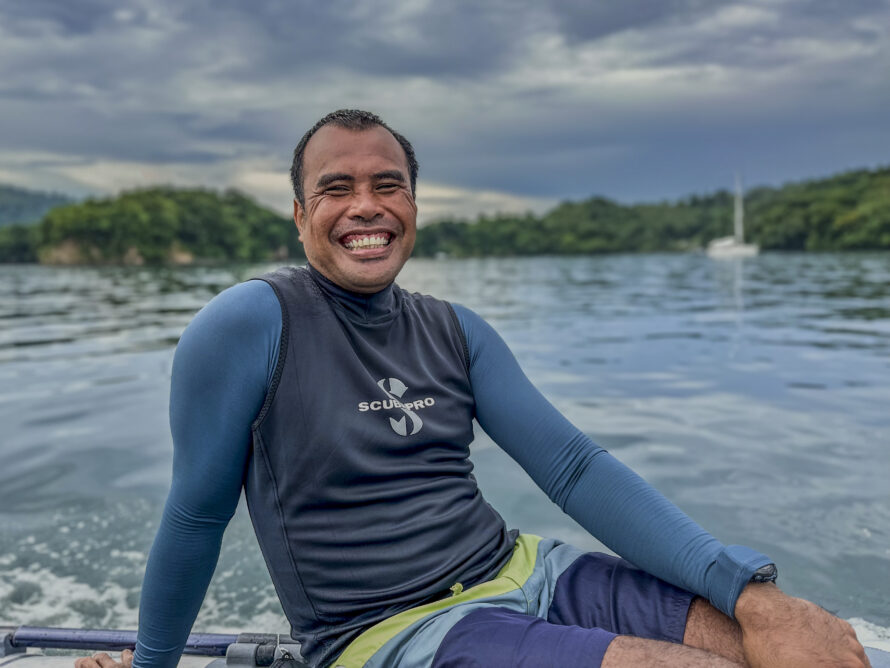
It’s basically impossible to adequately describe how difficult underwater photography is. Start with the idea that literally everything is approximately seventy-nine times harder to do underwater (except maybe peeing in your wetsuit). Buoyancy is super tricky because if you stir up the muck you can’t take photos anymore, and there are seriously dangerous creatures buried invisibly in the sand where you would like to brace your knee. Looking through the viewfinder with goggles is significantly tougher than it might sound (and it should sound impossible). Sony’s “smart” autofocus system hasn’t been down there before either and typically just throws its hands up in the (water?) unless it’s really lucky to recognize an eye. Many of the creatures who’ve developed their camouflage over literally billions of years of evolution are also smaller than a dime, so depth of field is harrowingly scant (breathe and you’ll miss the shot). You’re wearing gloves (for safety), so adjusting things like your f-stop, shutter speed, strobe power or ISO is extra fun. And, of course, though some of these critters do sit still, there’s the usual unpredictability that comes with photographing wild things. I could go on. Basically it’s like the mosaic work Diana does, in that it requires an intensity of focus and bull-doggedness that lies far outside of any normally agreed upon bounds of sanity.
Enjoy the photos (comments are welcome), but also watch the behind the scene’s video I made of Diana and Sandro doing their thing, so you don’t get the wrong idea. ~MS
Allora’s heading off on passage across the Torres Strait and the Arafura Sea from Australia’s northernmost islands to Tual, Indonesia. It’s just us two for this 4-5 day passage and conditions look good; it should be a brisk, downwind sail and we hope/plan to steer well clear of all the reputed fishing fleets! If you’re interested to track us on this passage, our Predict Wind Tracker link is under ‘Where In The World Is Allora.’ Should you need to reach us, head over to the ‘Contact Us’ page. And to AU and her fine people/landscape/creatures, you’ve been a whole lot of wonderful! It’s going to be a tough sail away …
Posts from these past 9 months forthcoming!
It’s winter in Fiji, which can be easy to forget, usually. Last year we spent a sweltering July in Vuda marina waiting for our transmission, and absolutely no one was talking about cold. This “winter” has felt different (El Niño has officially replaced La Niña). In Viani bay the local dive master talked about rainy weather hanging on longer than usual, hills that were still very very green. “The Moms” arrived for the Fijian version of what overly excited weather people in Montana used to call a Polar Vortex. Fijians donned hoodies and parkas as temps plummeted into the mid-sixties (the lowest temperature ever recorded in Fiji was 12.3 C or 54 F). Meanwhile, “the Moms” counted their lucky stars and gave thanks for overcast days. I put on a T-shirt. Our biggest challenge was finding anchorages that were reasonably calm. Diana tied up the lee cloth for Camille and gave Elizabeth extra cushions to wedge herself in at night. I think I remember Diana suggesting that she handed out more sea sickness medication on this visit than she did on the entire Pacific Crossing. On the bright side, Camille says she has never slept so well (we discussed the feasibility of installing hydraulics in the foundation of her Northern California cottage to replicate these soporific Fijian seas). I think Diana and I had both imagined leisurely lagoon sailing with the Moms, based on our quick survey of the western islands last year. For sure, neither of us imagined gusts to gale force (36 knots), and sailing at 8 knots with a handkerchief of jib rolled out. But by now the Mom’s are seasoned sailors, and weathered it all like old salts, quite happily nestled in their accustomed spots. ~MS
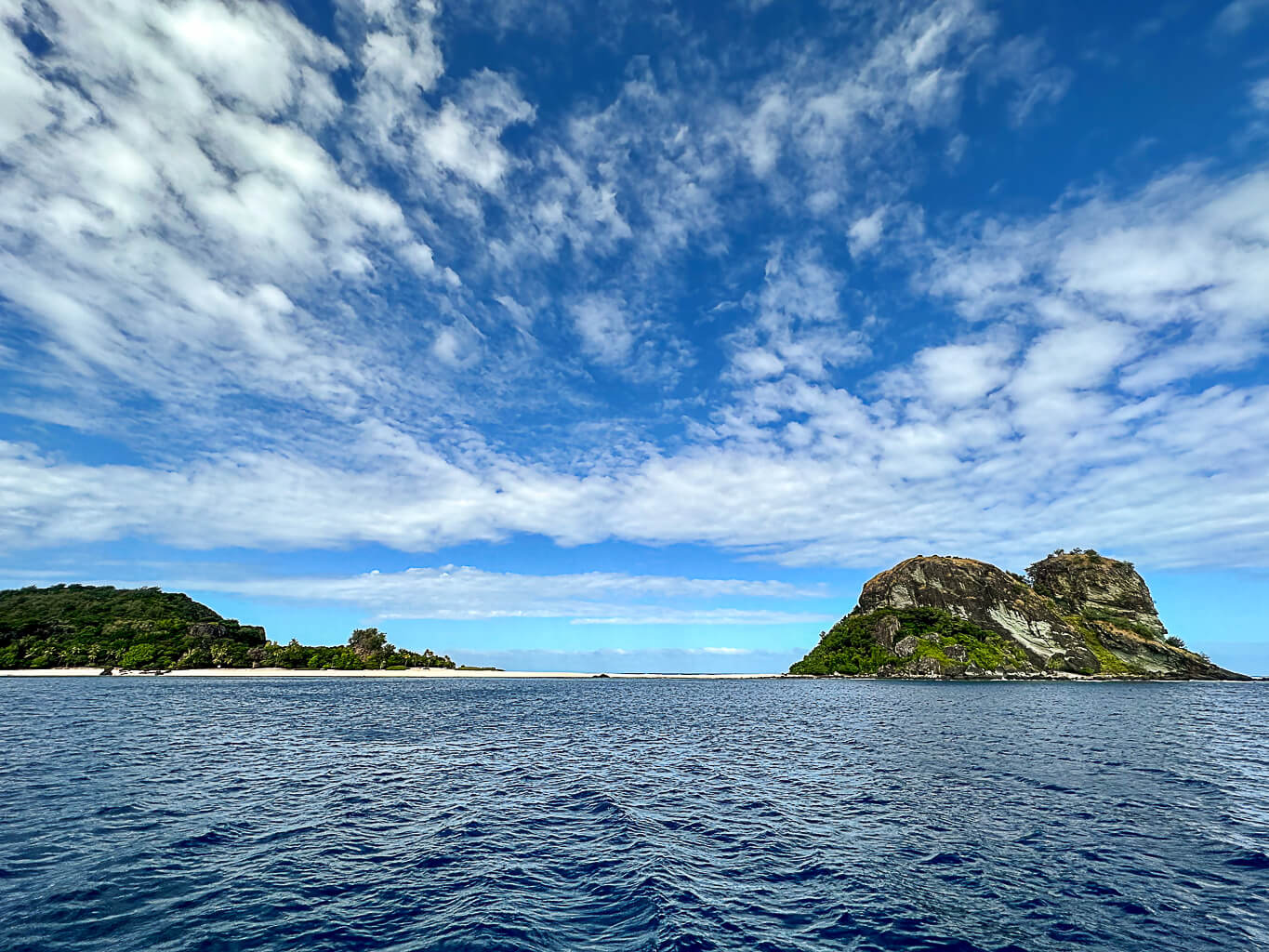

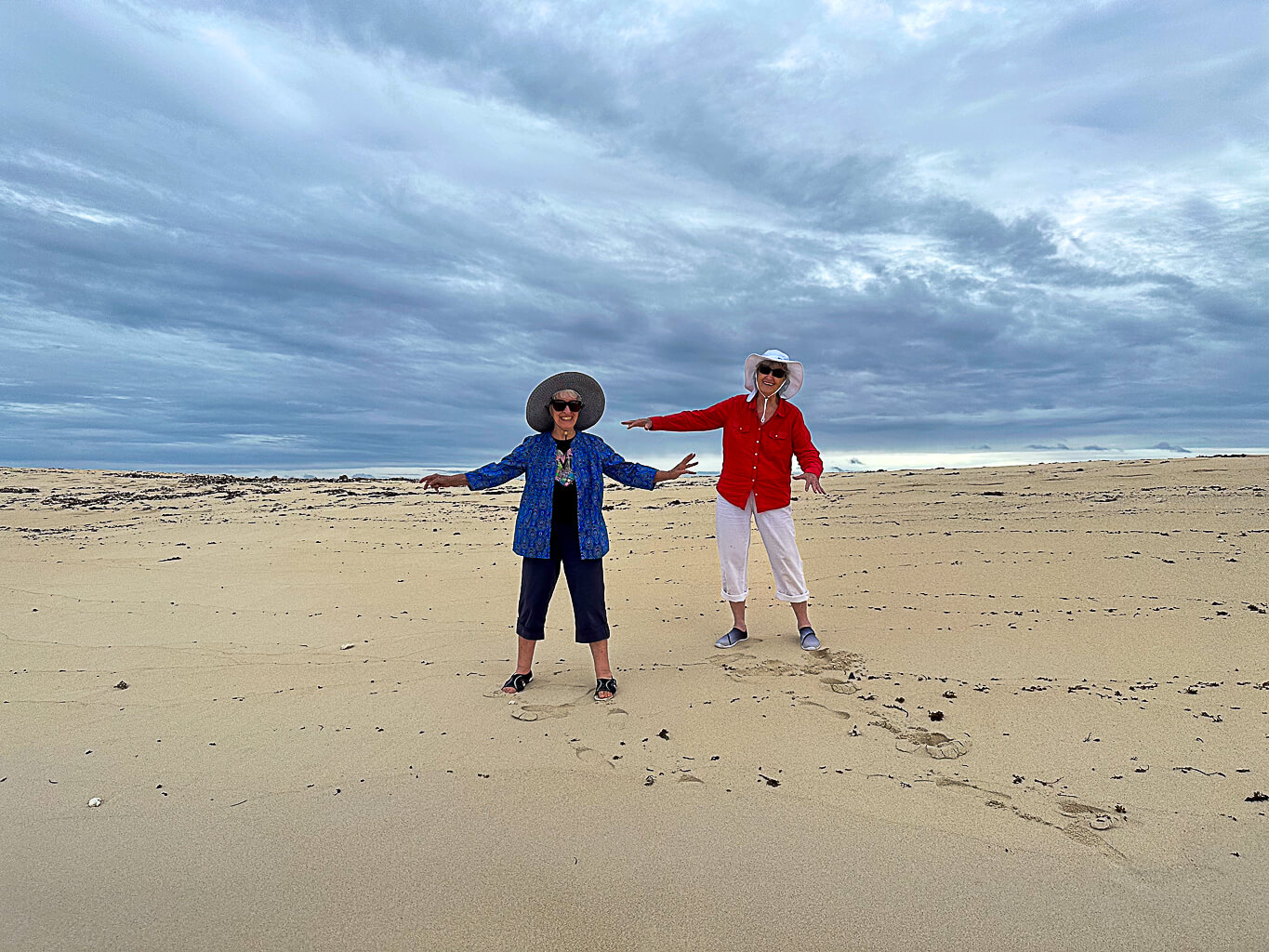
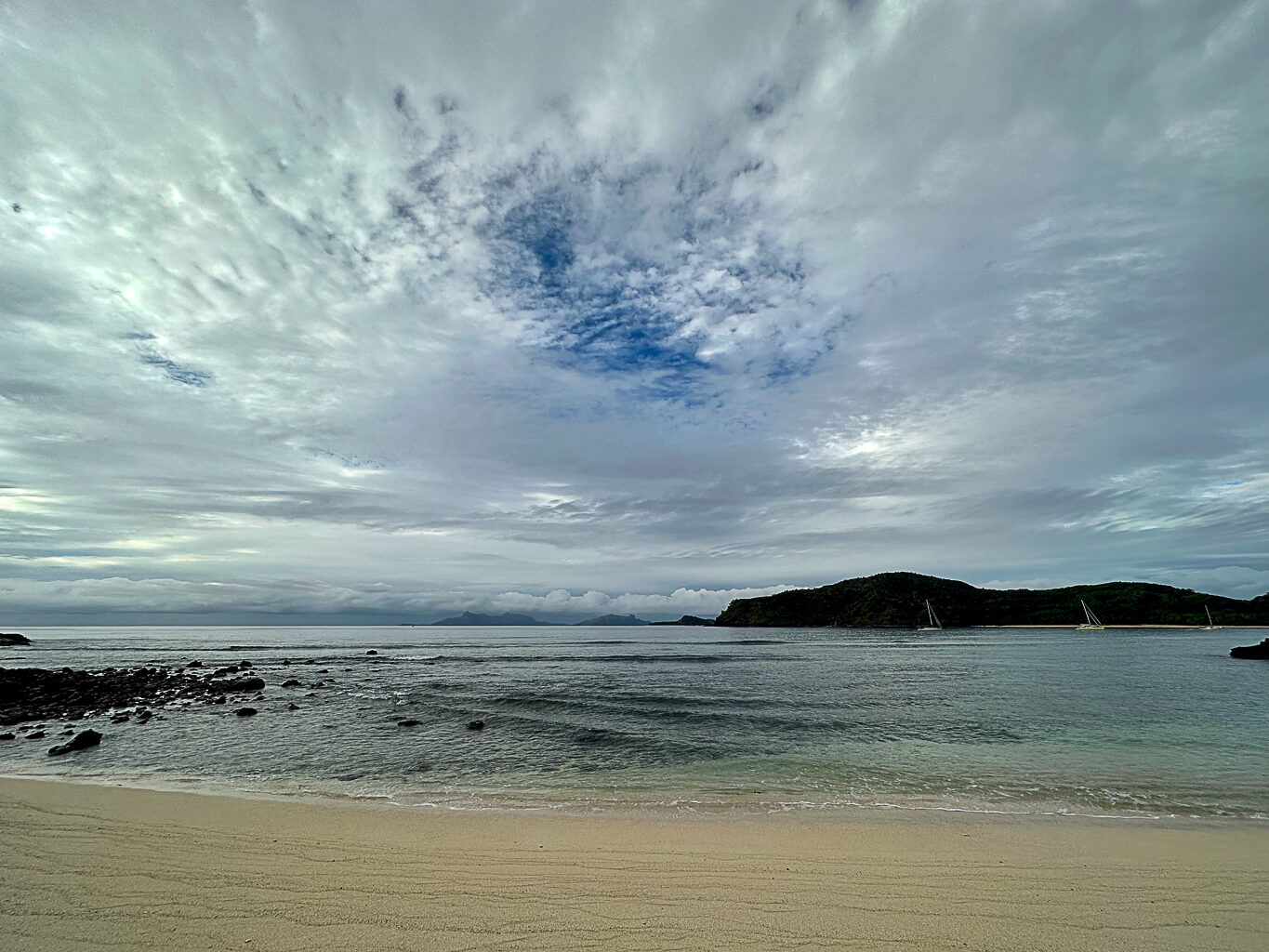
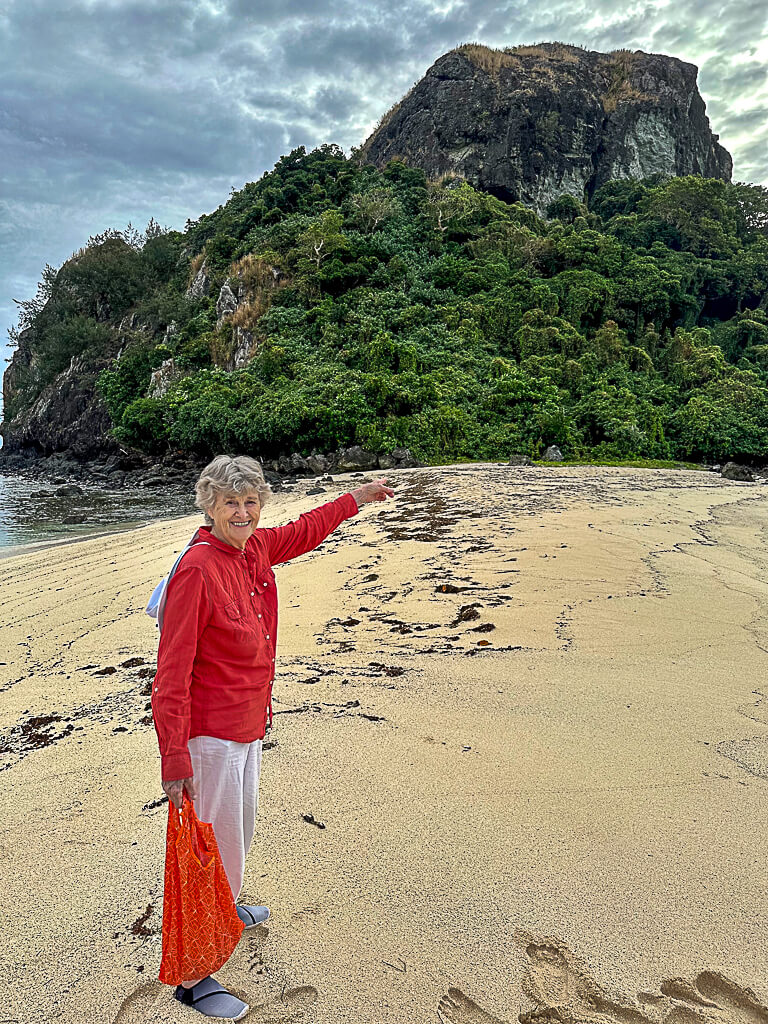
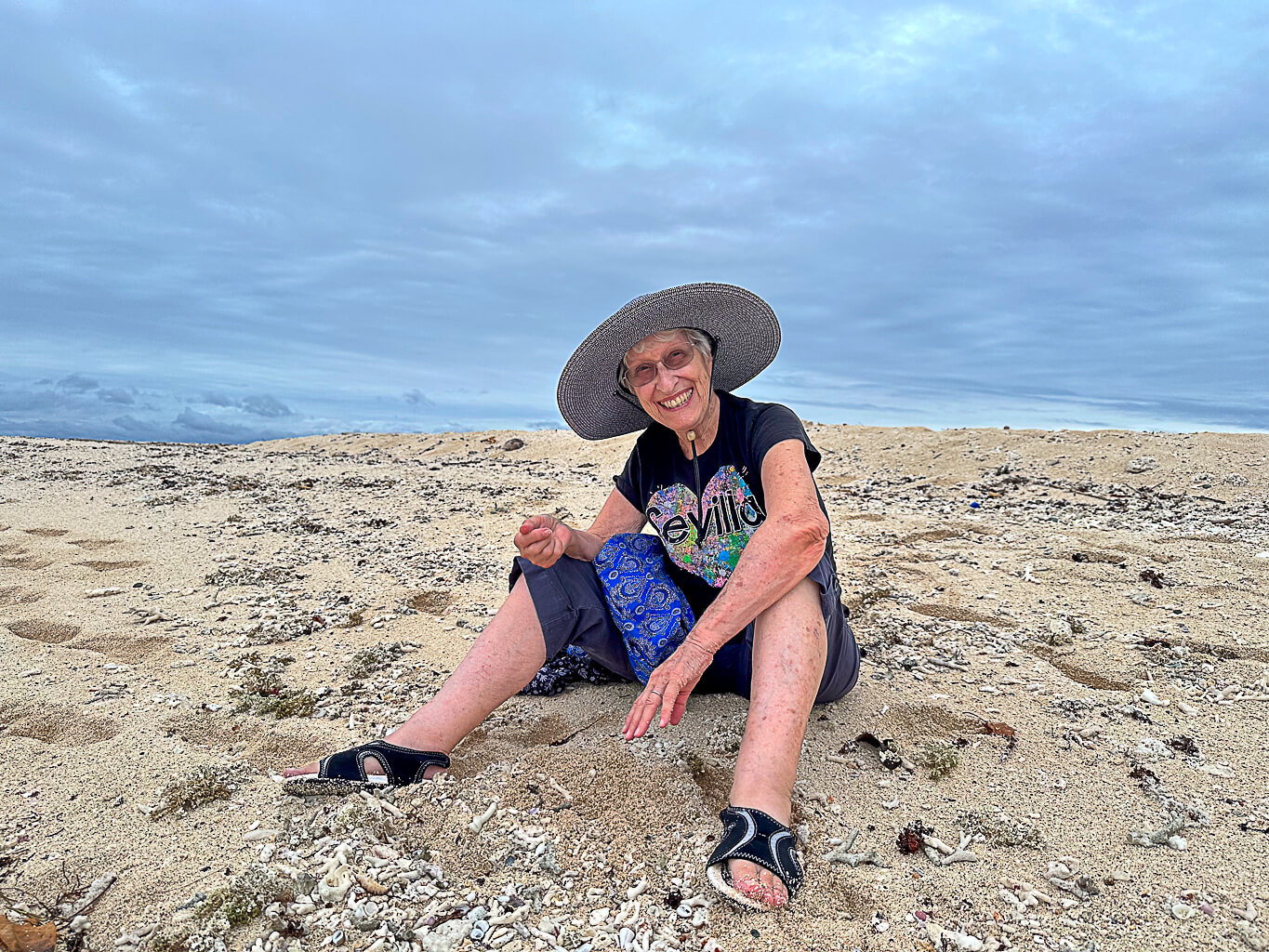
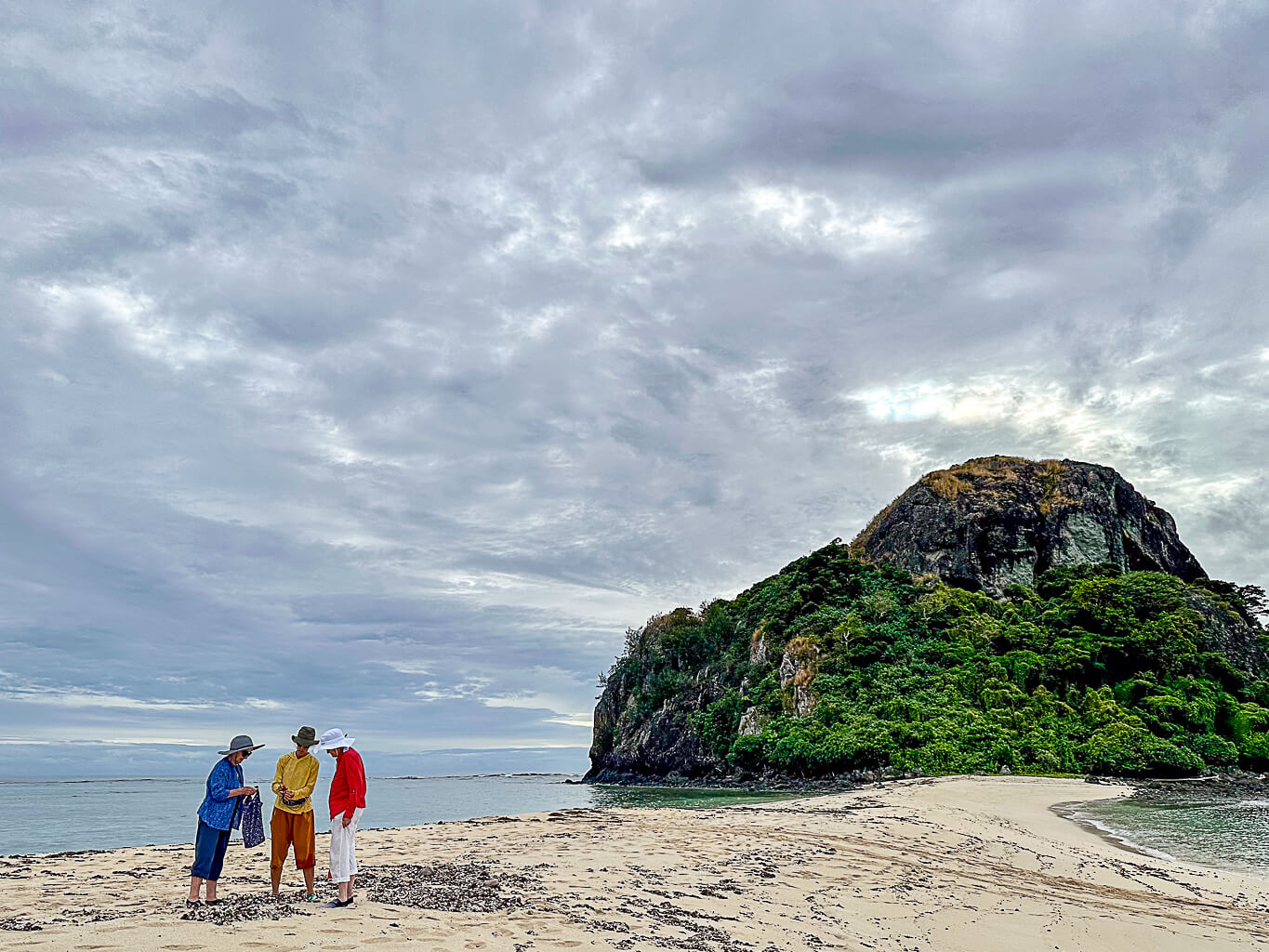

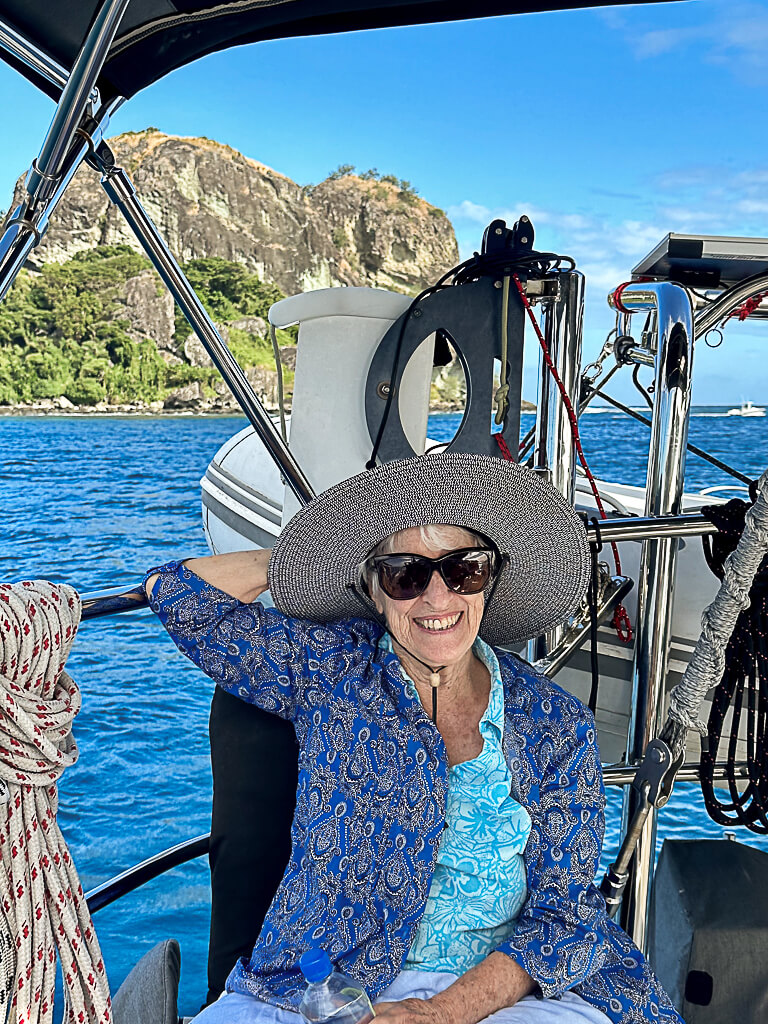
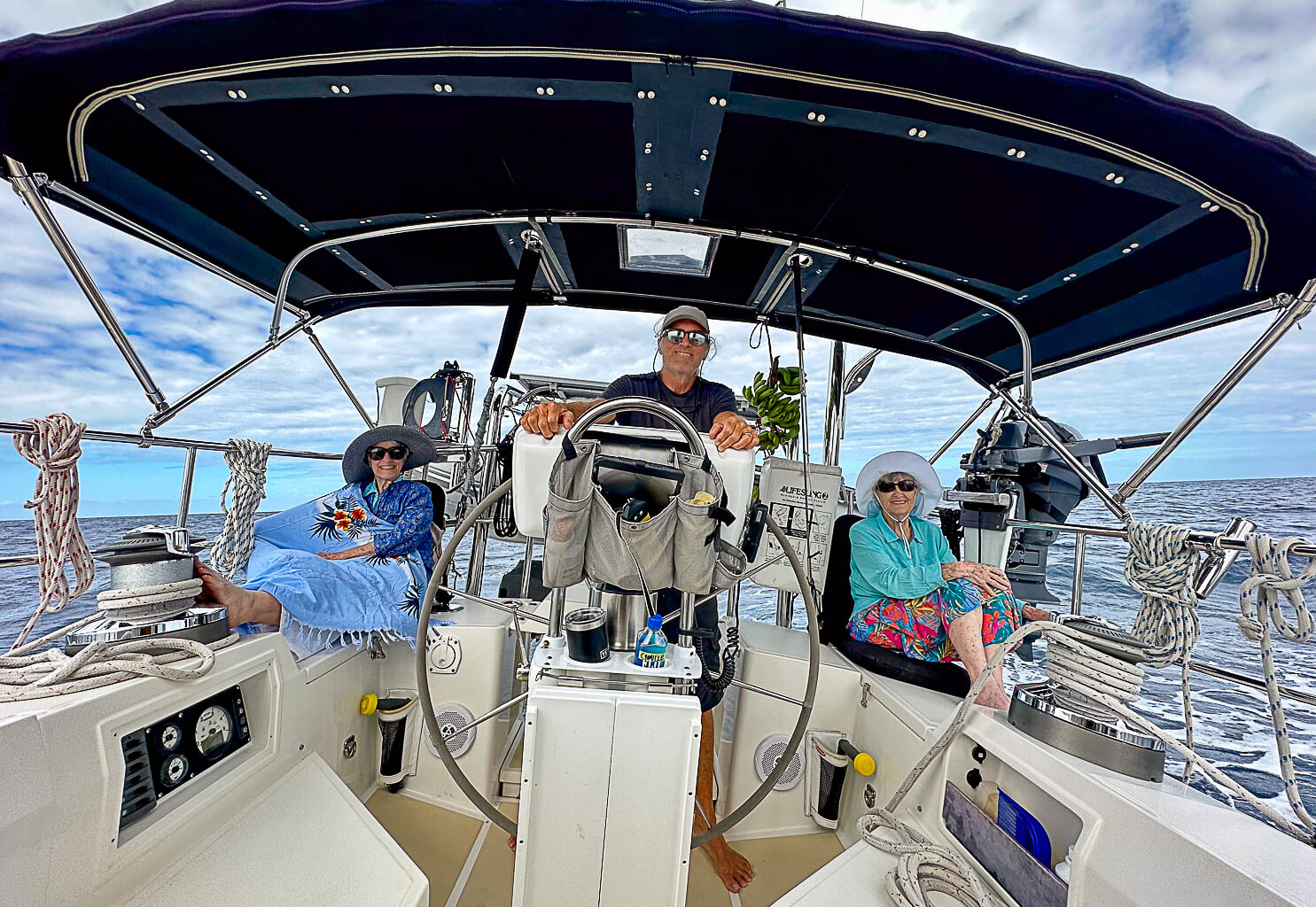

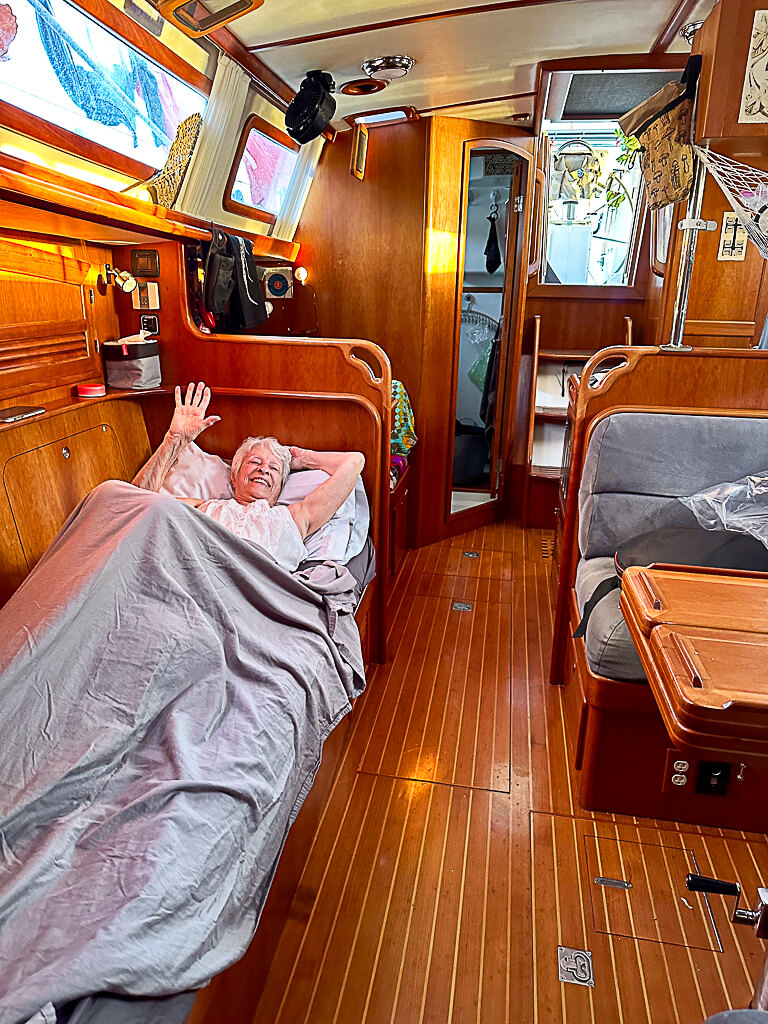
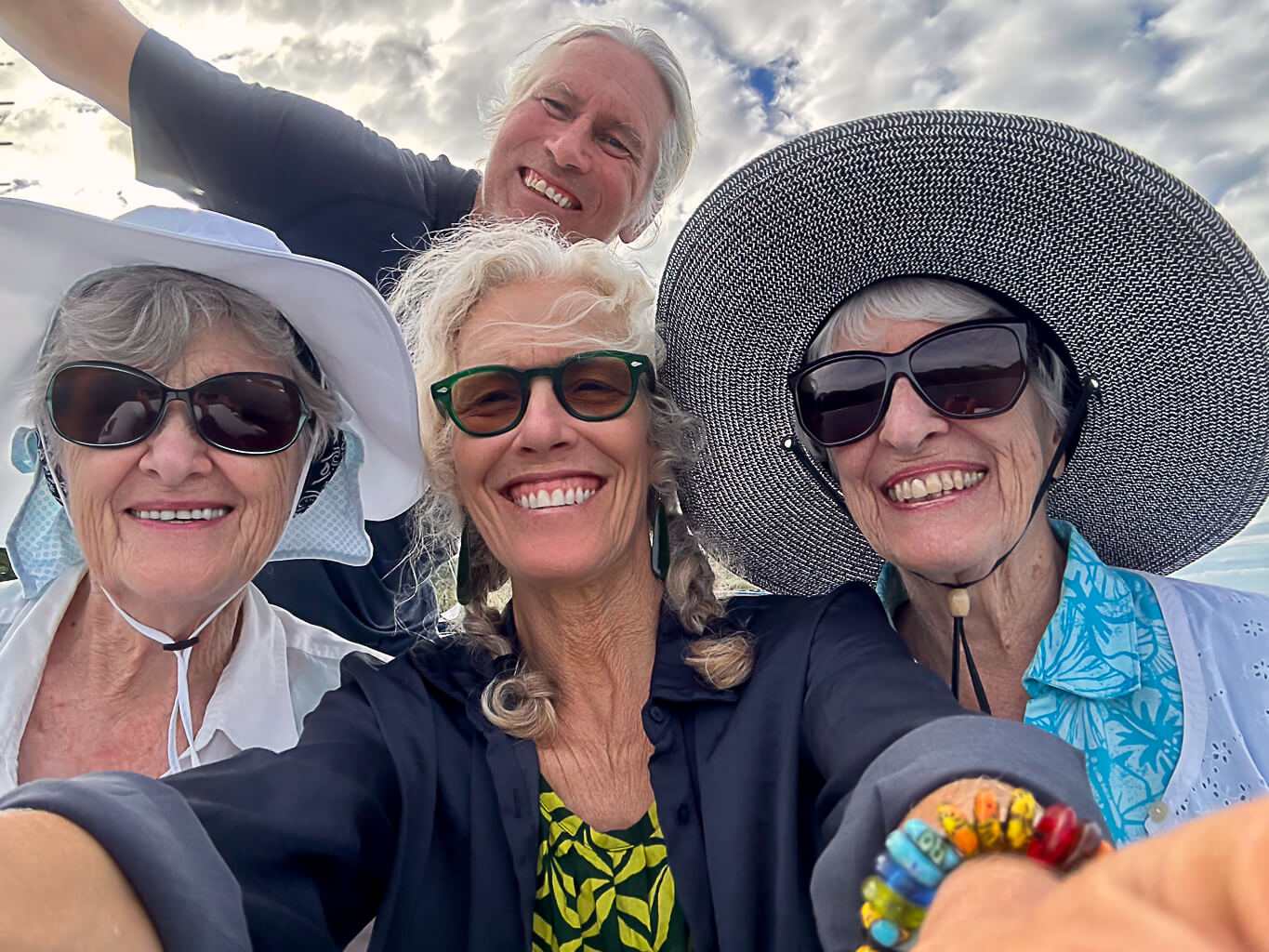
Though the Yasawa’s and Mamanucas (pronounced mamanutha) are more accessible than some areas of Fiji, the culture here seems pretty resilient in coping with the pressures of tourism. All over Fiji people seem to smile a lot — relaxed, unhurried and generally optimistic. I think the Moms particularly enjoyed our cultural interactions. Our first sevusevu ceremony was at Nalauwaki Village in the northern bay of Waya island. The idea of sevusevu is that you must go to the chief of the village to make an offering of kava before you do anything else (swim, hike, fish etc…). Typically you find someone as you land the dinghy on the beach who can take you to the right place (take me to your leader!). The ceremony is usually fascilitated by the chiefs spokesperson, the Turanga Ni Koro. You sit on the floor in the chief’s house or the community hall and pass your kava roots (usually wrapped up in newspaper which is also valued for rolling very long thin cigarettes called Suki) to the spokesperson who passes it onto the chief. He recites a speech (in Fijian) welcoming you, often by name, giving permission to walk about the village, snorkel, dive etc. The spokesperson translates that you are now guests and the chief and the village also take responsibility for your welfare. The ceremony is usually followed by a tour of the village and the school. Apparently Nalauwaki has been without a chief for a while, so this first sevusevu was a very low key version with an elder, but still had the intended effect of making us feel connected to the village rather than outsiders. All over Fiji the custom of not wearing hats, sunglasses, or carrying backpacks on your shoulders is a way that tourists can show their respect for the village. In the Lau group of eastern islands, I also started wearing a sulu (a wrap around skirt for men and women) for the ceremony as another sign of respect. It feels surprisingly good to be welcomed in this formal way and the ceremony really does create a feeling of attachment and mutual responsibility. ~MS
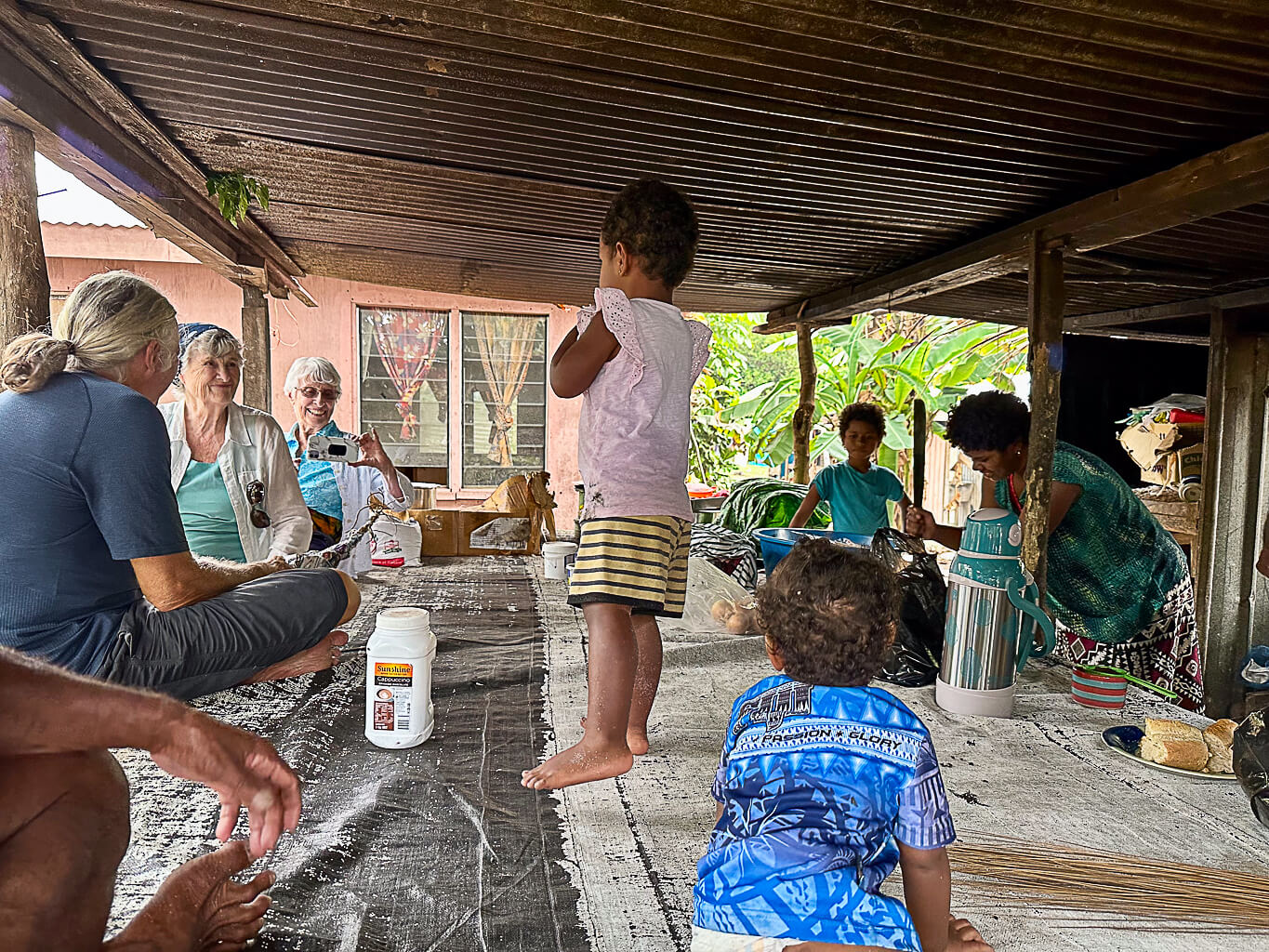
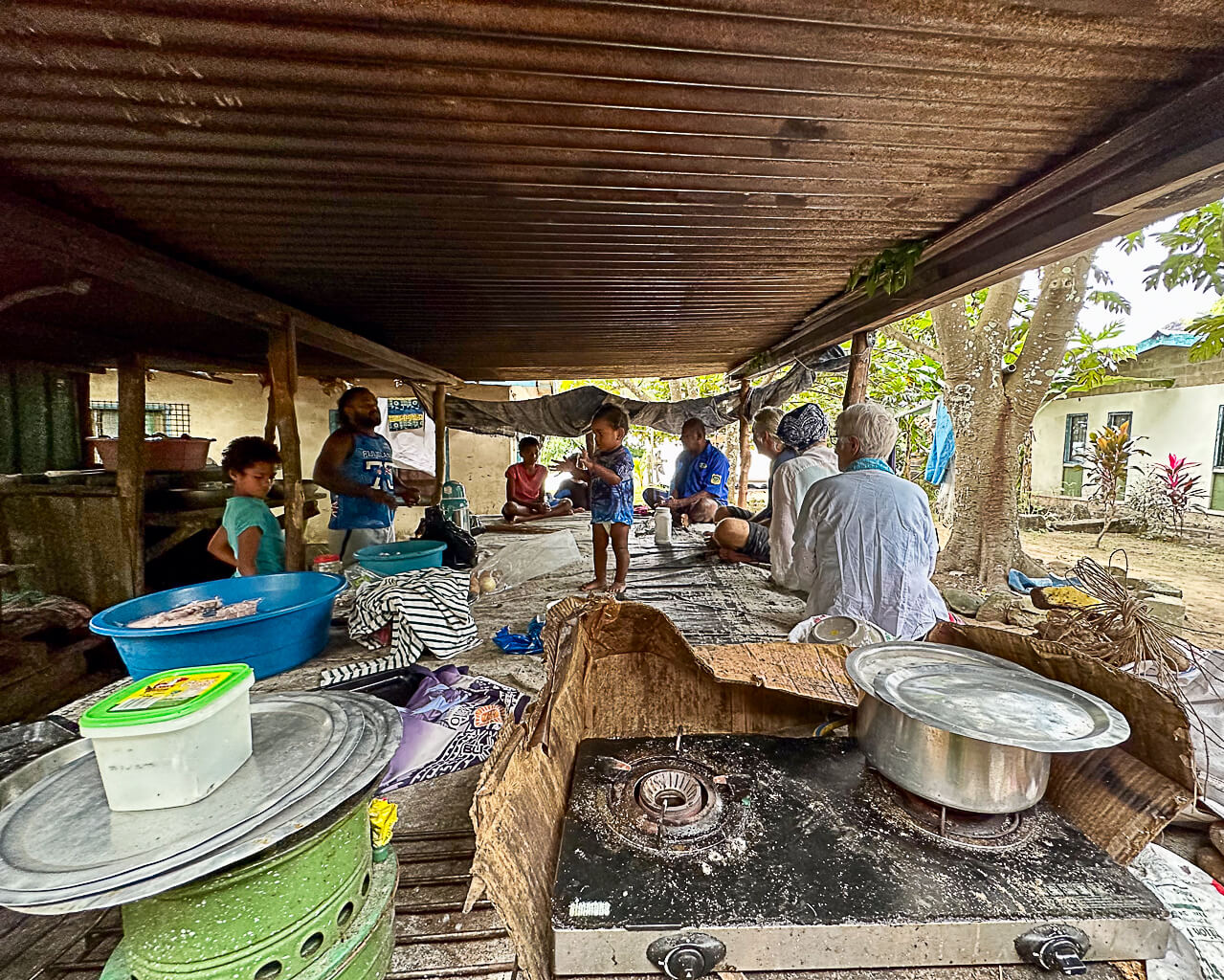
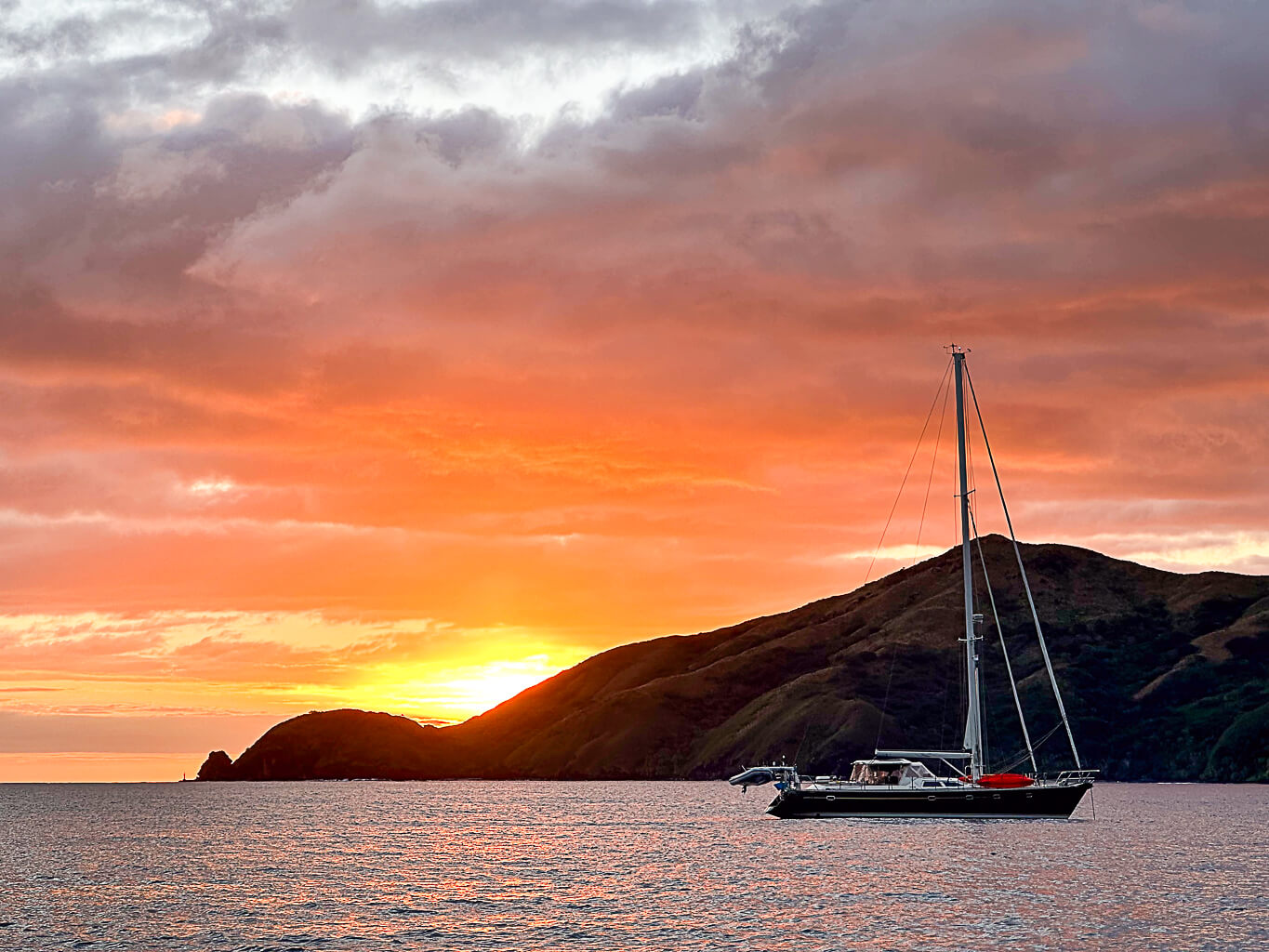
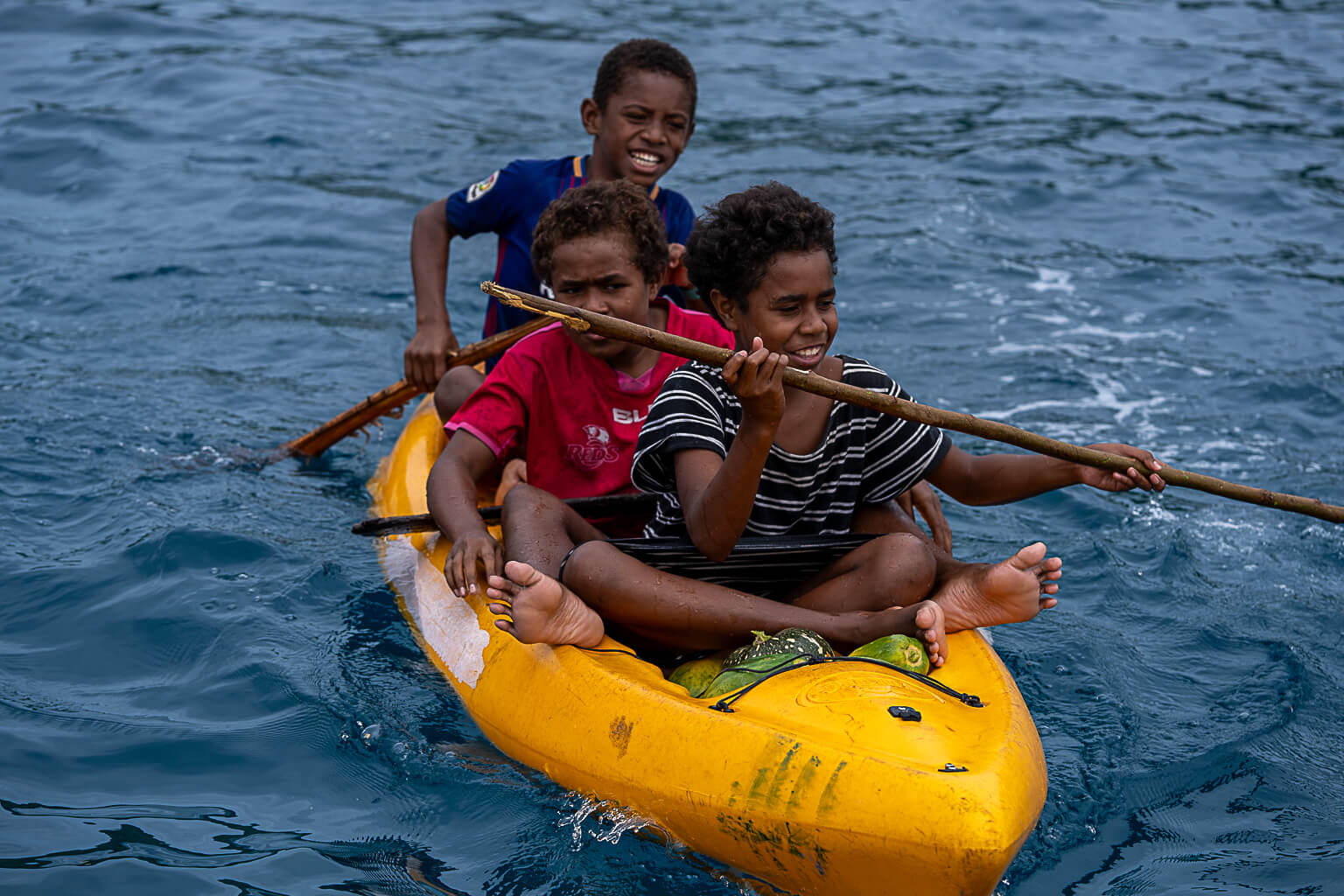

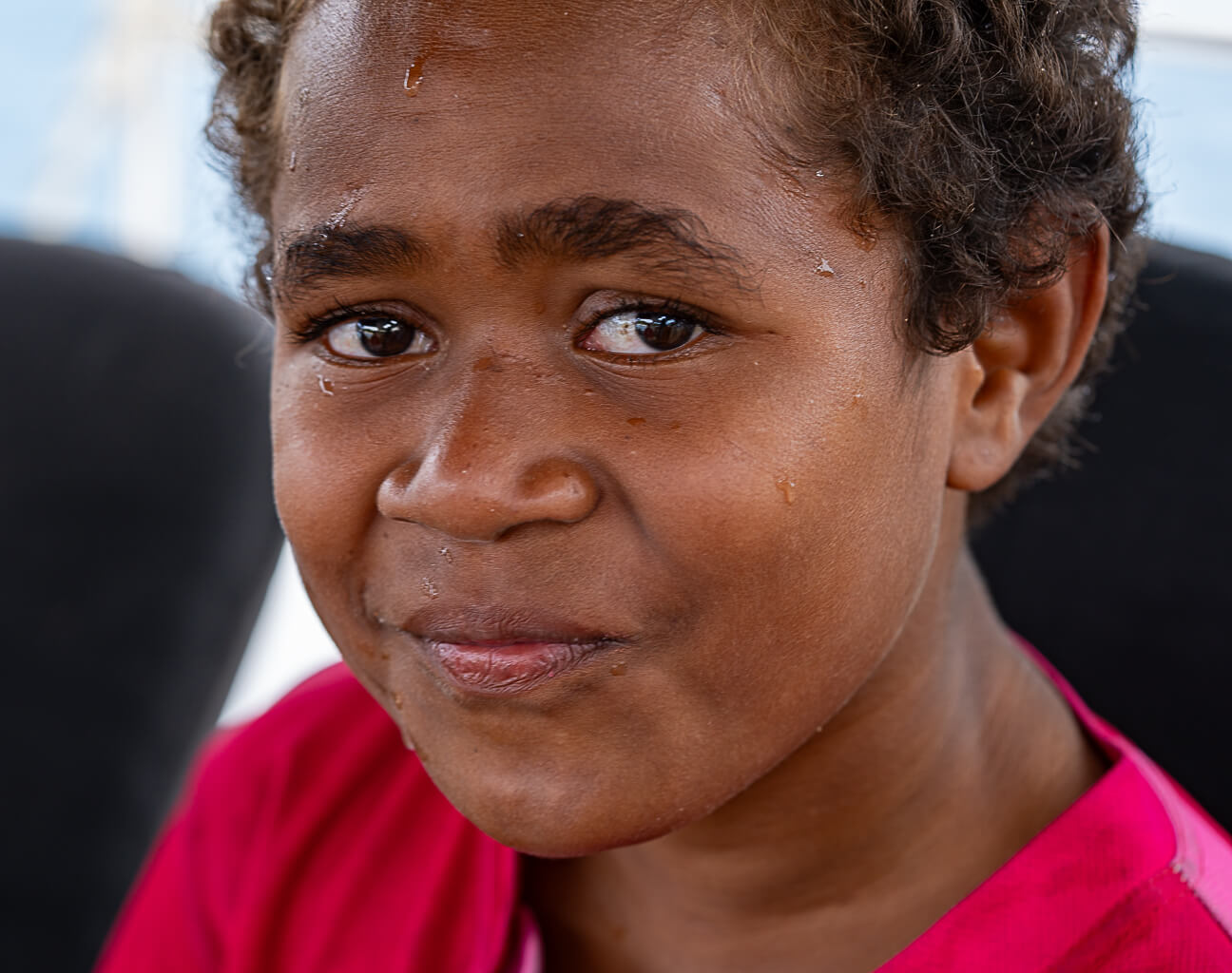

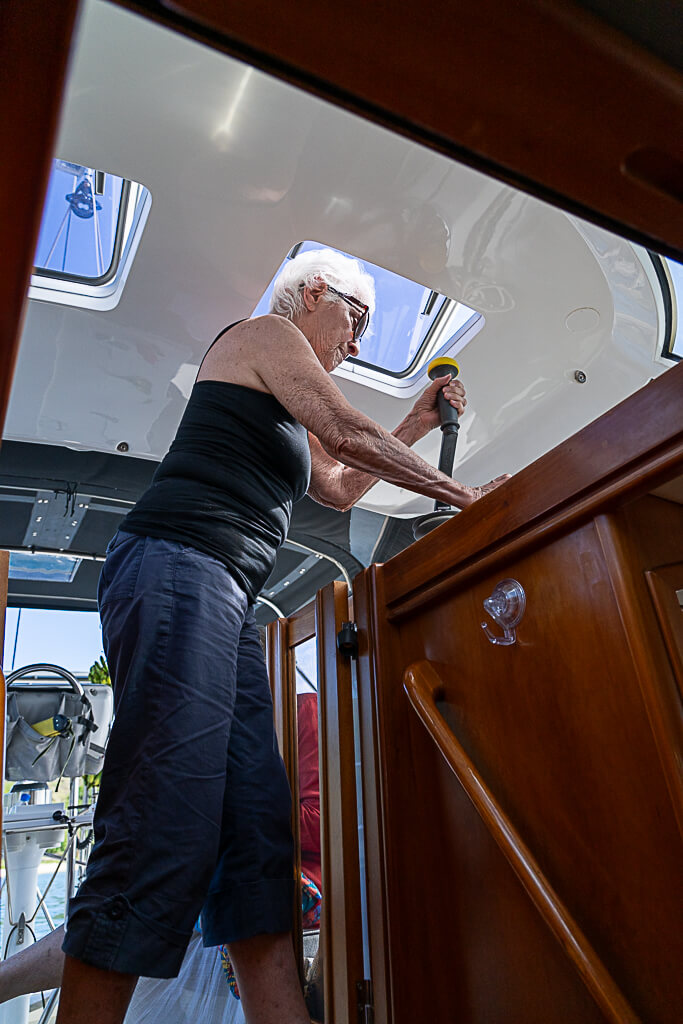
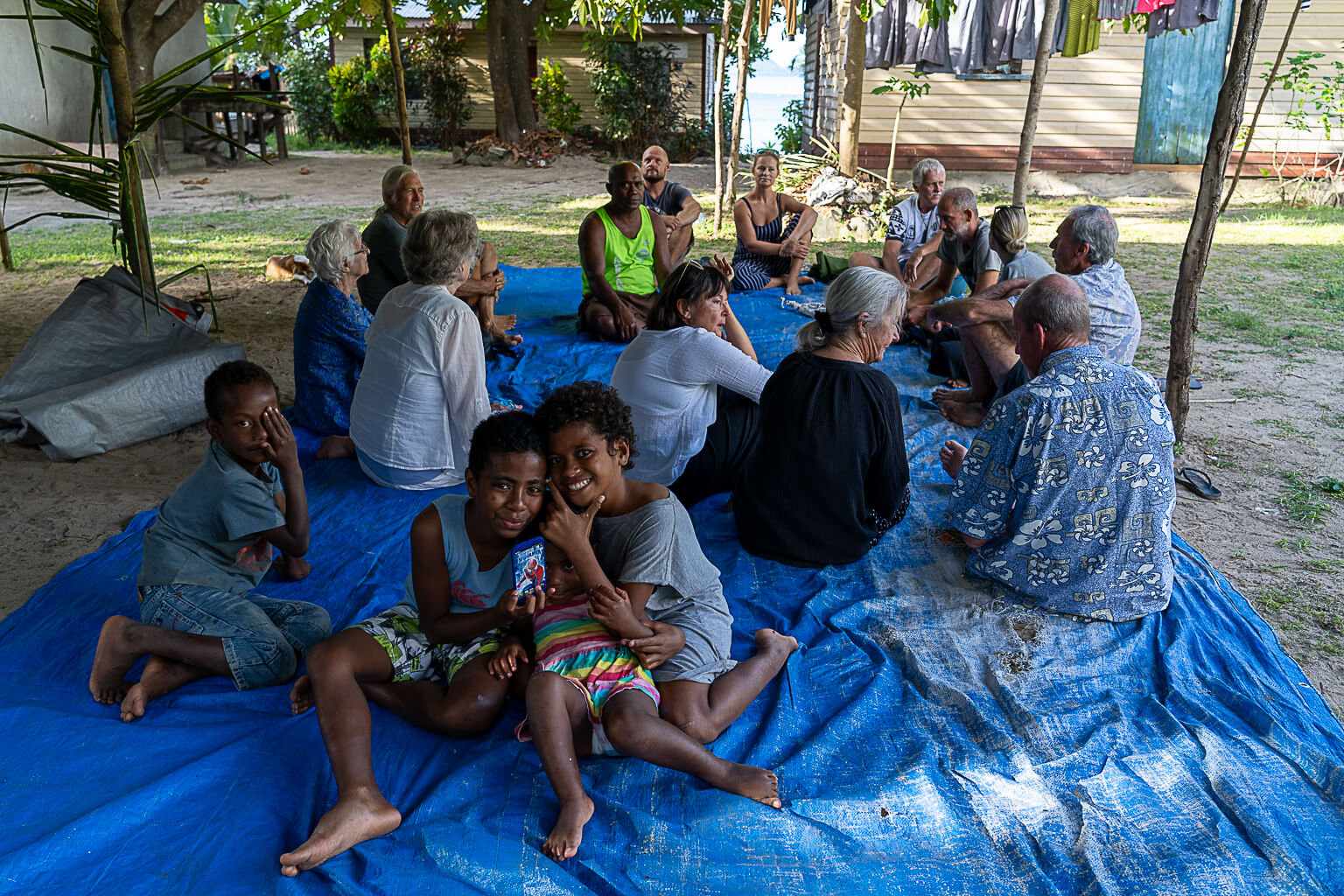
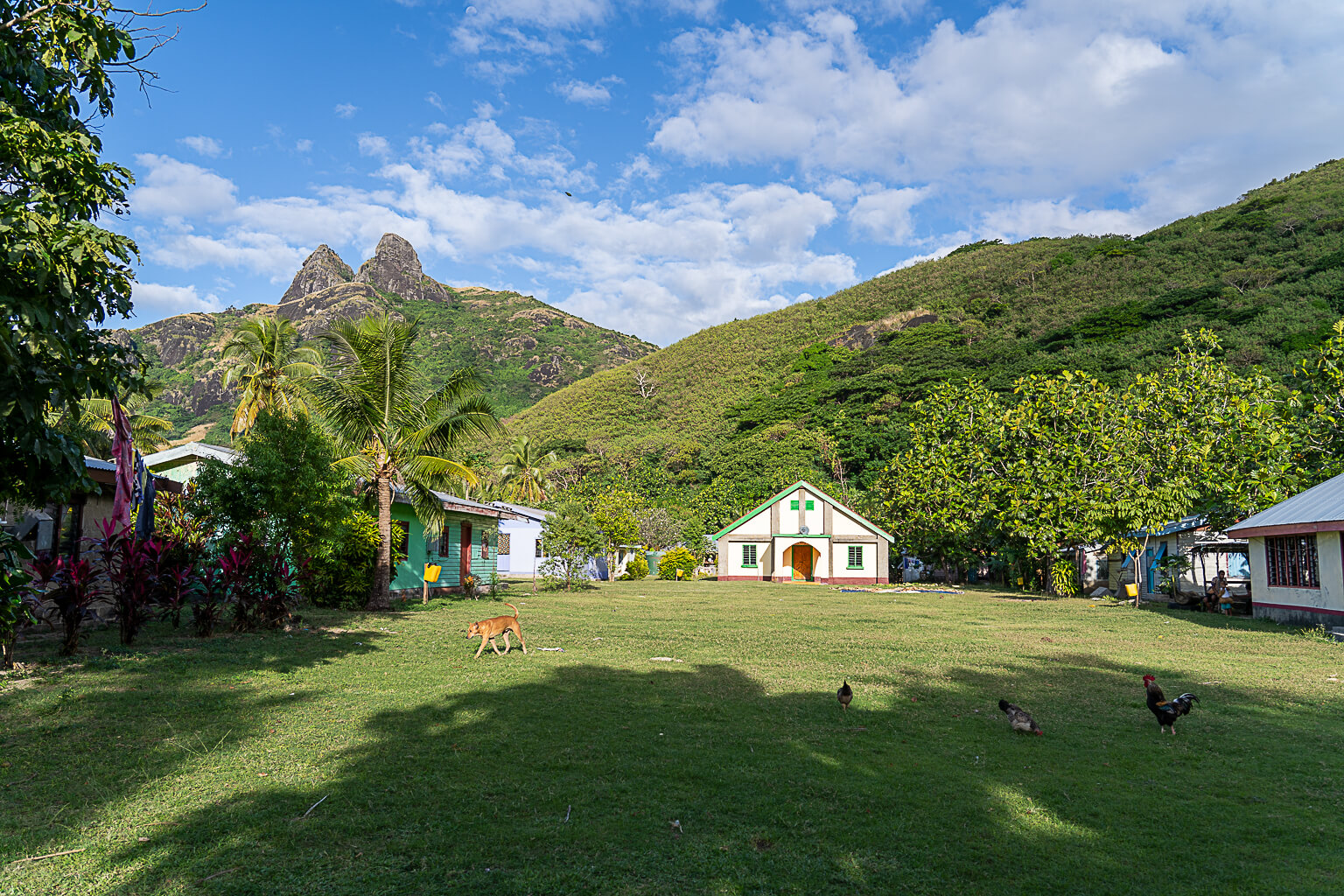
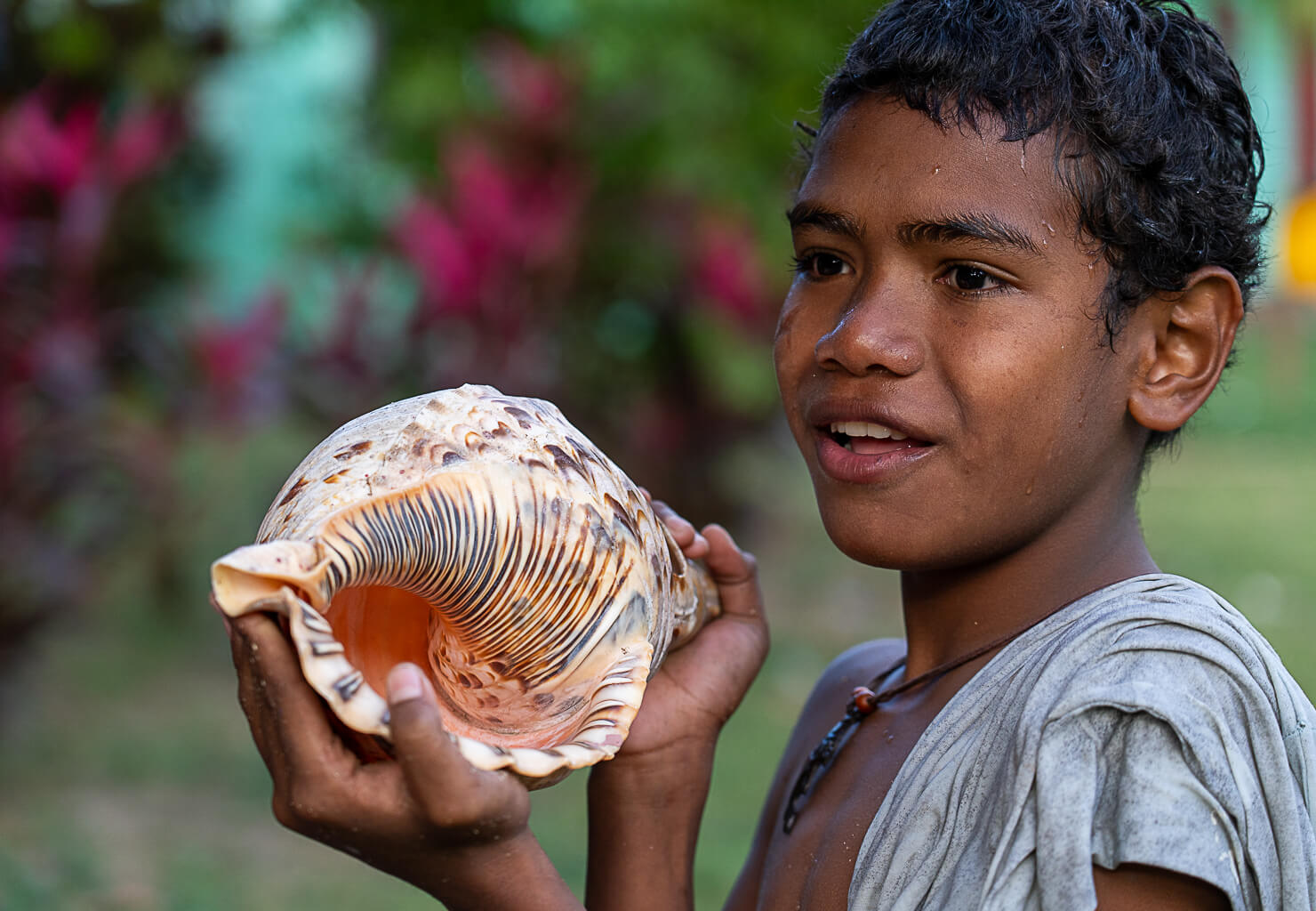

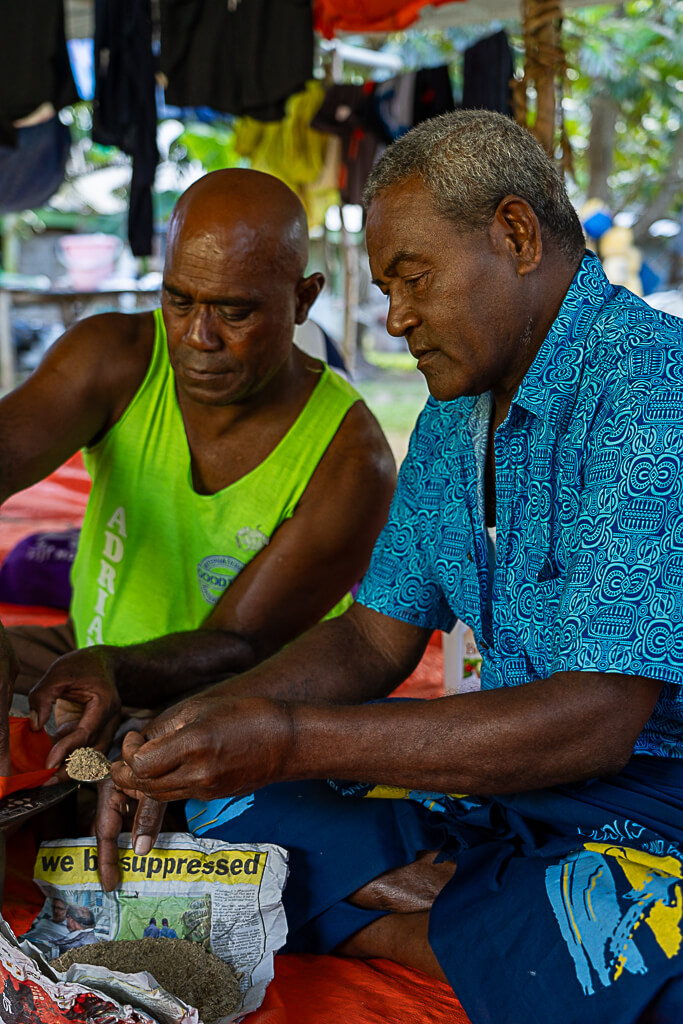
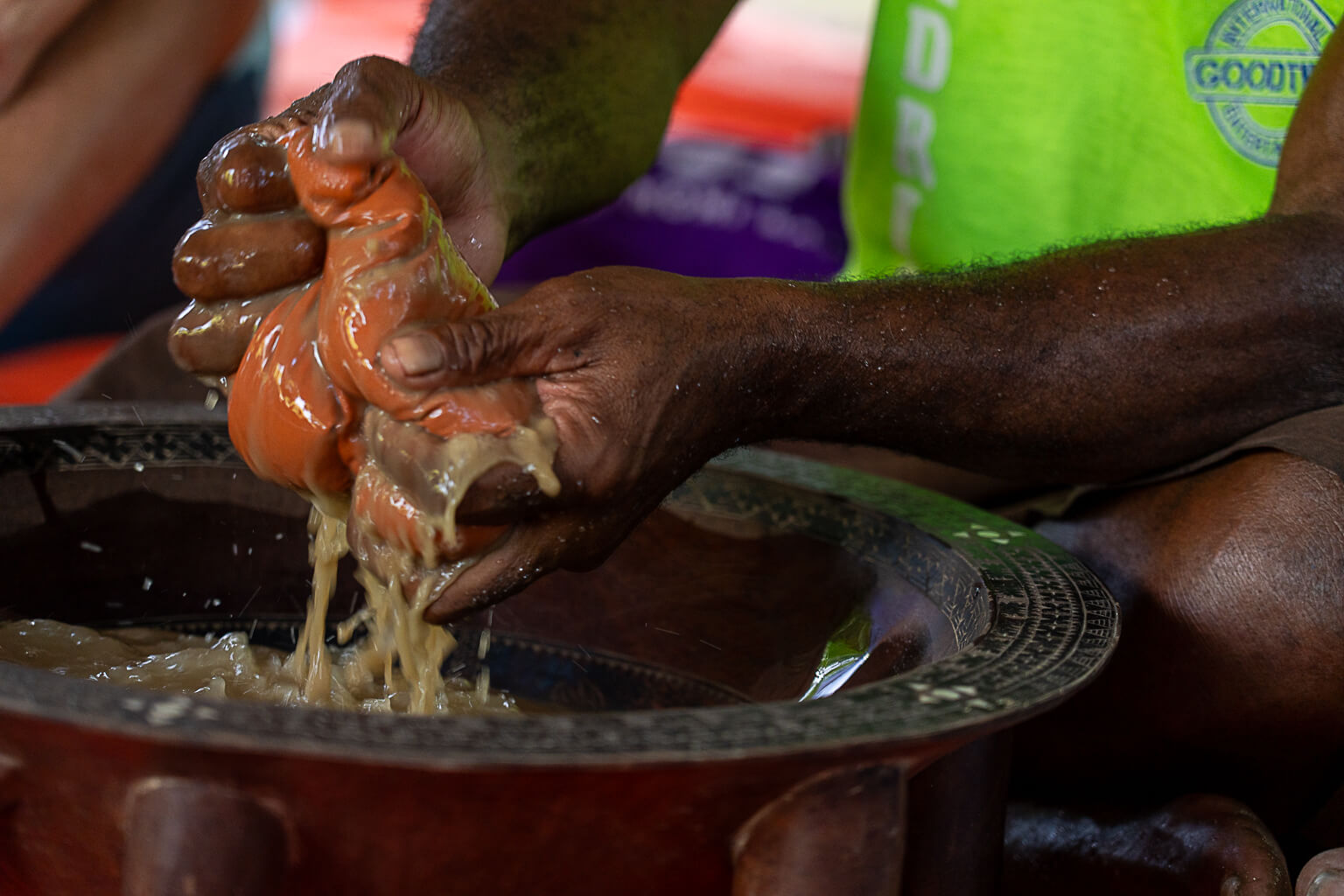


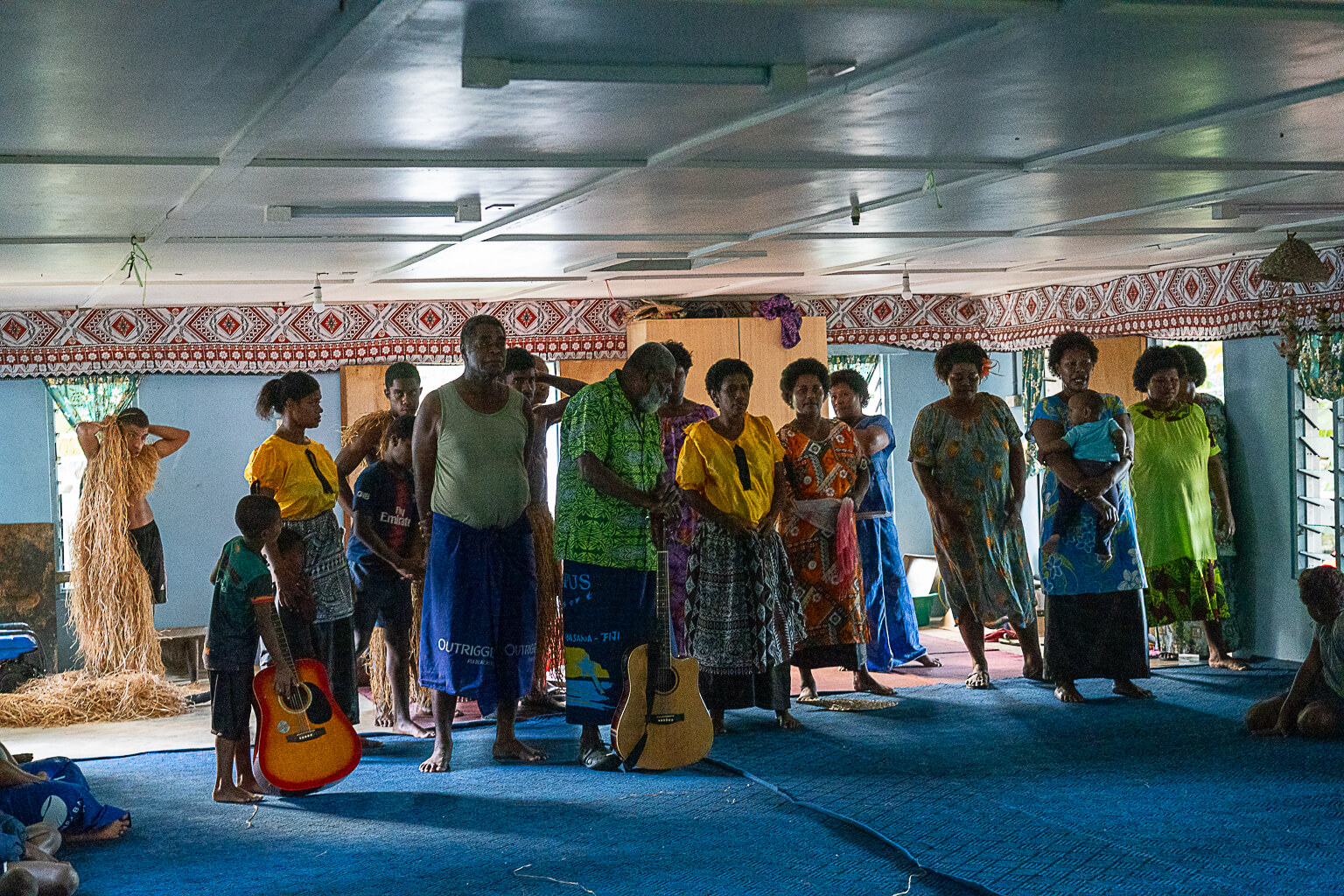

 Since we arrived and offered our sevusevu on a Saturday we knew we would be invited to come to church on Sunday. Since it involves singing, Elizabeth and Camille were all in. We’ve been to church a few times in French Polynesia, the Cook islands and in Fiji. Mostly they’ve been very traditional, patriarchal affairs. Here they are conducted in Fijian, with a brief nod in English to visitors. The singing is the standout part of these Sunday gatherings with stunning acapela harmonies that were very moving. The tone of the sermon at the beginning also seemed softer than we have encountered elsewhere. What really stood out for me, which I’m sure I will never forget was when the pastor asked all the parishioners to offer their own private prayers aloud at the same time. The murmur of all those voices blending together was pure magic. The congregation then endured a very long scolding which seems de rigeuer for these weekly sermons (thrice each Sunday minimum, at 5AM, 10AM and 3PM). The children deserve special mention for managing superhuman patience without the usual oversight of one of the villager elders wielding a long stick which we’ve seen most other places. ~MS
Since we arrived and offered our sevusevu on a Saturday we knew we would be invited to come to church on Sunday. Since it involves singing, Elizabeth and Camille were all in. We’ve been to church a few times in French Polynesia, the Cook islands and in Fiji. Mostly they’ve been very traditional, patriarchal affairs. Here they are conducted in Fijian, with a brief nod in English to visitors. The singing is the standout part of these Sunday gatherings with stunning acapela harmonies that were very moving. The tone of the sermon at the beginning also seemed softer than we have encountered elsewhere. What really stood out for me, which I’m sure I will never forget was when the pastor asked all the parishioners to offer their own private prayers aloud at the same time. The murmur of all those voices blending together was pure magic. The congregation then endured a very long scolding which seems de rigeuer for these weekly sermons (thrice each Sunday minimum, at 5AM, 10AM and 3PM). The children deserve special mention for managing superhuman patience without the usual oversight of one of the villager elders wielding a long stick which we’ve seen most other places. ~MS
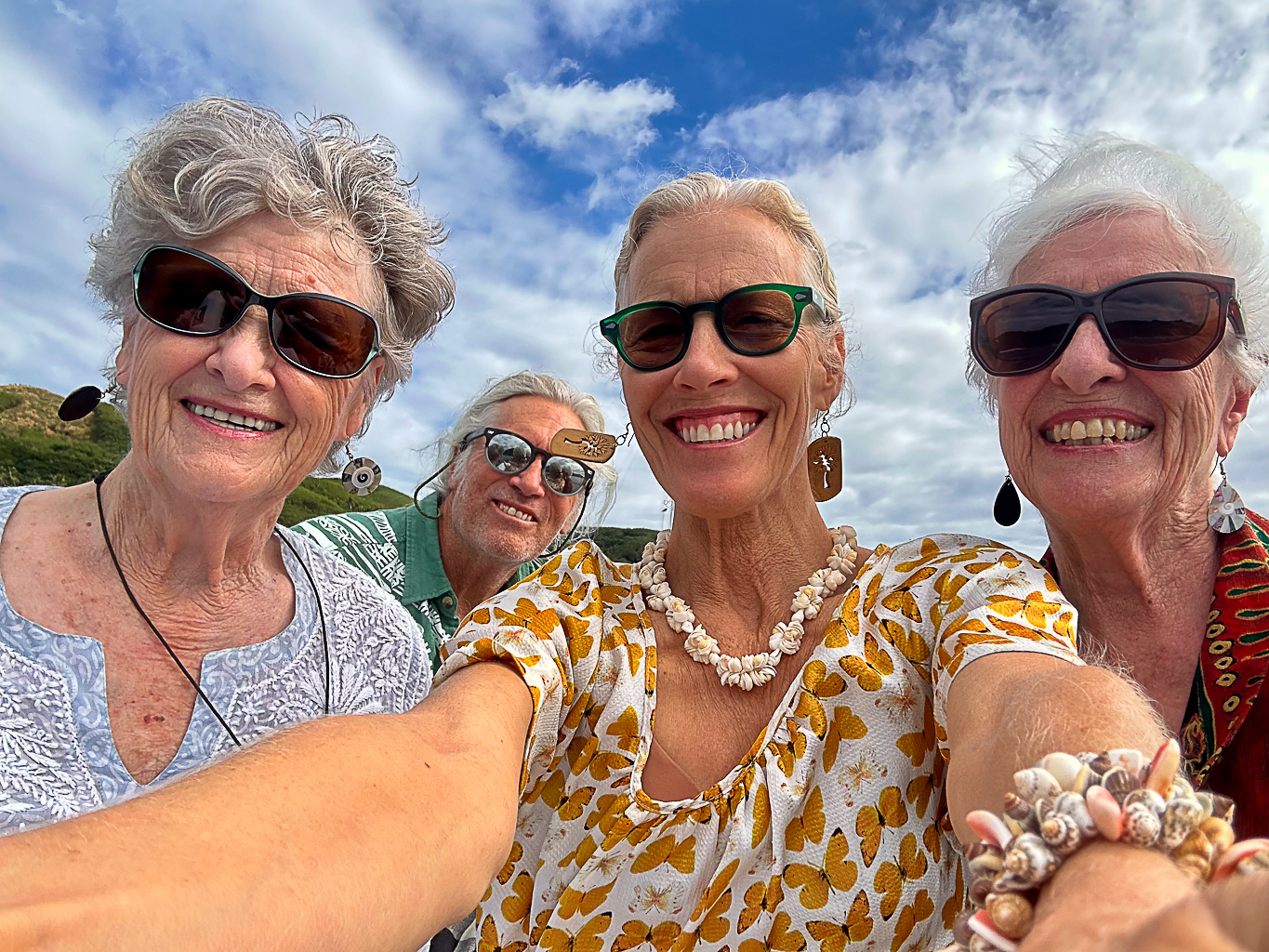

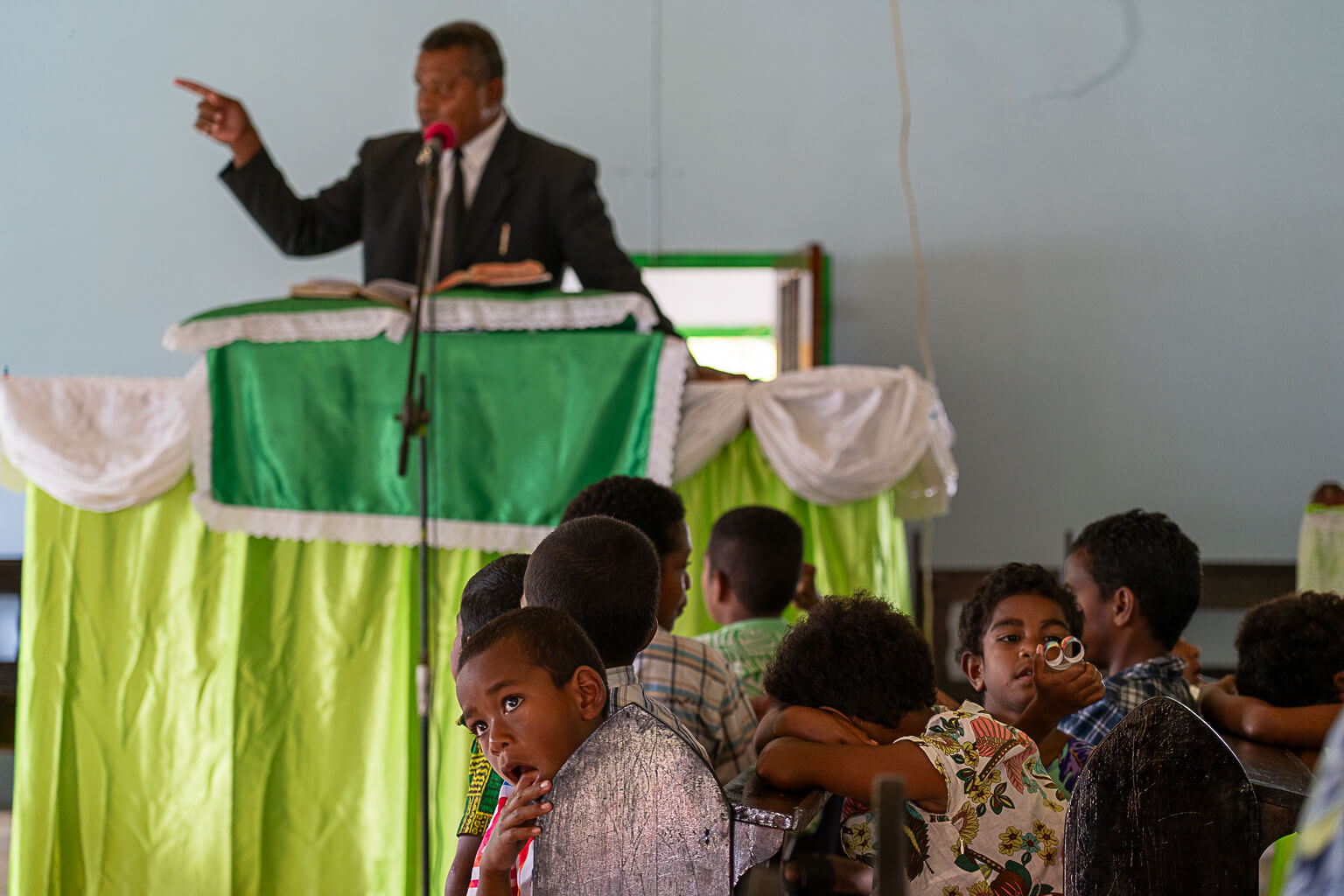
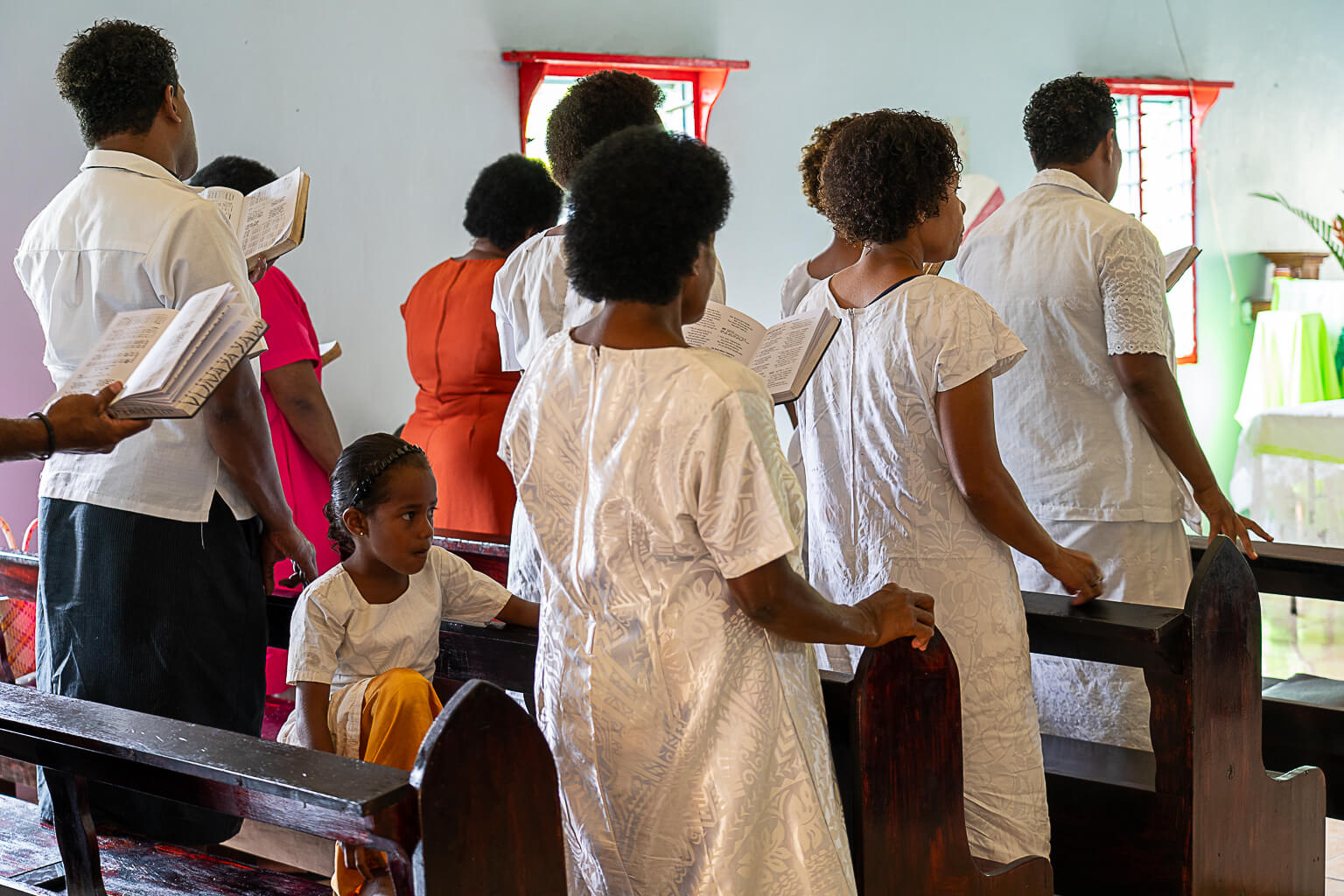
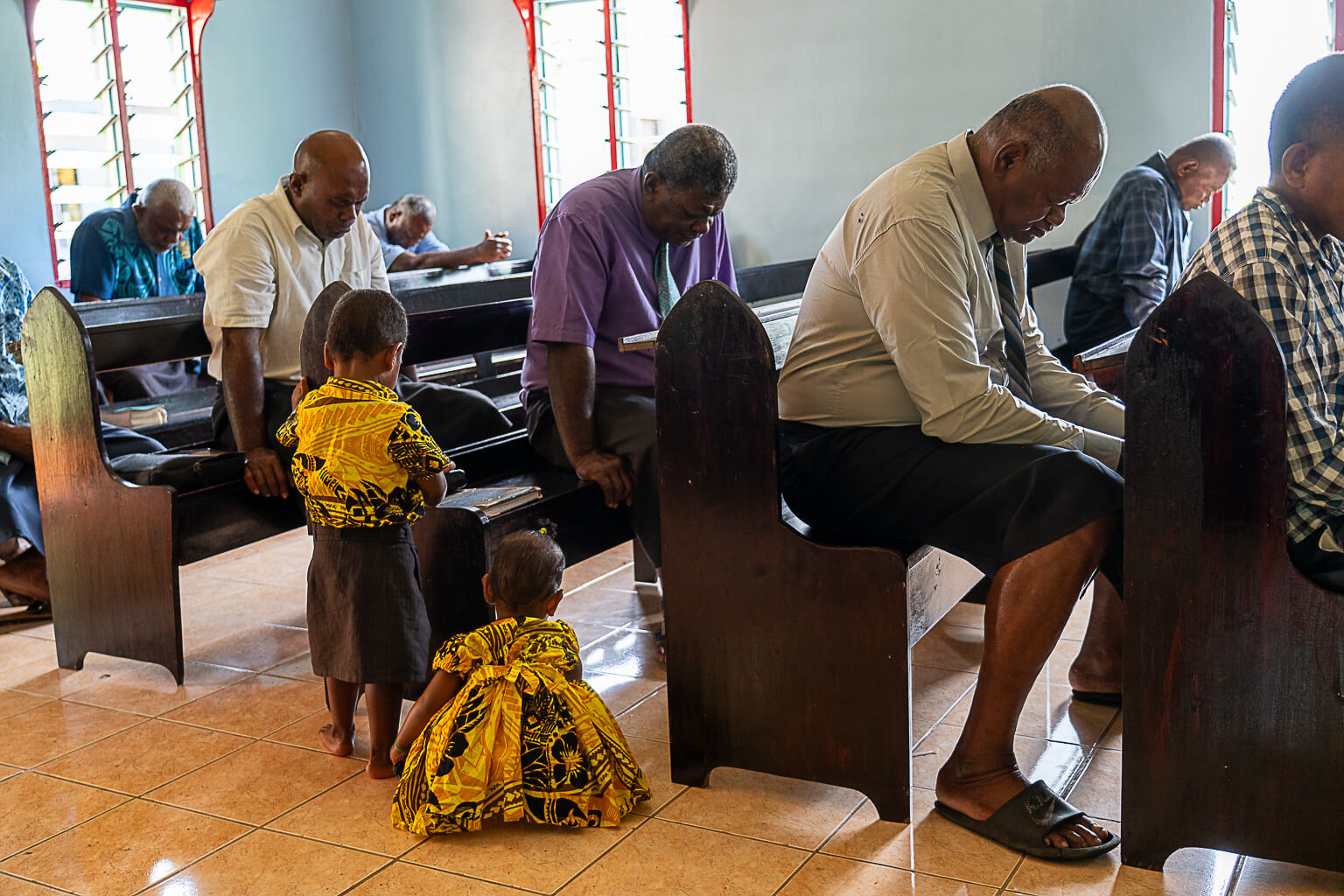

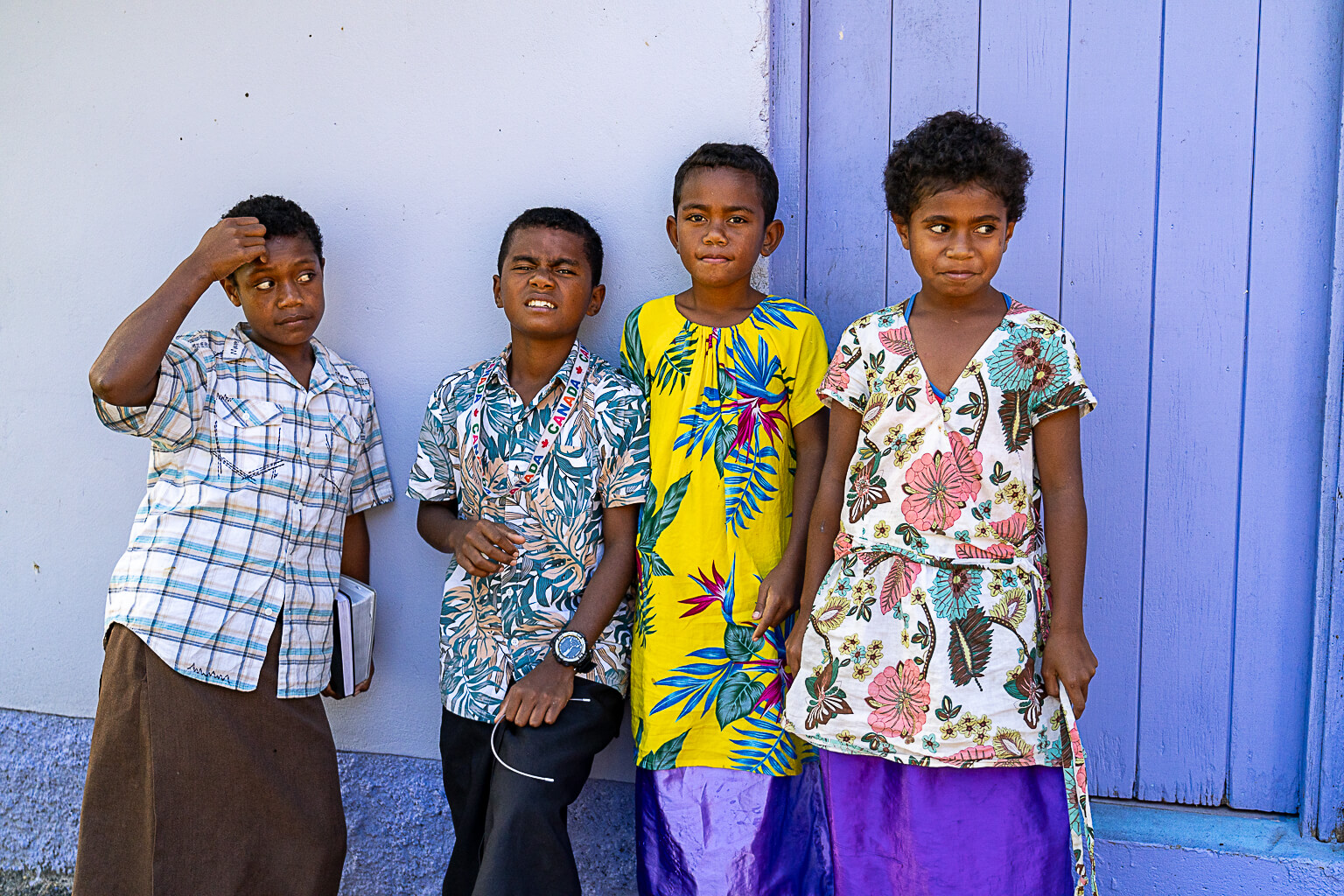
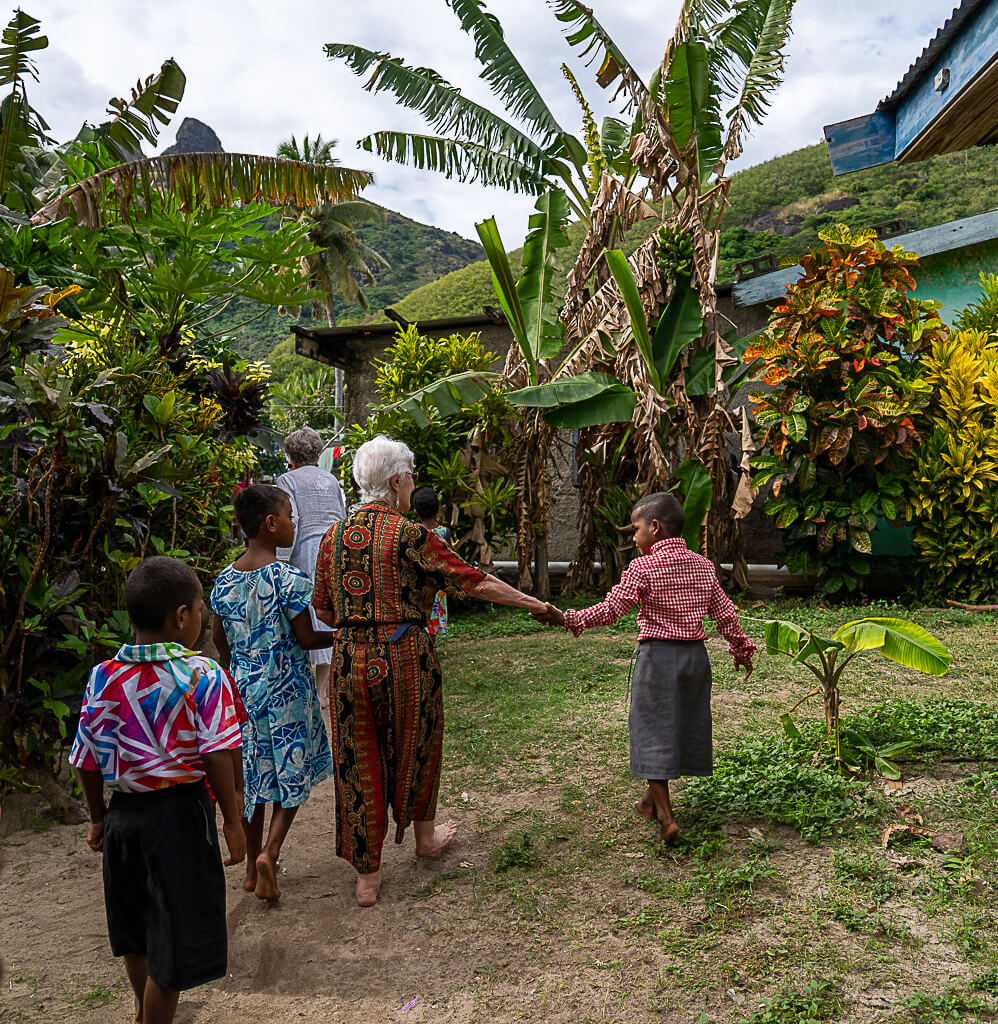
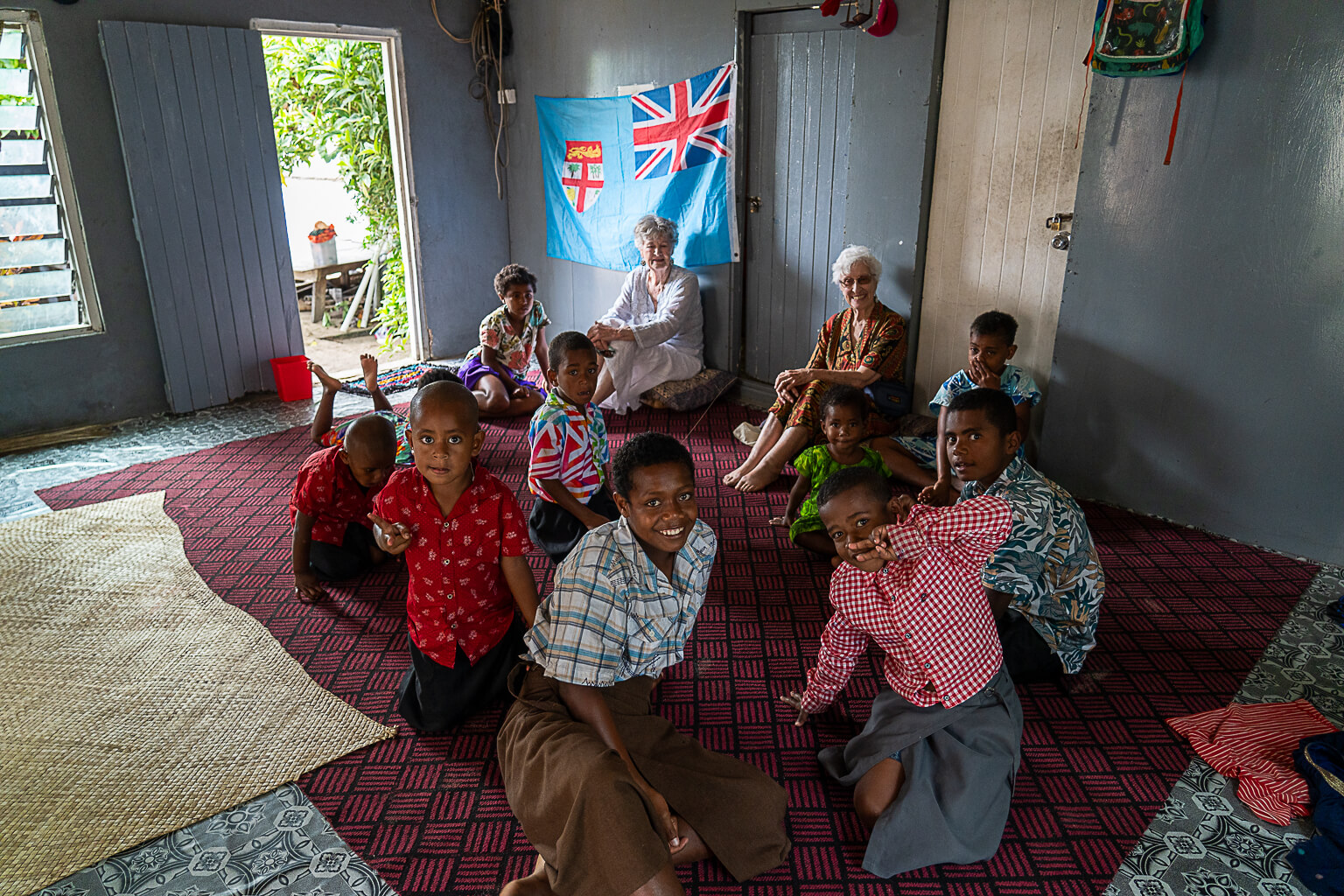
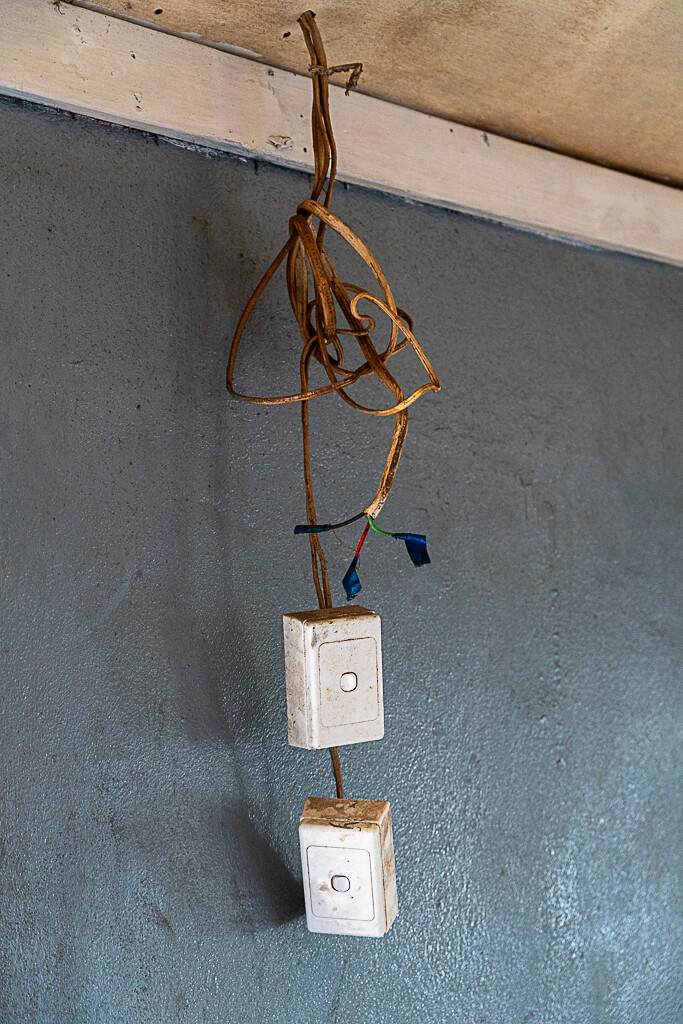
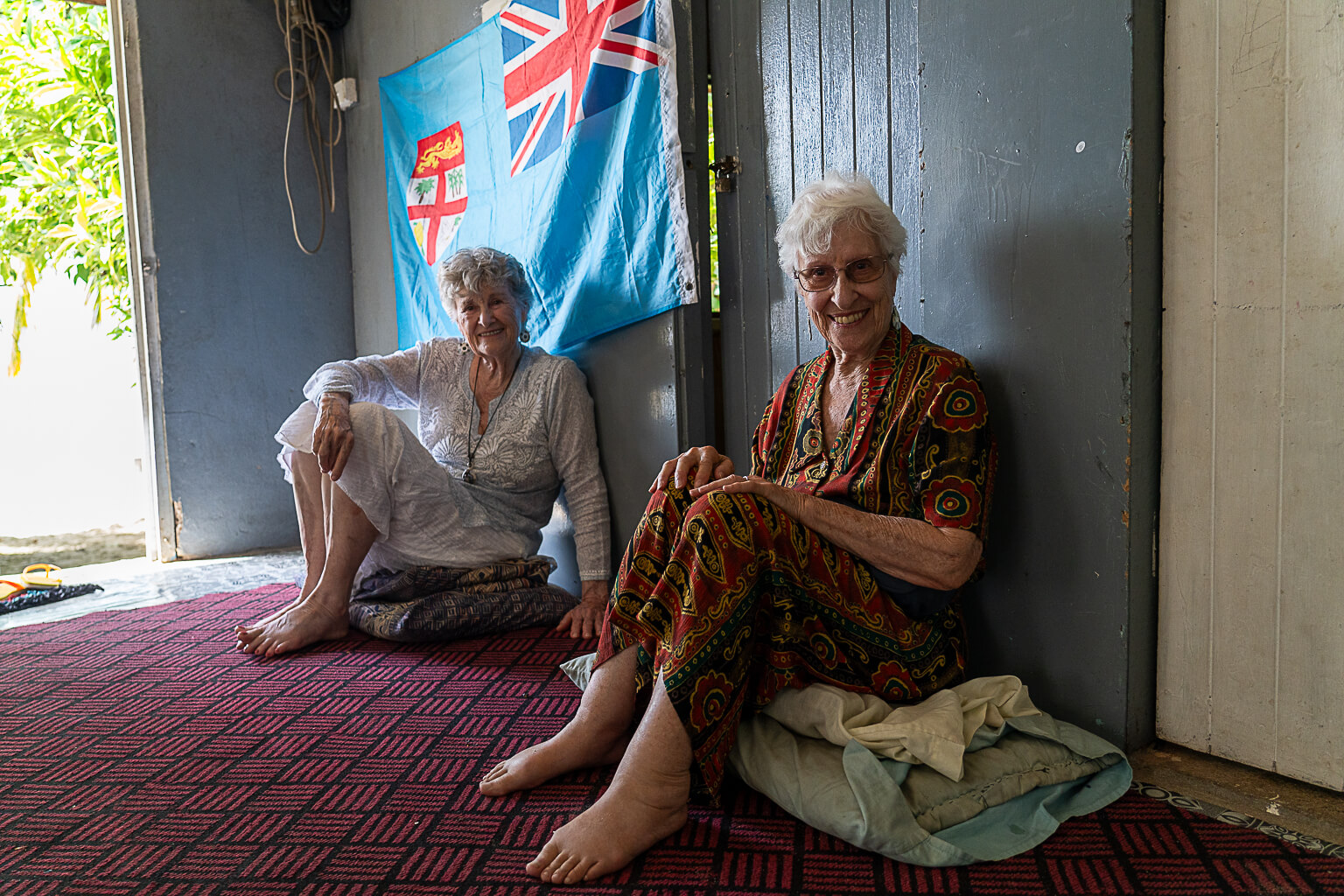

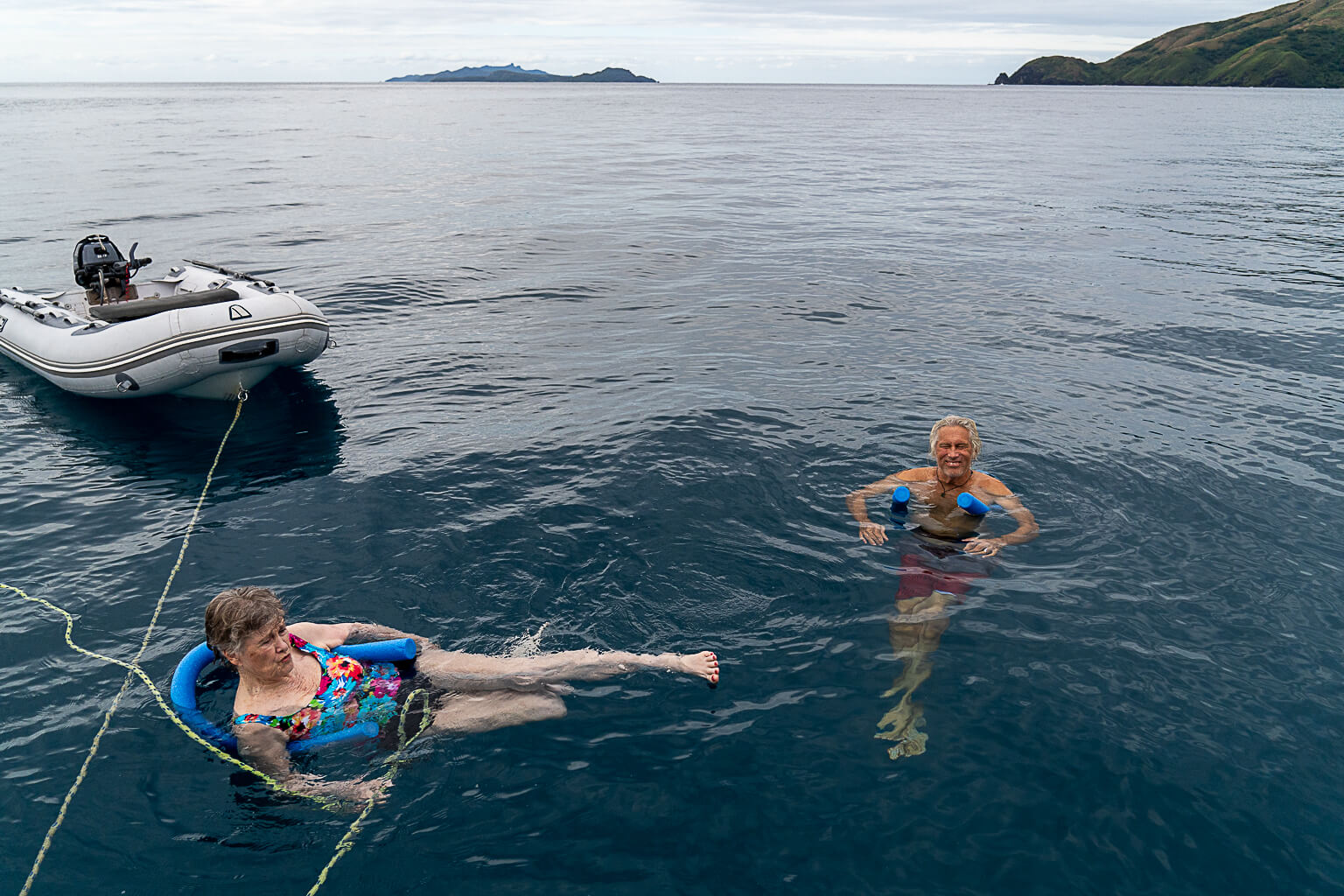
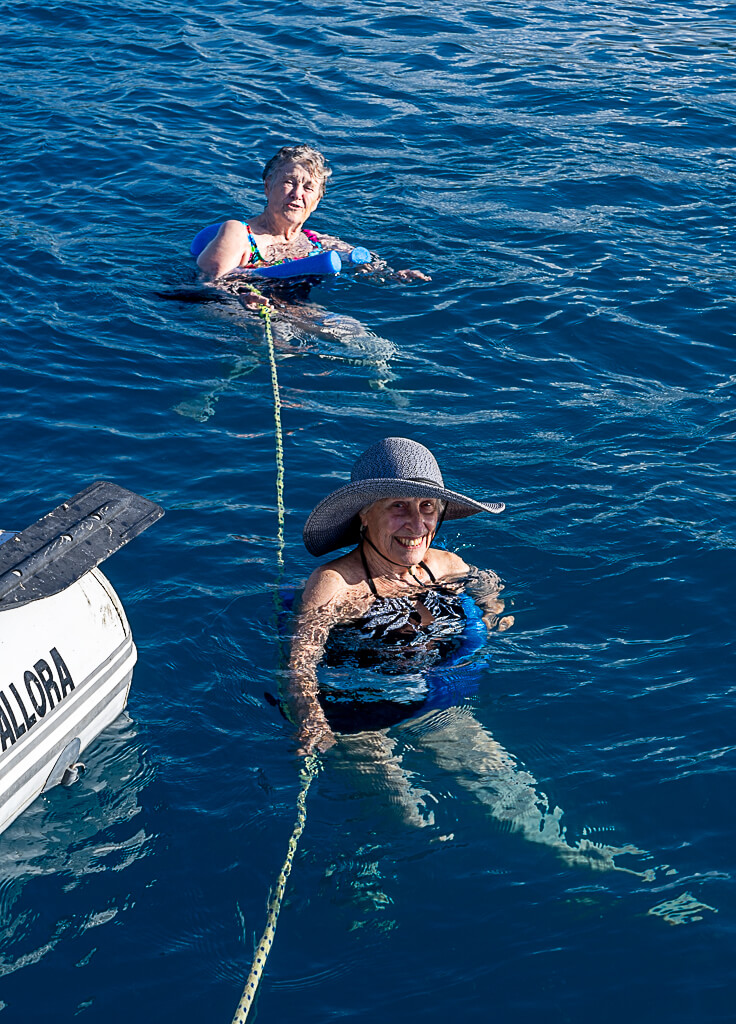

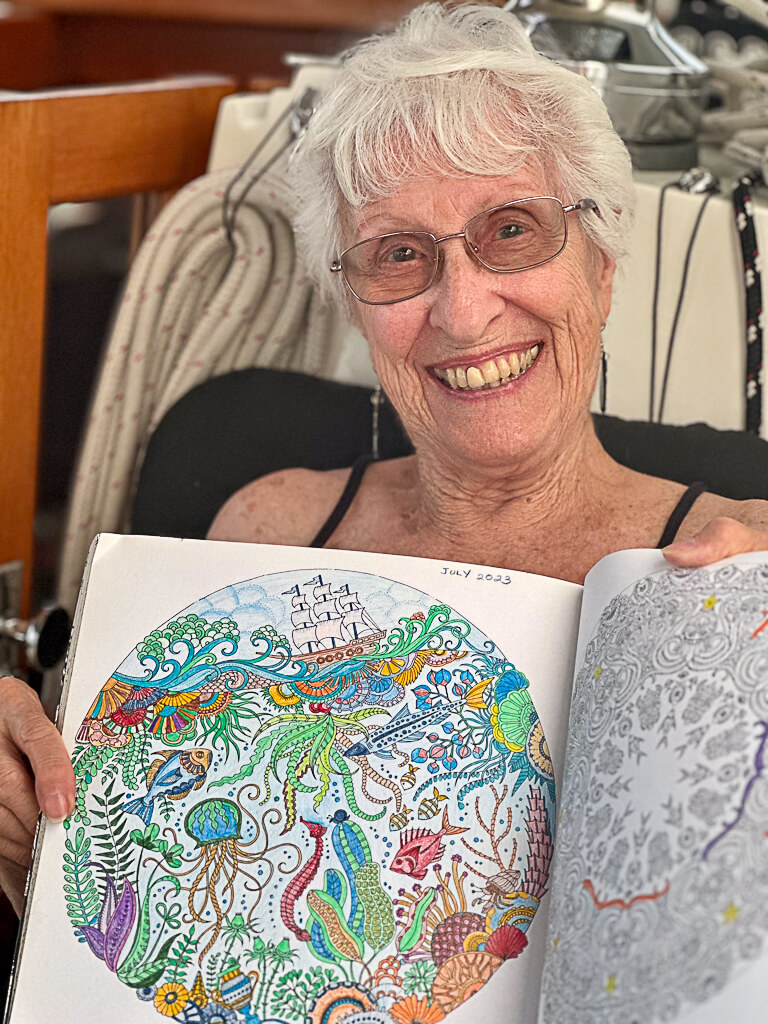
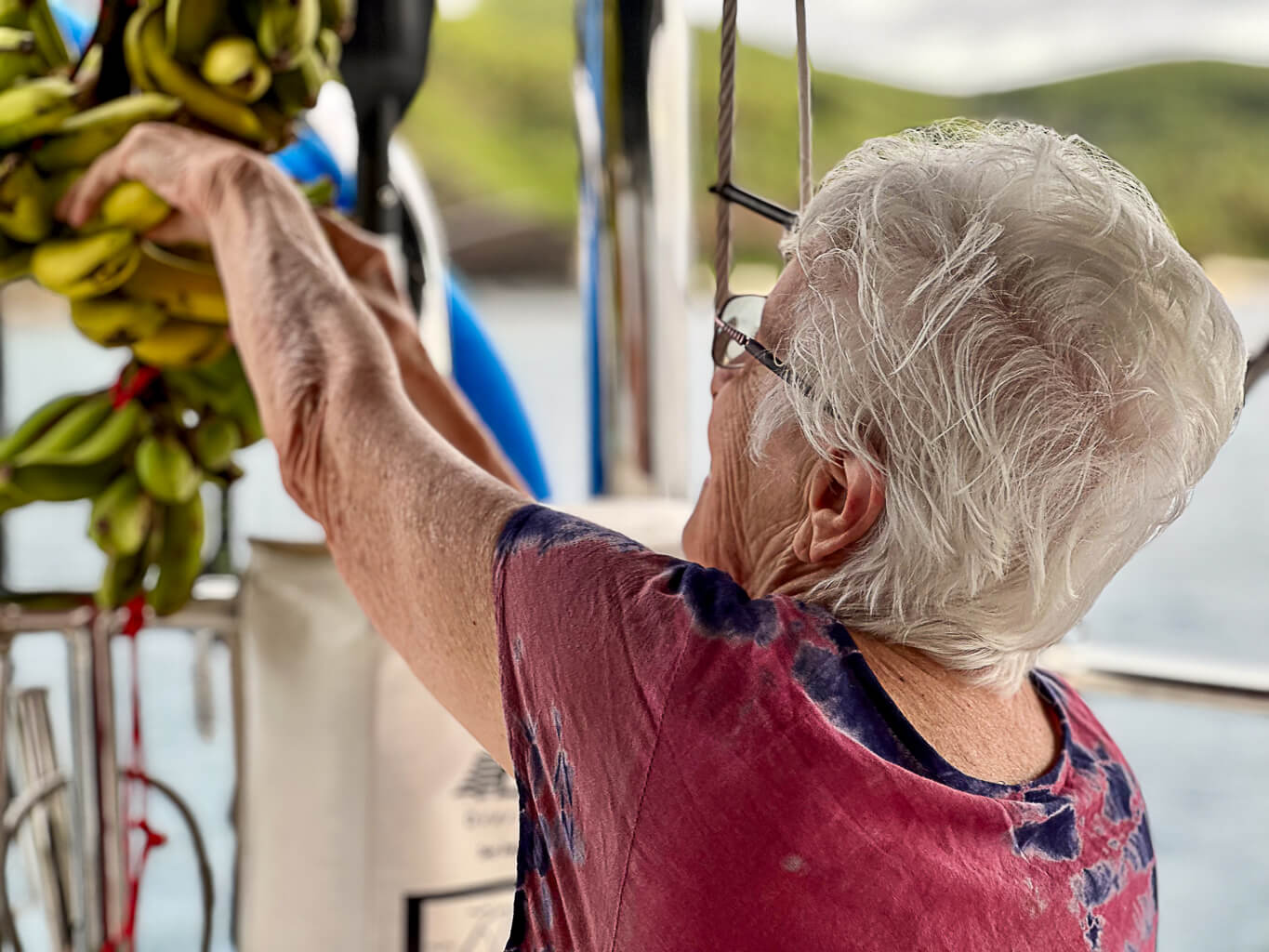
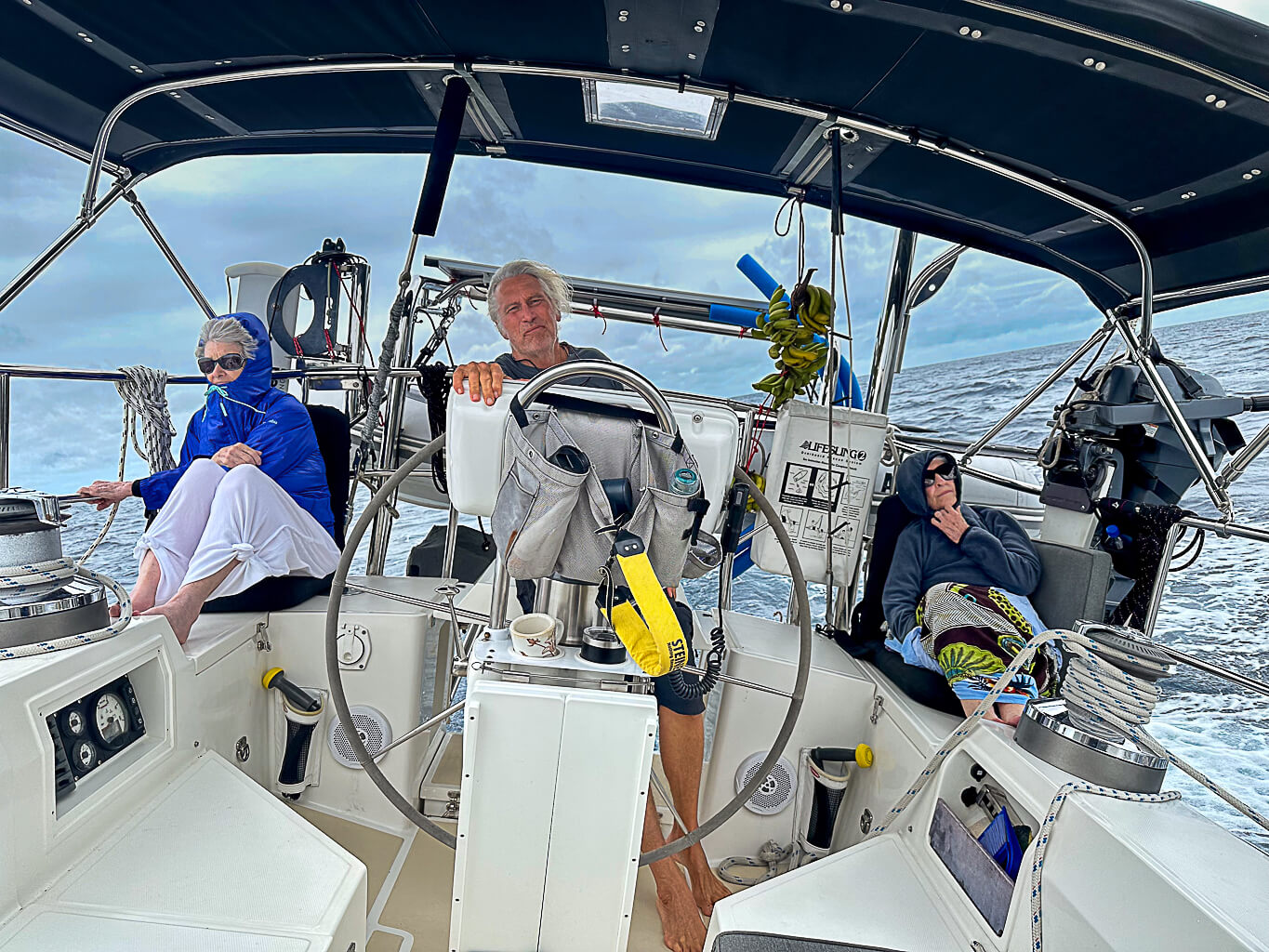


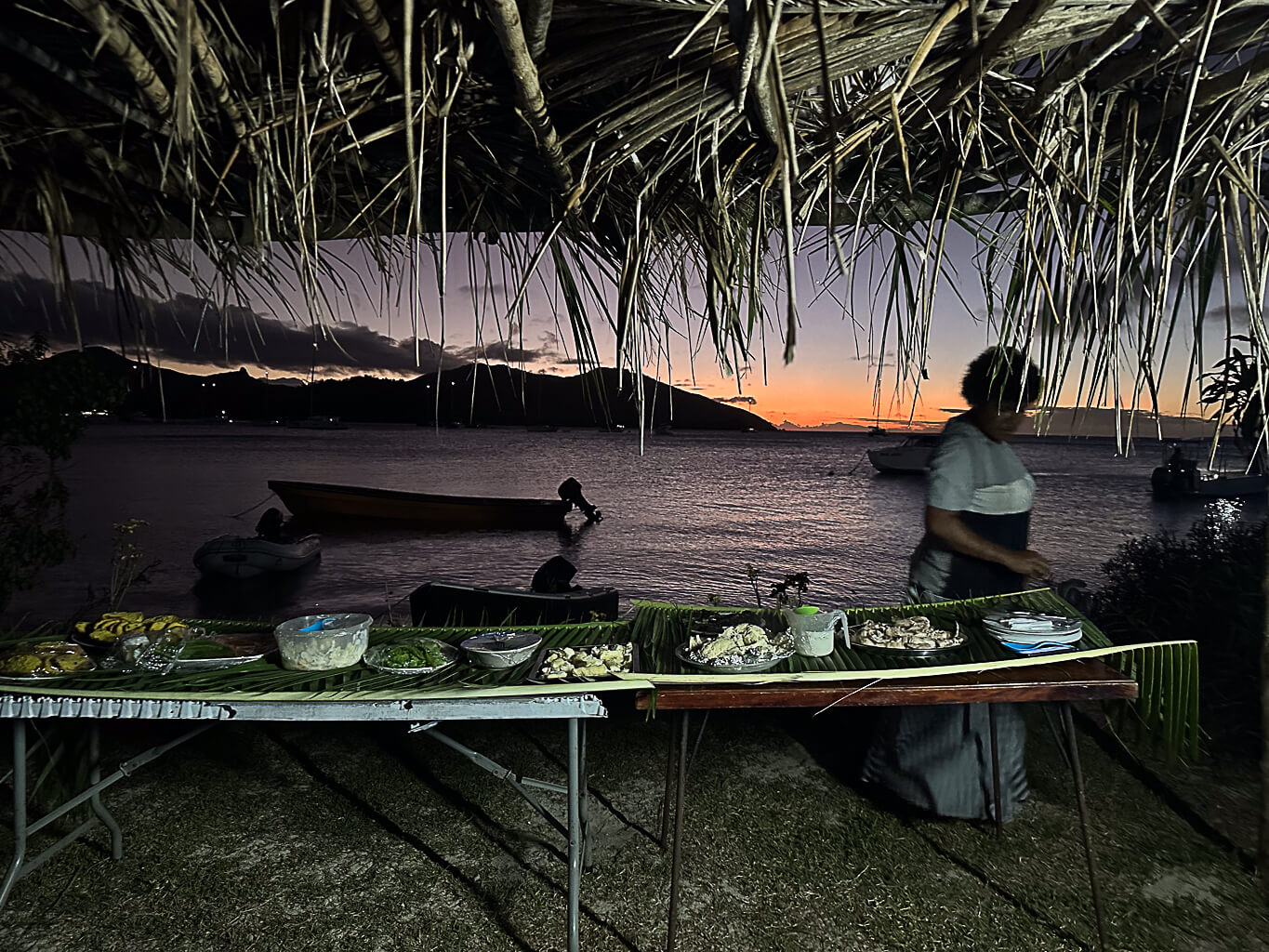
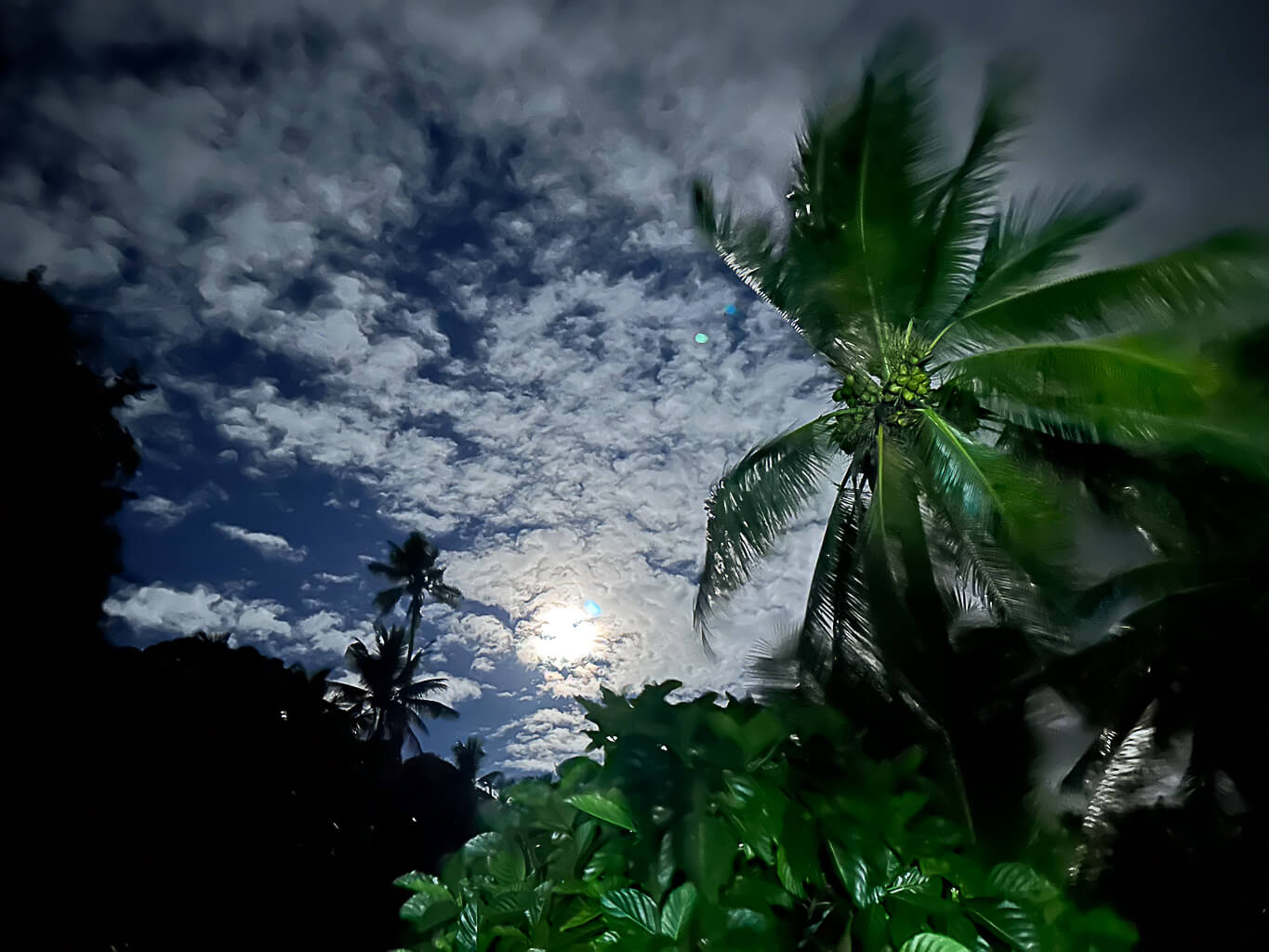
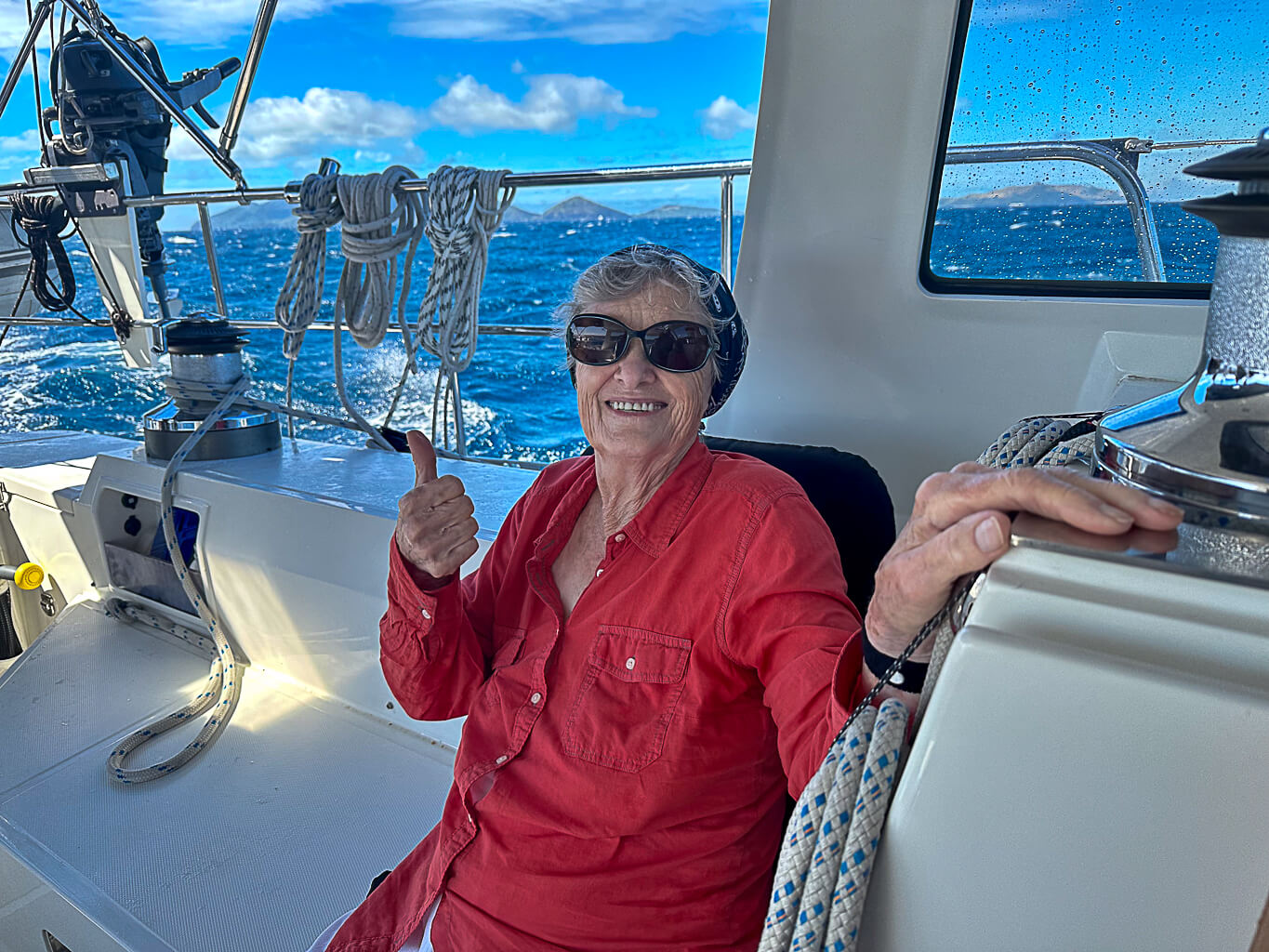
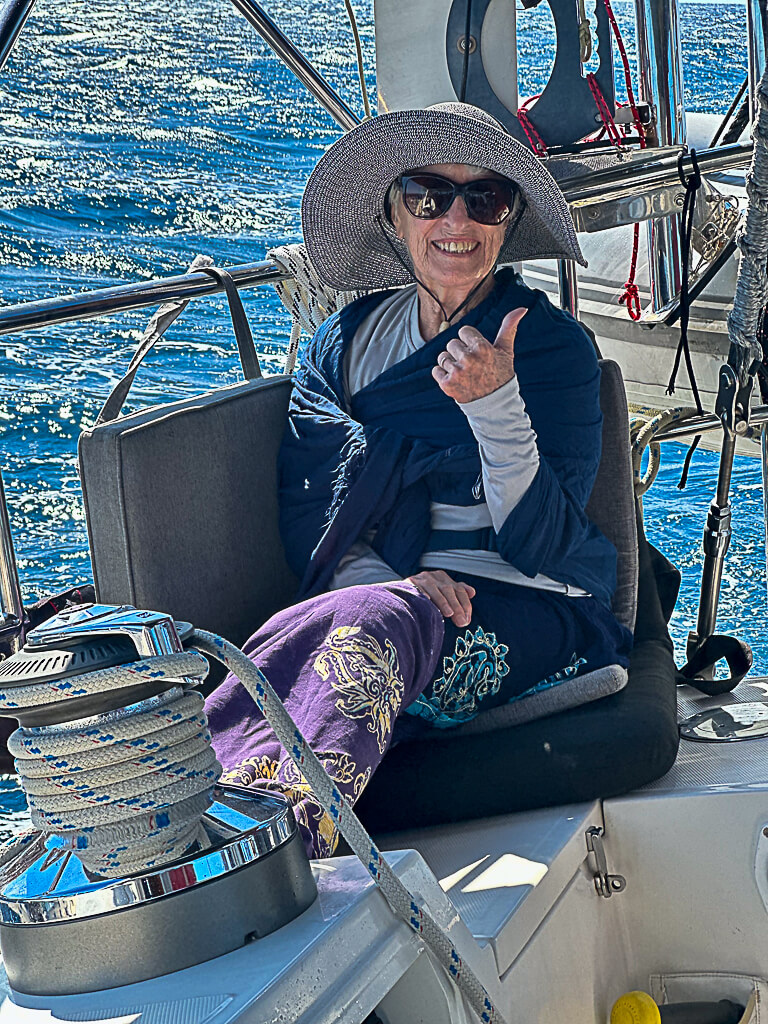

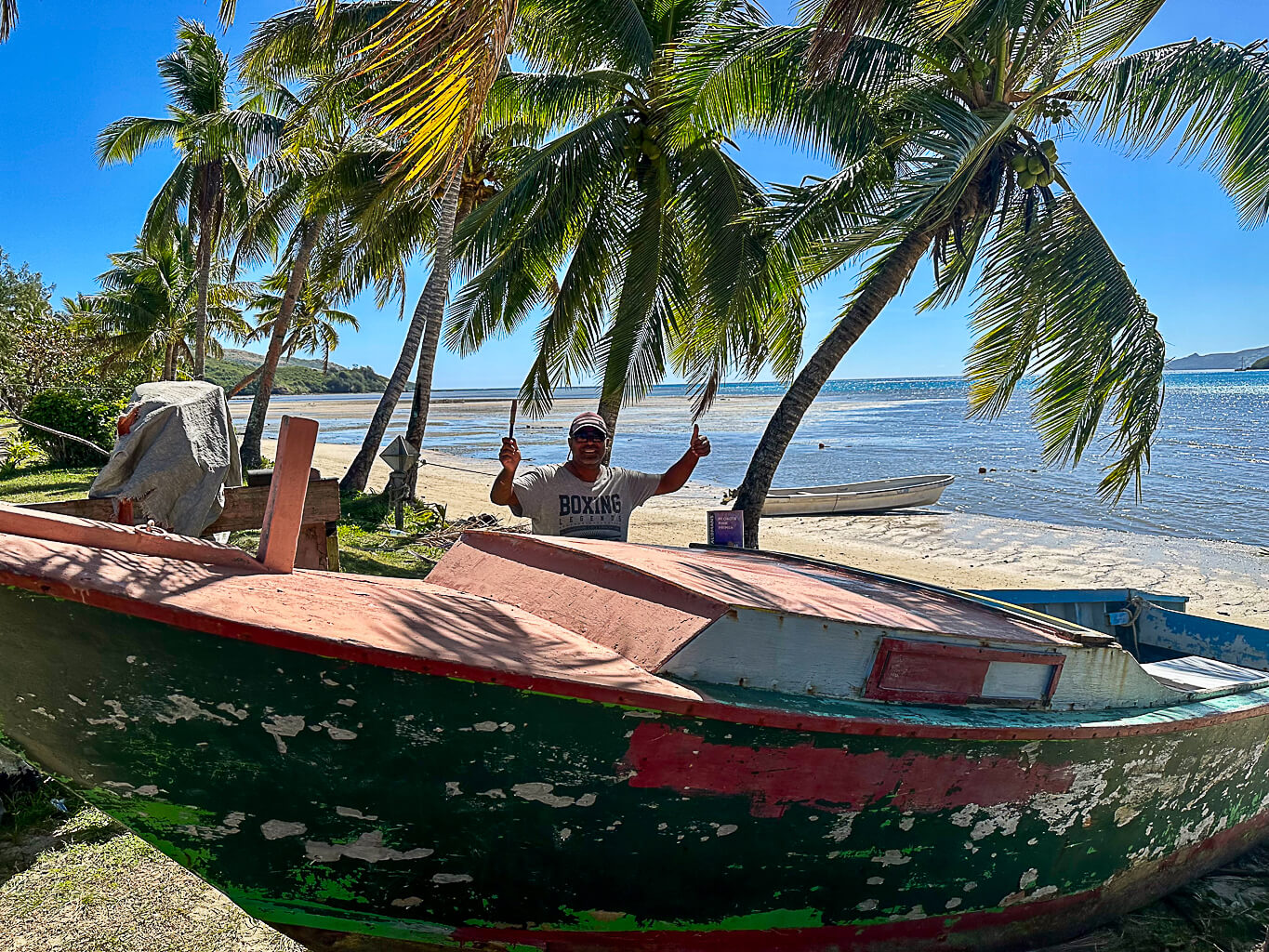
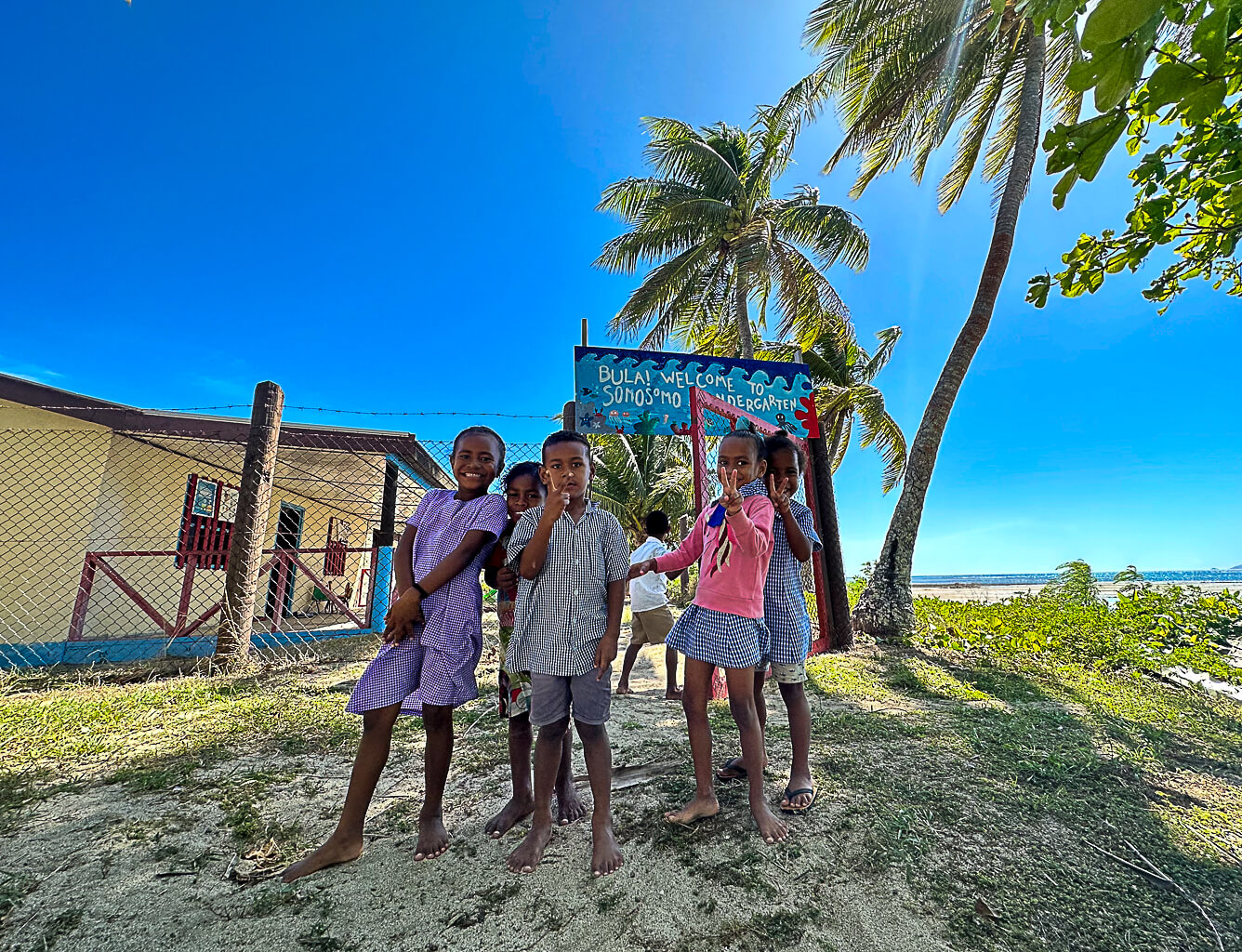
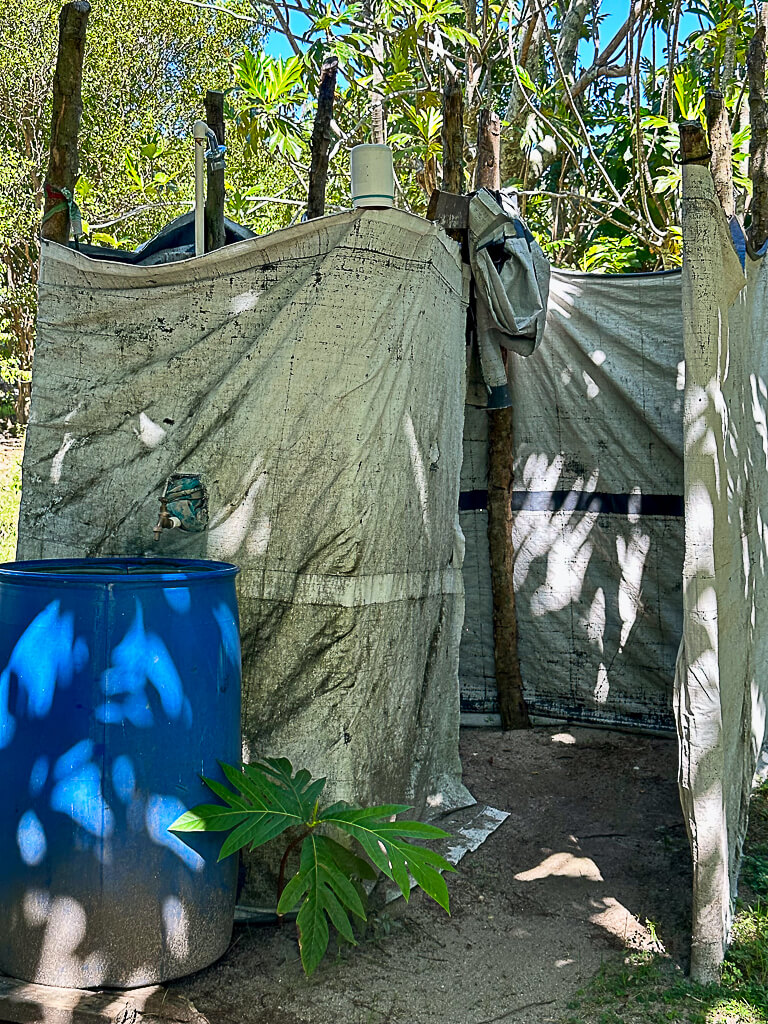
There’s not a whole lot of material wealth in most of the Fijian villages we visited, and an obvious shortage of healthcare. People here are pretty self sufficient and work hard to supply their own needs. They mainly sleep on the floor in very simple, but colorful houses. Still, the land and sea also seem generously willing to provide the basics. Papaya (and a lot of other things) do grow on trees. While we anchored off a small uninhabited island wondering if the rain and cold weather might ease, if the northern swell might finally cede the battle to a southeastern blow and give Allora some peace, I noticed a local fishing boat anchored further out where there was no protection. Their single light bounced and rolled all night as they fished, despite the seriously uncomfortable weather for two days. Fishermen in the islands spearfish at night just like the sharks because the fish are hiding out in the rocks and make easier pickings. No bunks or cushions on that boat, no seasickness medicine or Diana cooked meals either. ~MS

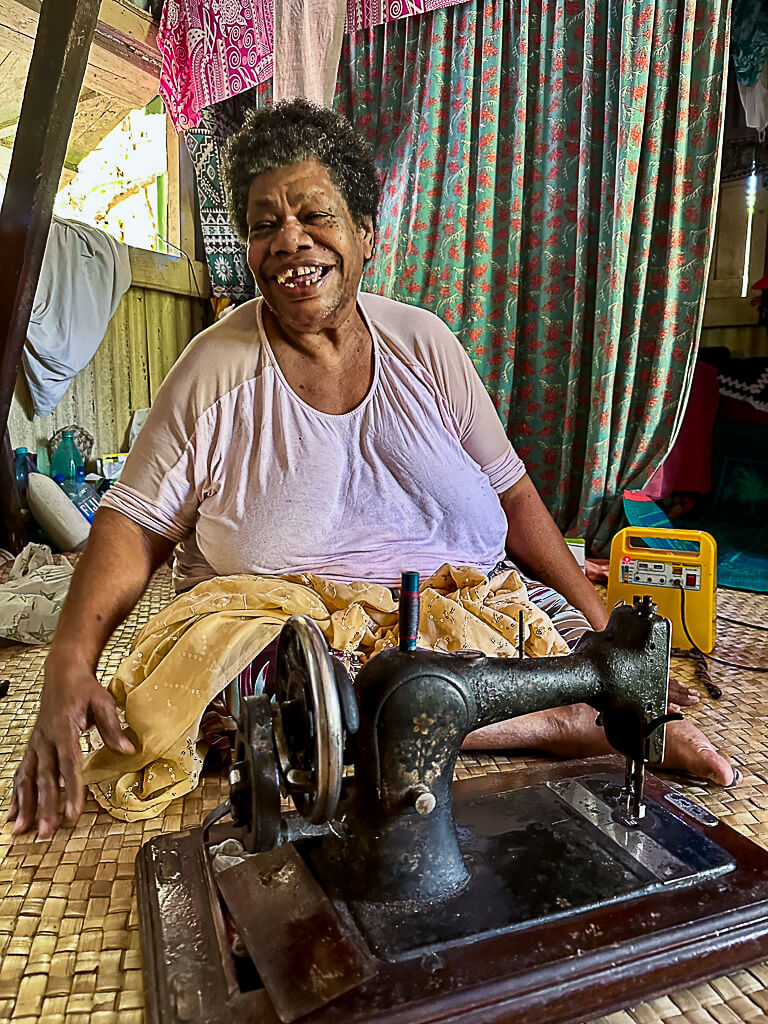

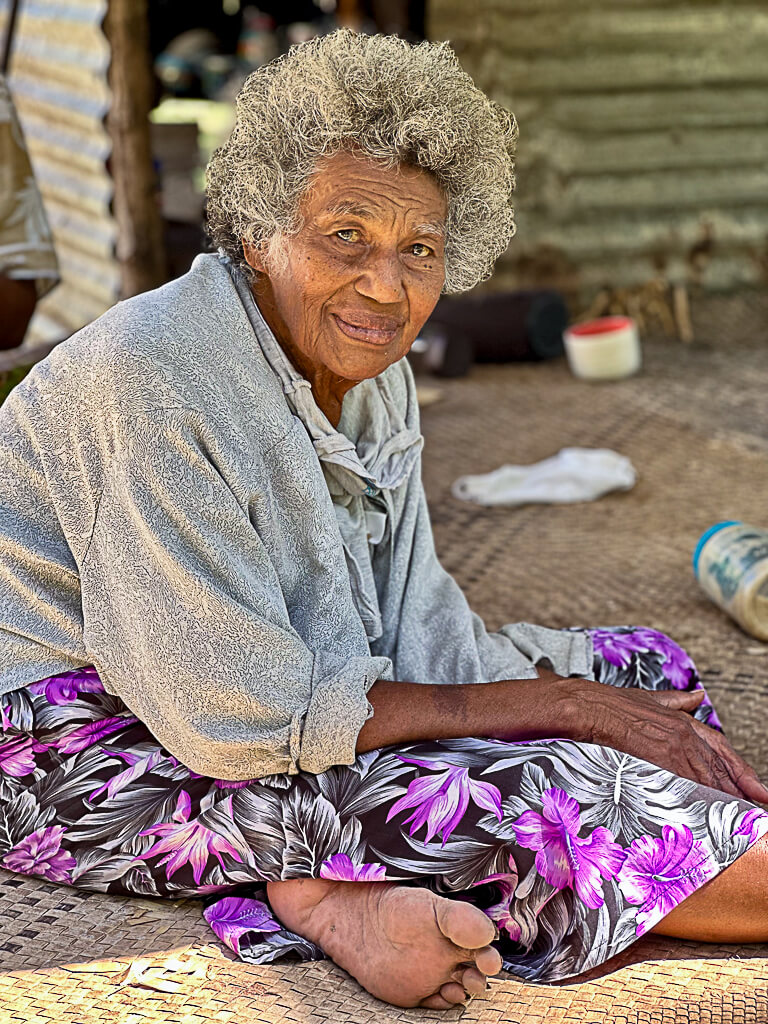
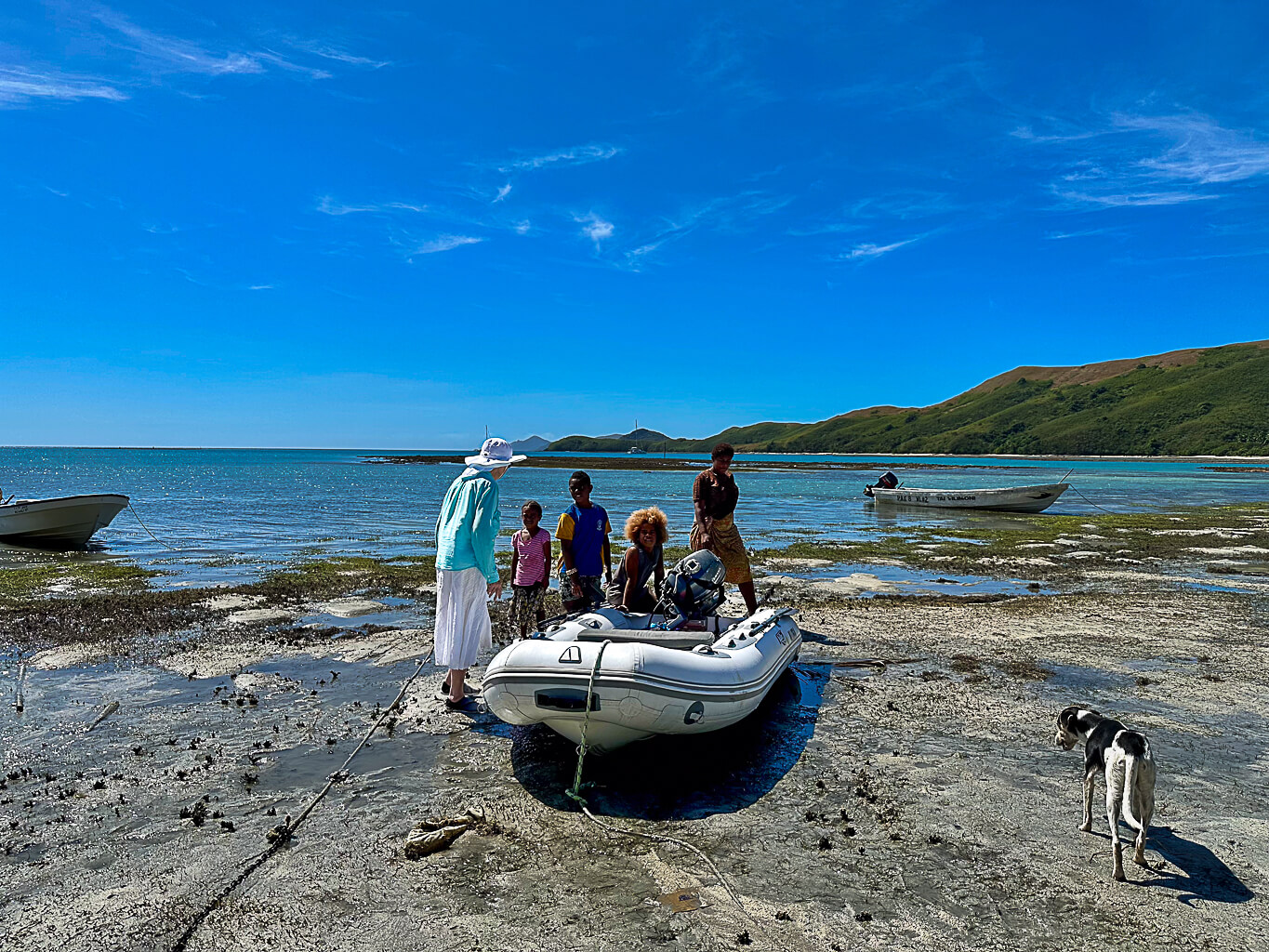
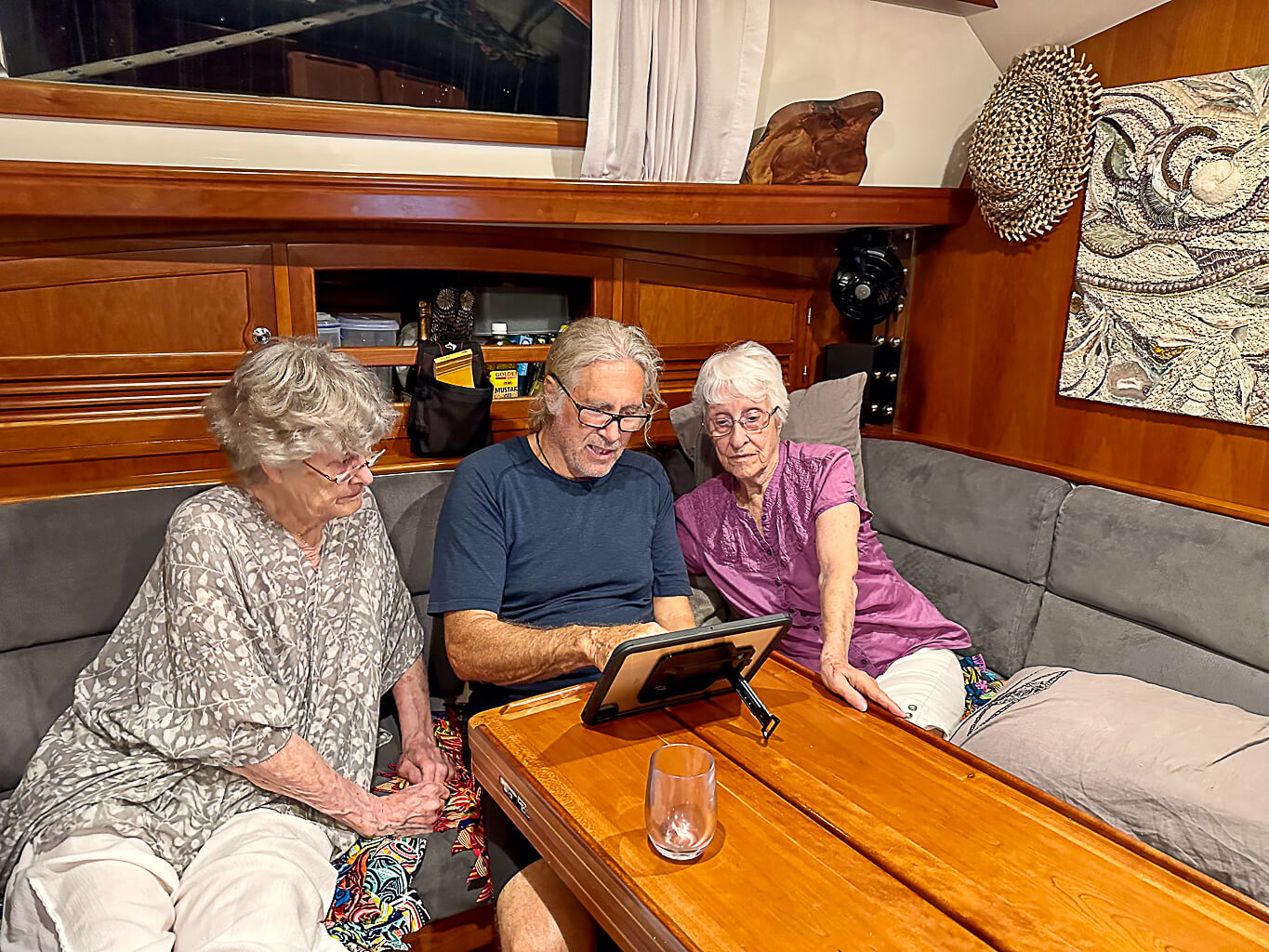

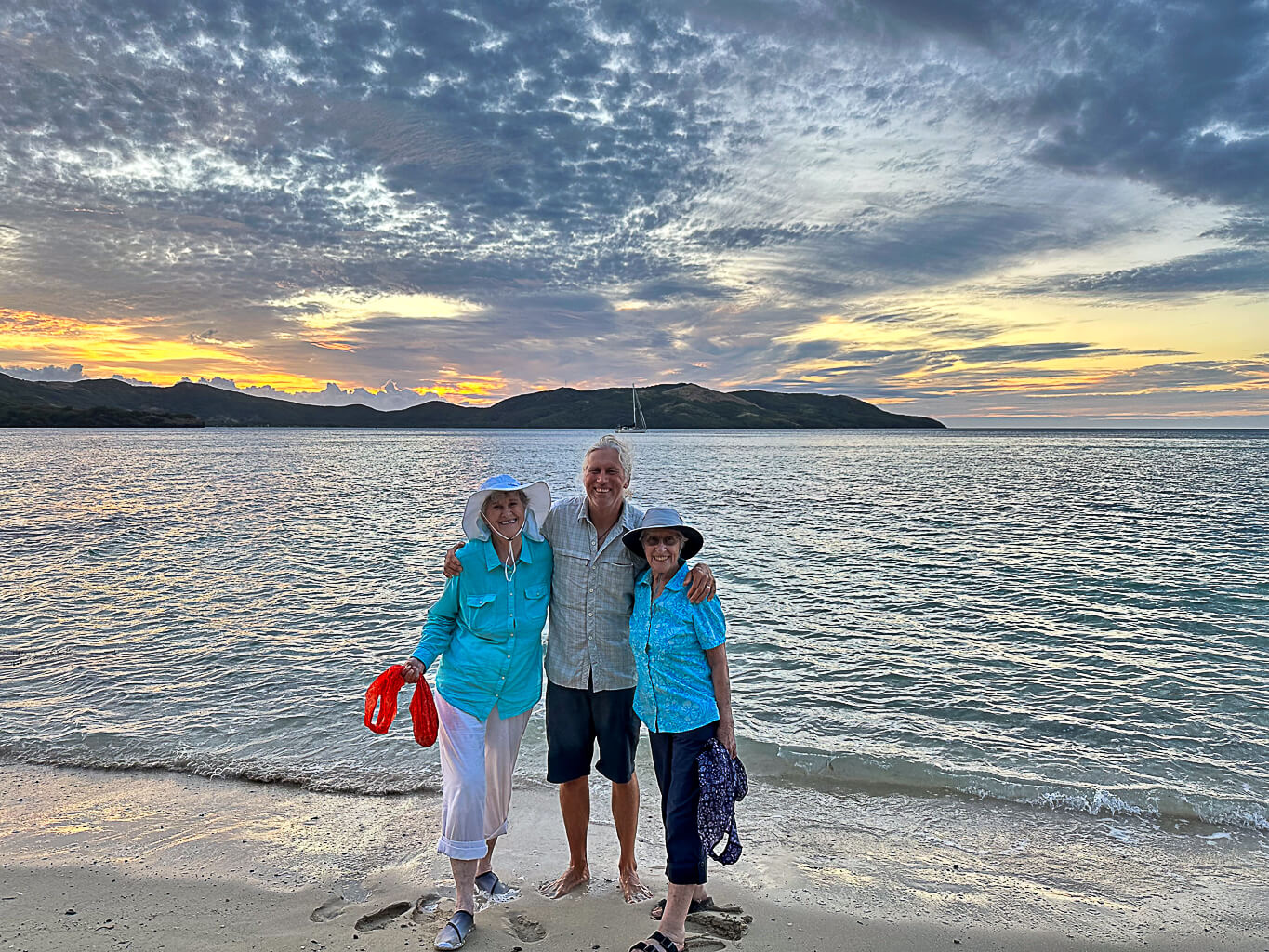

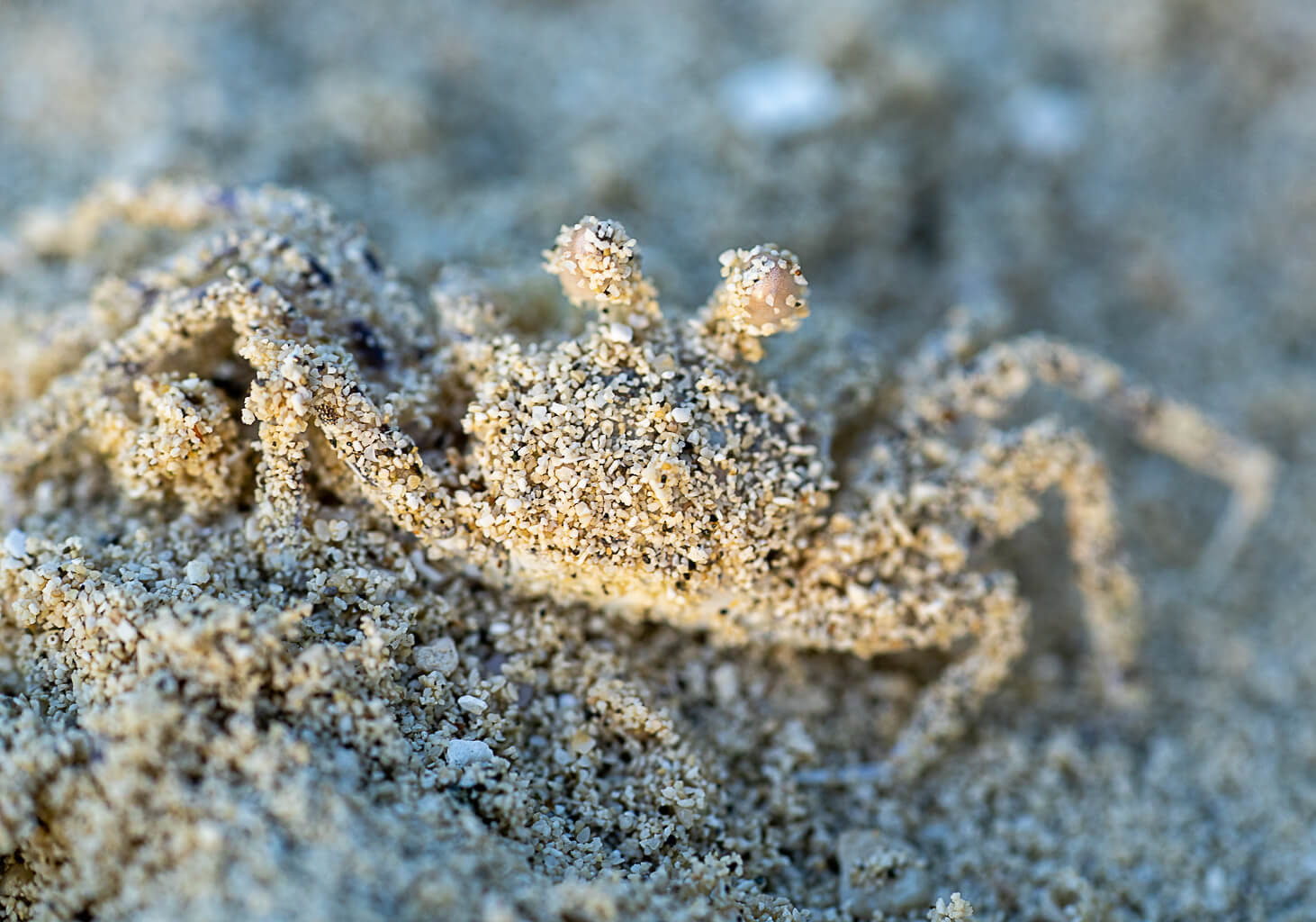
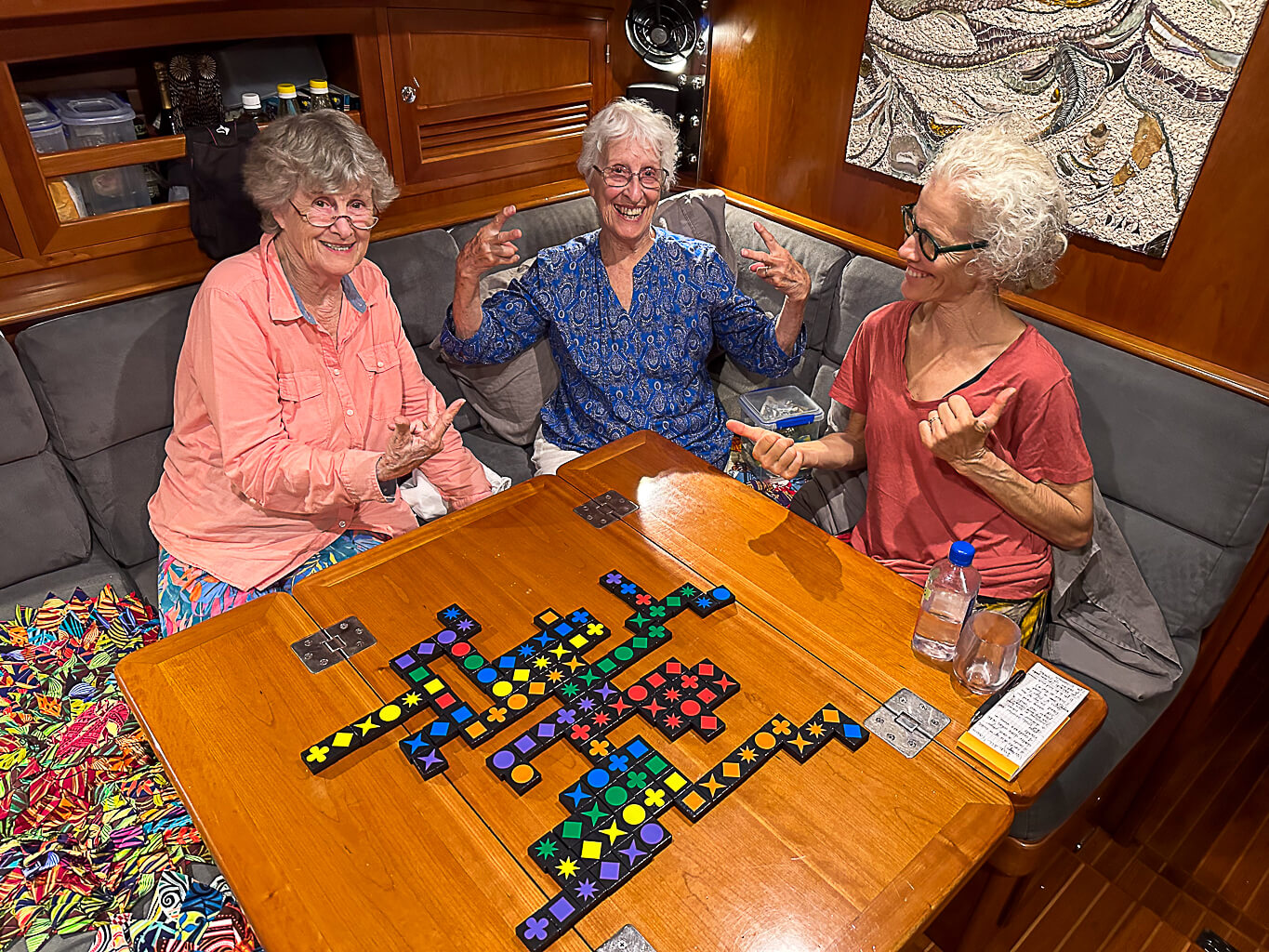
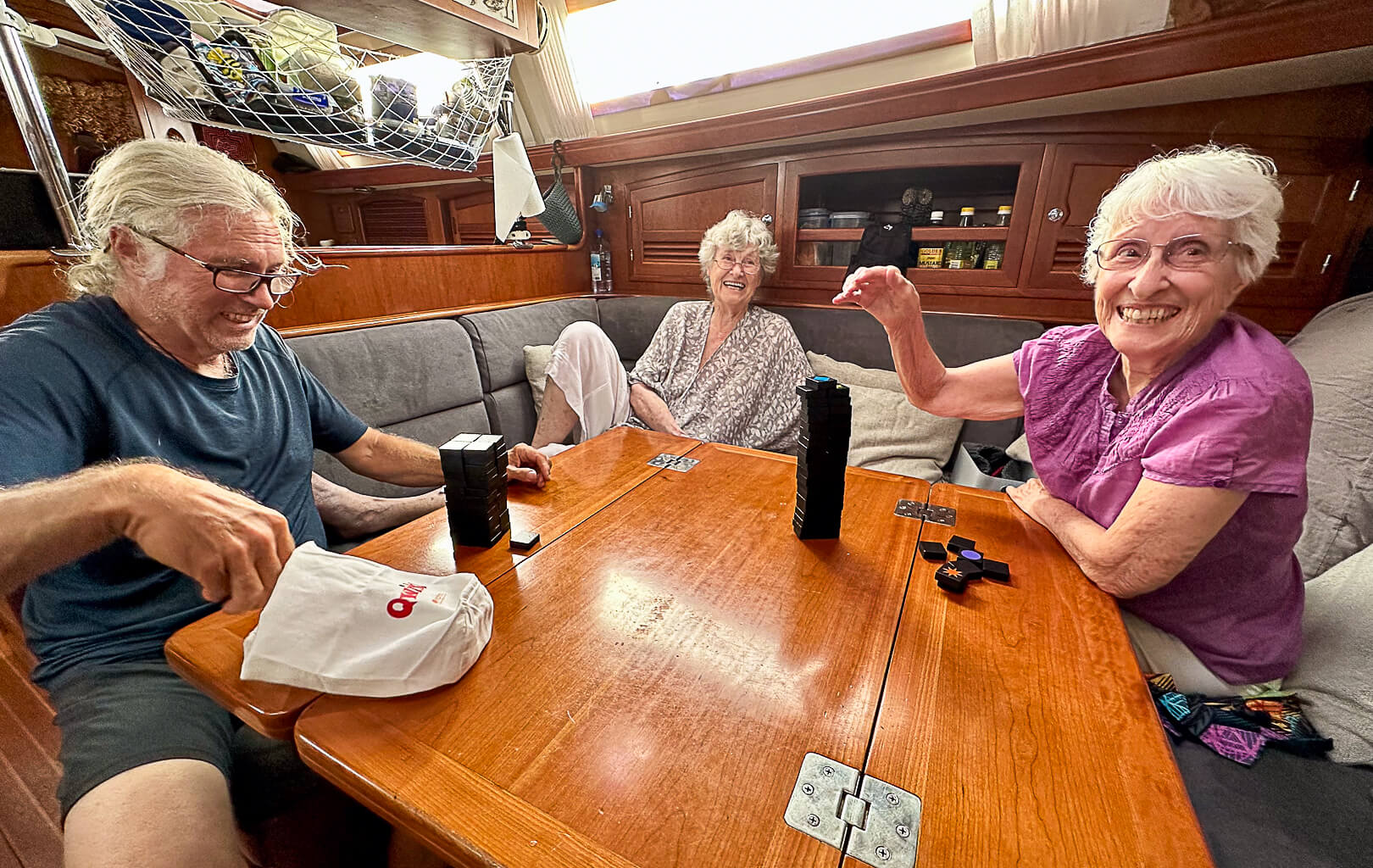
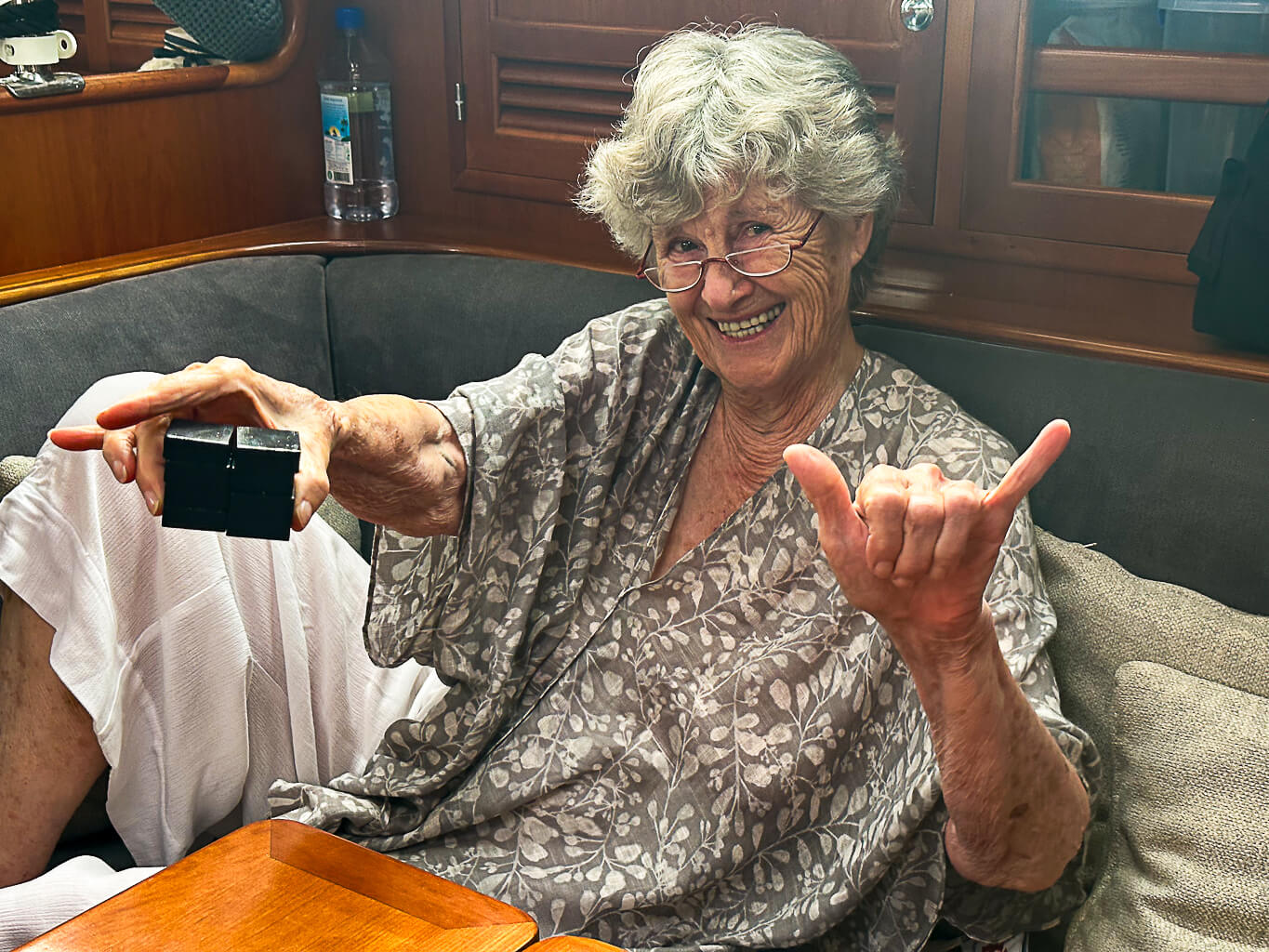
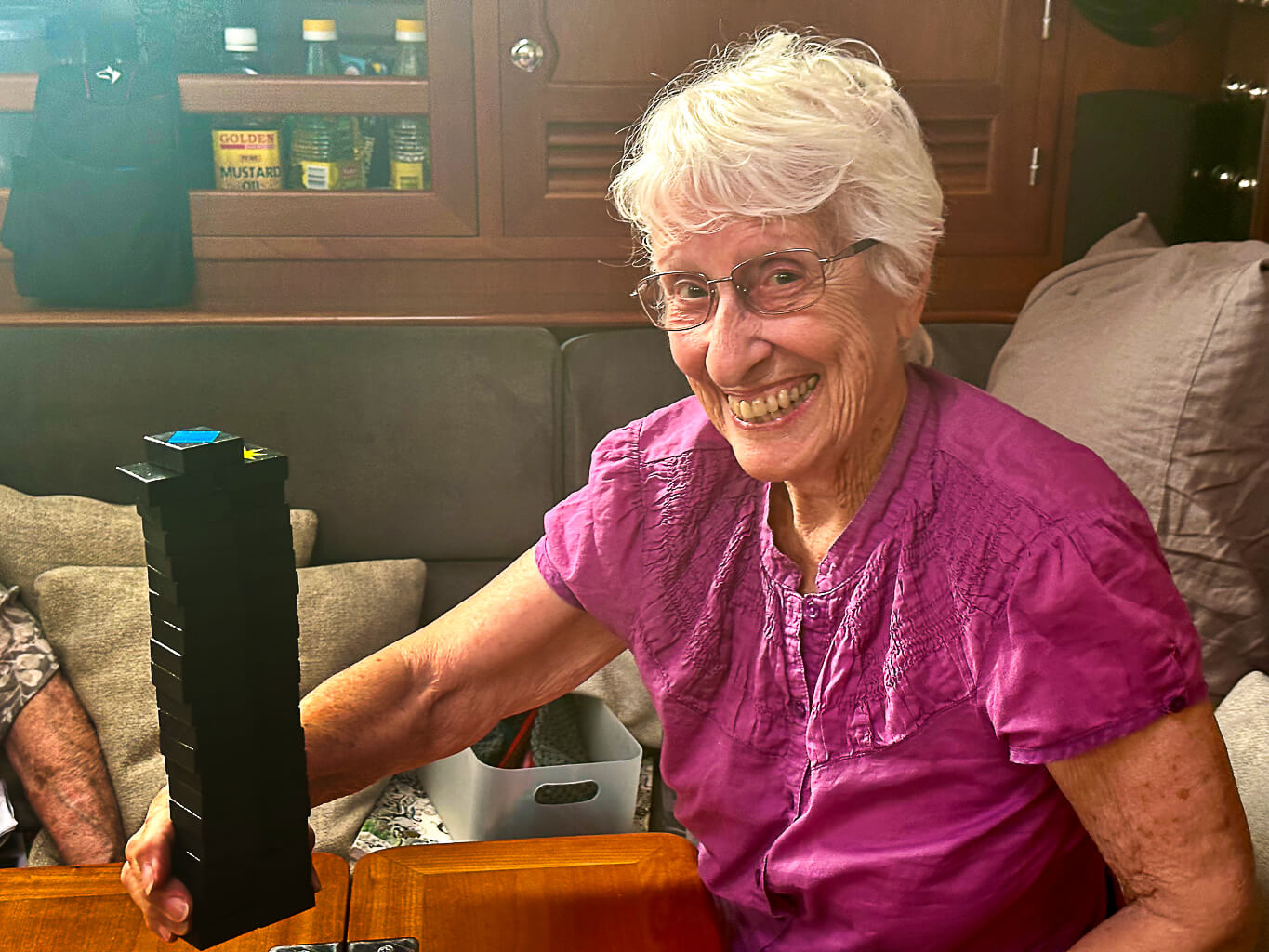

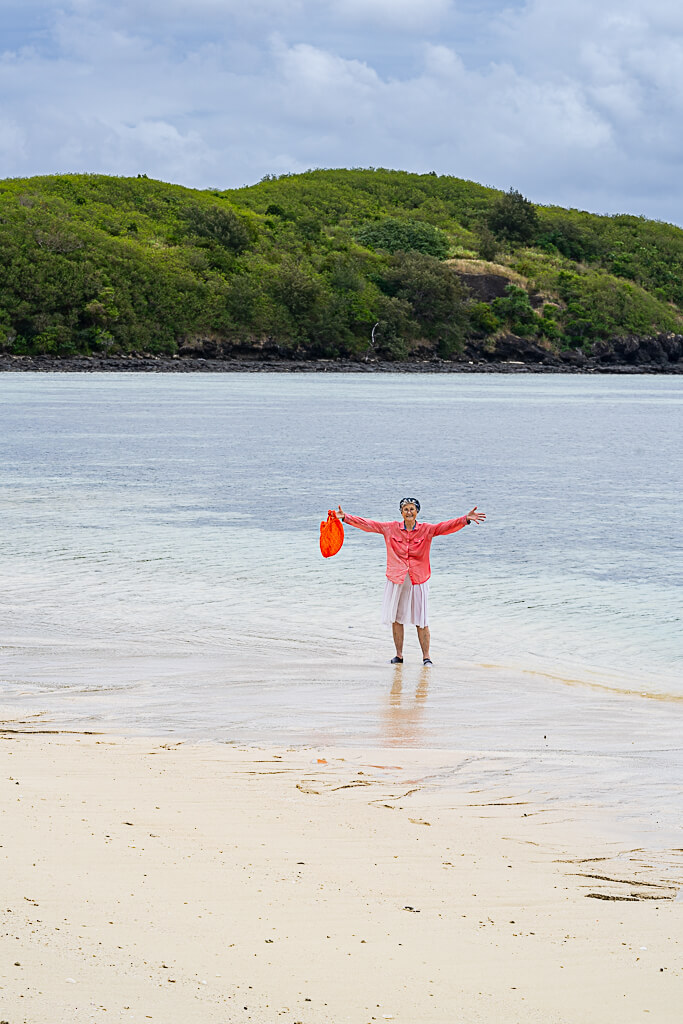
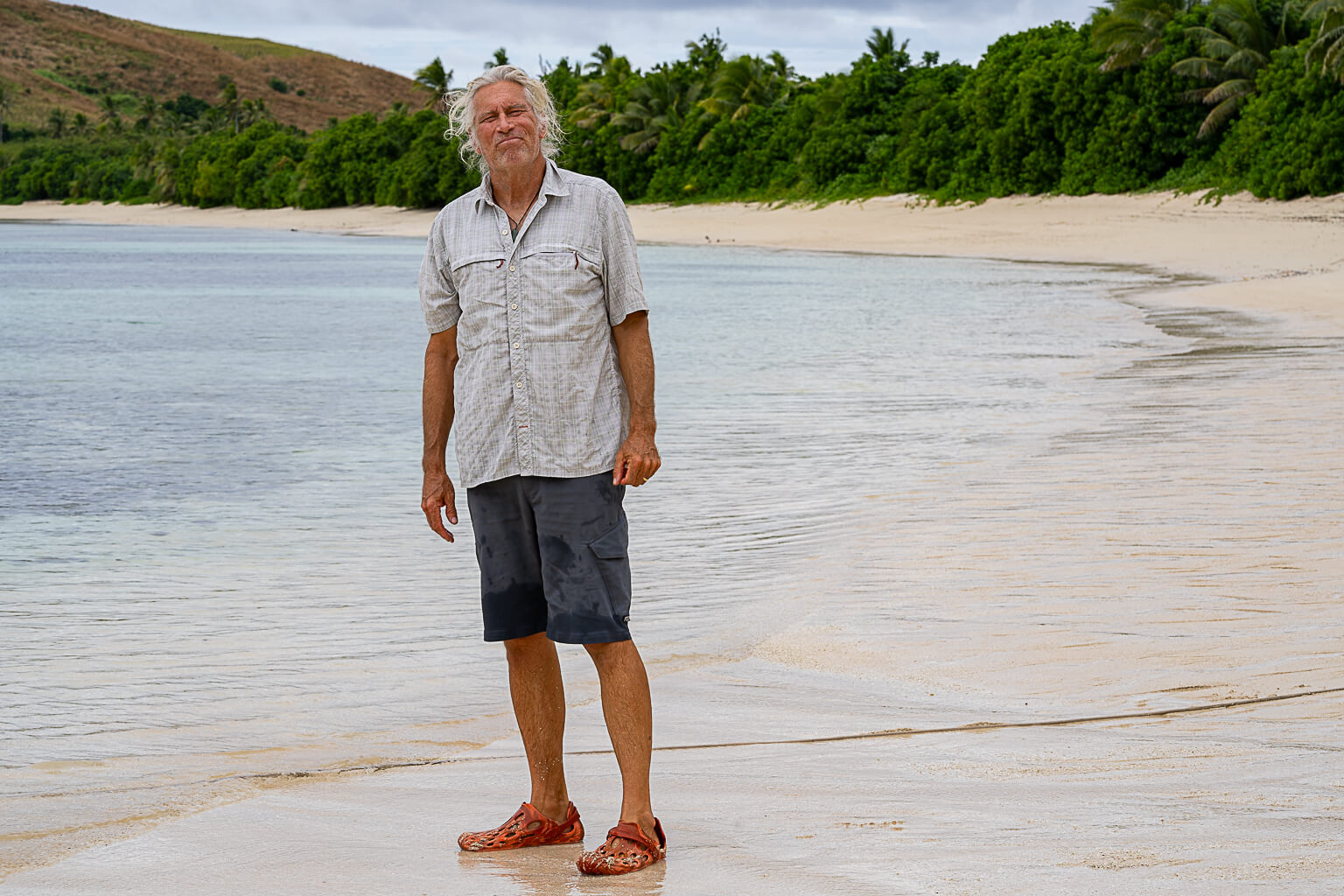
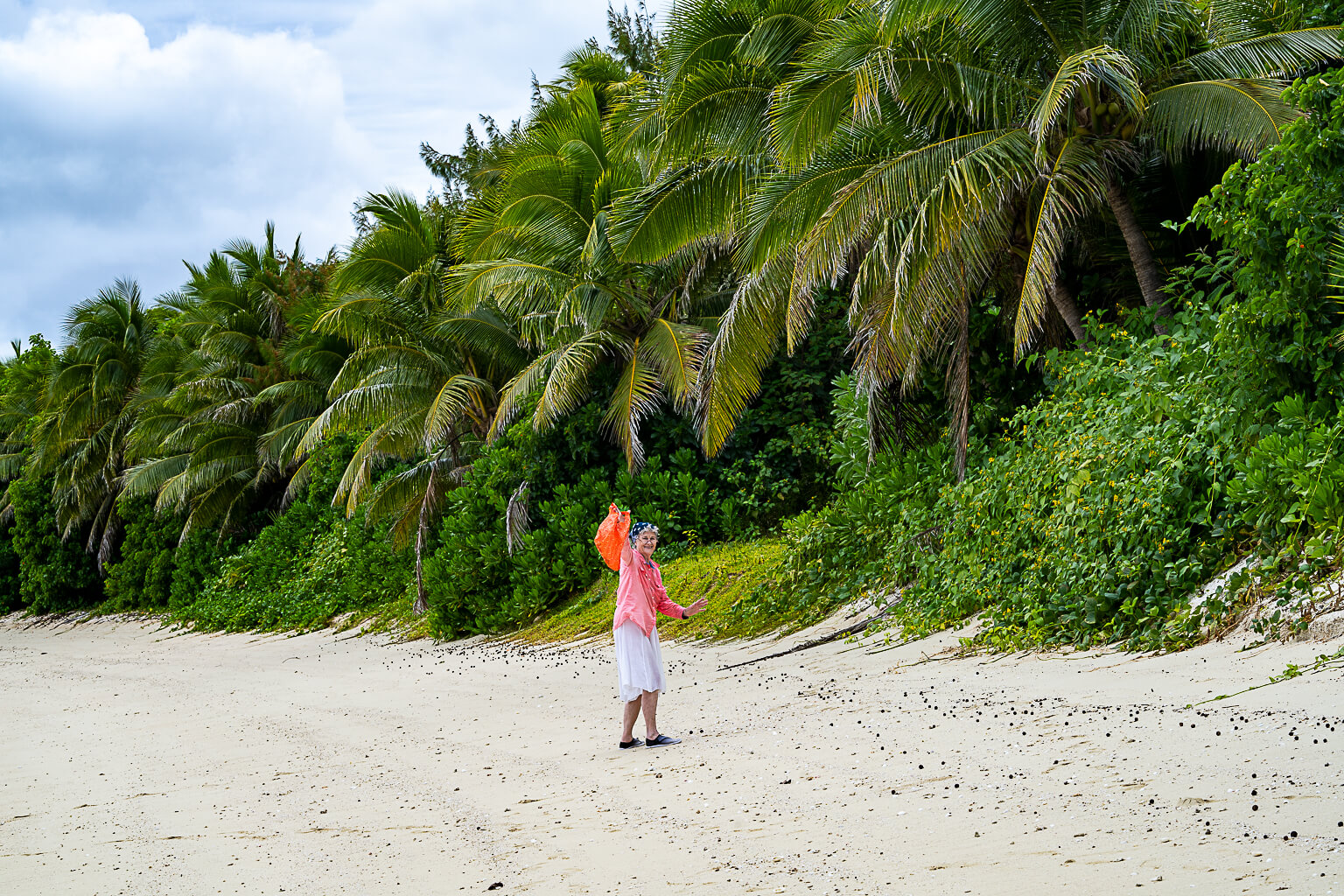

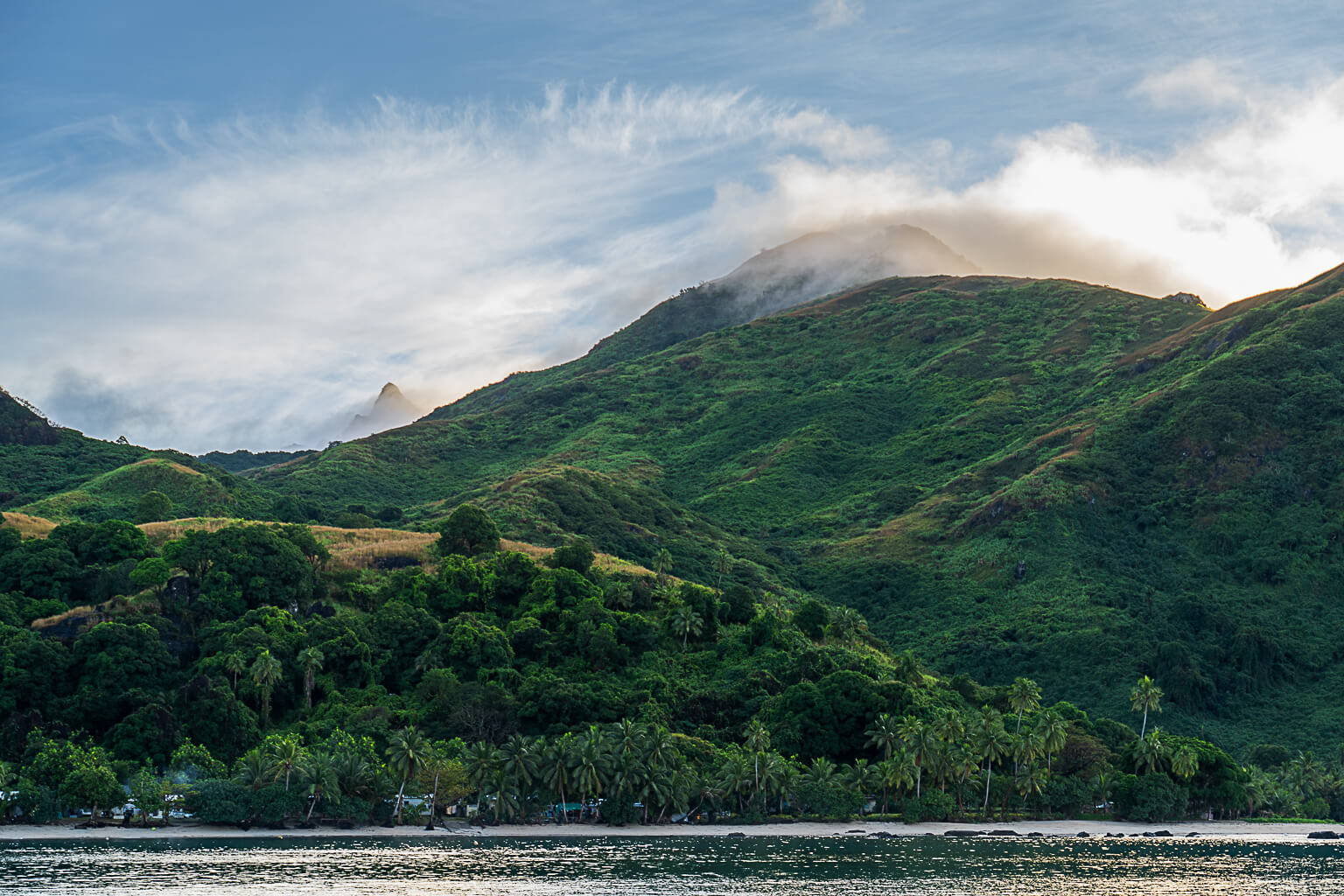
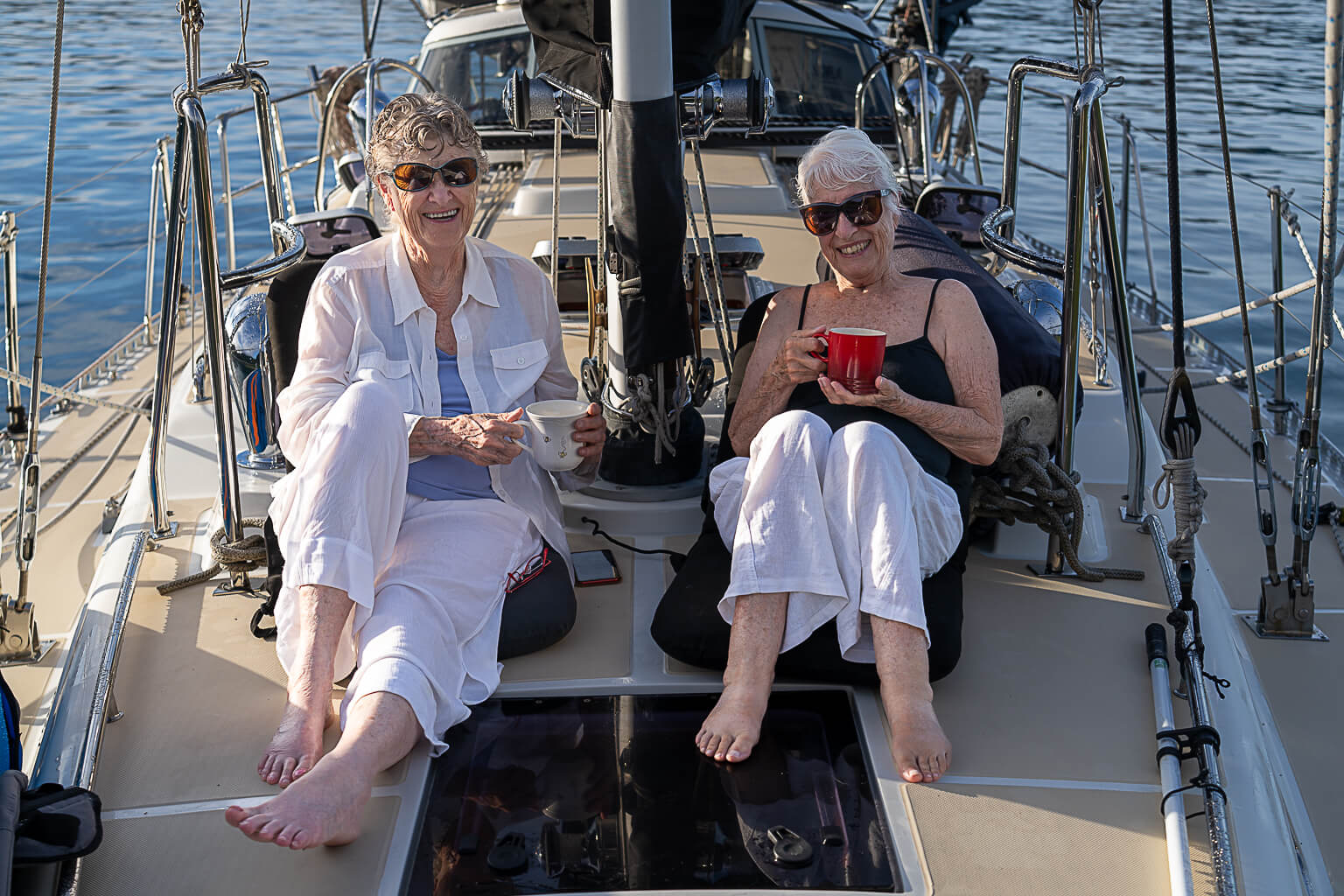
The highlight of the Moms’ visit (besides the music), was the slow mornings and conversation. It seems like most days we sat in the cockpit losing track of time until almost noon, typically with a wonderful brunch whipped up by Diana (with assistance from her favorite sous chef). Just being in the same space together with Allora gently (or sometimes not so gently) rocking, turning in the breeze (or gale) was all we needed. We covered most topics ranging from the essential meaning of the universe to childhood memories of mixing the yellow coloring into margarine. Maybe the same thing, actually, as I think about it. ~MS
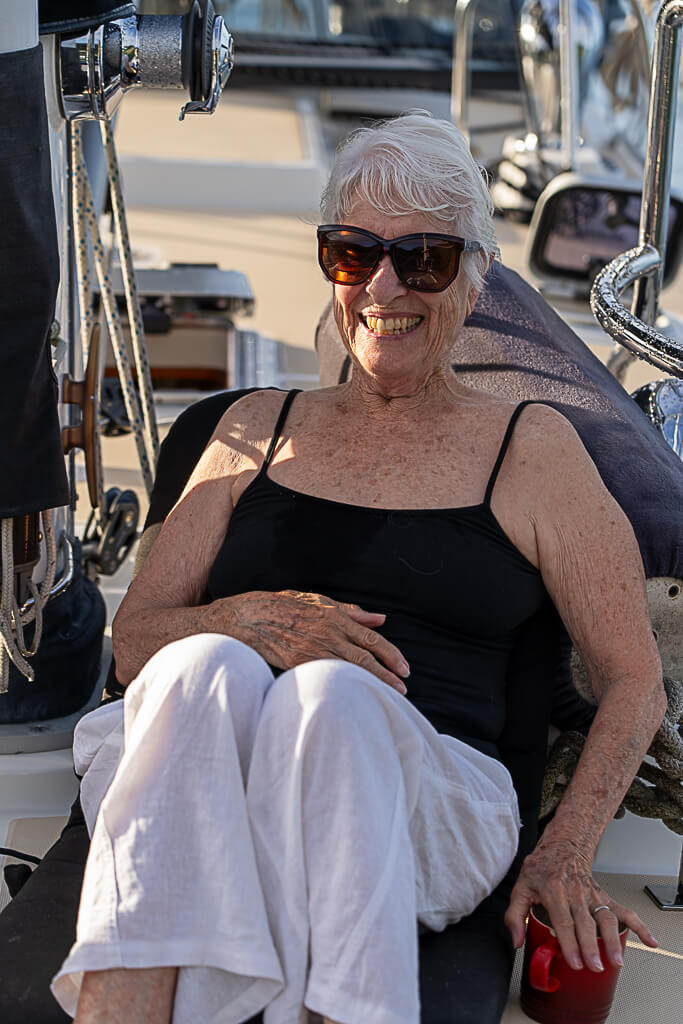


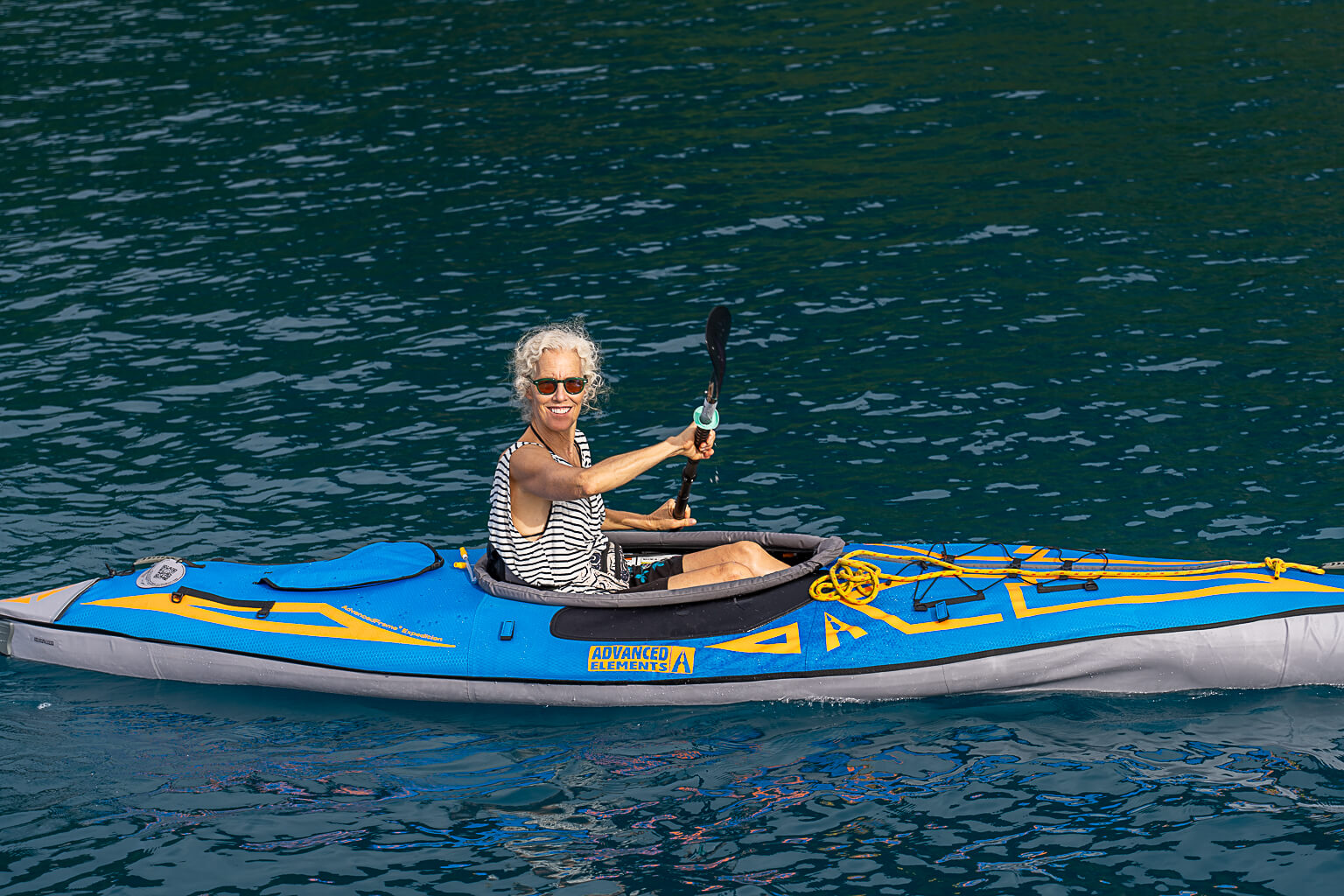
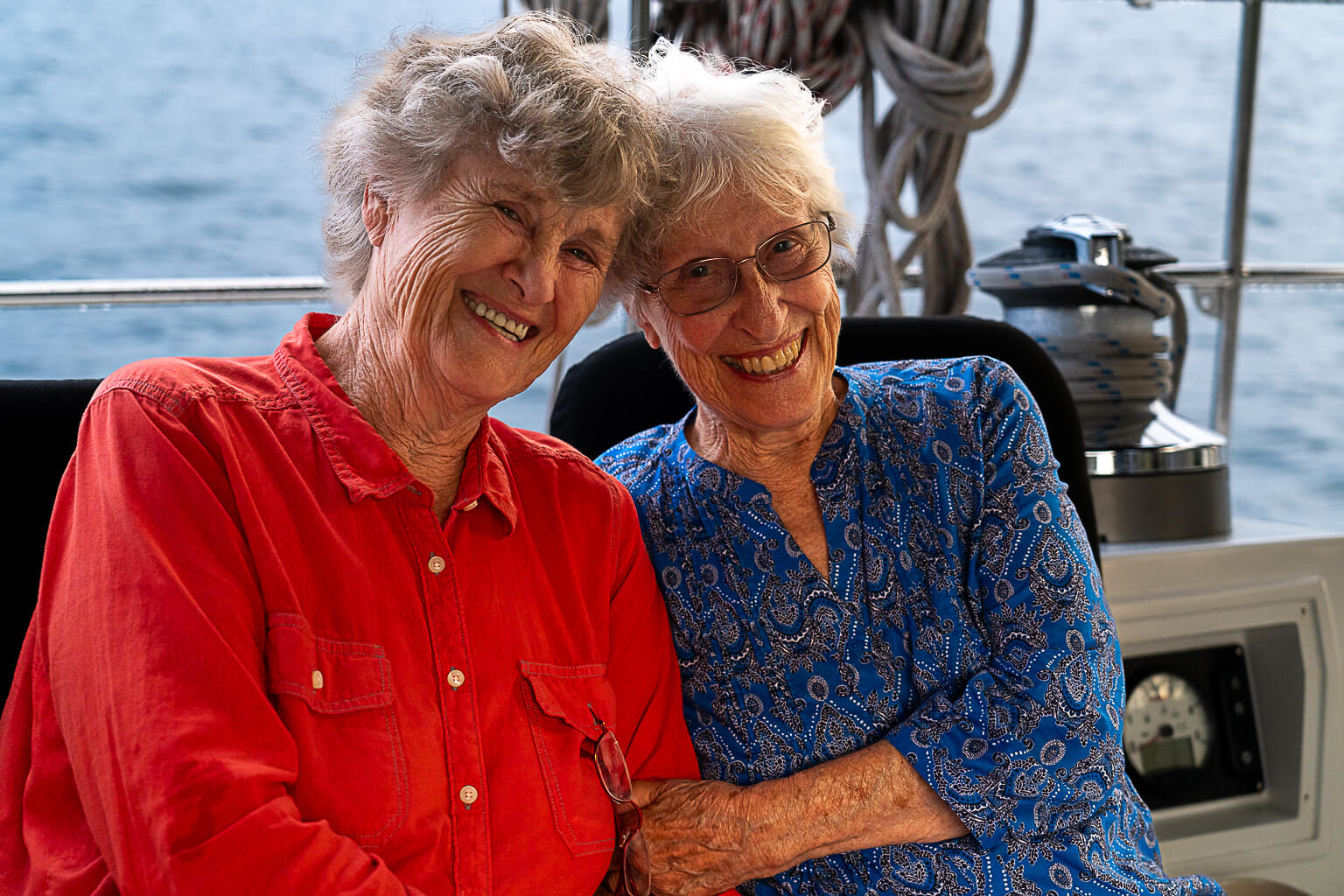
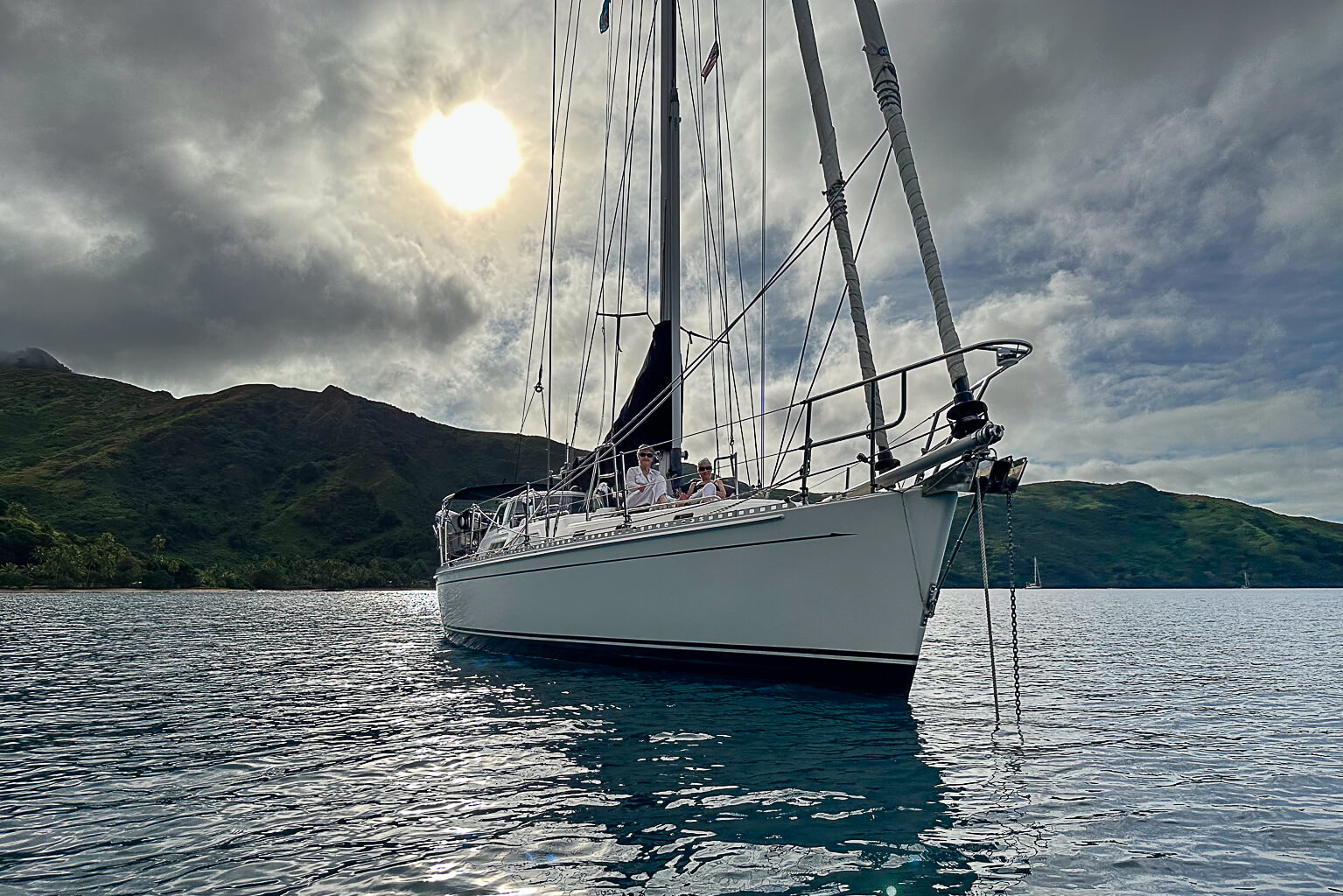

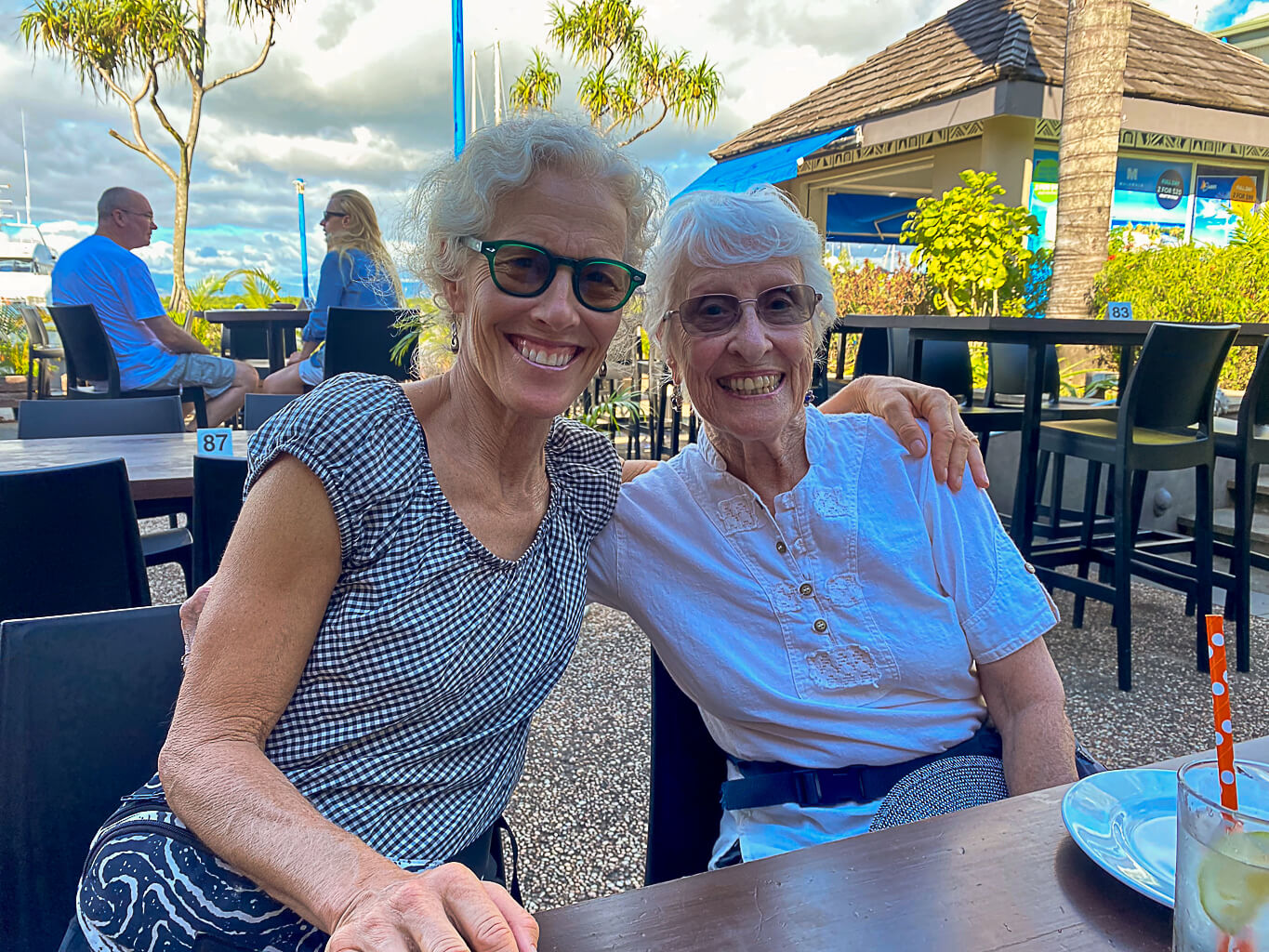
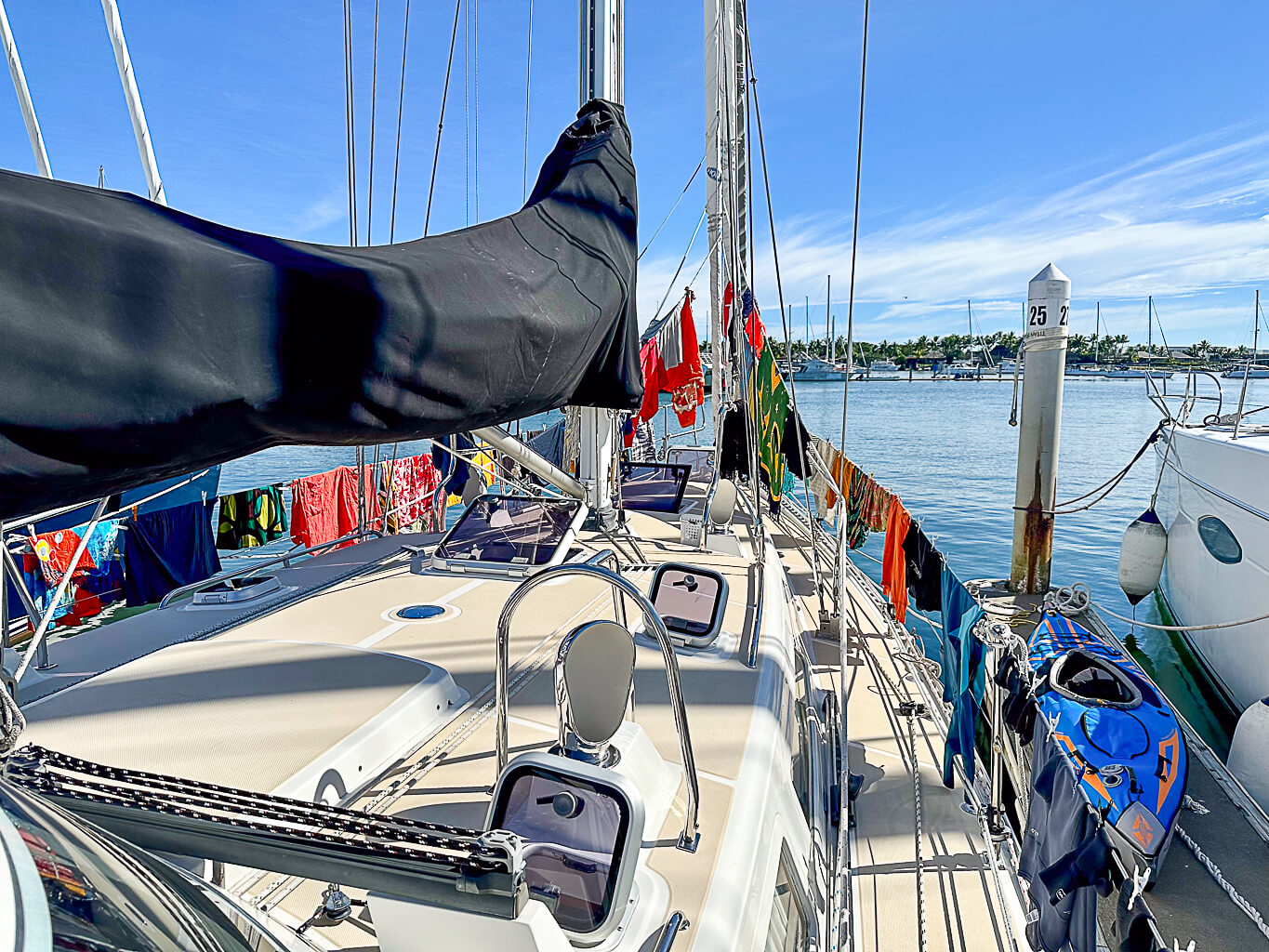
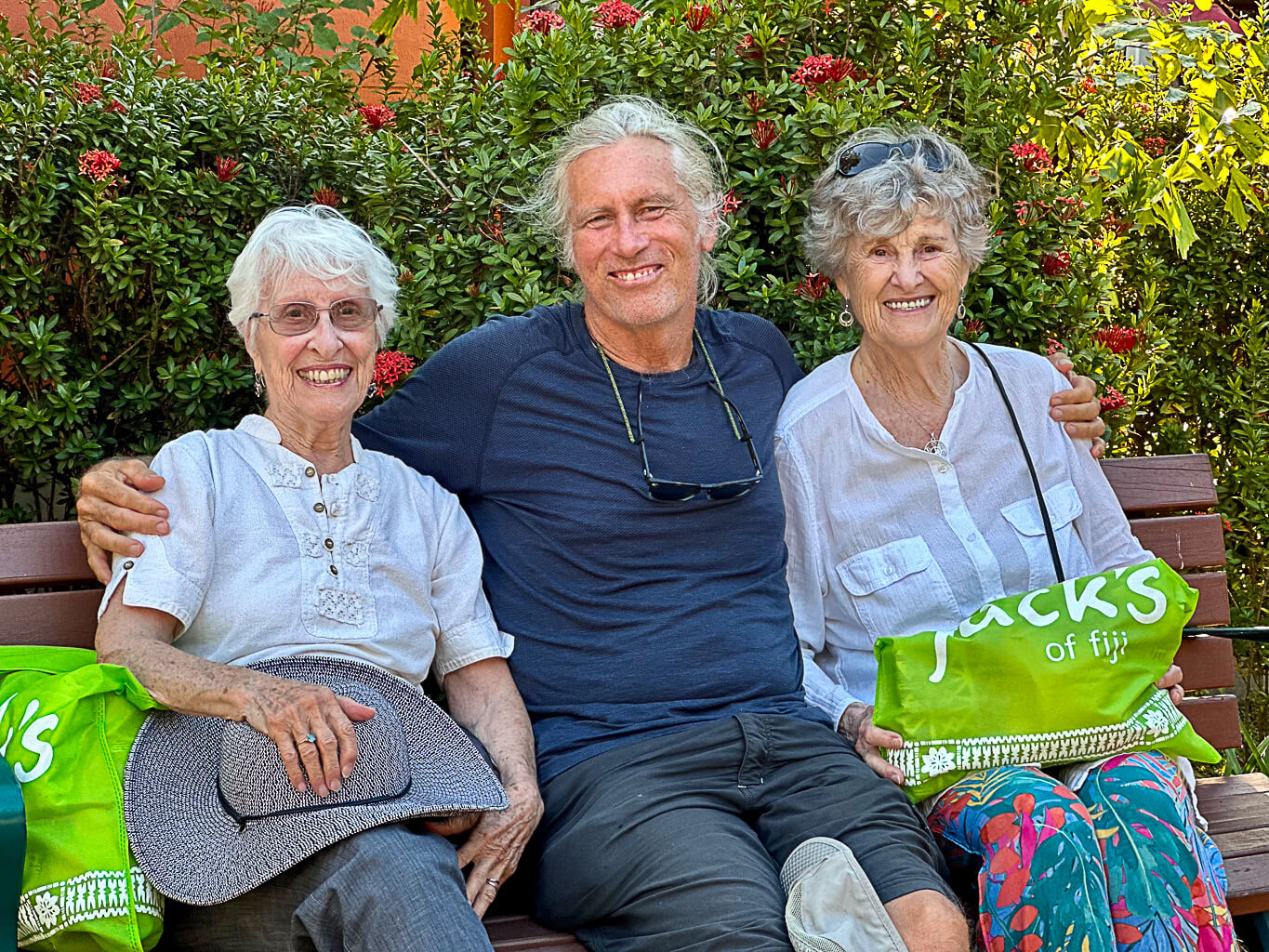

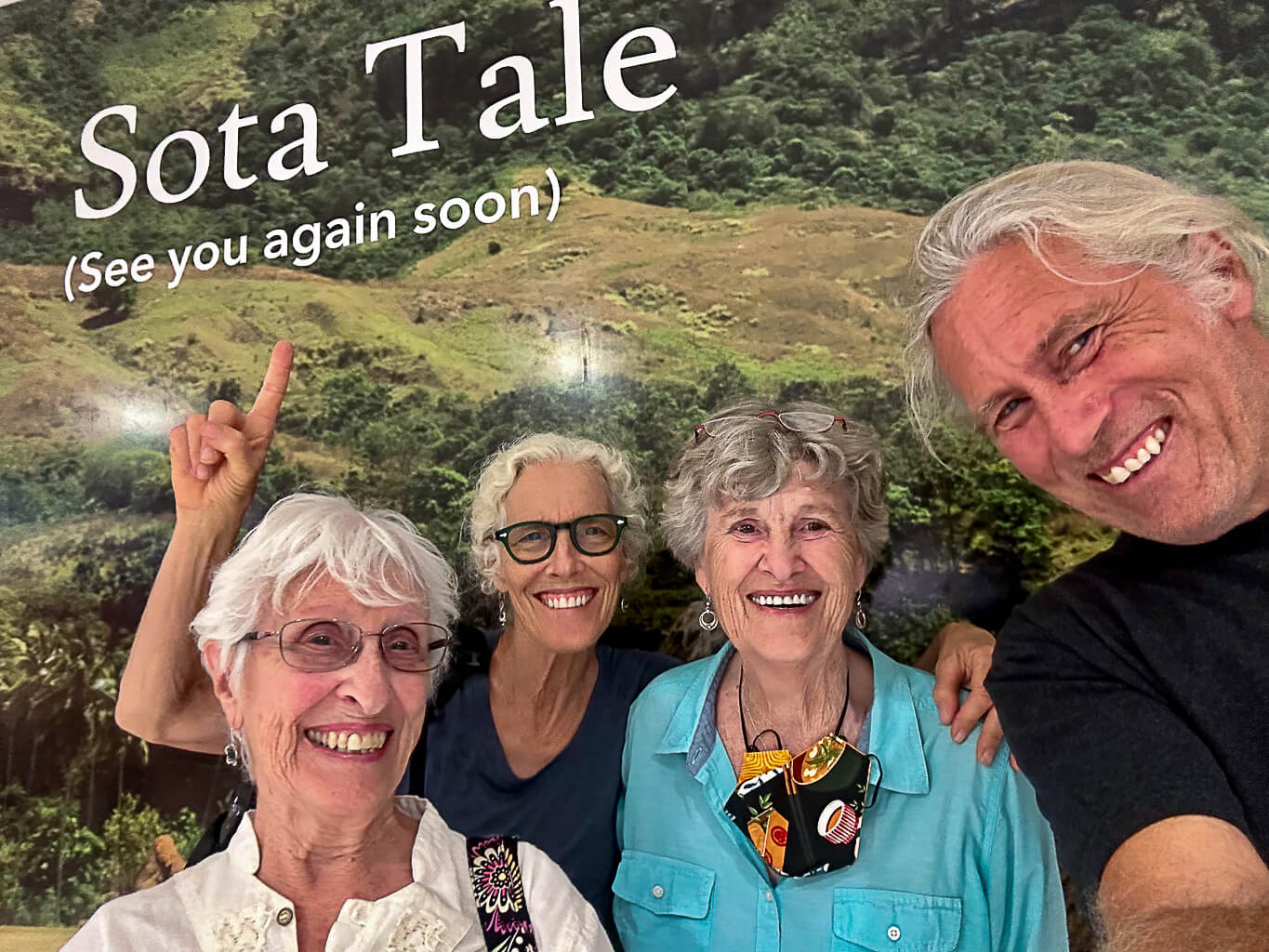
These Mama visits always leave me filled to the brim with what feels like elemental GOLD, but as we say our goodbyes, the fullness gives way quickly to a longing for more. Though the days are relatively few, they are packed with meaning: laughter, stories, music, belonging, acceptance … how would I resist this grasping? In the days following their departure, I am reminded that all the gifts of being in the graceful company of these two women are still right here with us. Vinaka vakalevu. What treasures our Mamas are! Till the next time, you two … Sota Tale! ~DS

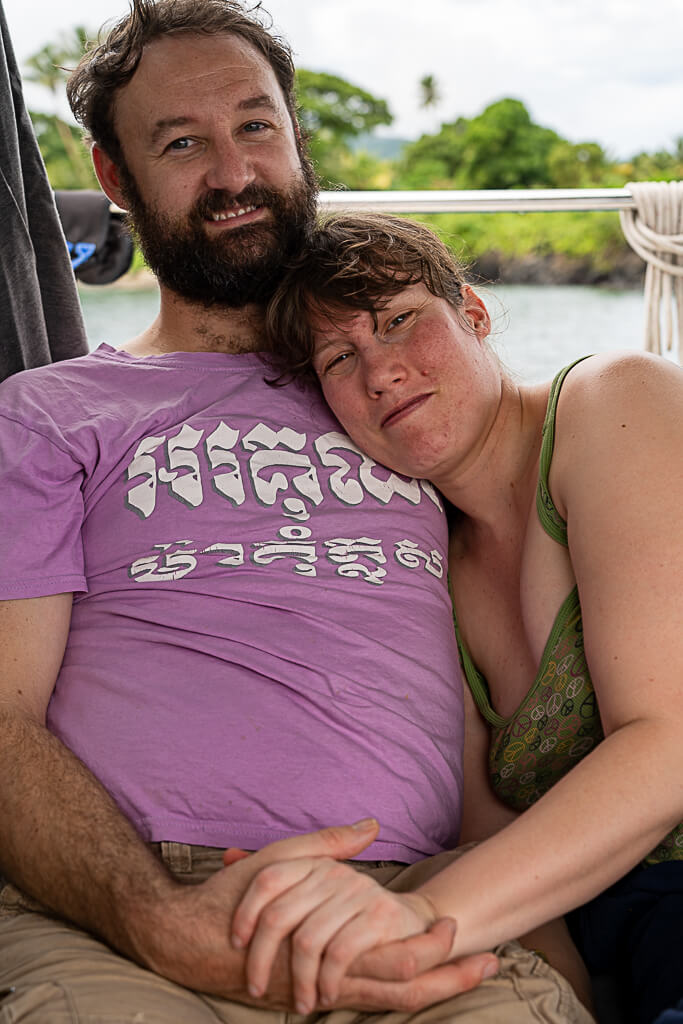

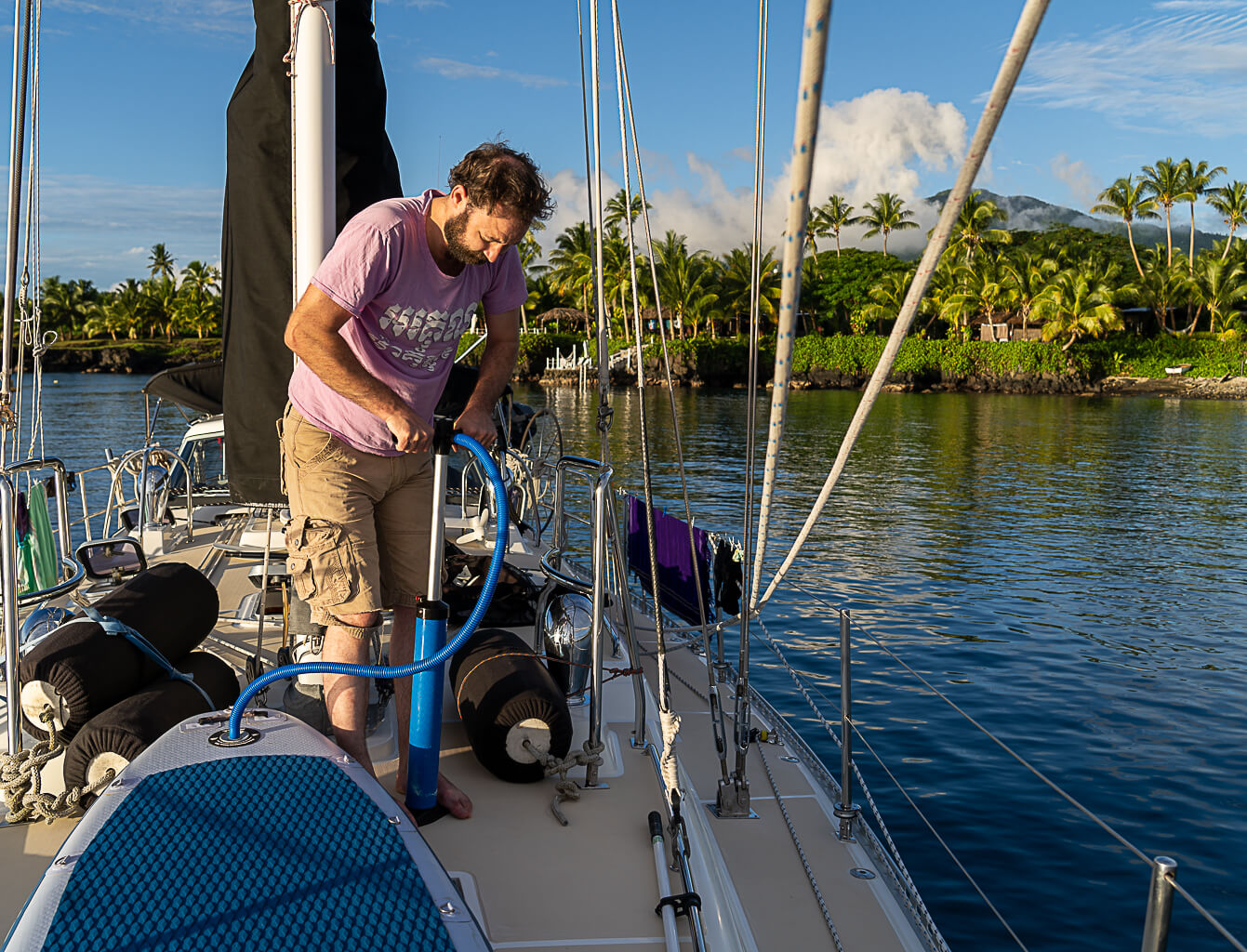

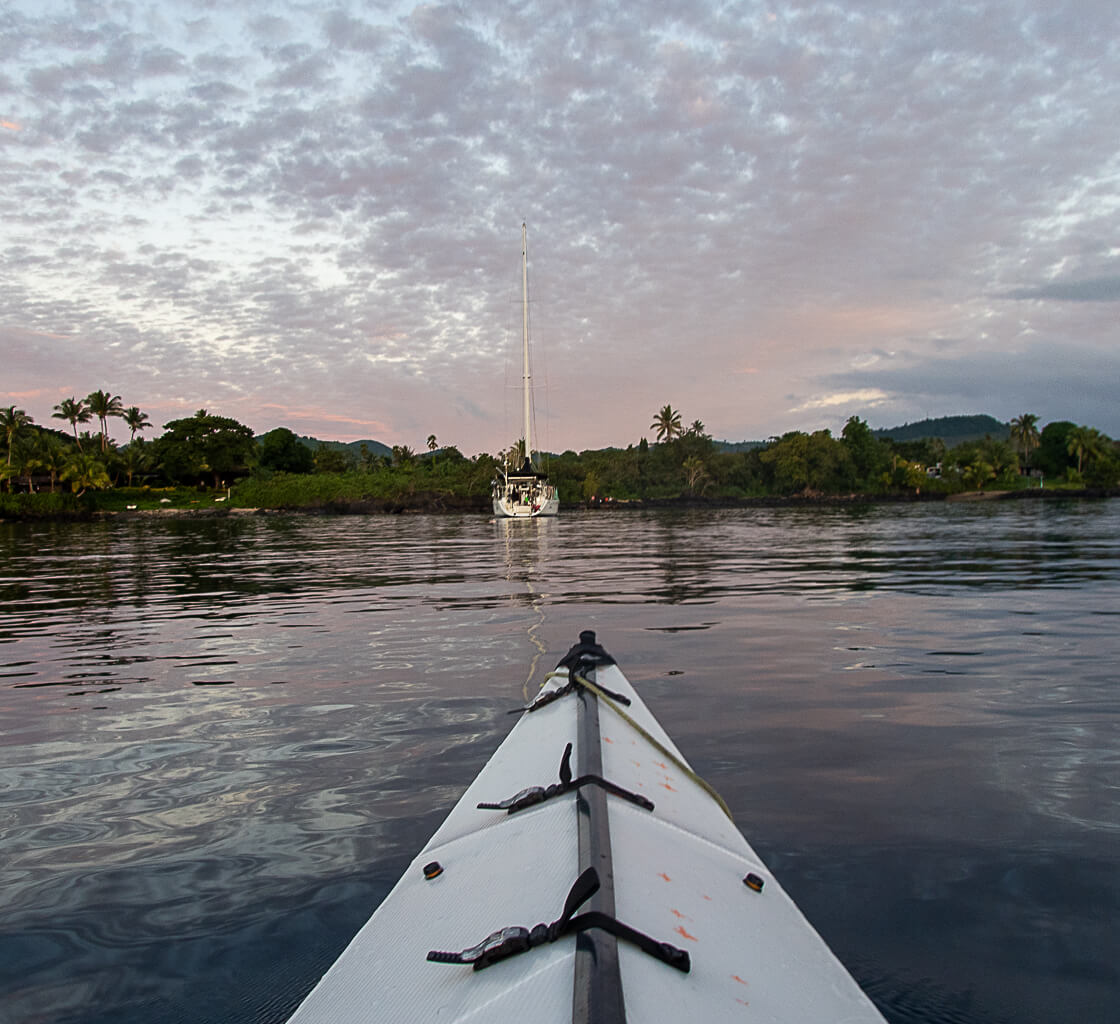


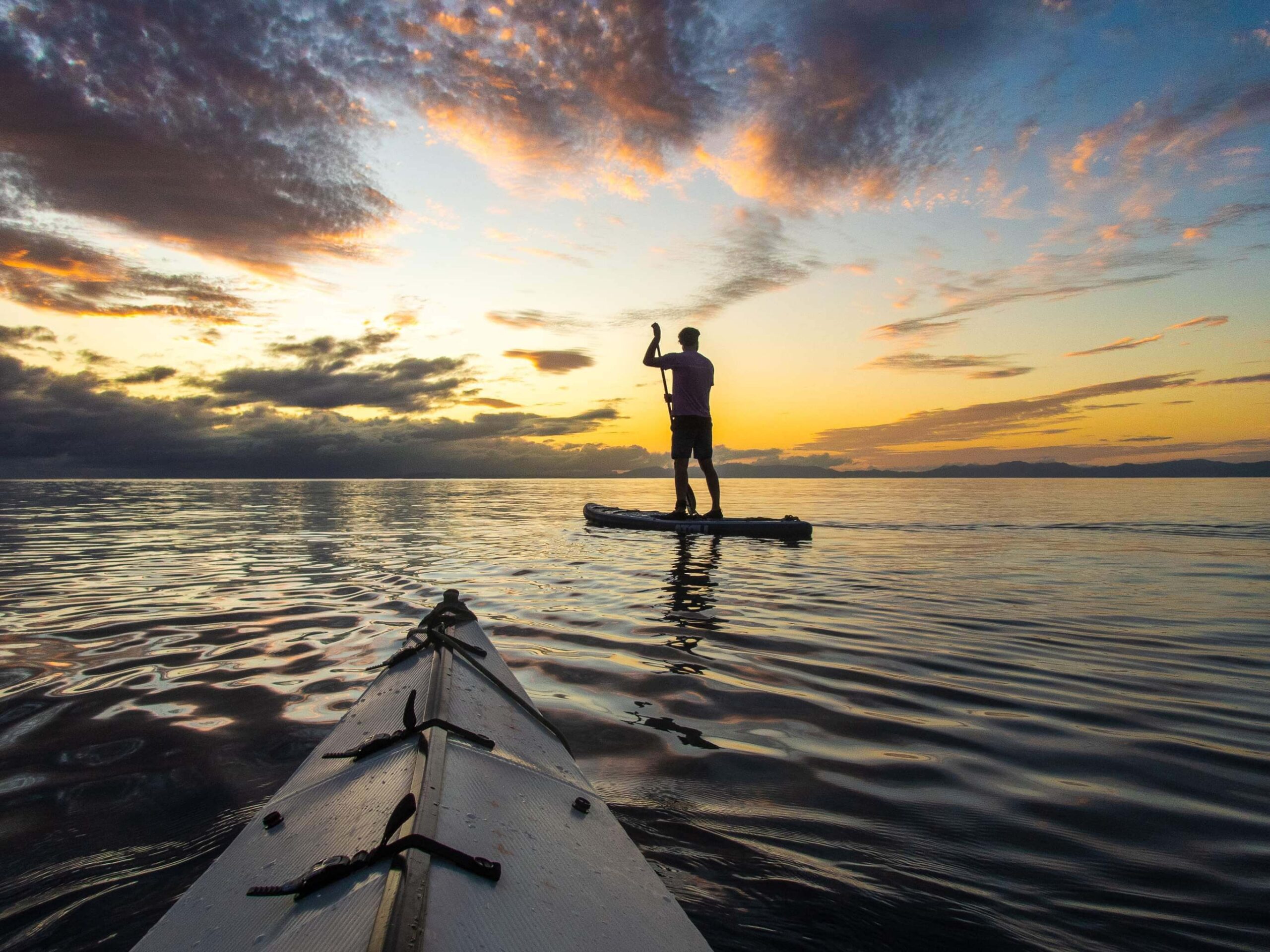

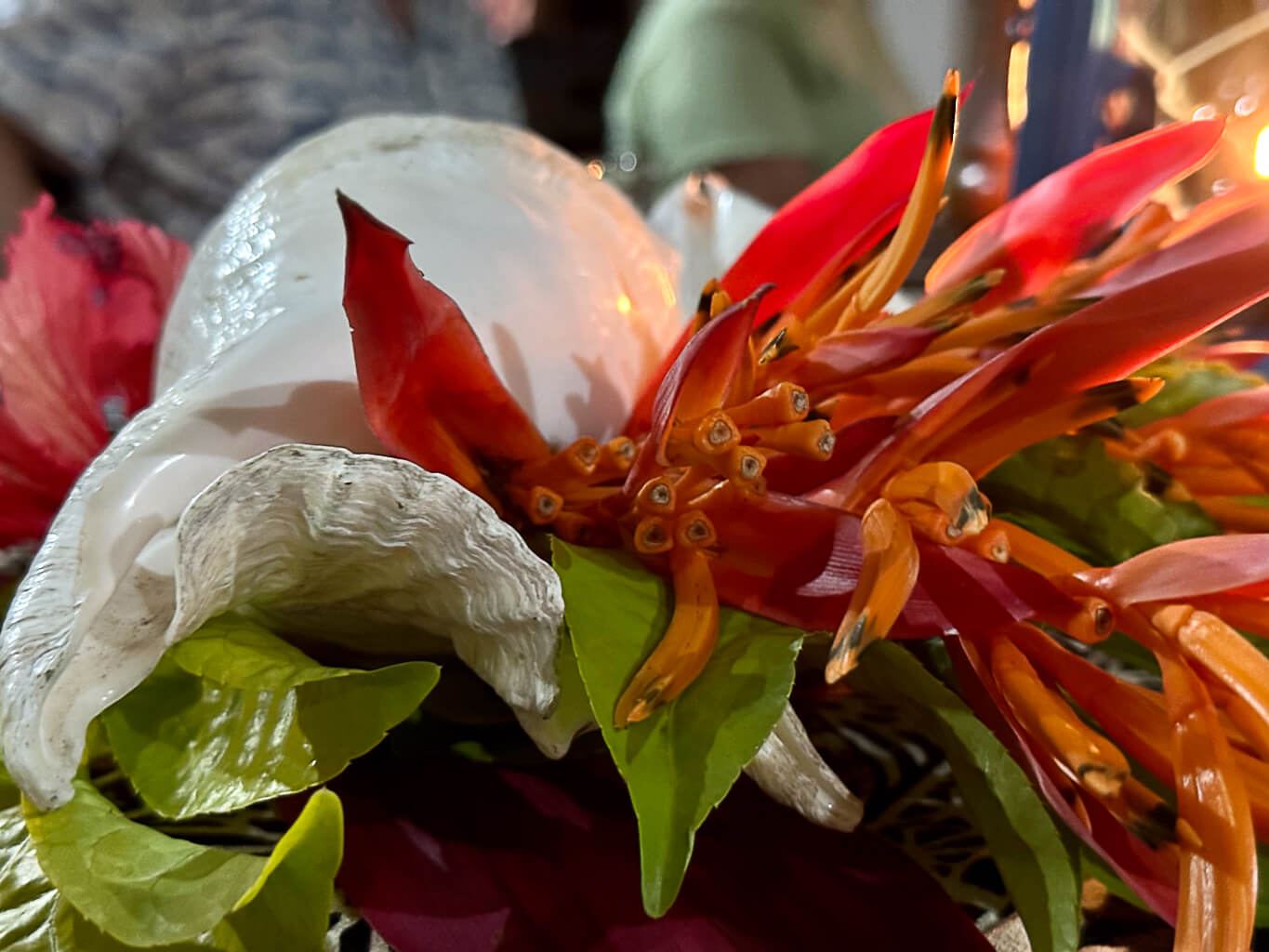
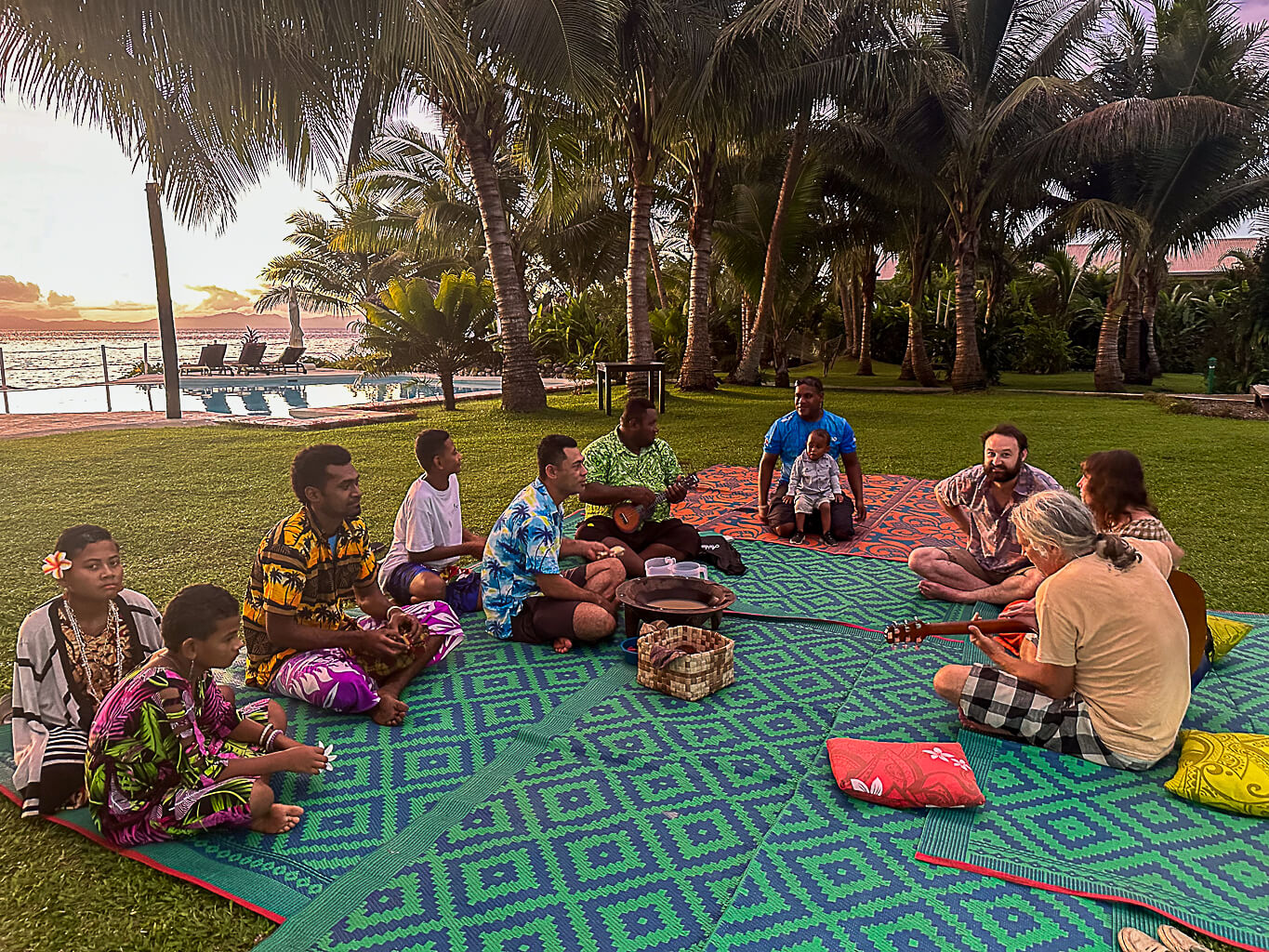


In the bar at Paradise resort, there’s an historically dubious caption pasted on a black and white picture of a dreadlocked Fijian, claiming to be of Udre Udre, famous for eating 872 or 999 people, which raises the question of who’s keeping those records? Seems a bit incredible until google informs you that the average American will consume 7,000 animals in a lifetime (vegetarianism anyone?). ~MS
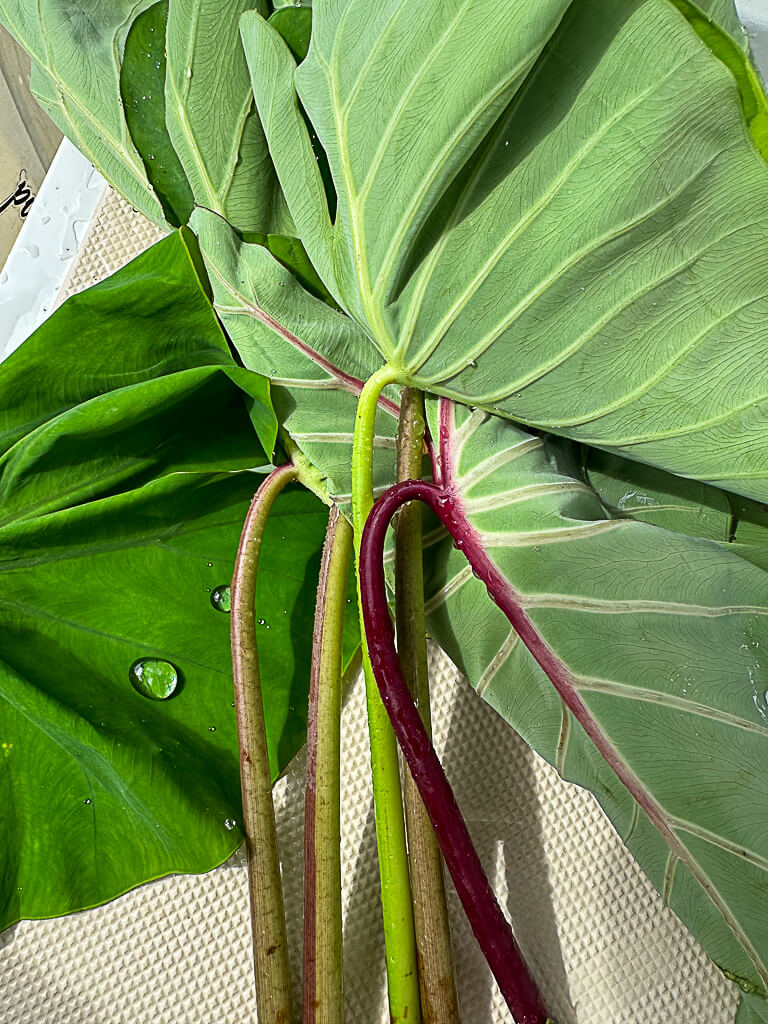

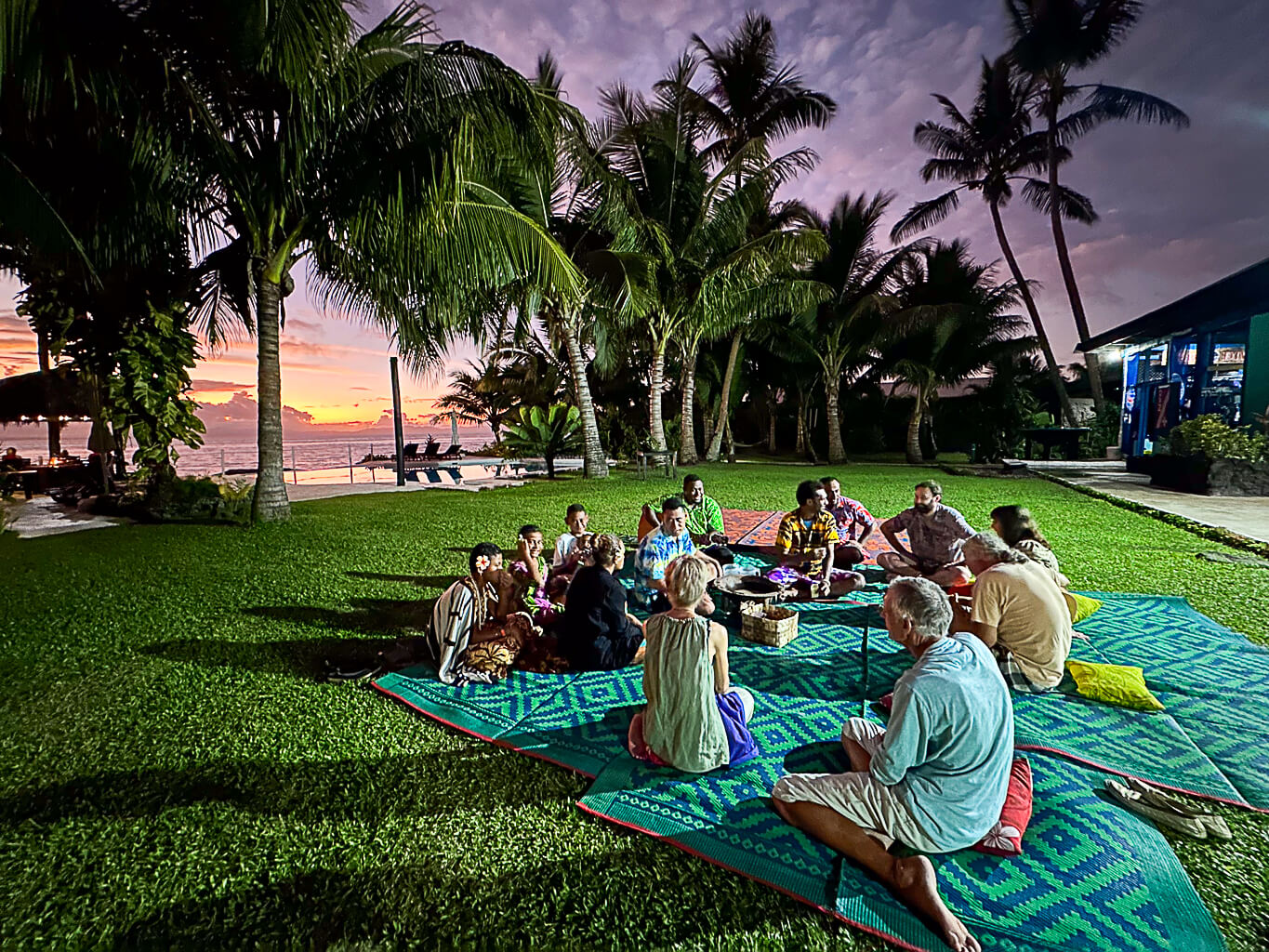

“Fiji night” kava and a guitar missing the D string. Traditional dances offered by the employees (which they must learn as kids) casual enough to feel authentic. We share the end of the table with doctors and nurses from San Diego who come to the island each year to volunteer their services for local women, long days providing surgeries that otherwise require a long trip to the mainland. Paradise is their reward at the end of a non-stop week. ~MS
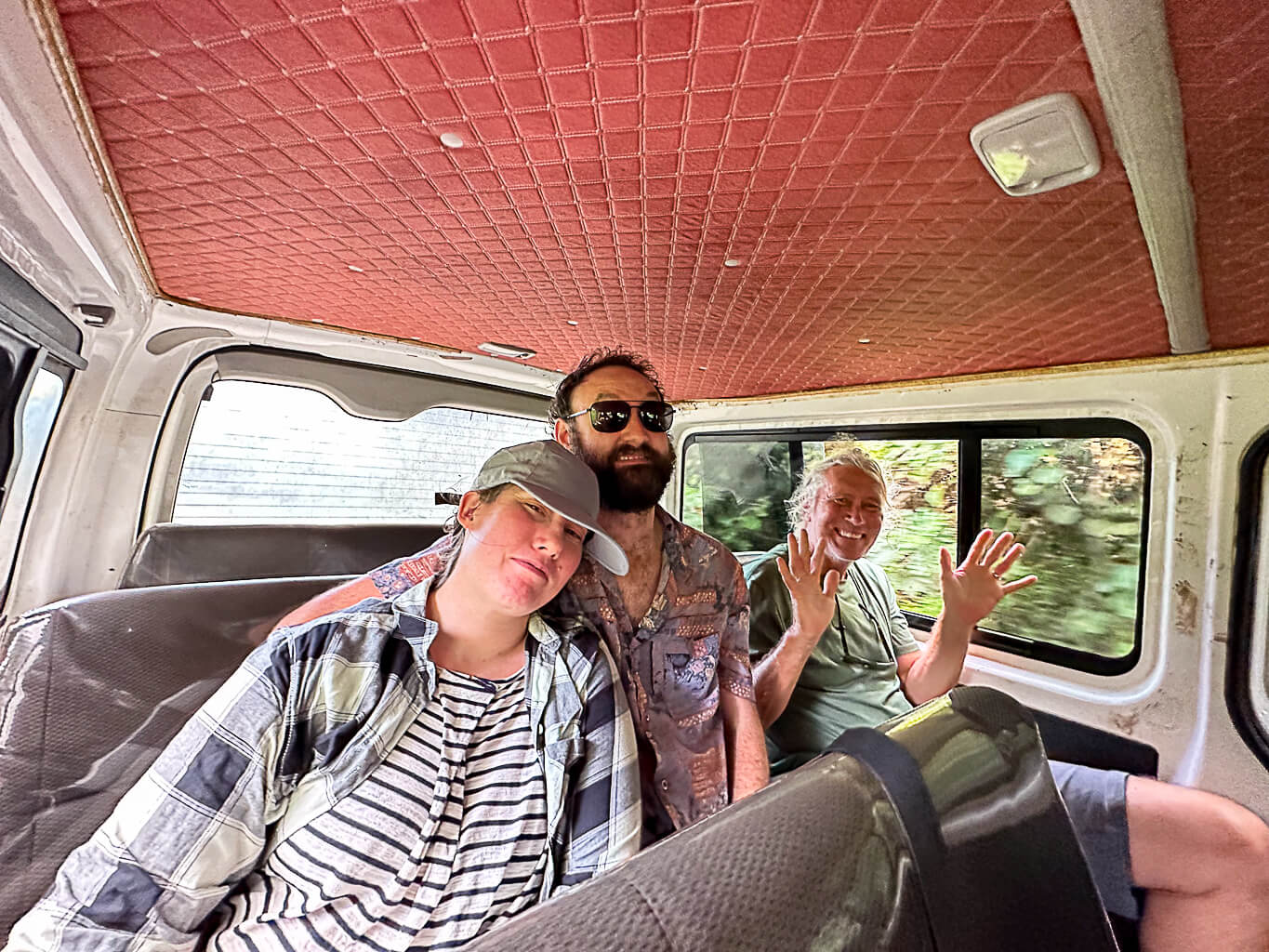
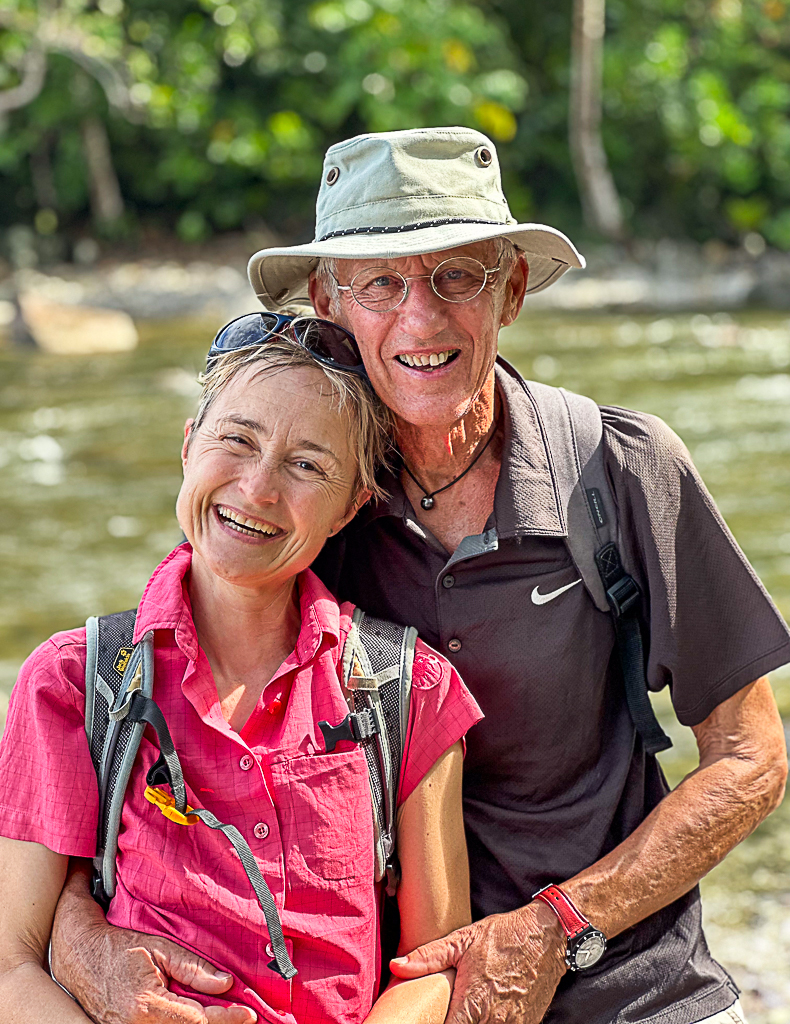
Liam remarked on the mighty trees that line the long ride down the island of Taveuni, arched over the battered road, lush and green. Glimpses of the blue tropical water in the Somosomo Strait between Vanua Levu and Fiji’s rainiest island. Here’s where the 180th meridian plays funny games with our navigation programs, and astronomically speaking the date should properly change. The dive resort at the end of Taveuni, calls itself Paradise. “Welcome to Paradise” probably gets old for the staff. Or maybe not. Green vines with blue flowers tumble down black volcanic rocks and red dirt off shore. After school, kids leap into the gentle blue surge in the glowing warm sunset. Tucked under the dock a frog fish holds perfectly still, out by the yellow can bouy, blue ribbon eels poke their heads out of the sand, waving back an forth with as must bluster as they can muster. ~MS

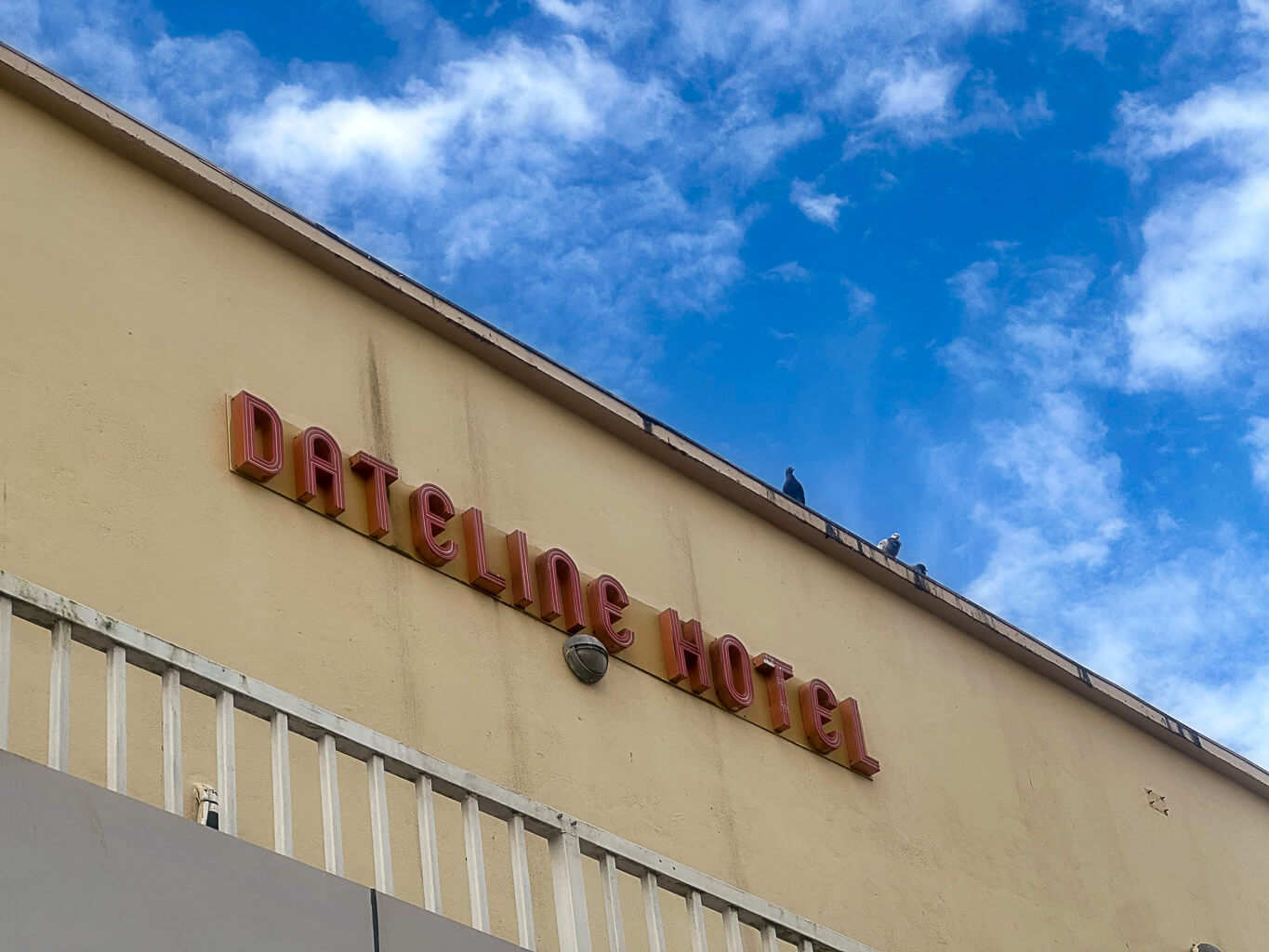

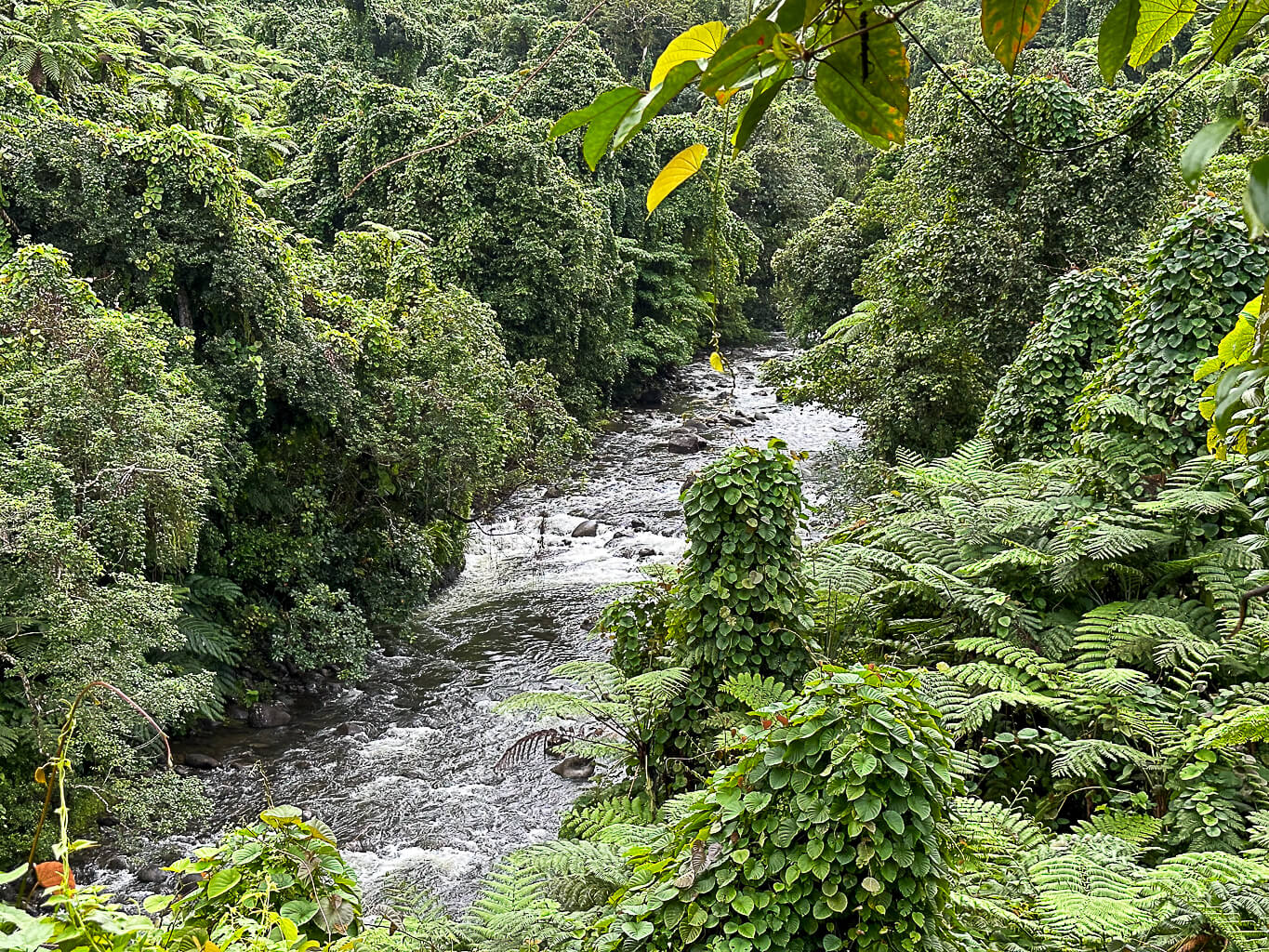

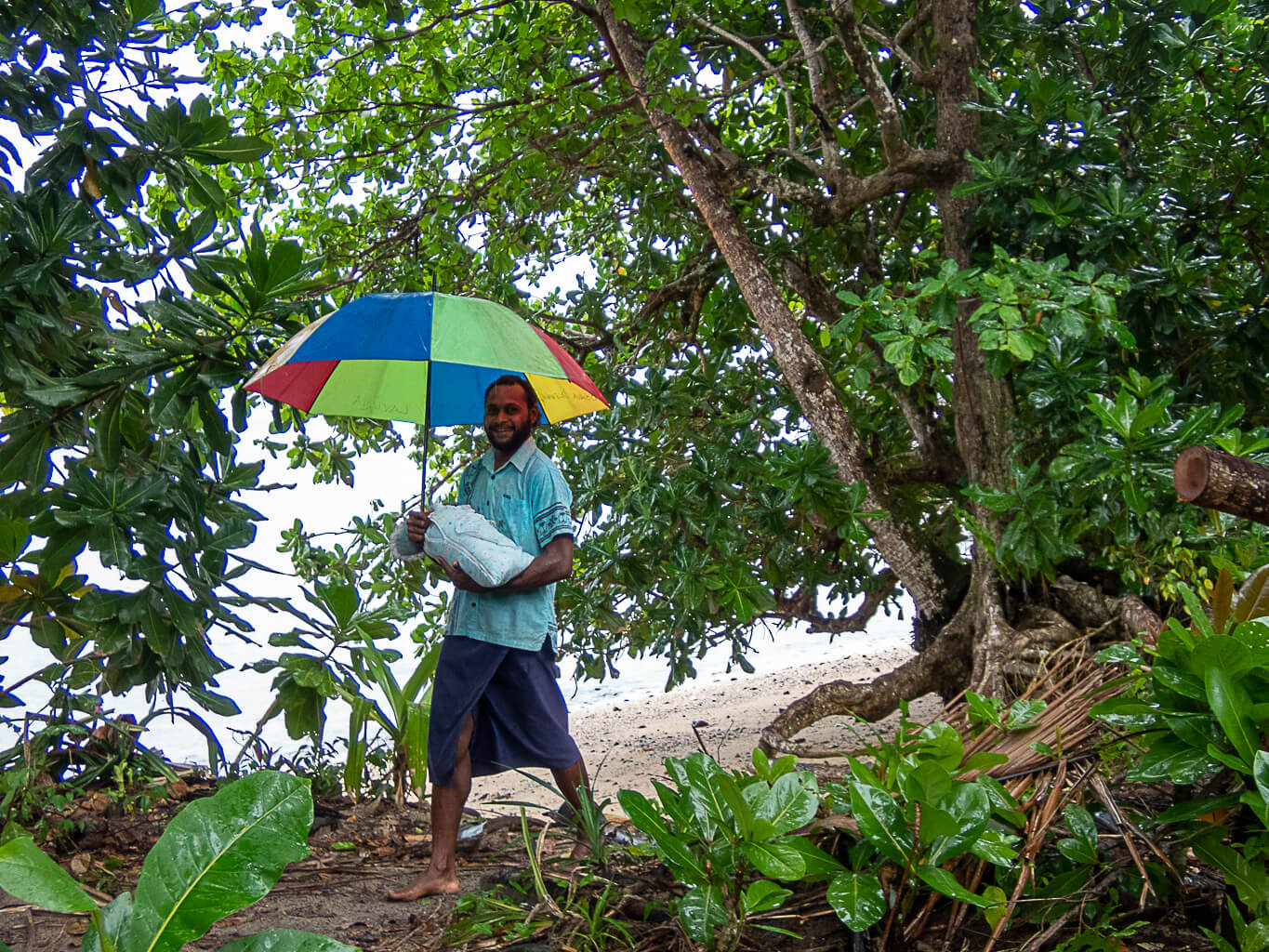
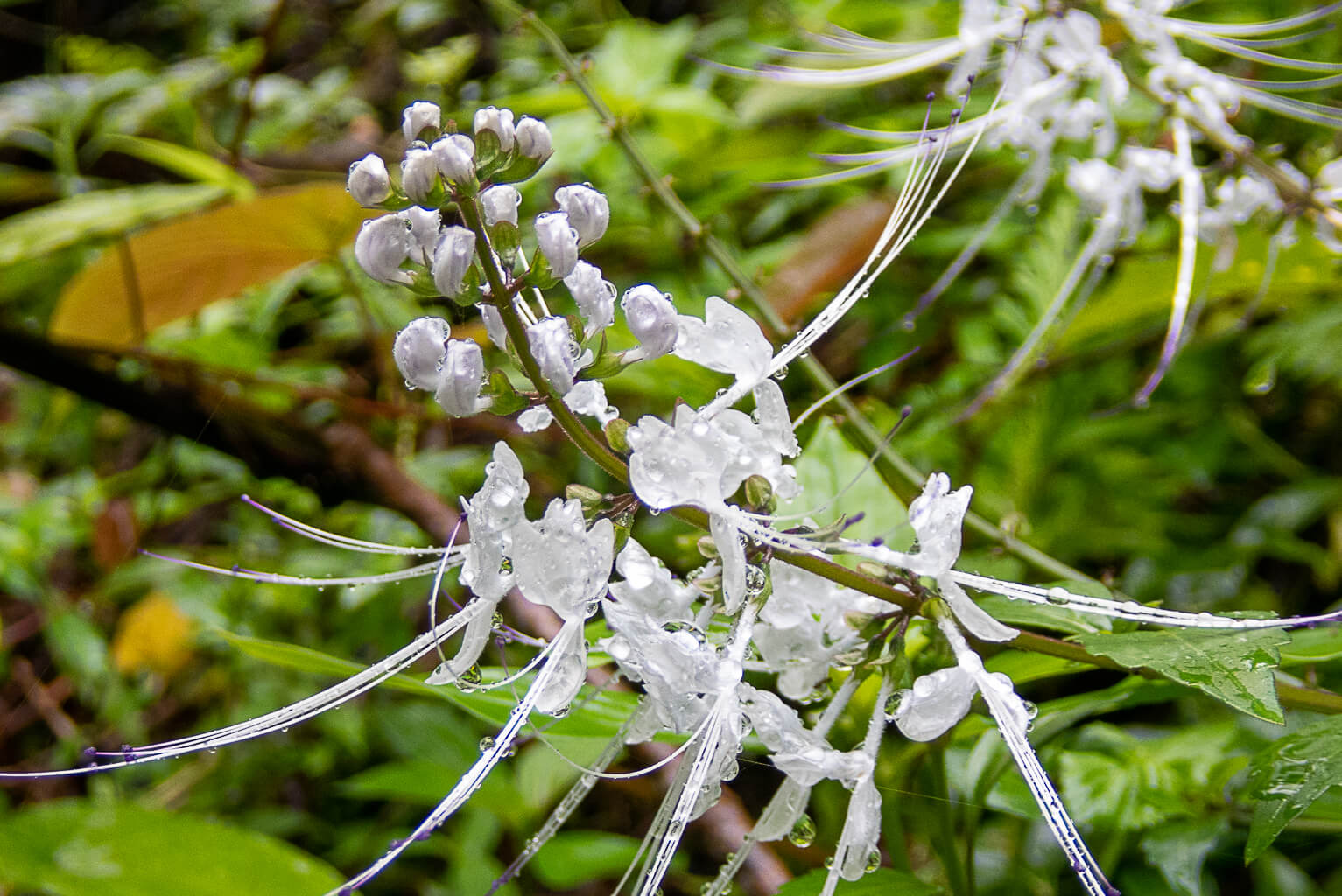
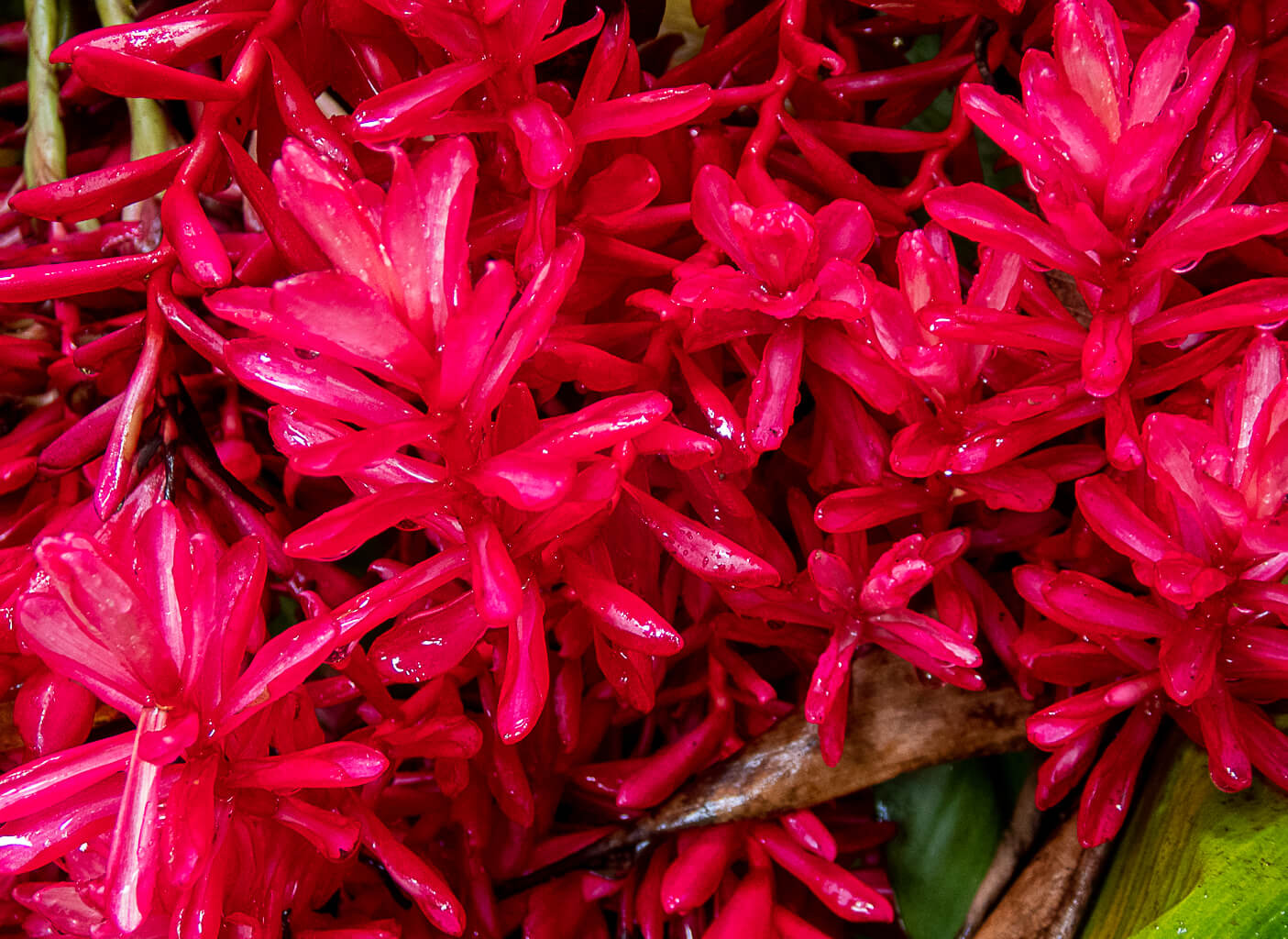
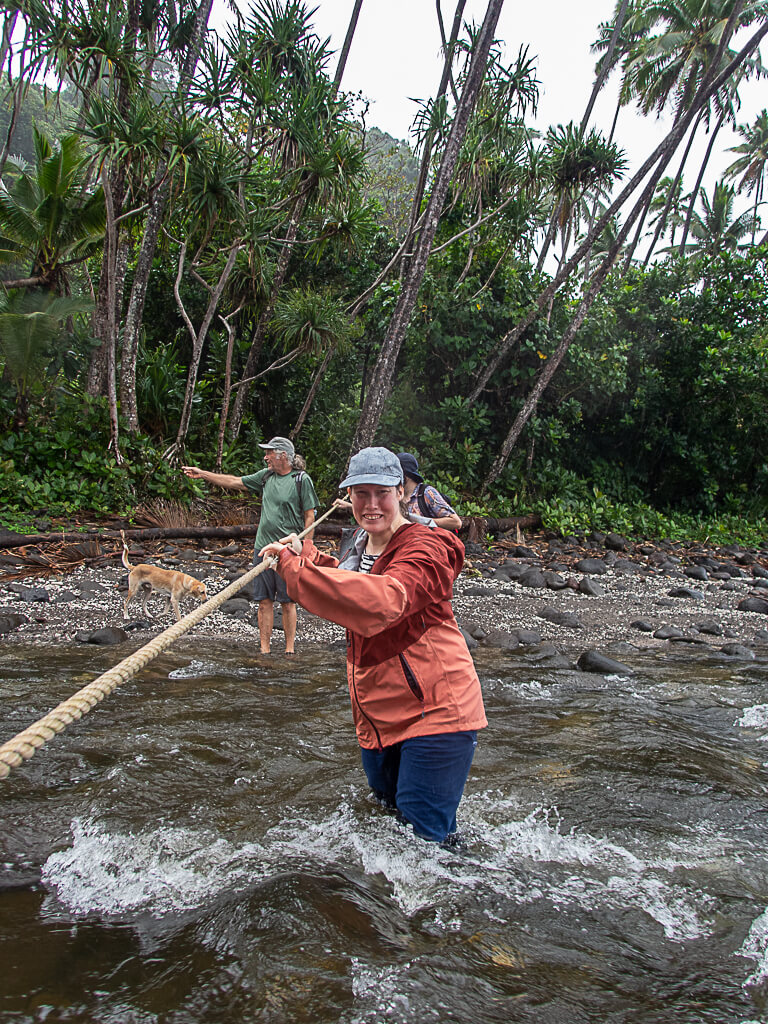
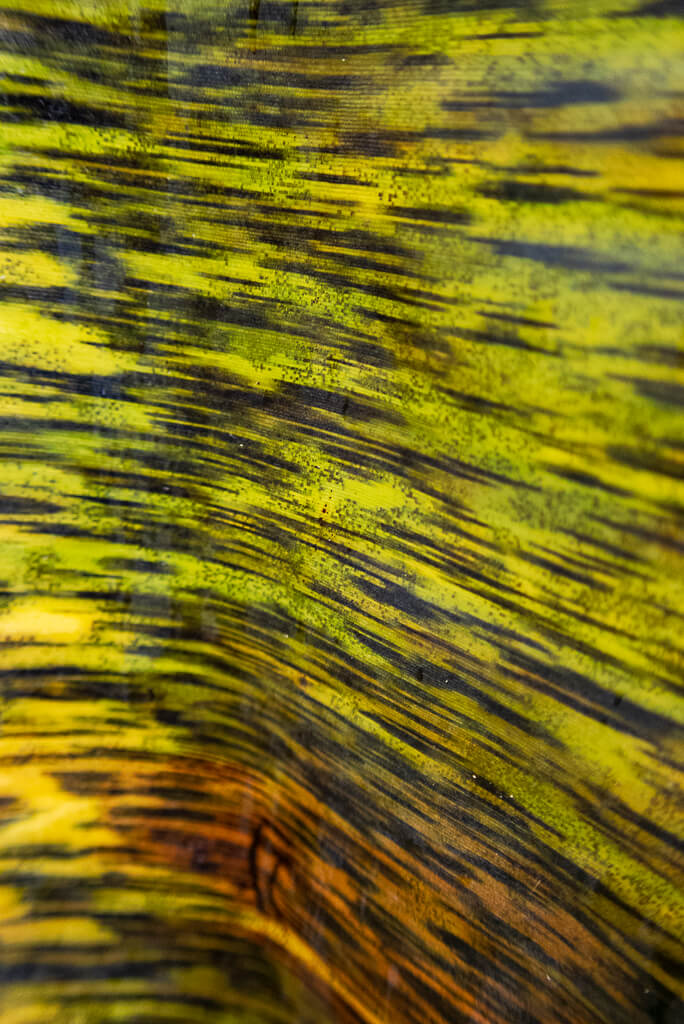

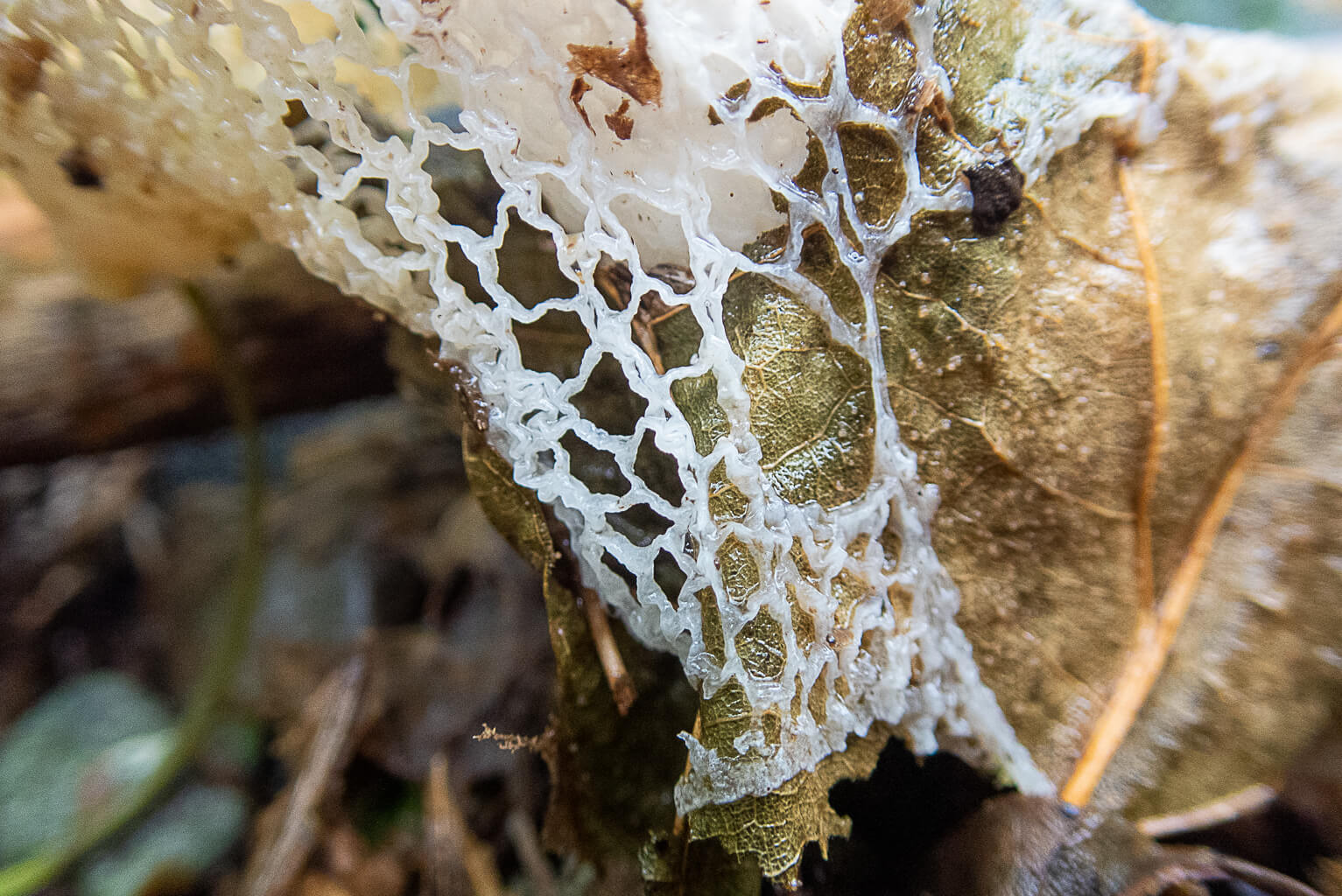
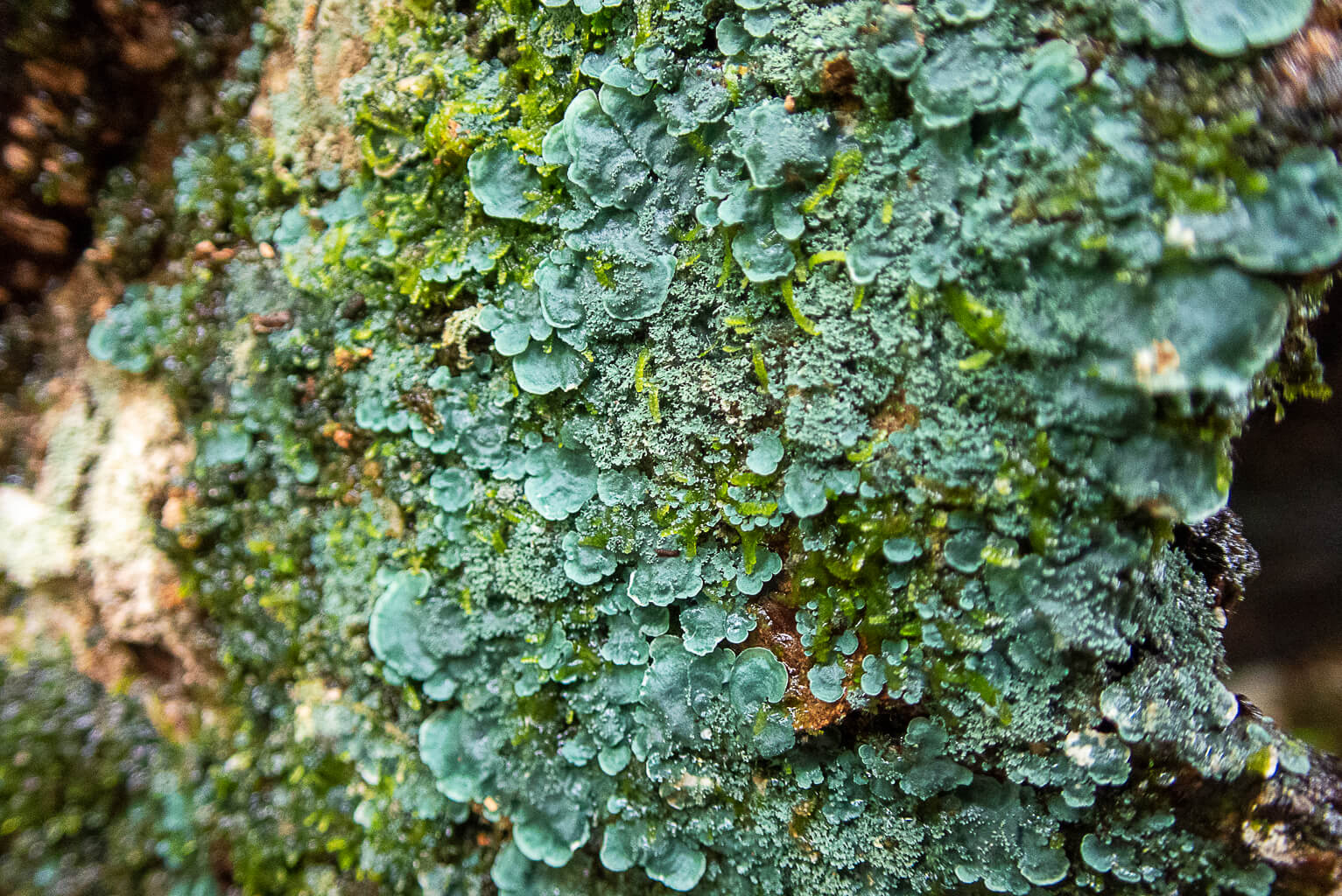

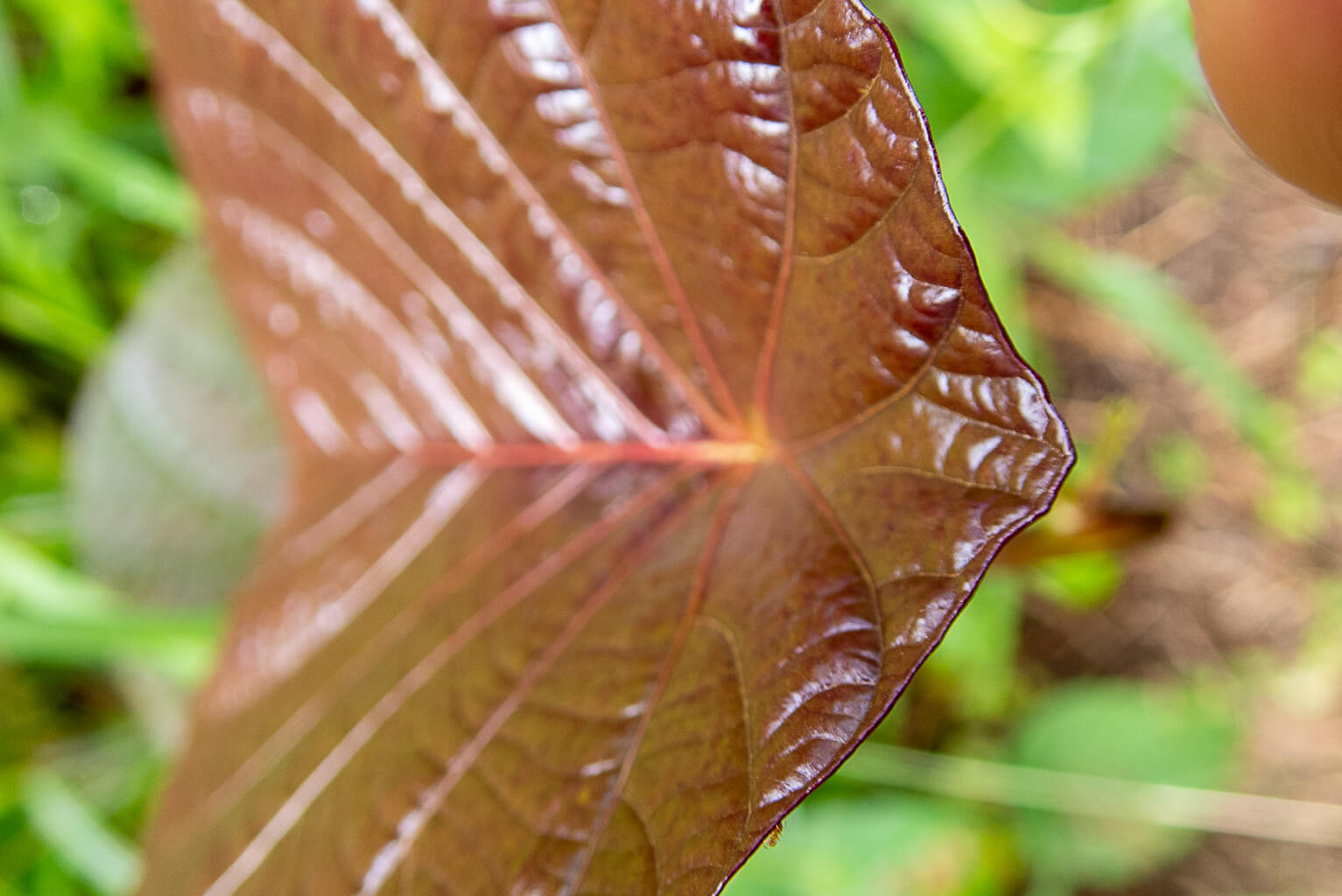
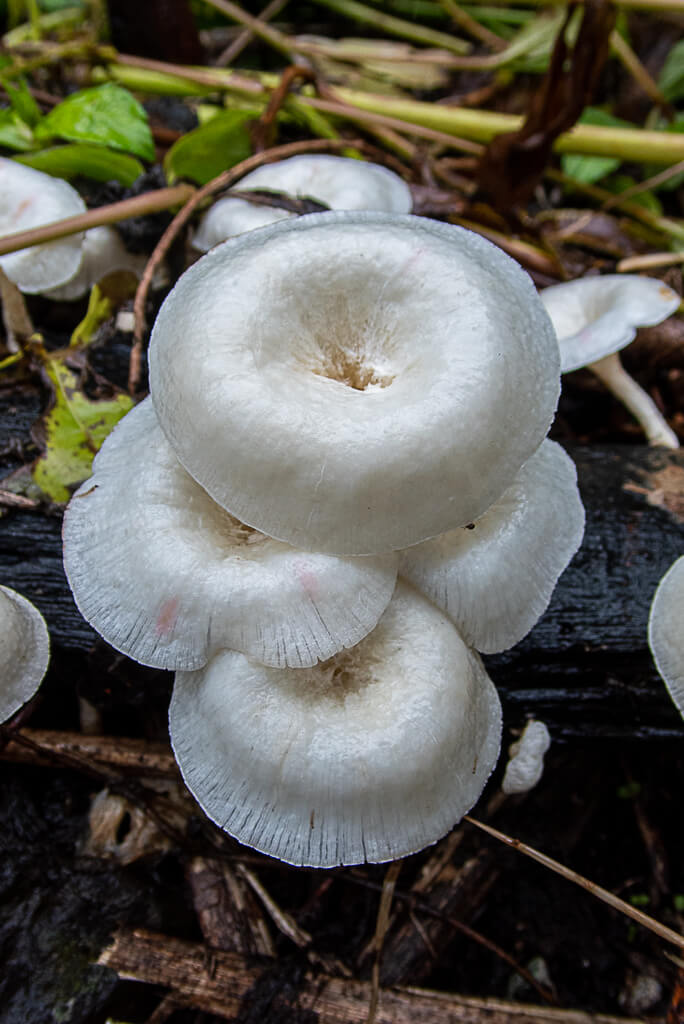
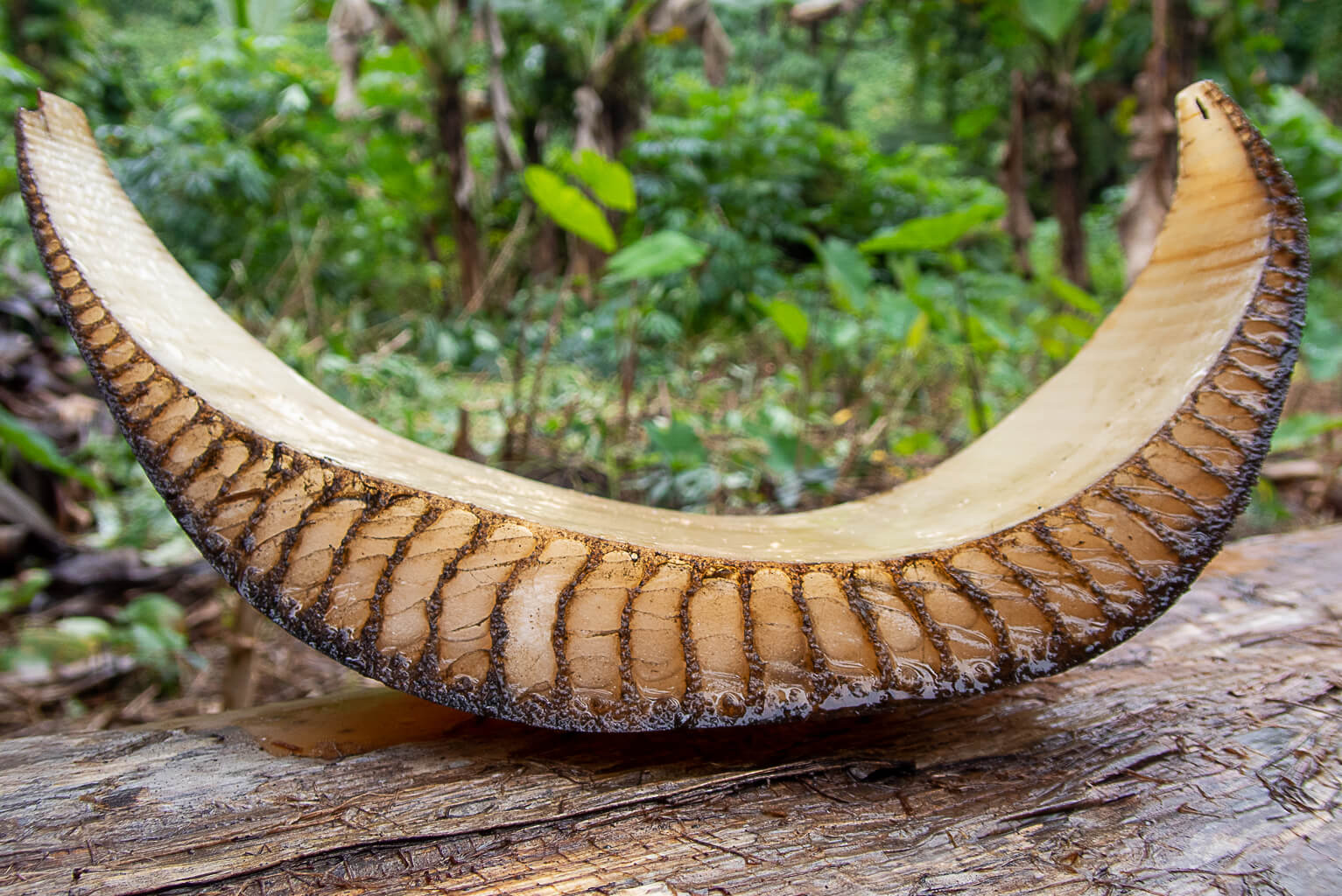

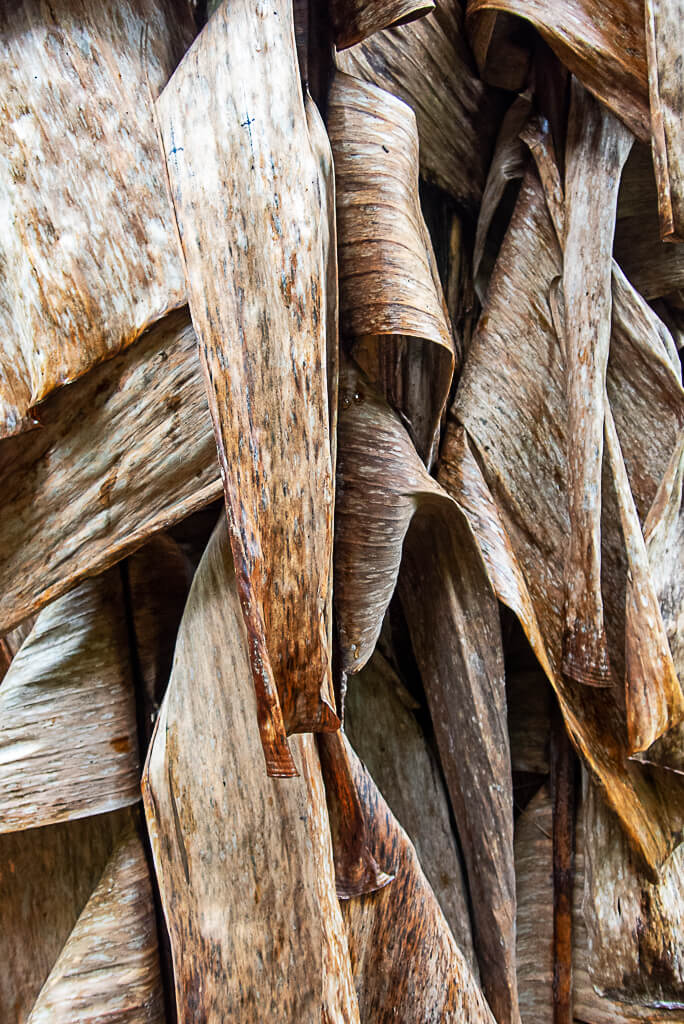
A windy Lavena coastal walk, winding up the luxuriant Wainibau valley to the thundering falls. The usual swim against the current in warm fresh water, clinging to the cliff walls between dashes across the torrent. Liam and Diana make it the whole way. A 70 year old Fijian guide urges his charges on, climbs the cliff for a daring dive he must have made since a child. ~MS
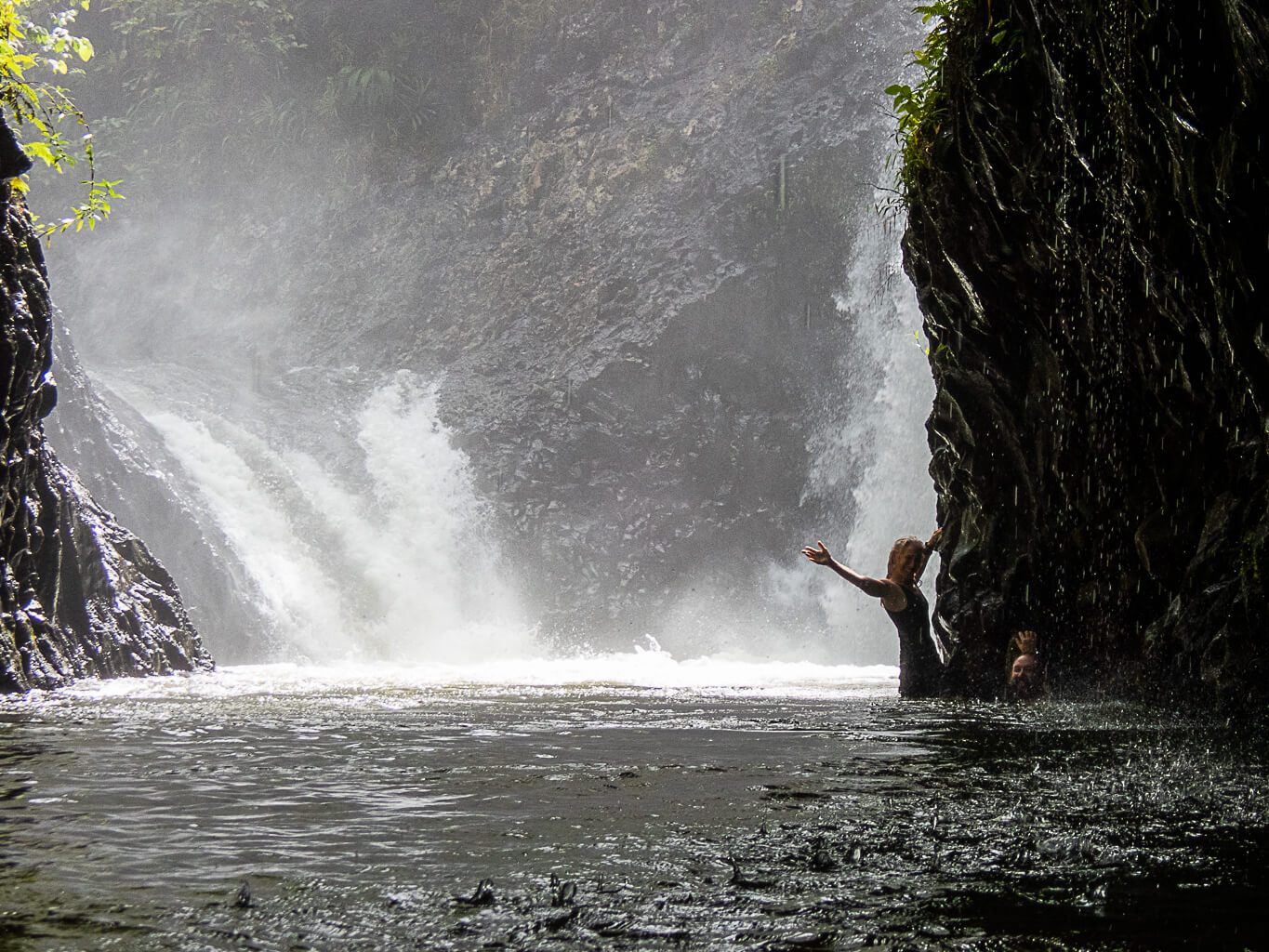
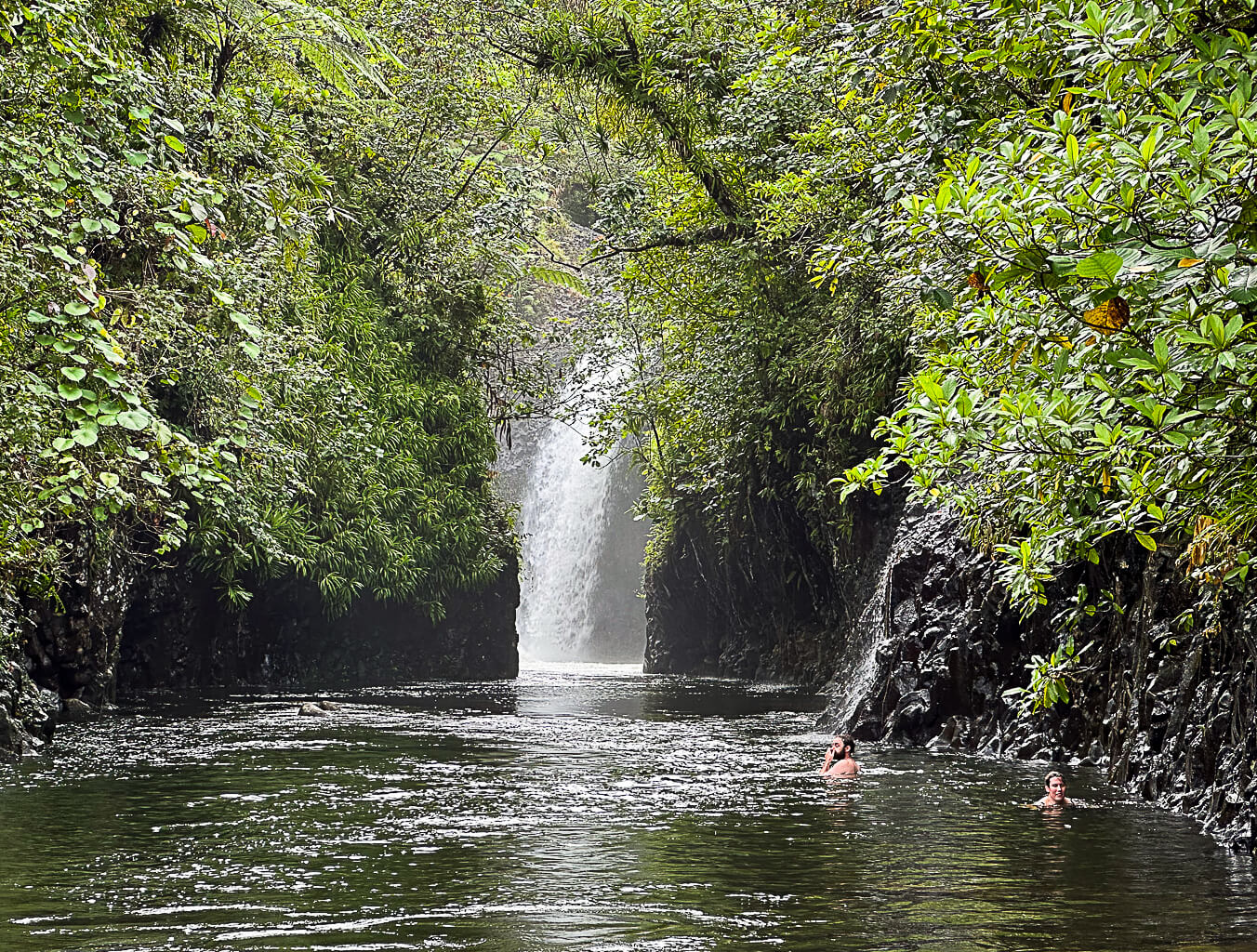
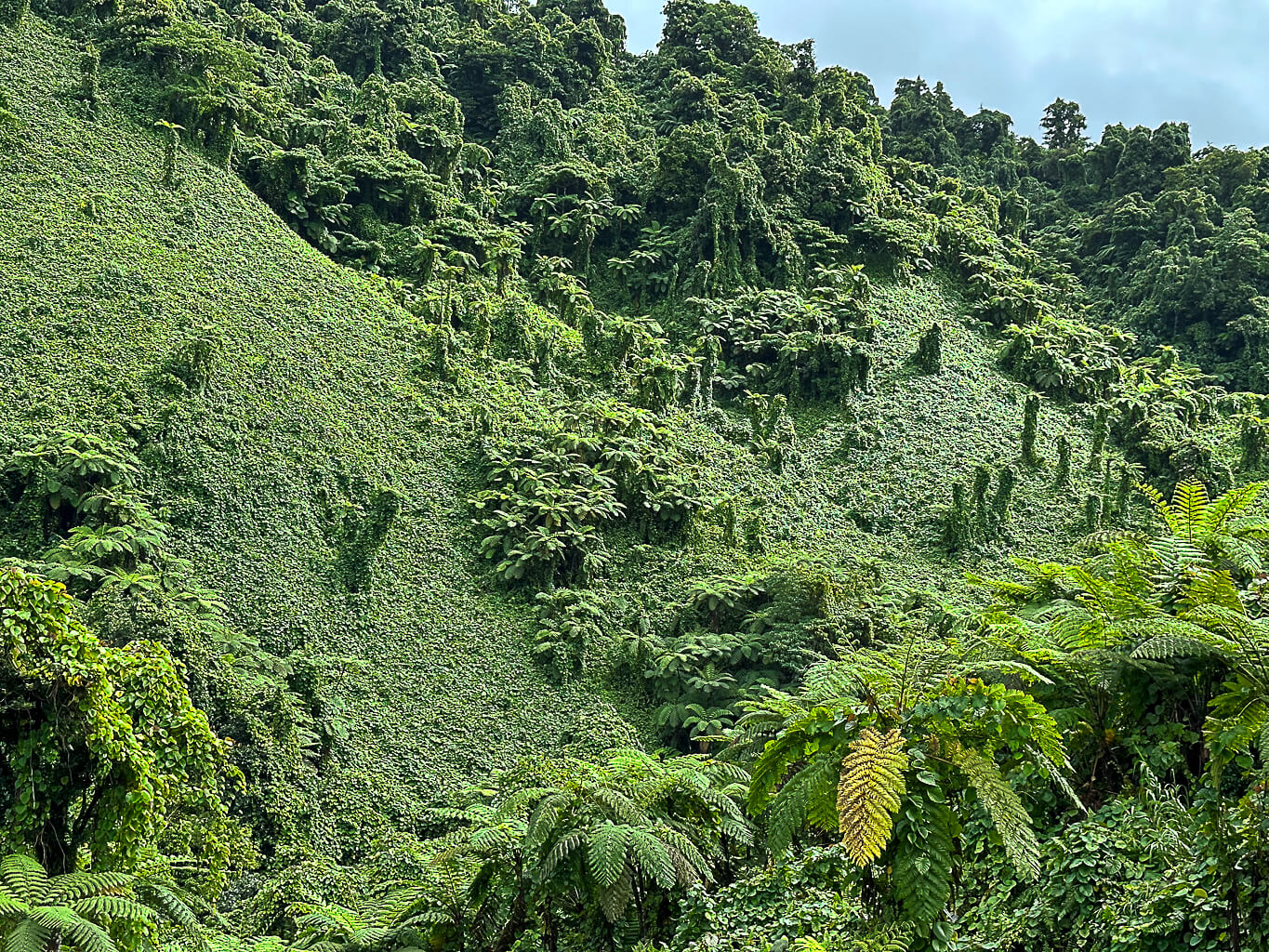



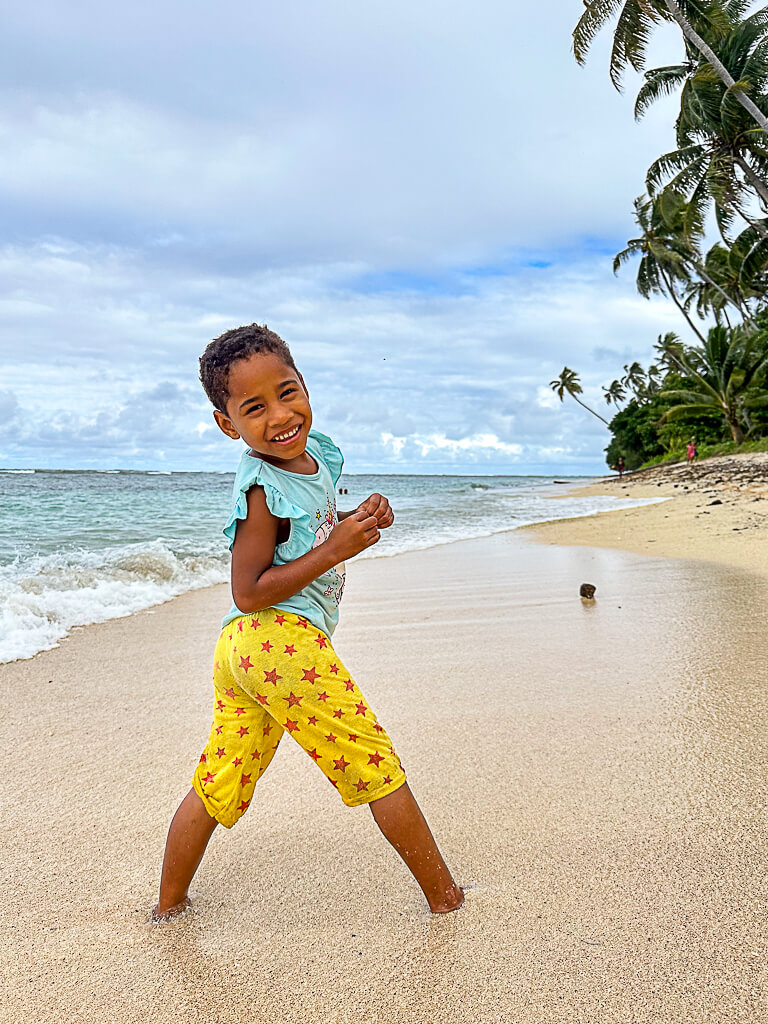
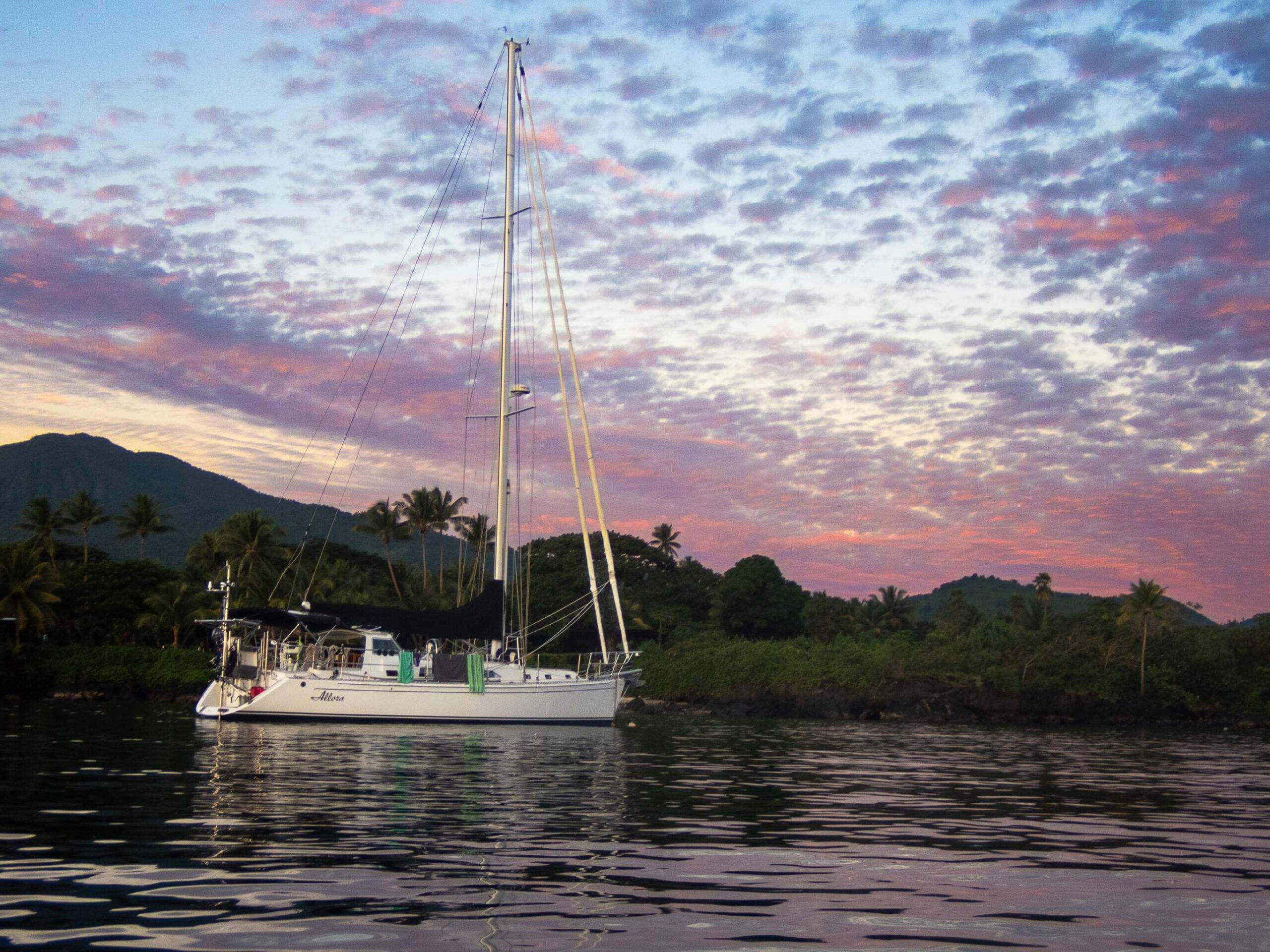
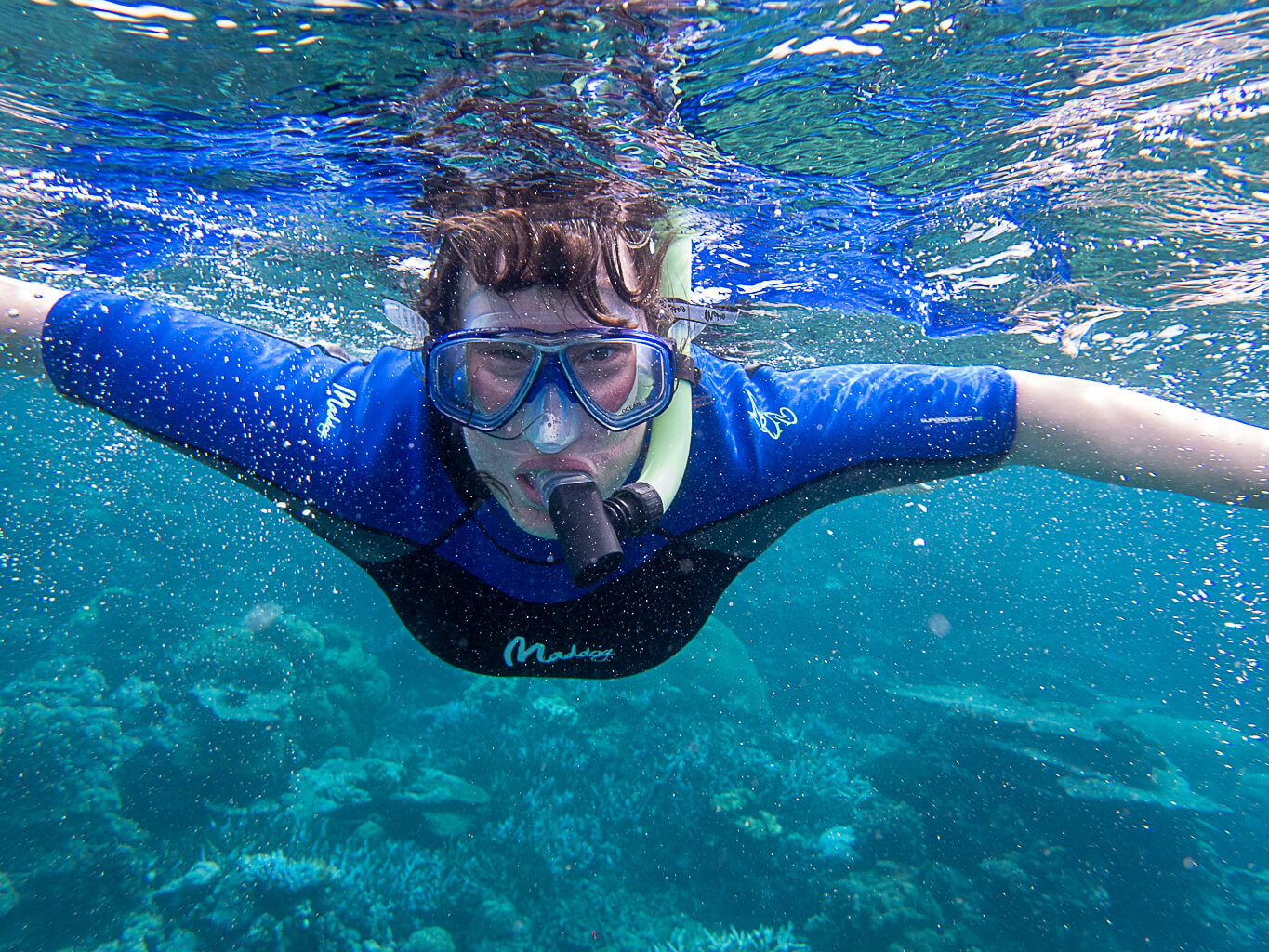

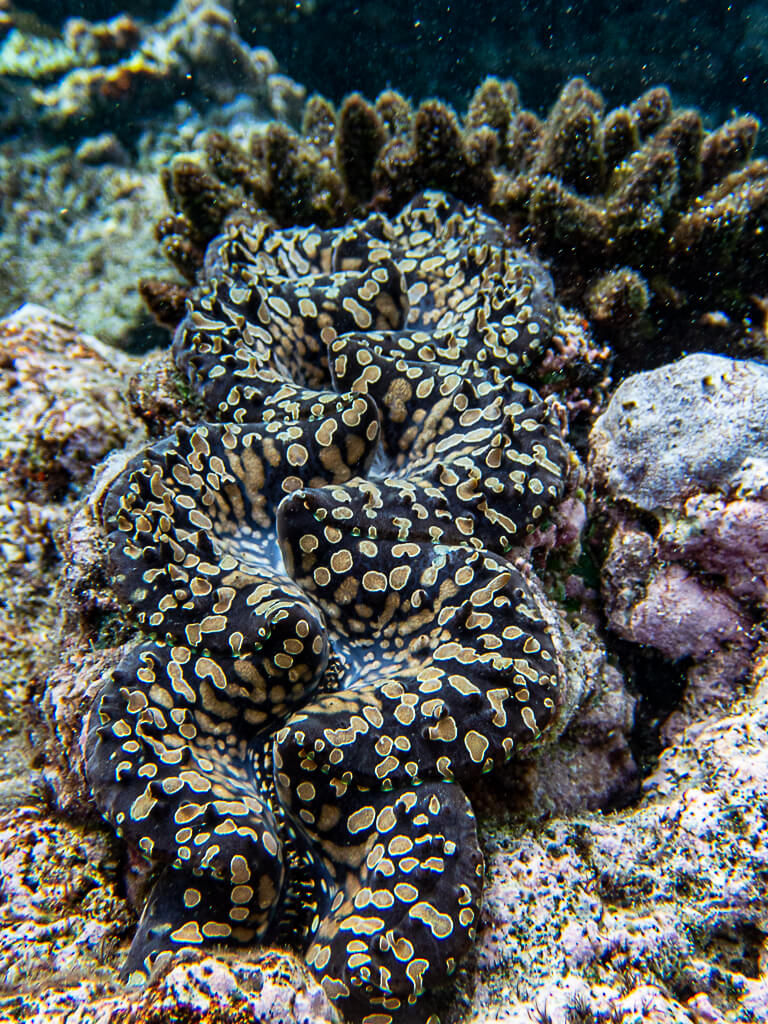
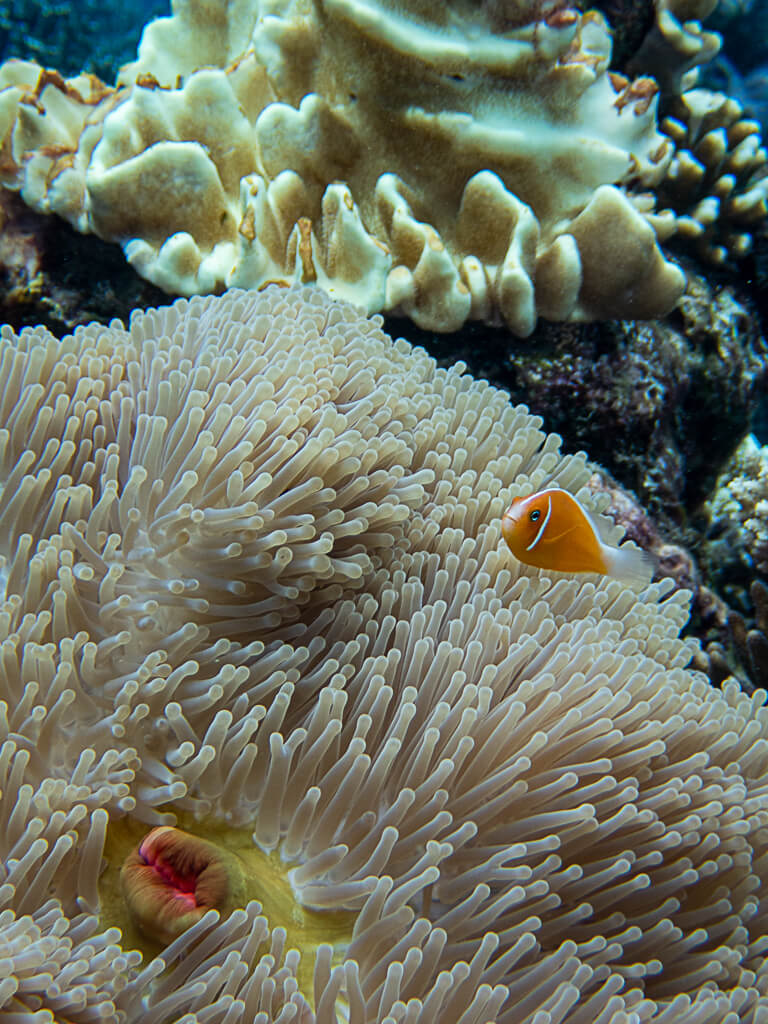
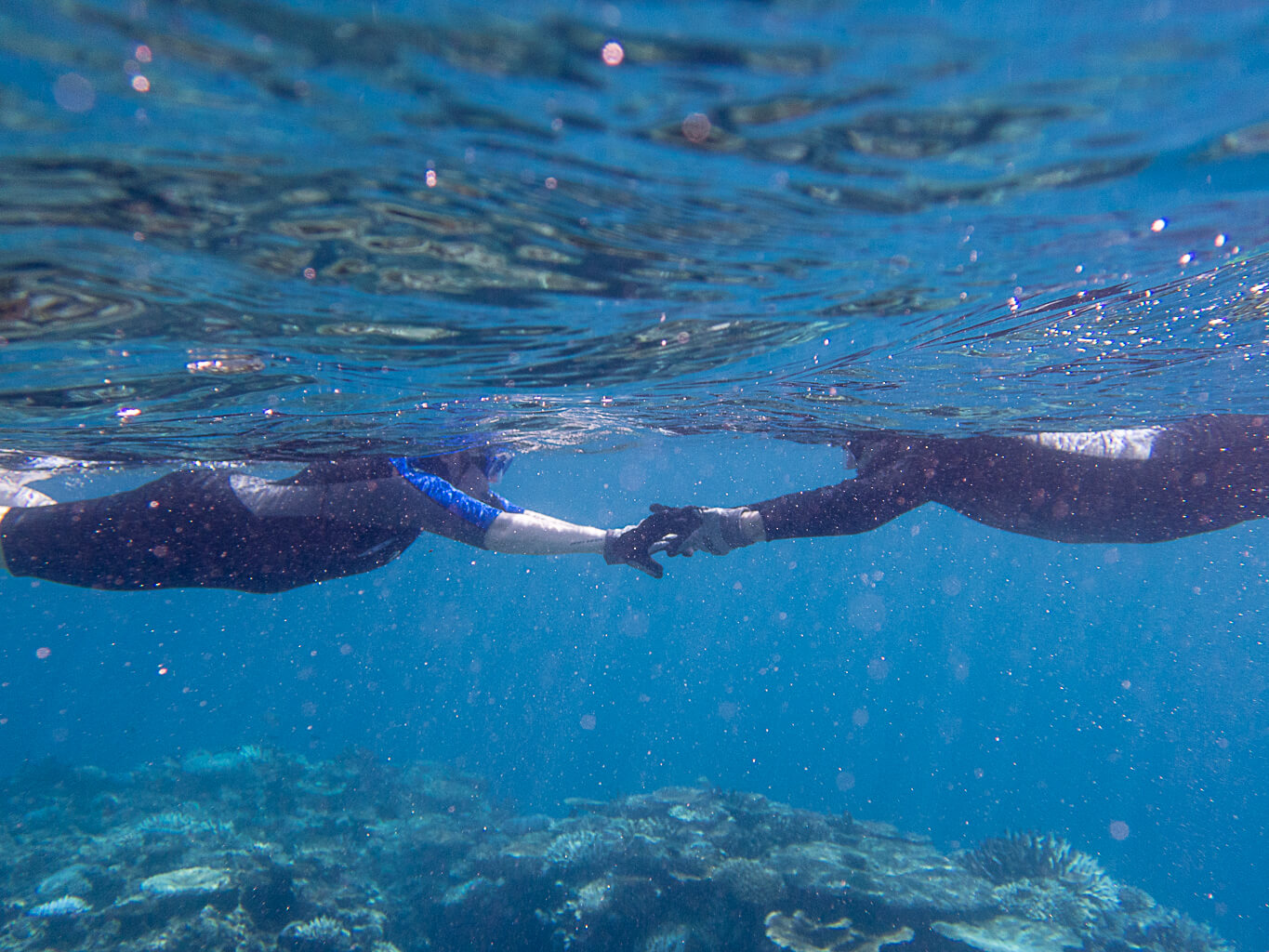

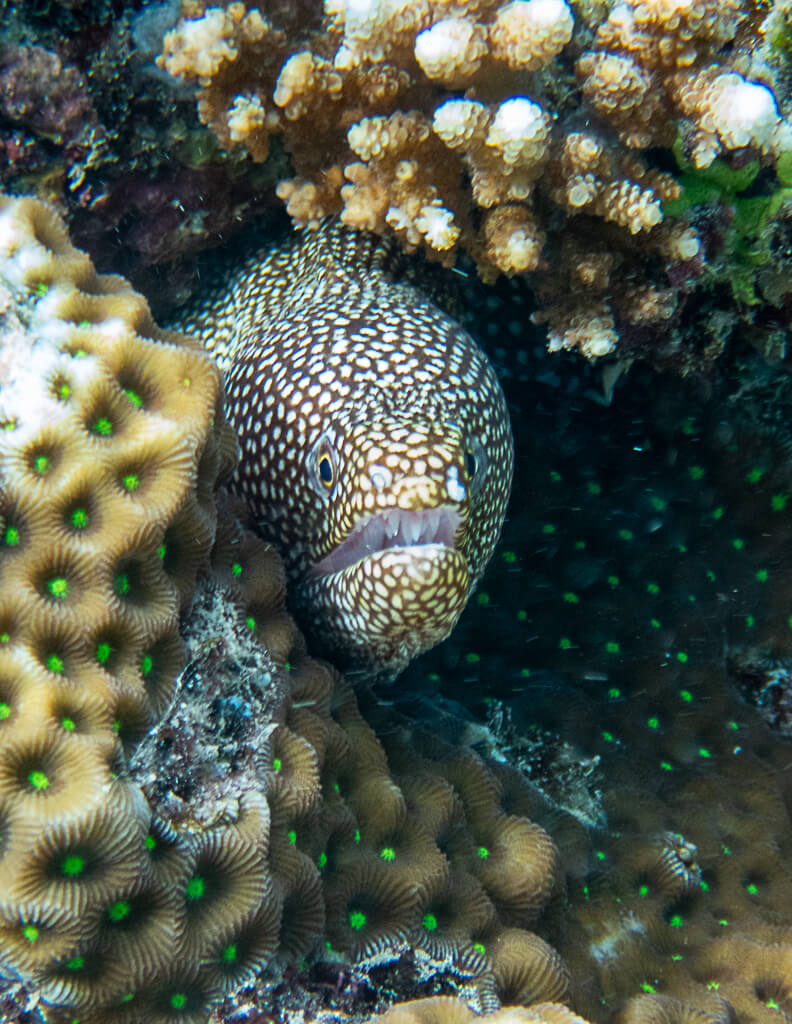
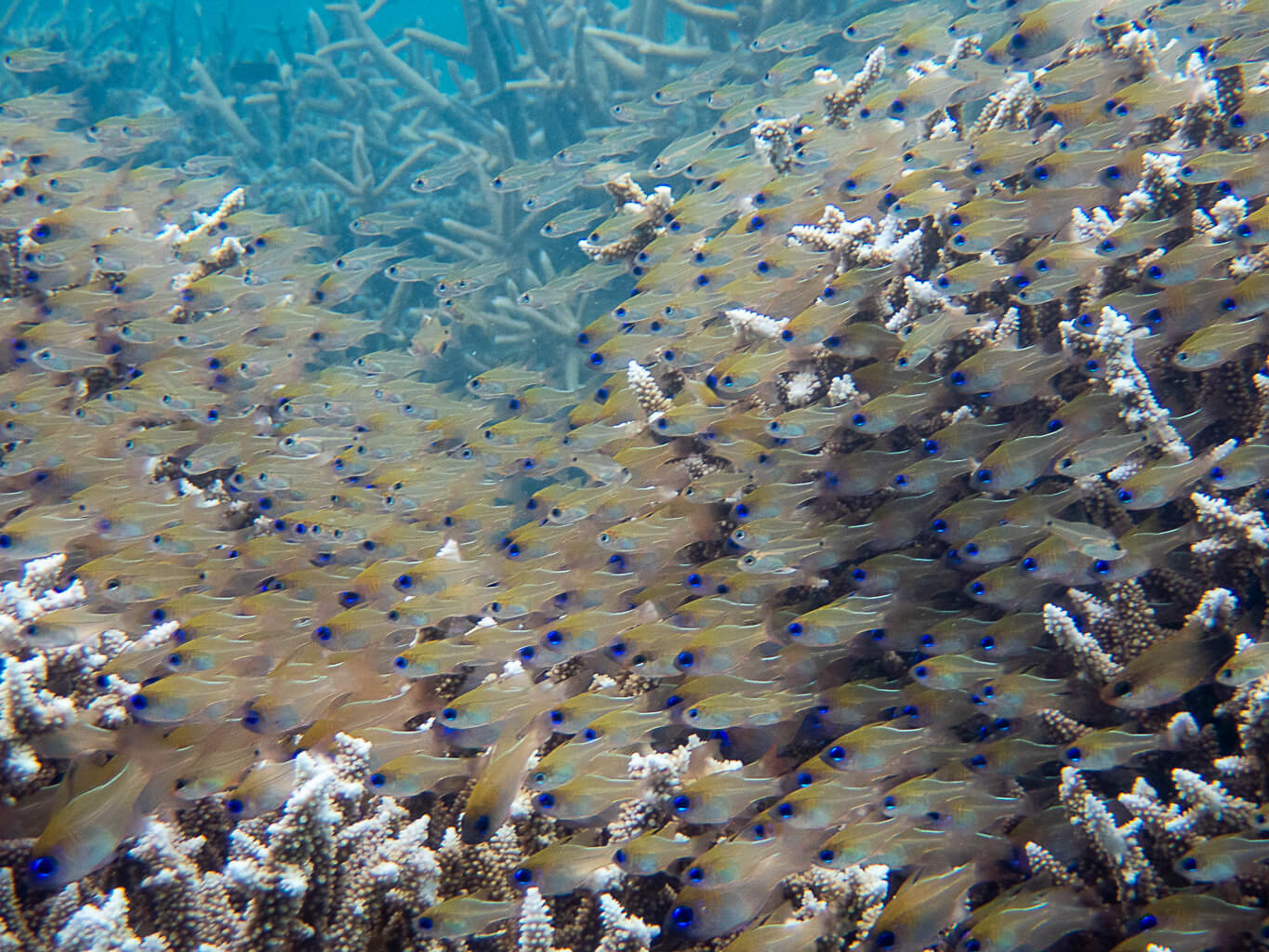
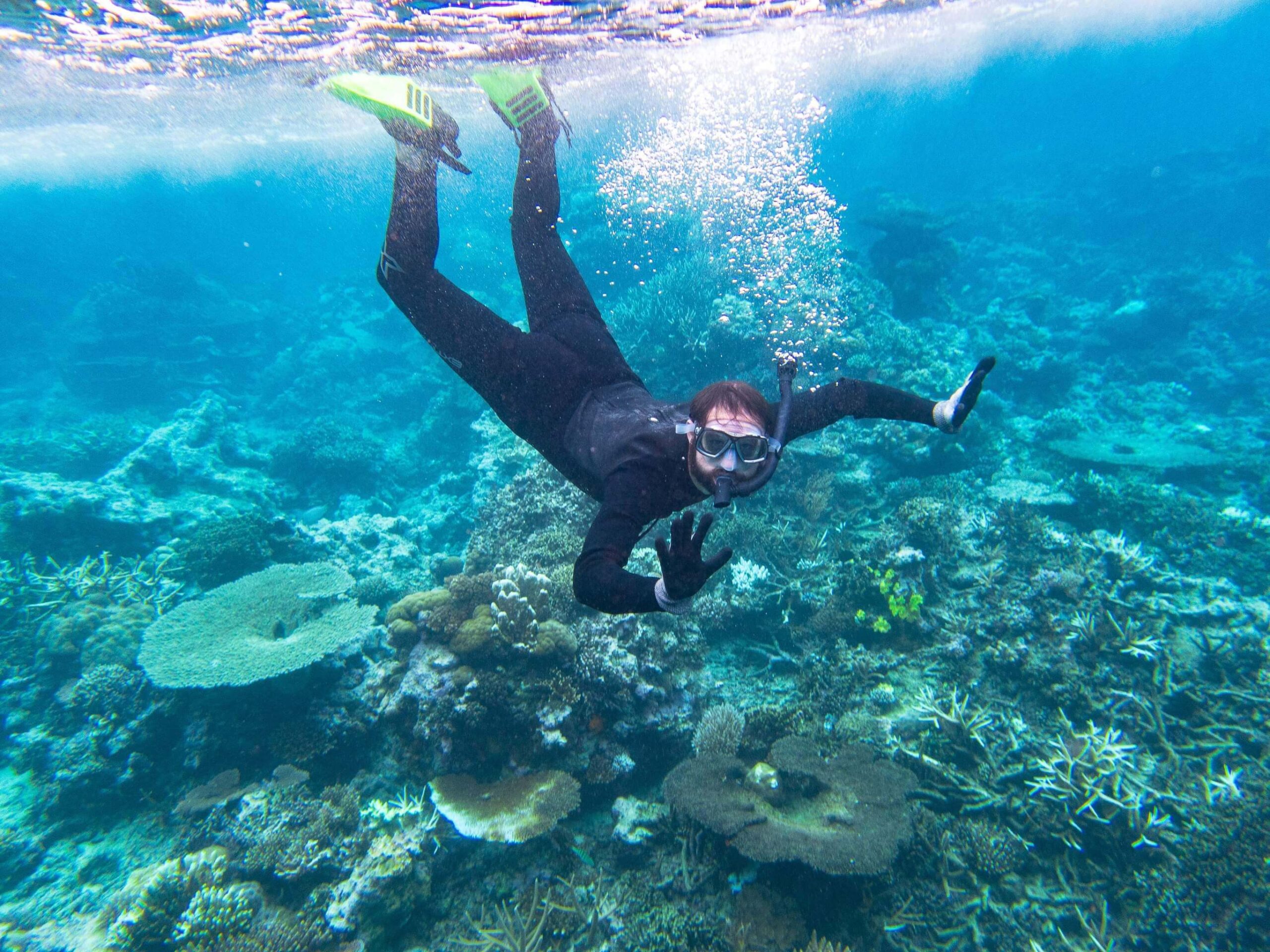
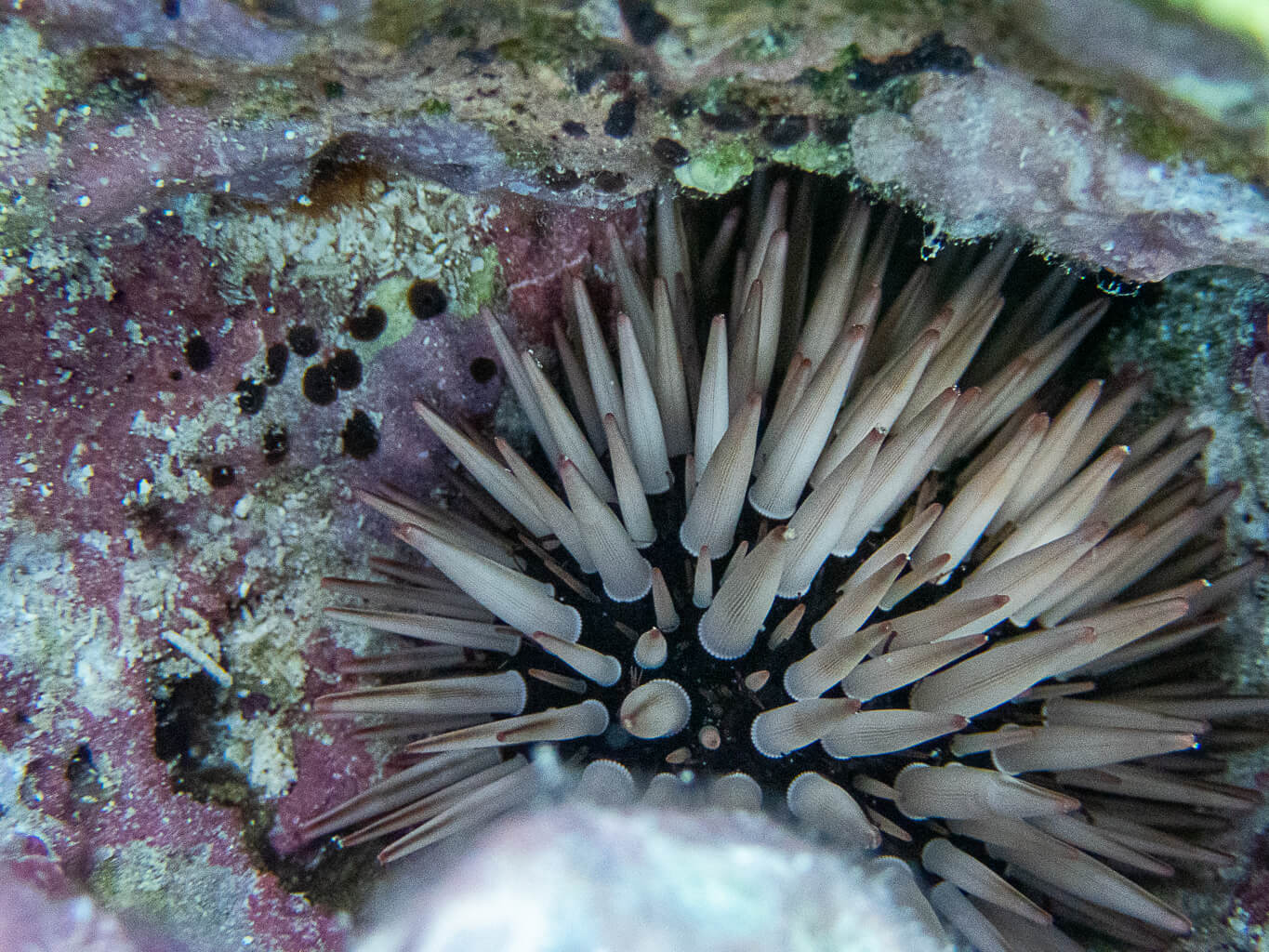
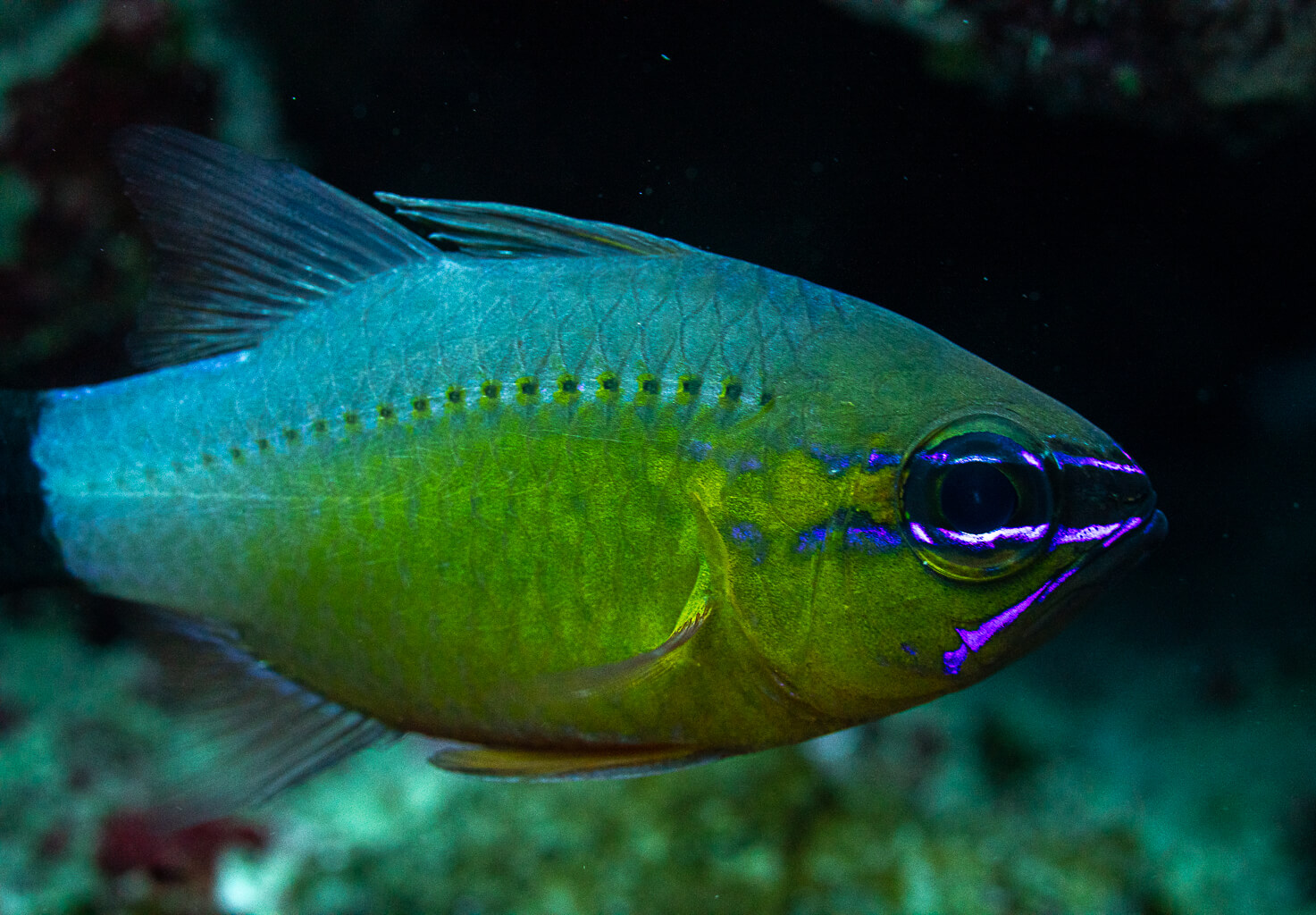
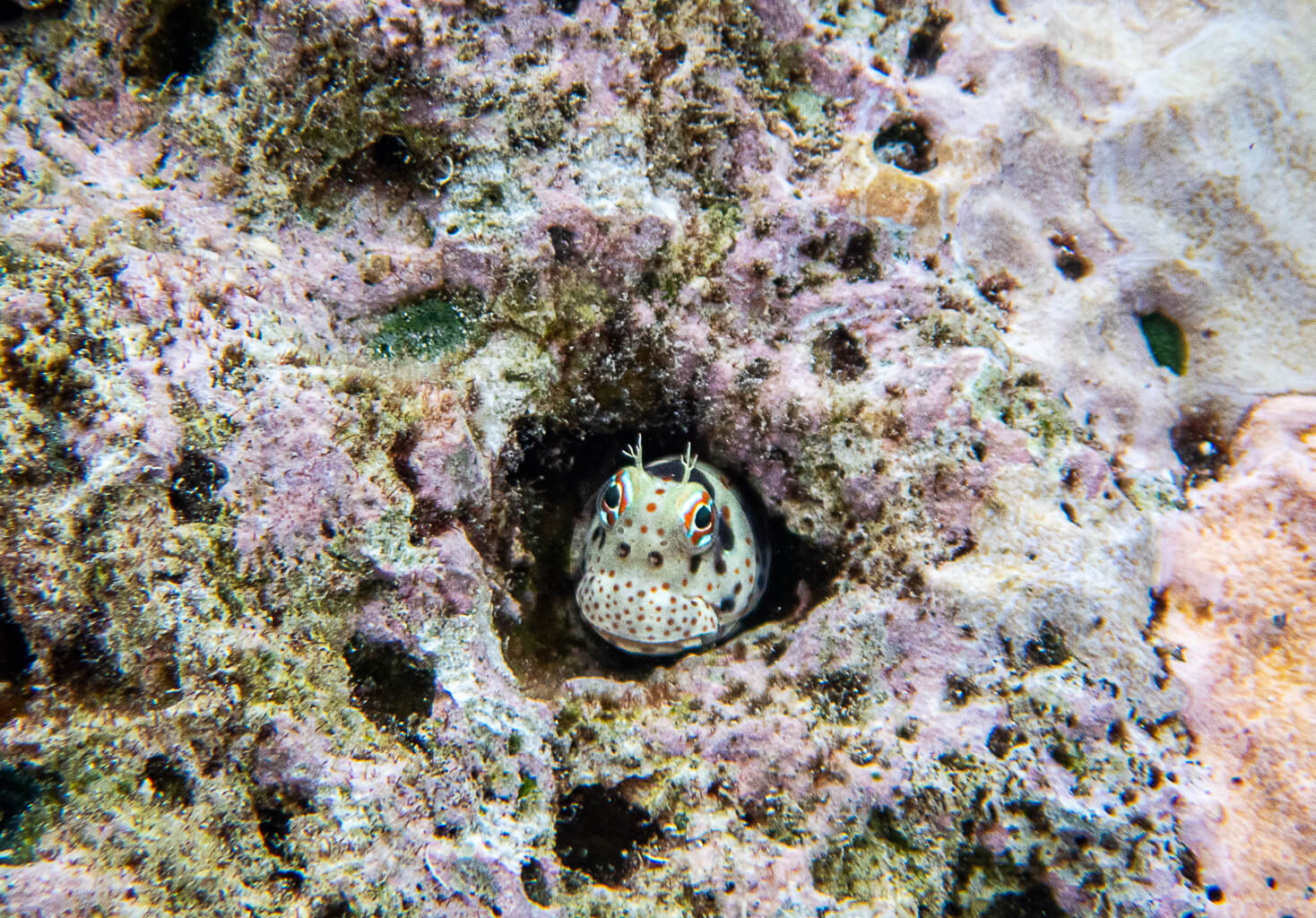

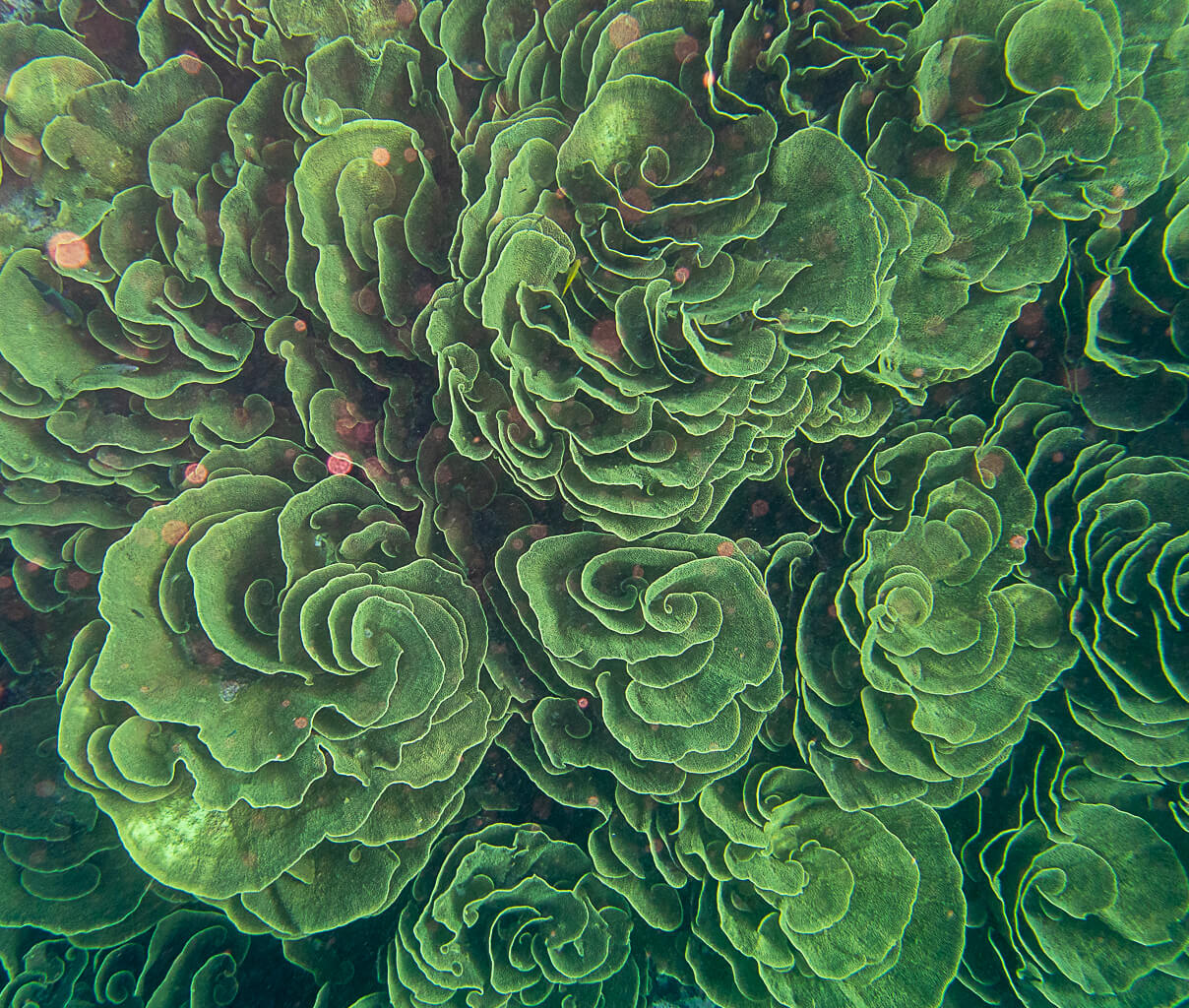
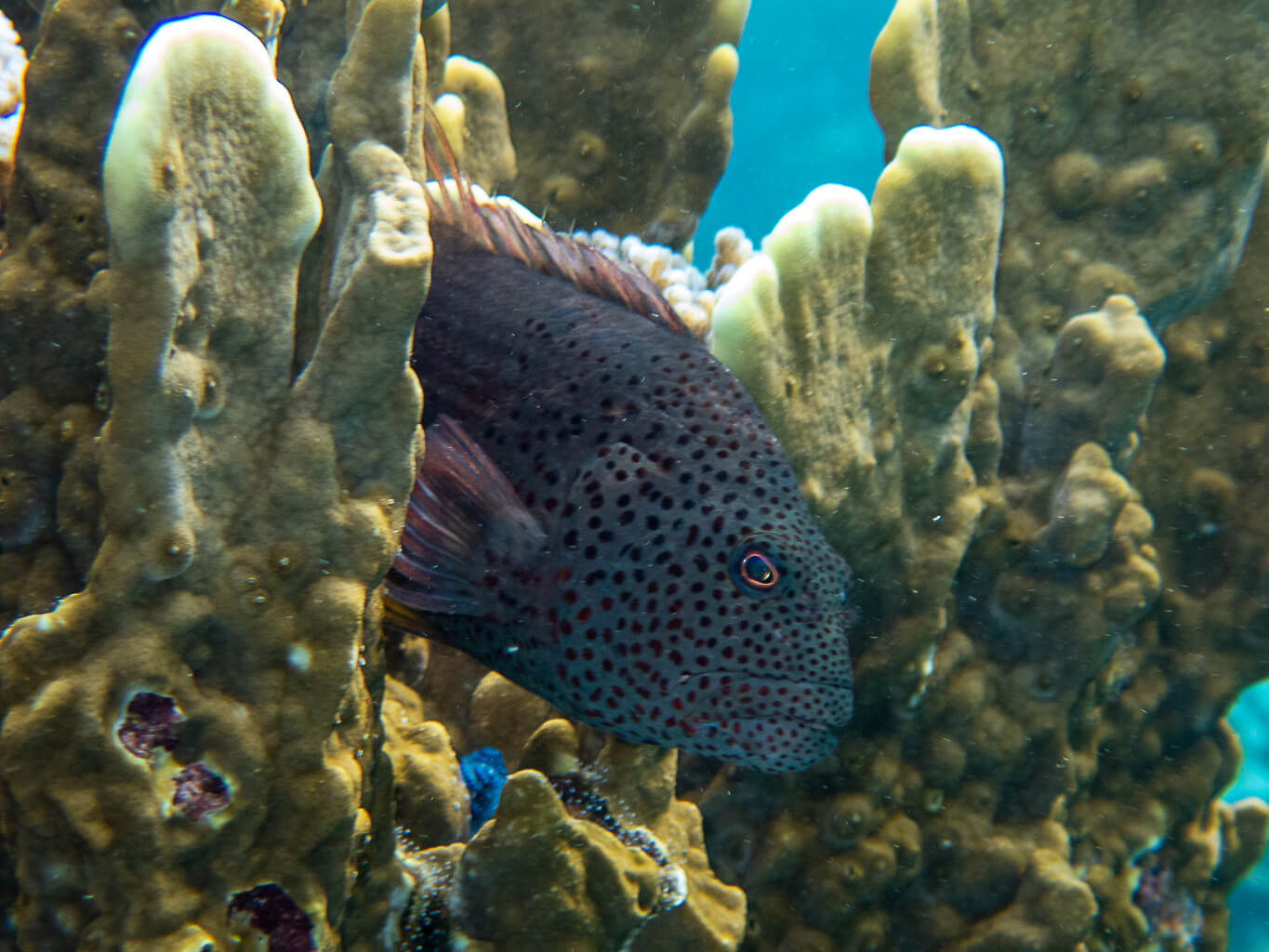
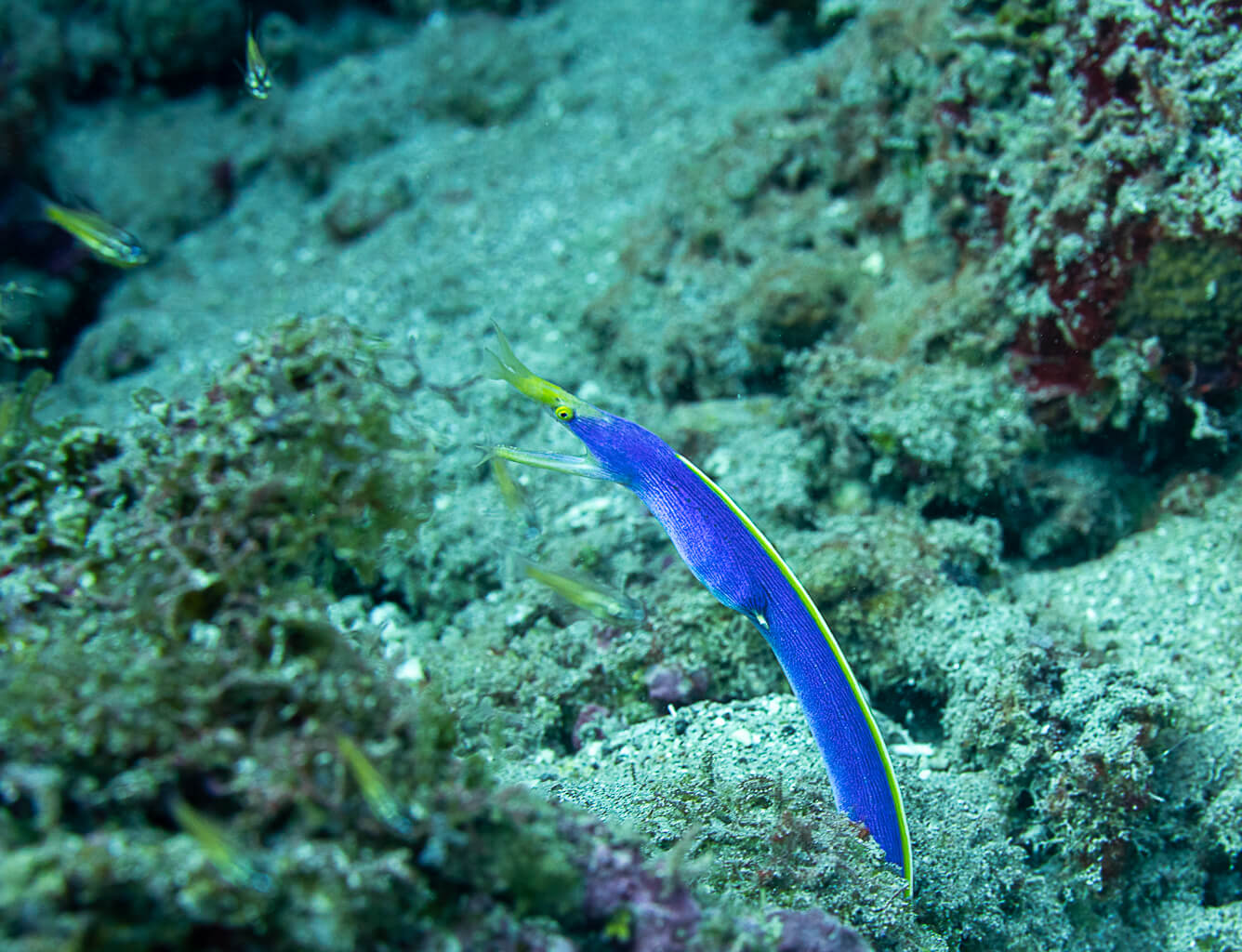
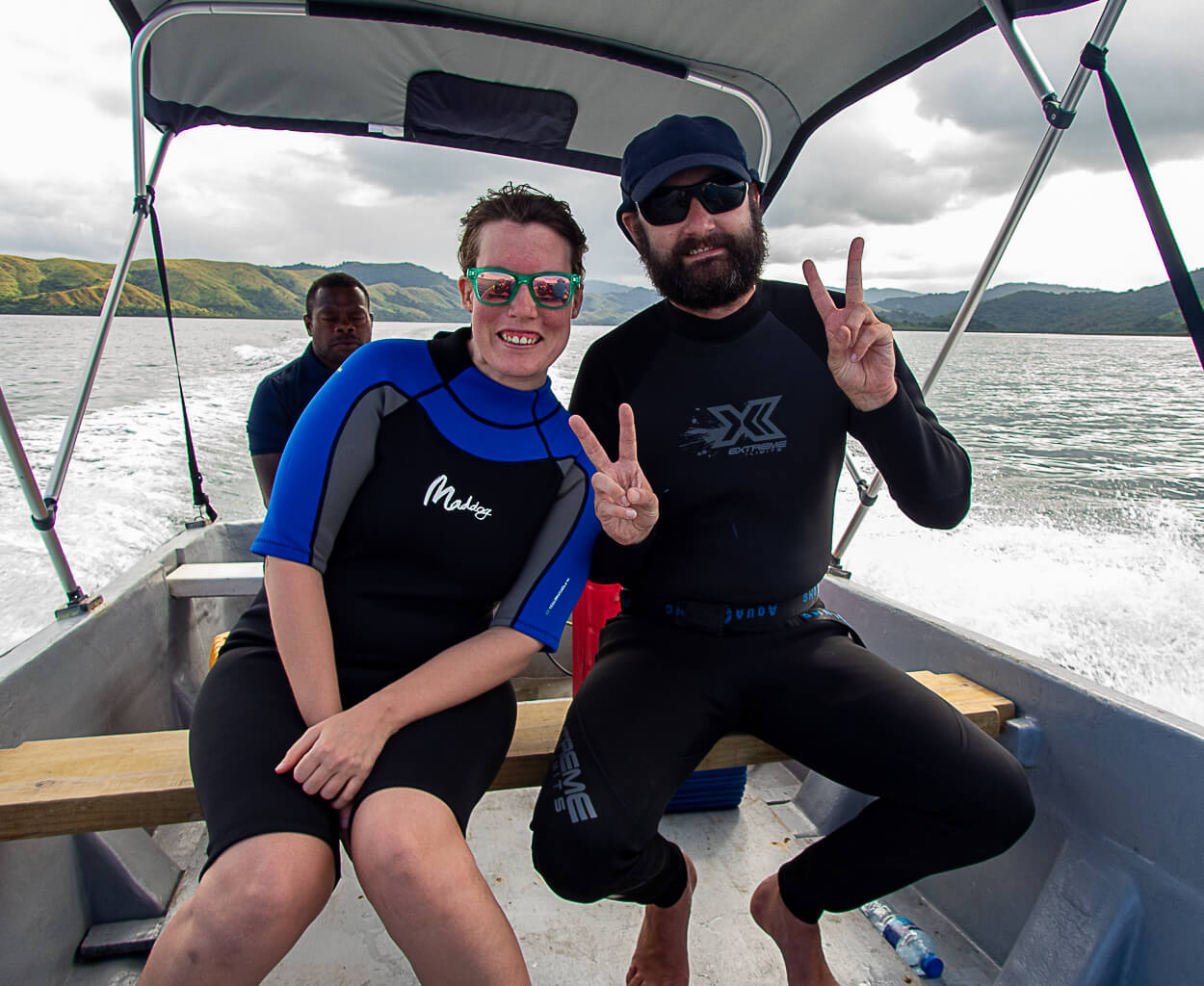


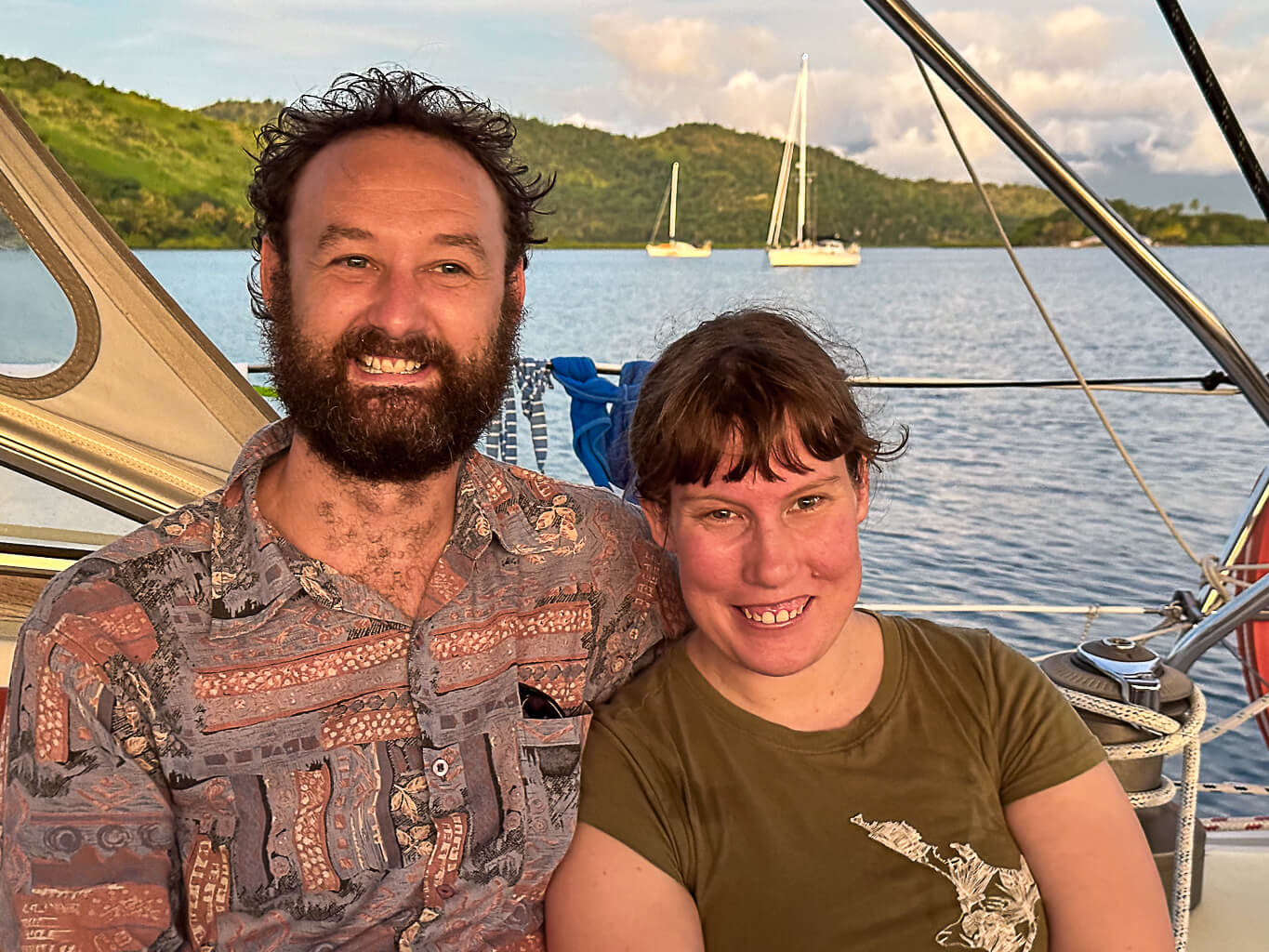
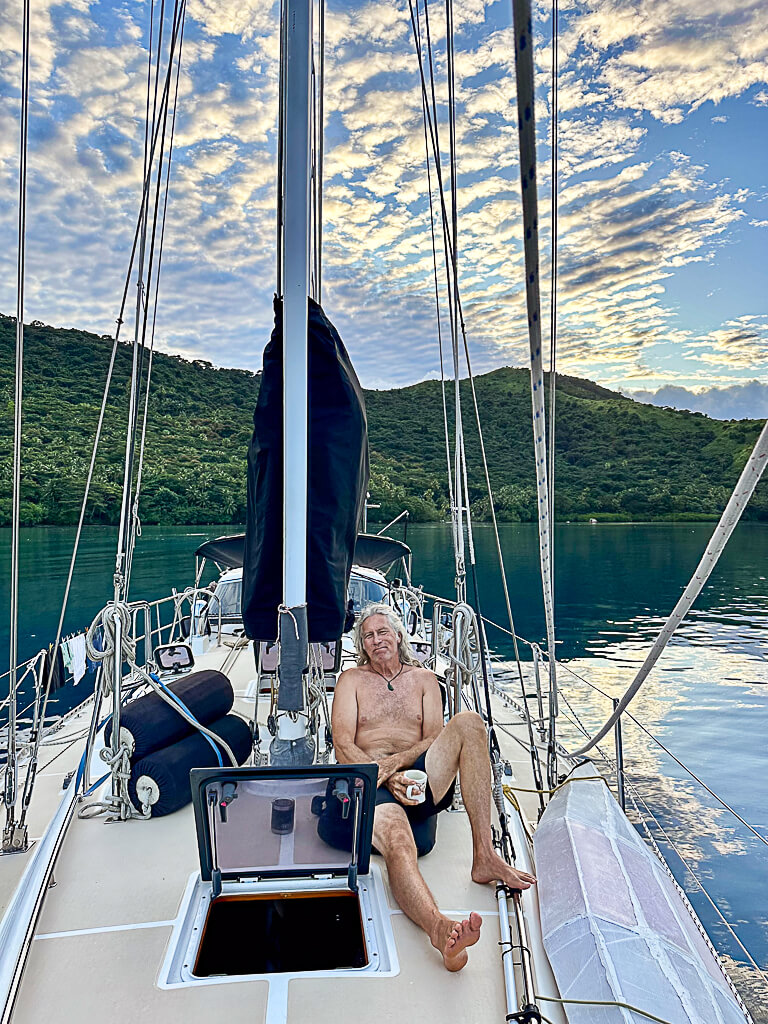
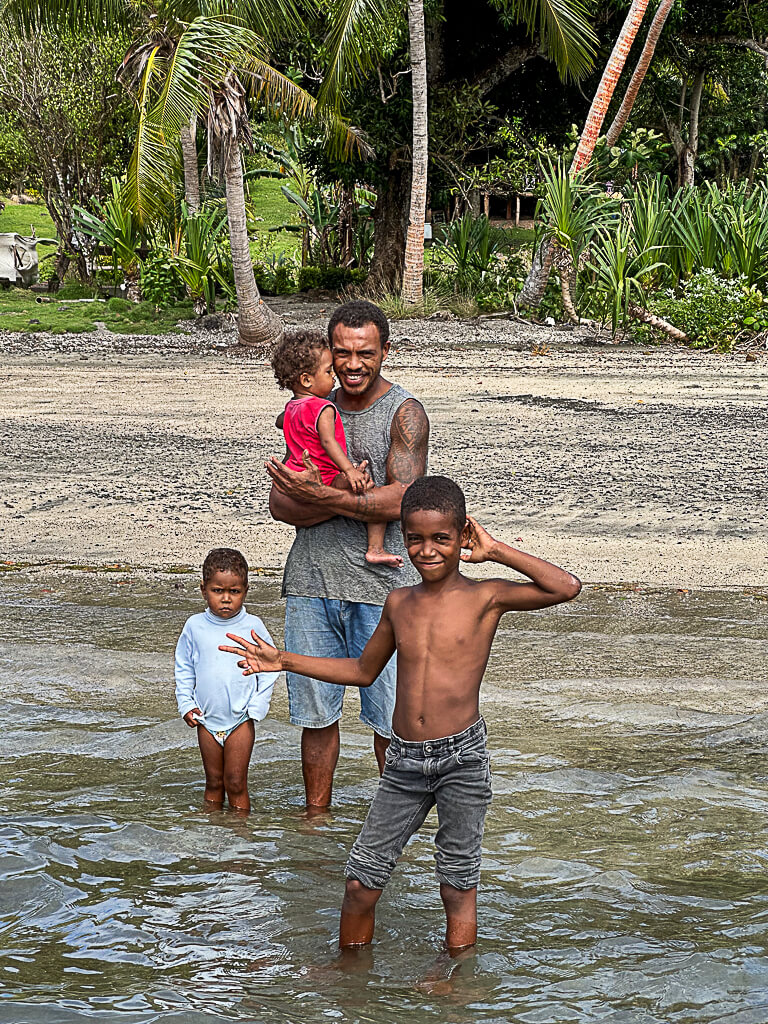


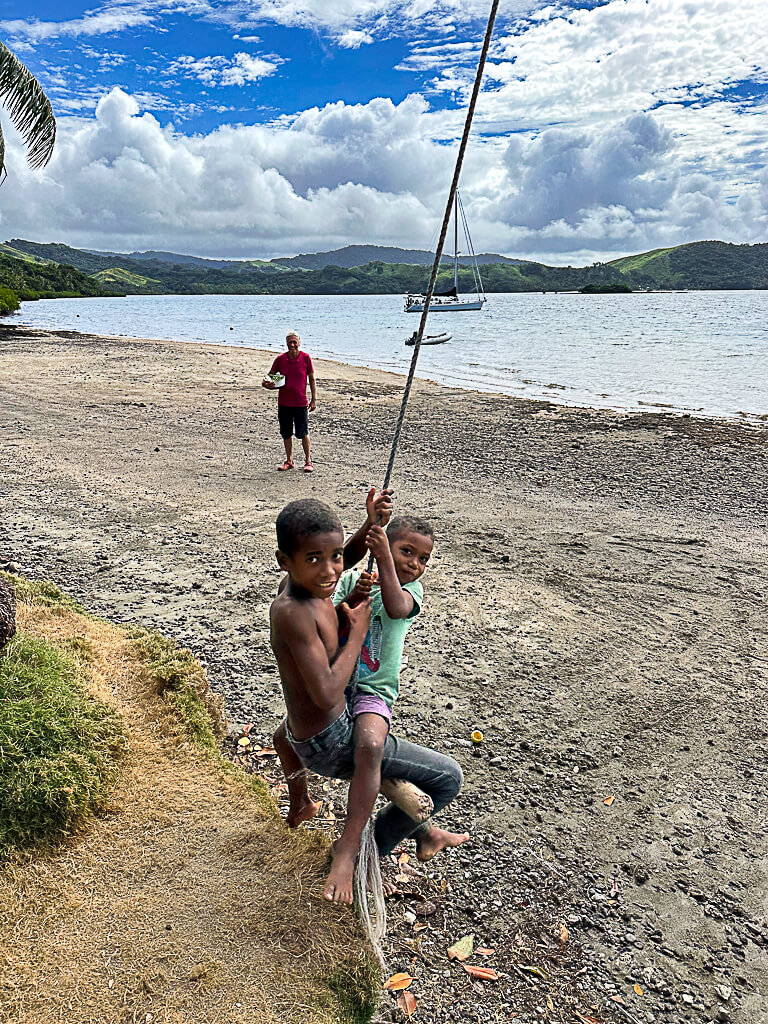
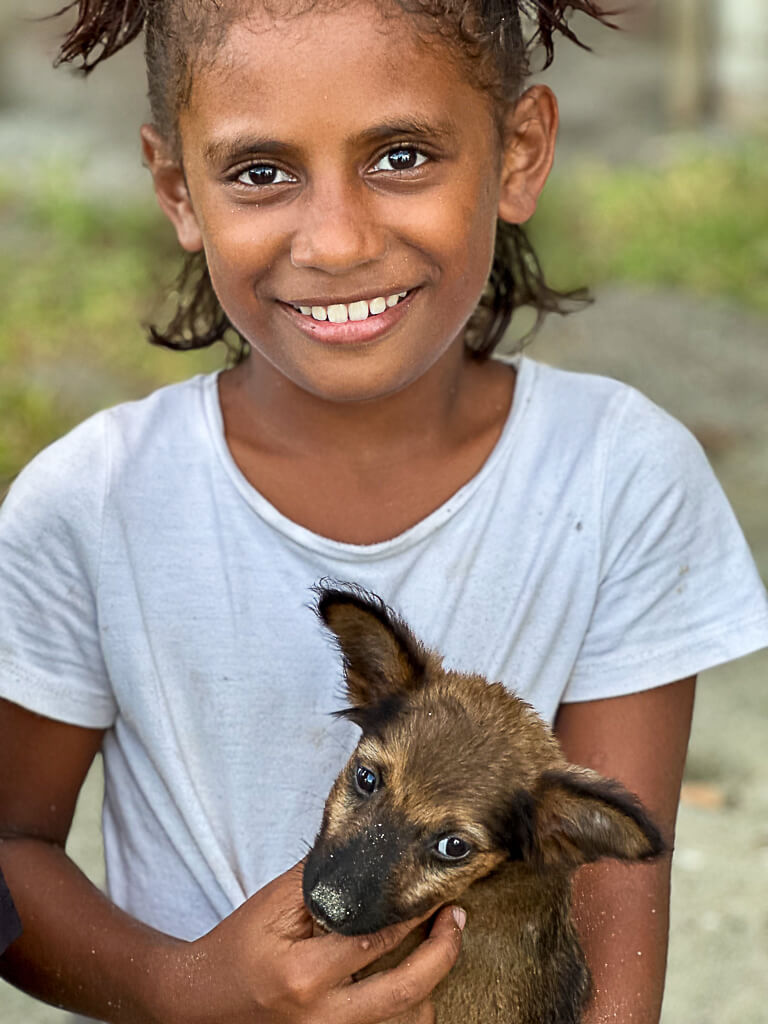
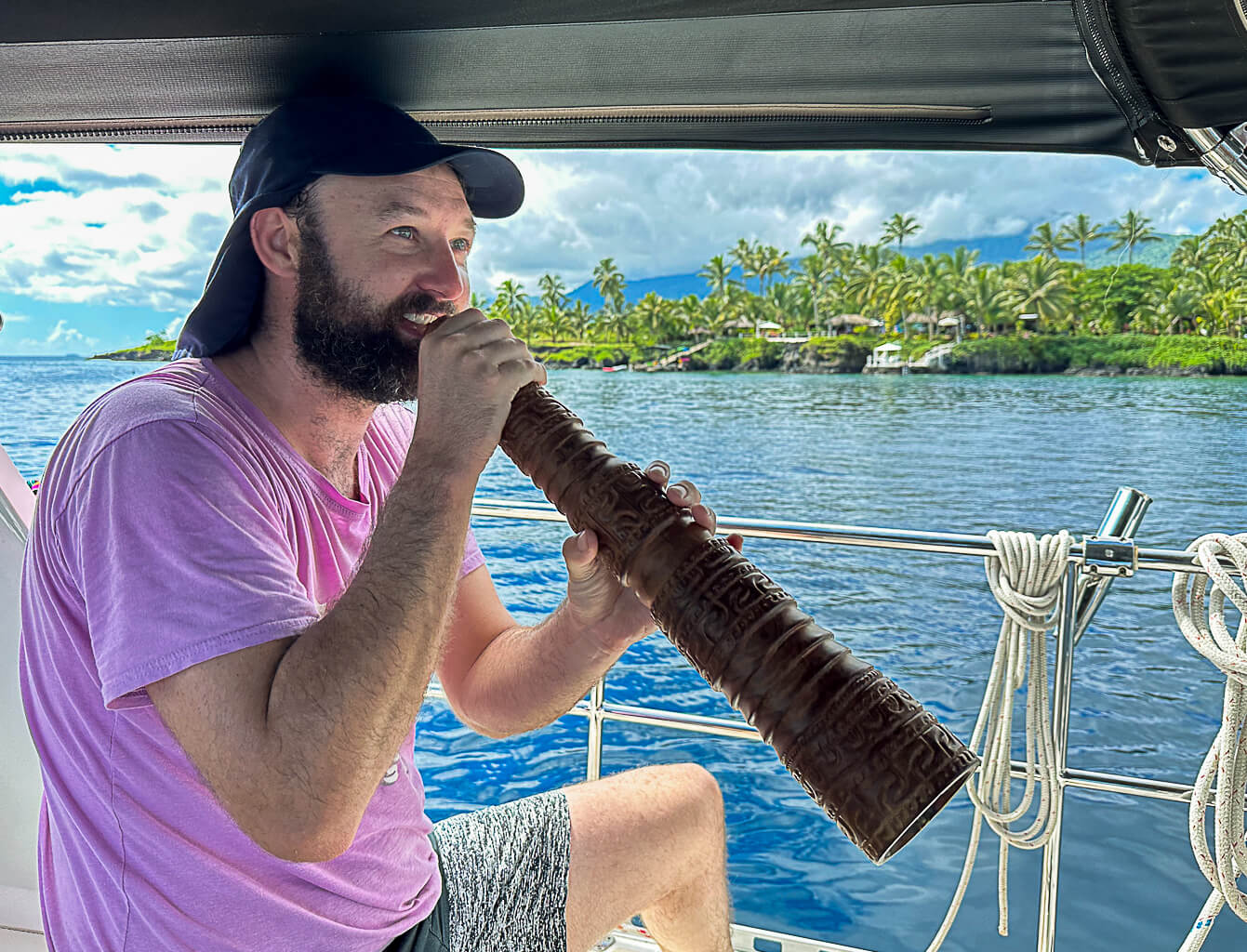
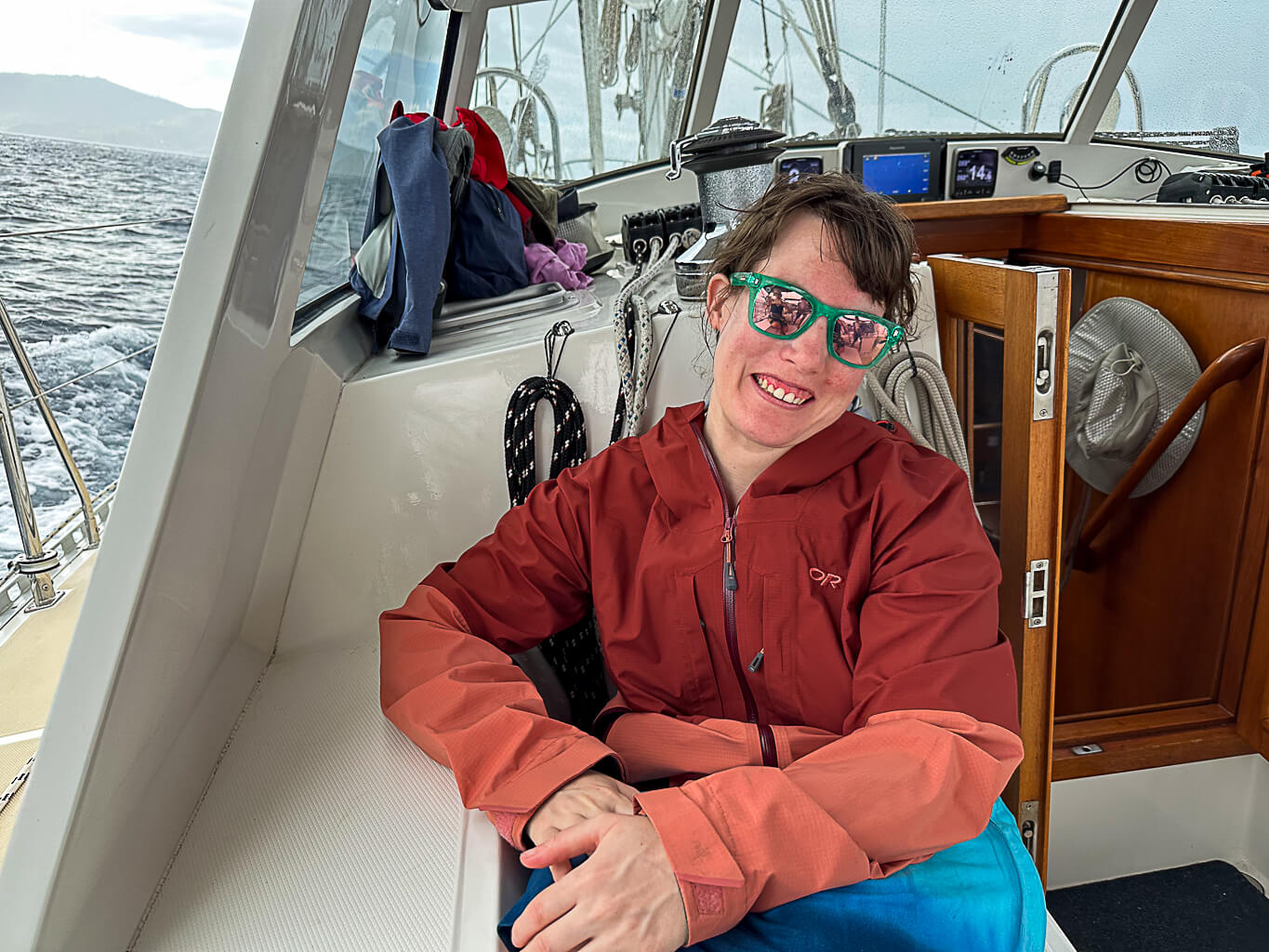
Haley and Liam tuck comfortably into life aboard Allora (Liam, knees slightly bent). Plans yield slowly to late mornings and less ambitious days. Scuba to snorkeling. Rainbow Reef in Viani Bay slips in and out of sun, turtles, schools of shimmering reef fish, clown fish in the anemone, moray eels, turtles, the odd Whitetip reef shark, luminous damsel fish and blue stars. Kids swim out from the beach for a visit, photo ops diving from the swim step. ~MS



At the turnoff to the natural waterslide where the taxi drops us is Taveuni’s prison set on a the green hillside, palm trees and a view, orange clad inmates wave Bula, Bula! The guidebook suggests that if locals are not using the slide, the water may be too high from rain to be safe. It doesn’t say anything about what it indicates that the locals are riding the slide on foot and doing flips into the pools. We were happy for Liam to go first, and appreciated the tips about hidden rocks along the fast and sometimes painful ride. ~MS
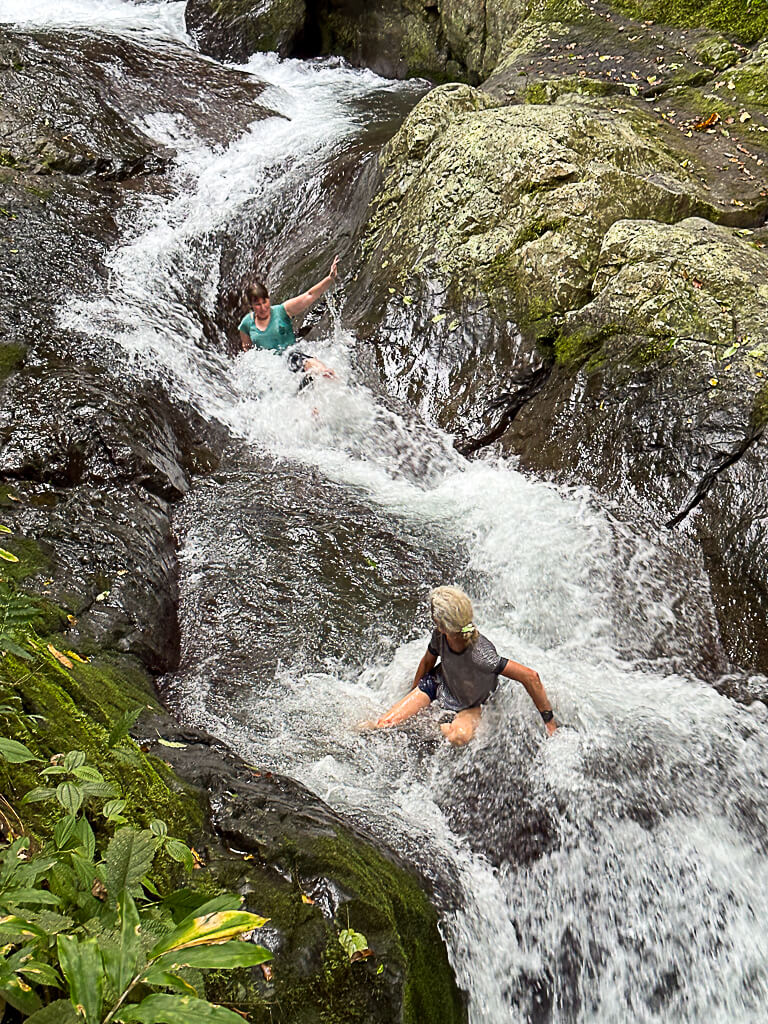
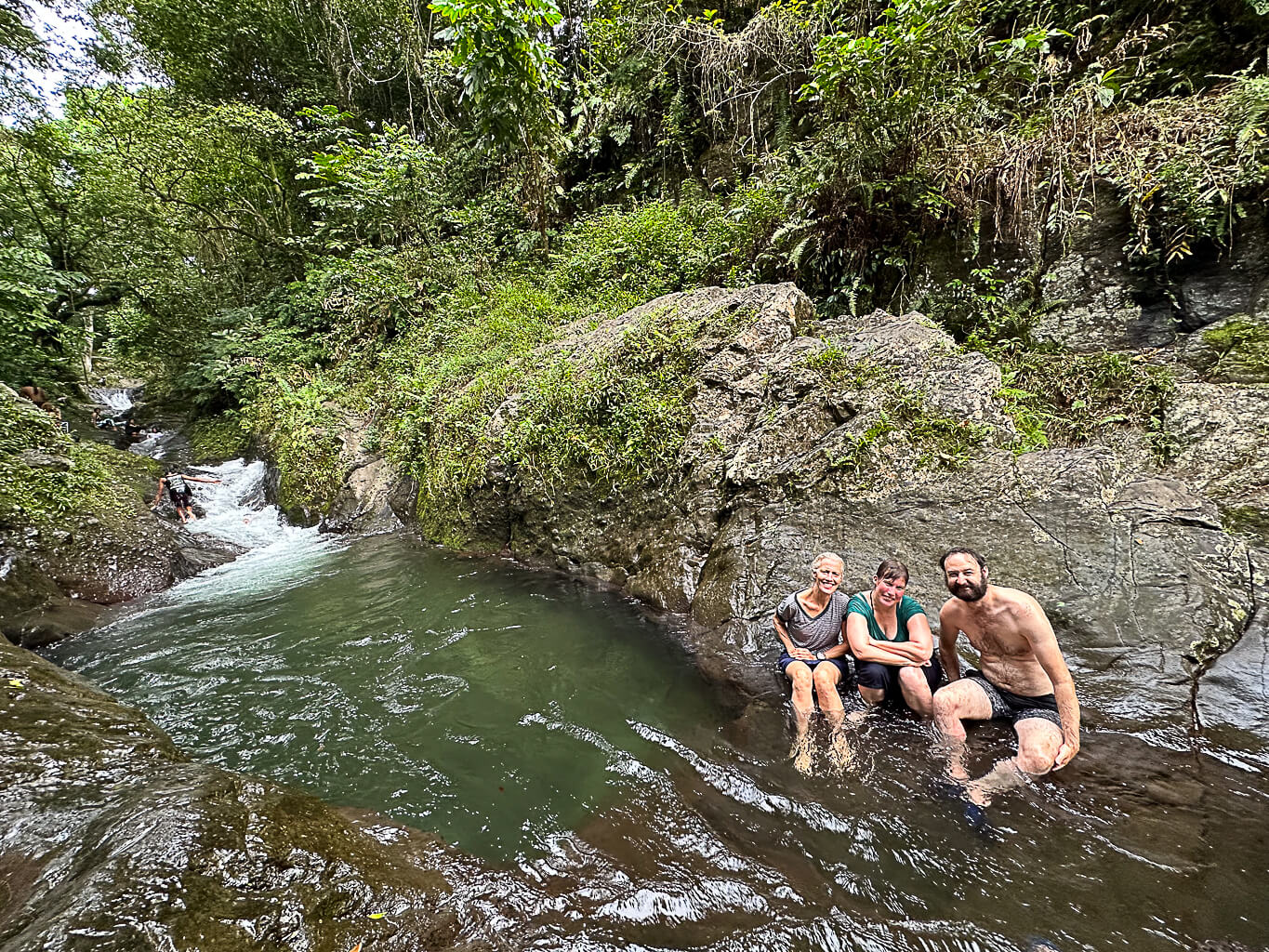
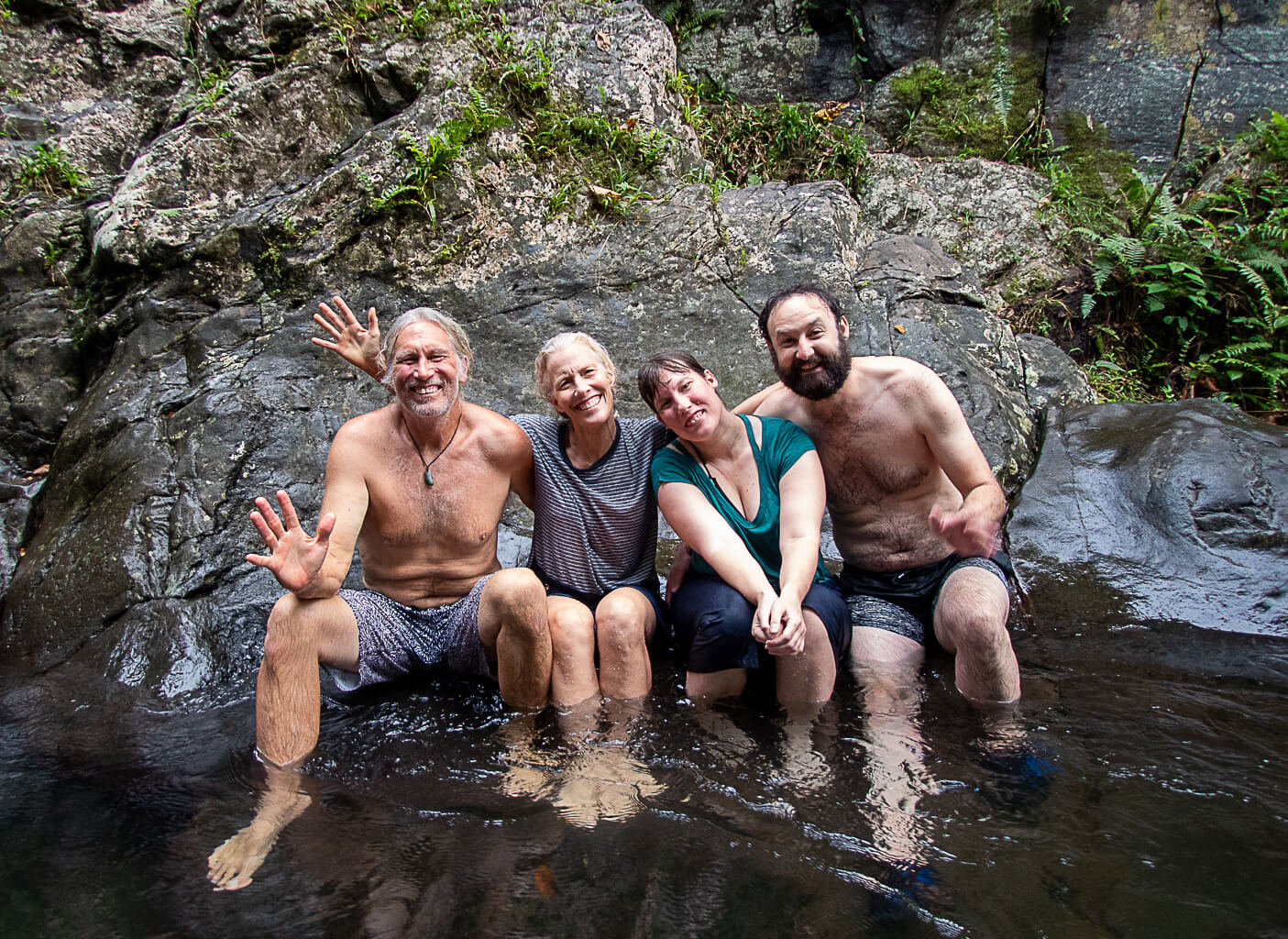
Farkle games at night reminded us of days in New Zealand when we lived in the same town. Casual dinners, walks without destinations. Just being in the same place without plans is the best part, rain or shine. ~MS

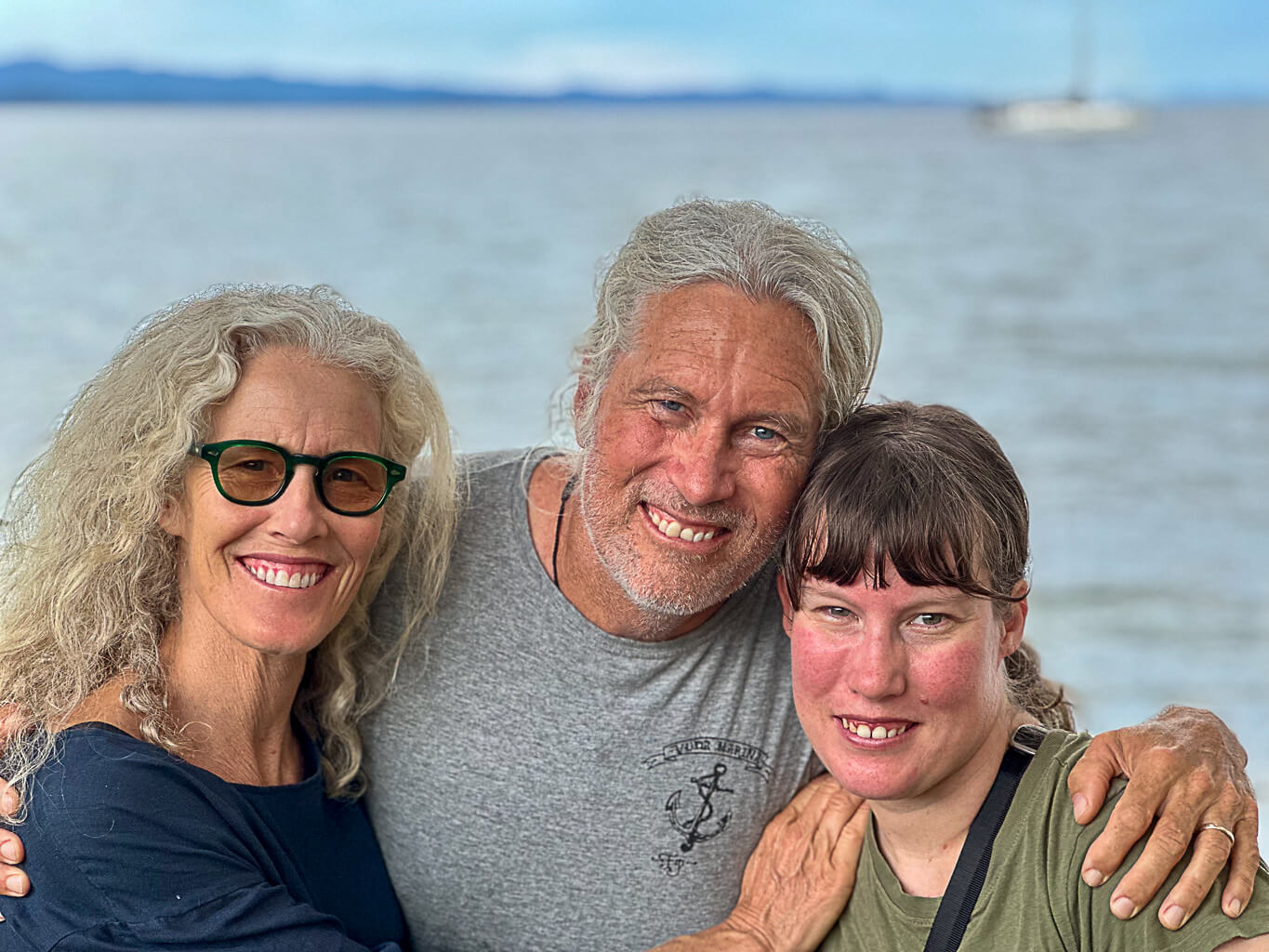
Each visit from friends and family has a certain ‘flavor’ and when Haley and Liam are aboard, it’s about EASE. They are gracious and lighthearted, generous and fun. We have a sense that we can just BE without fuss – and these days, I especially appreciate that important lesson. ‘Vinaka vakalevu’ for the inspiration, you two! And for creating the space in your lives to make the trip! ~DS
By some painful and myseterious black magic— 12 hours in a tired old Fiji Airways Airbus bulkhead with unhappy, uncomfortable young travelers and a collapsing arm rest video unit that nearly took out Diana’s shin… somehow… we managed to atomically deconstruct our sense of self… and transport and reconstruct ourselves in a multiverse, far far away from the frozen white cornucopia of Bozeman, Montana, USA… Fiji where it’s GREEN, suddenly 90 percent humidity and 89 degrees F (something like 32 C for those so inclined). No way to describe the particular quality of sunsets here, unlike anything so far in the Pacific. Three weeks of relentless job lists, commiserating with our fellow sailors all struggling to resurrect our boats from their cyclone pits, reacquaint ourselves the preposterous, maddening and miraculous complexity of these beautiful beasts. Fix and clean more things than seems rational. We are finally ready to poke our nose back out into the whirl of troughs and reinforced trade winds and remember, we dearly hope… why we work so hard to sit at anchor, on our living lady Allora and dip a toe in this magical cerulean water.

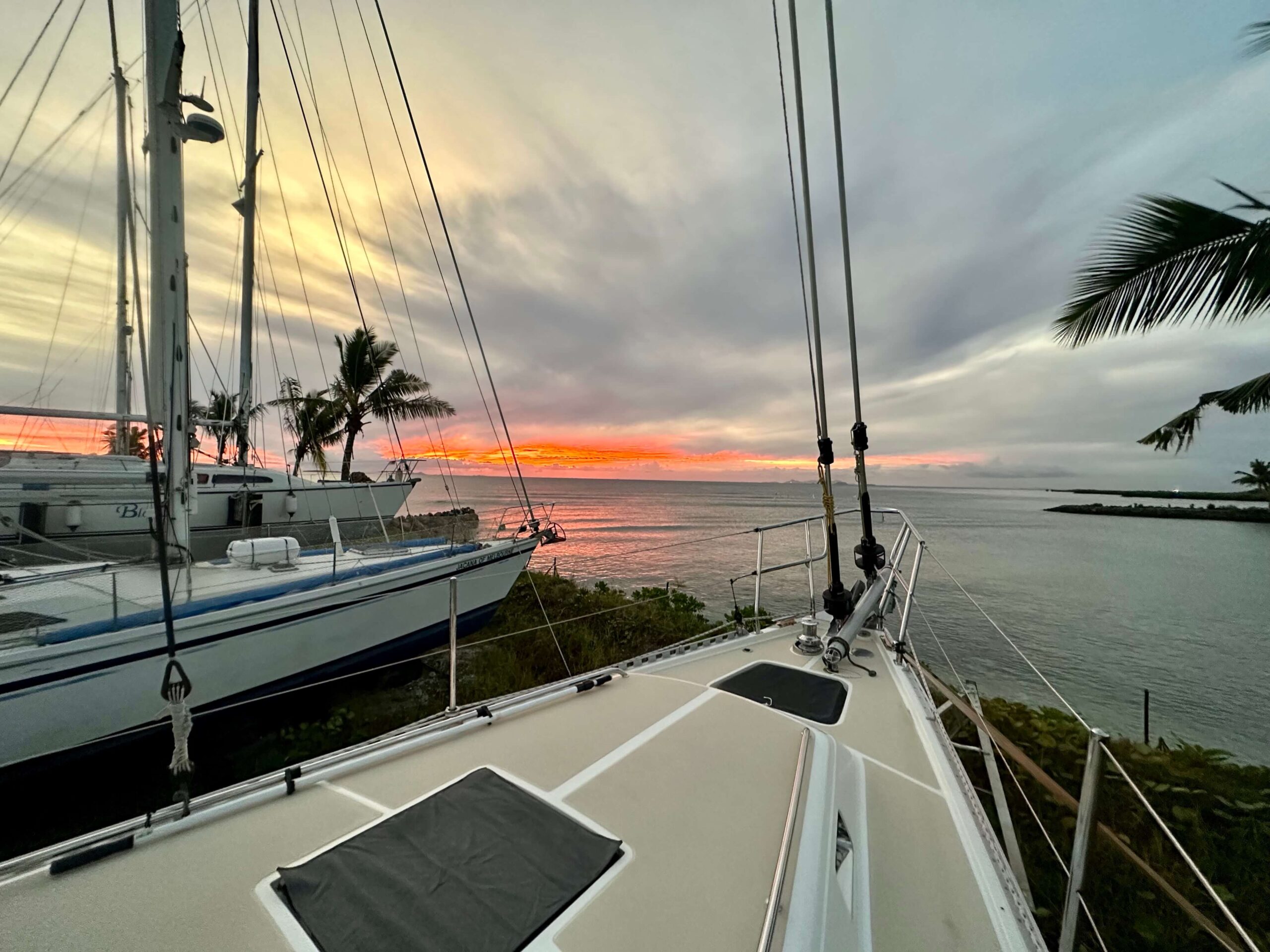
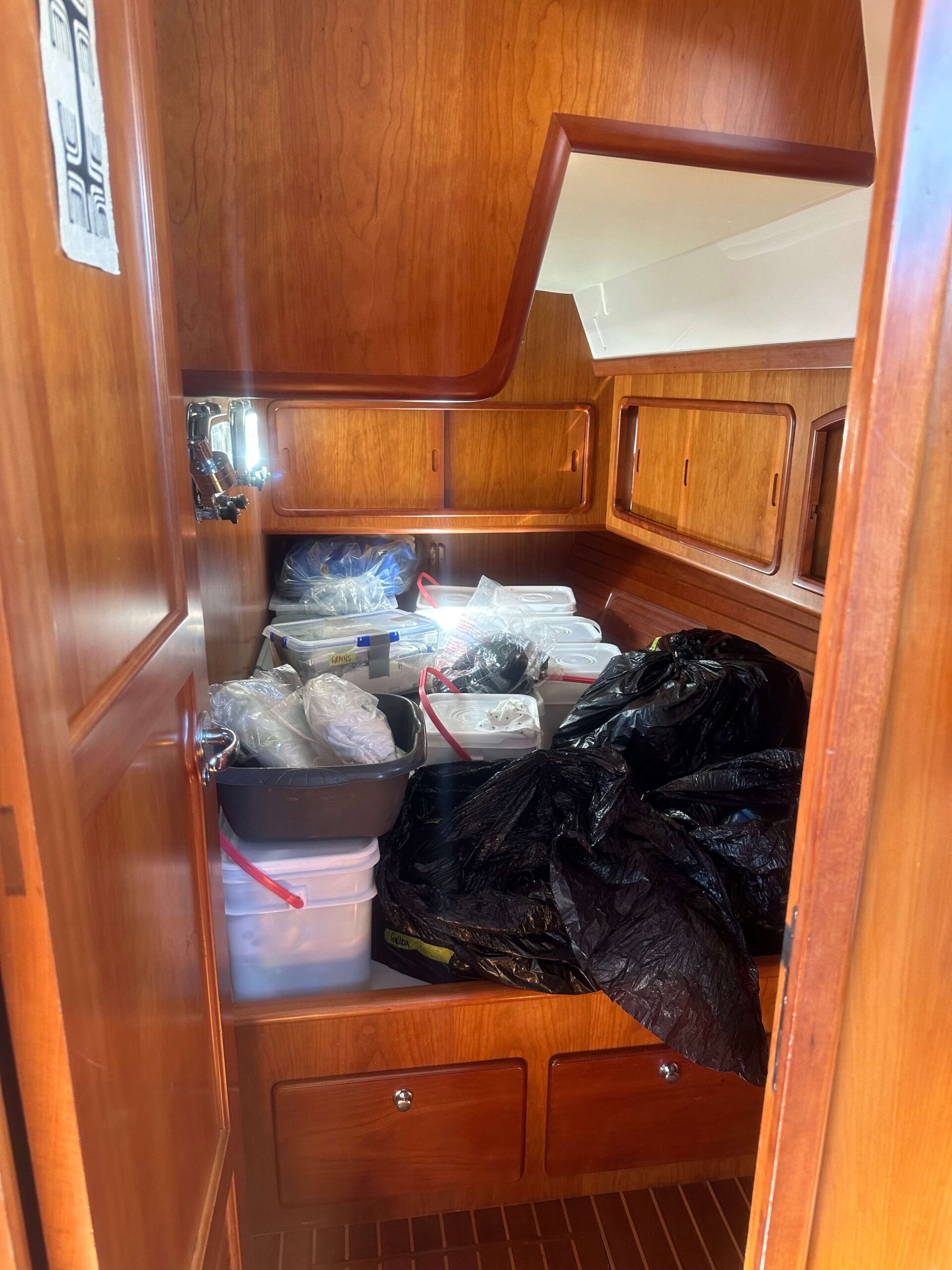
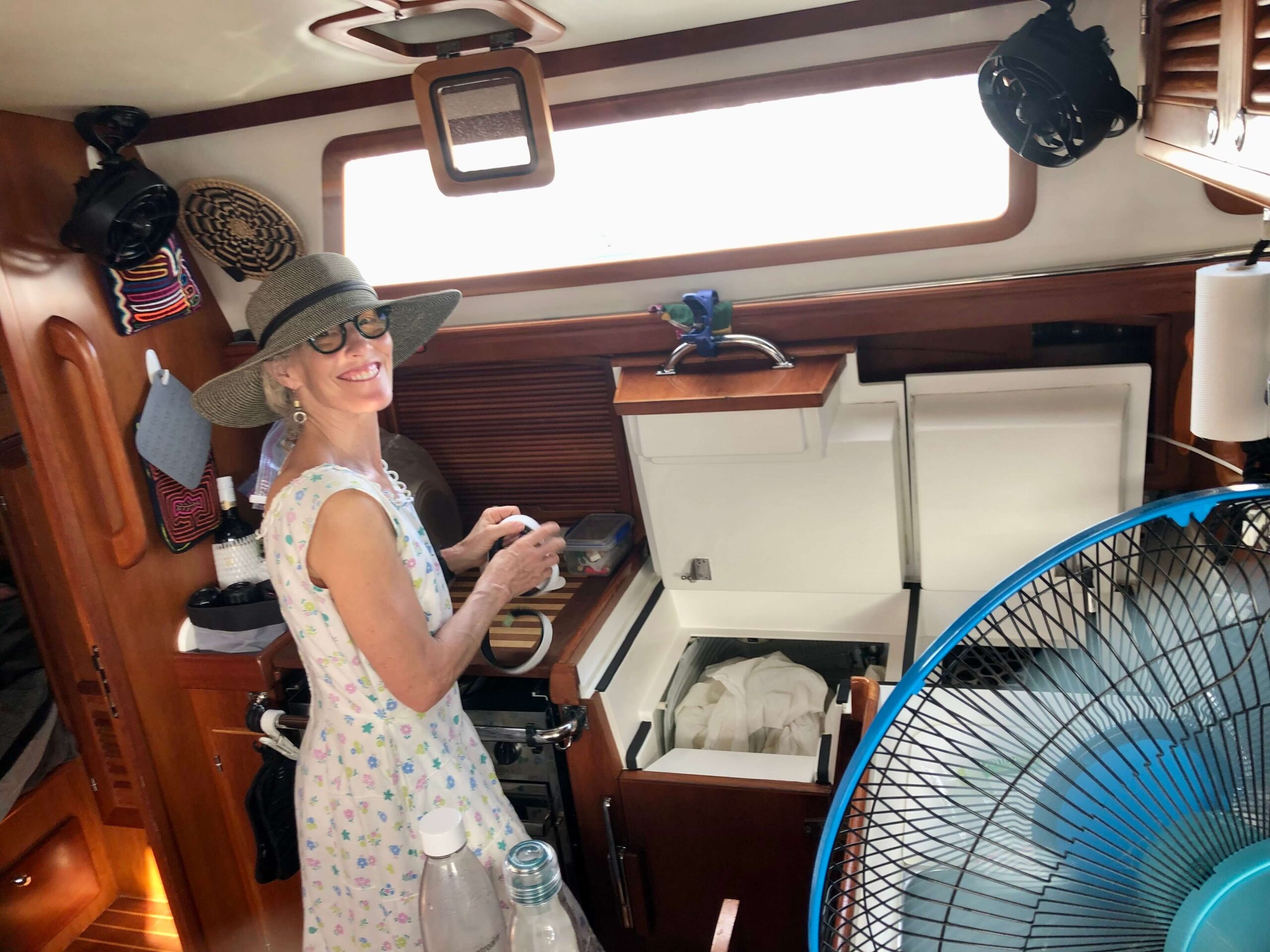
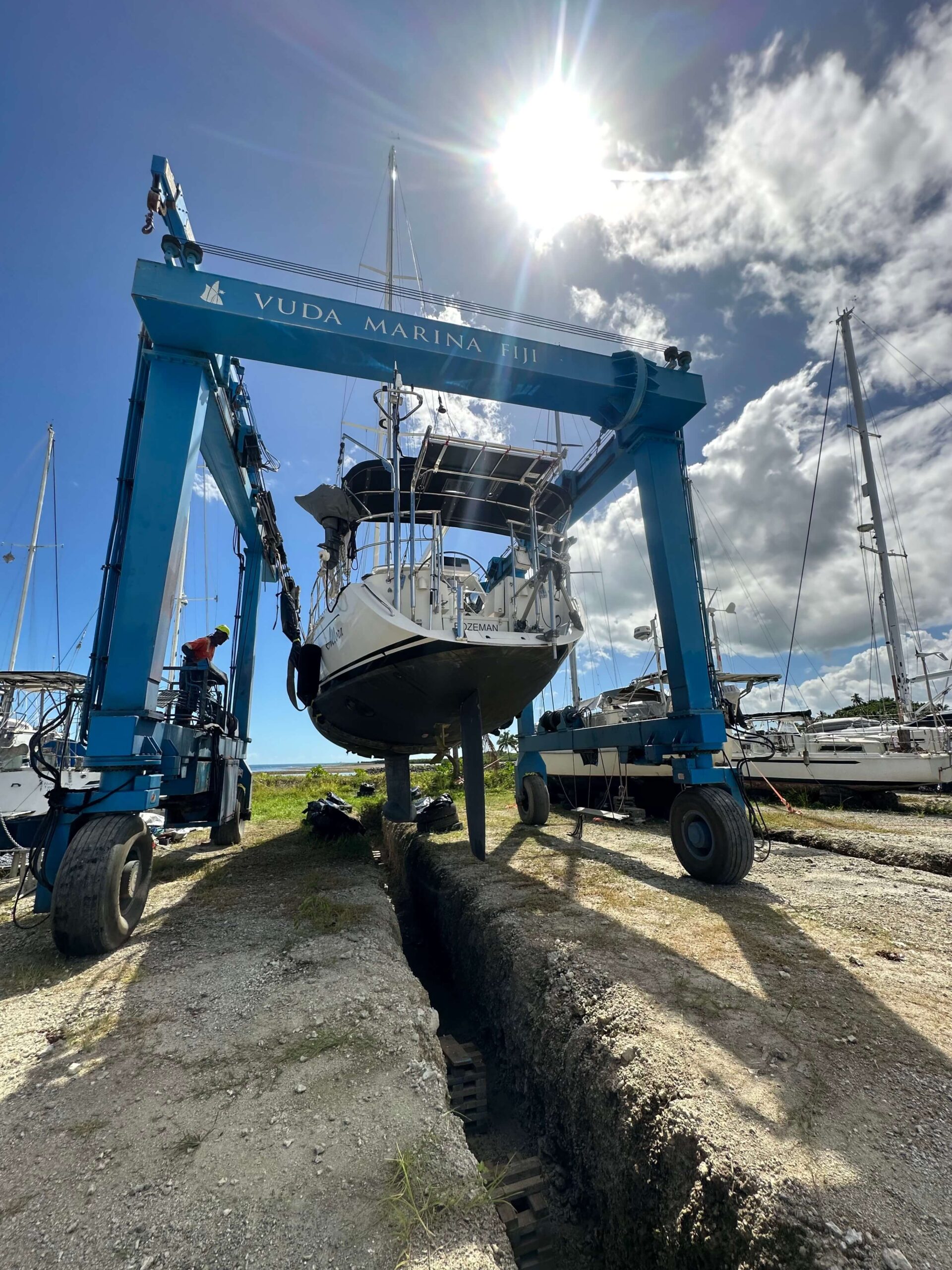



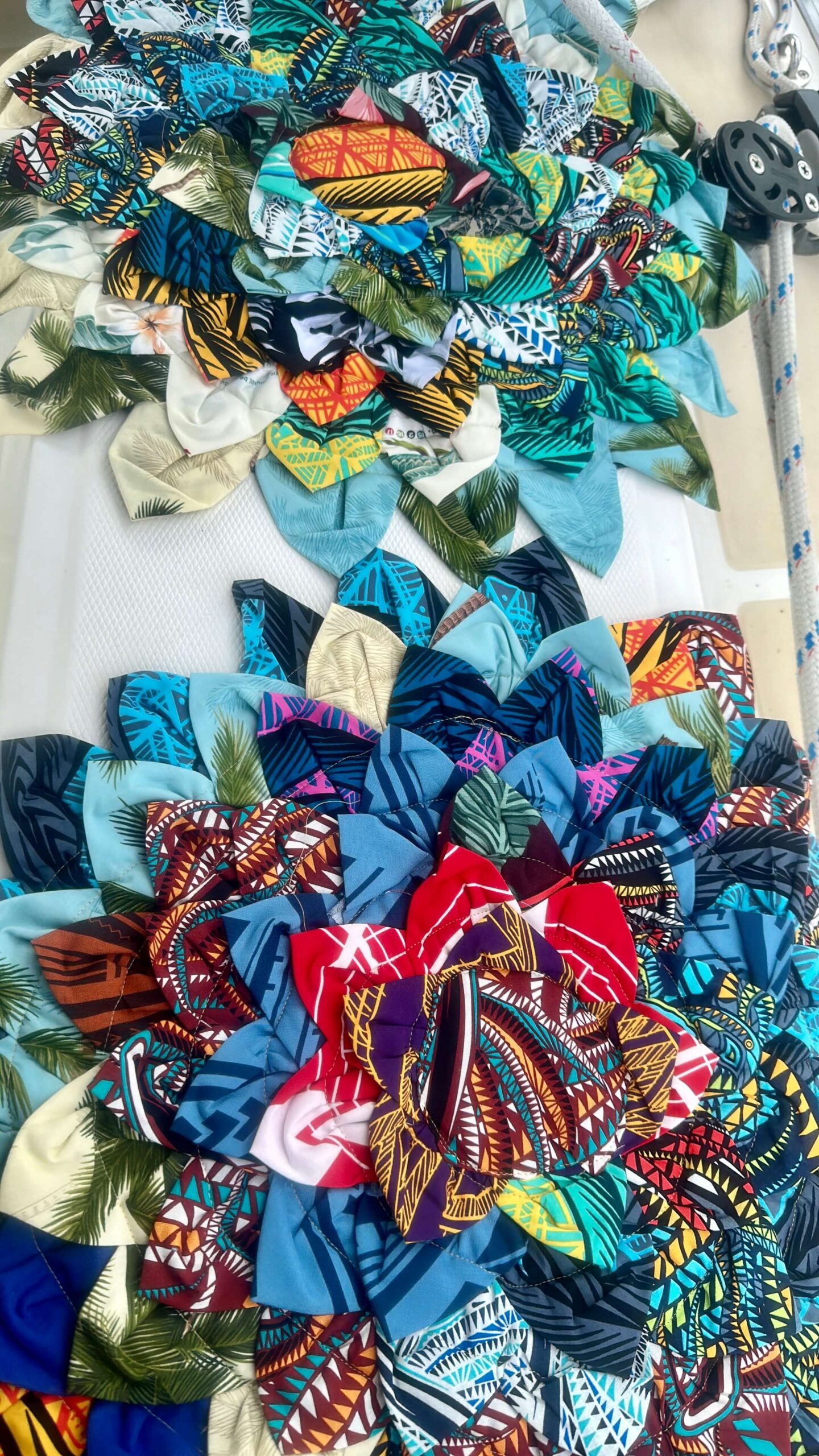
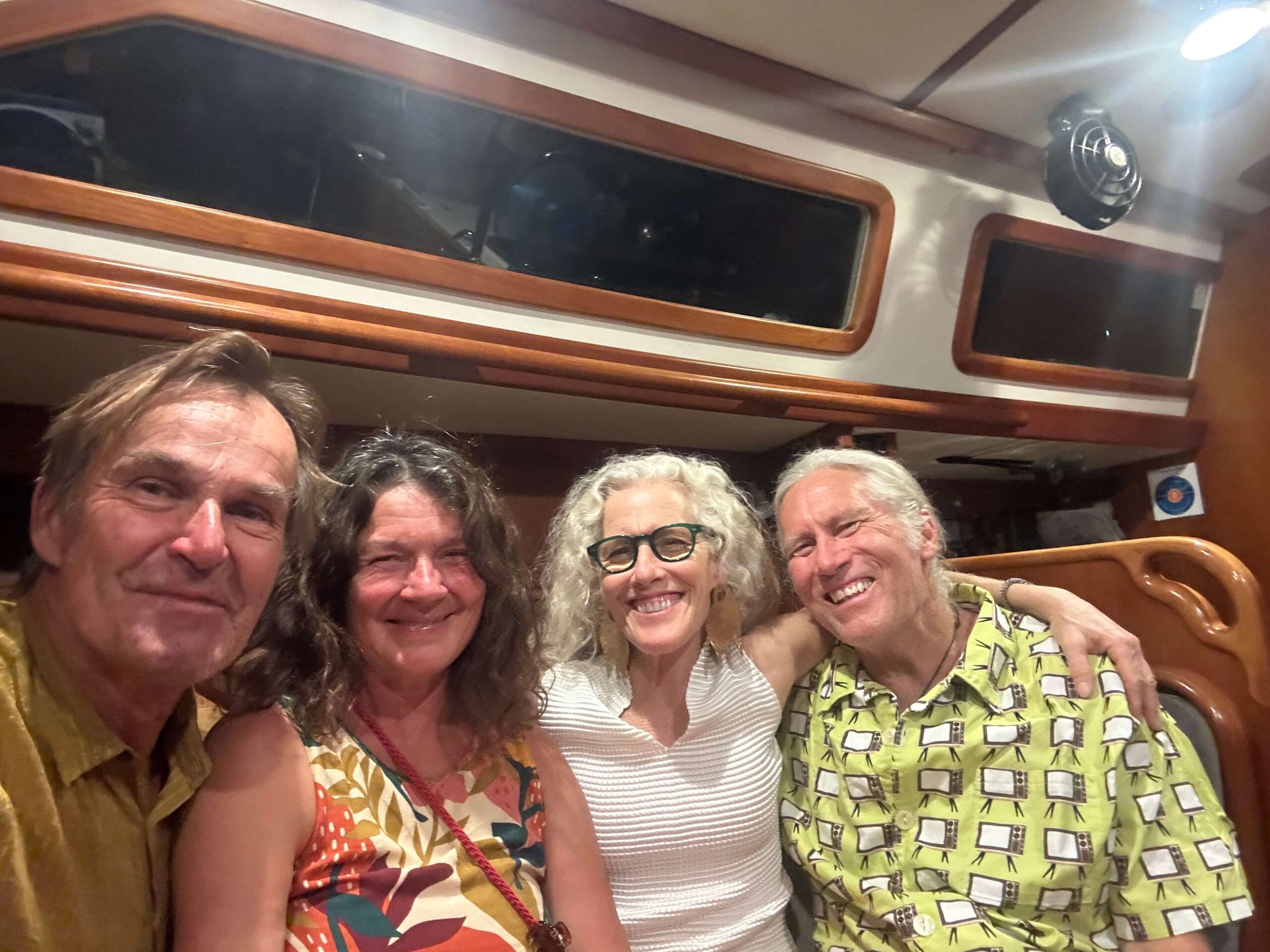
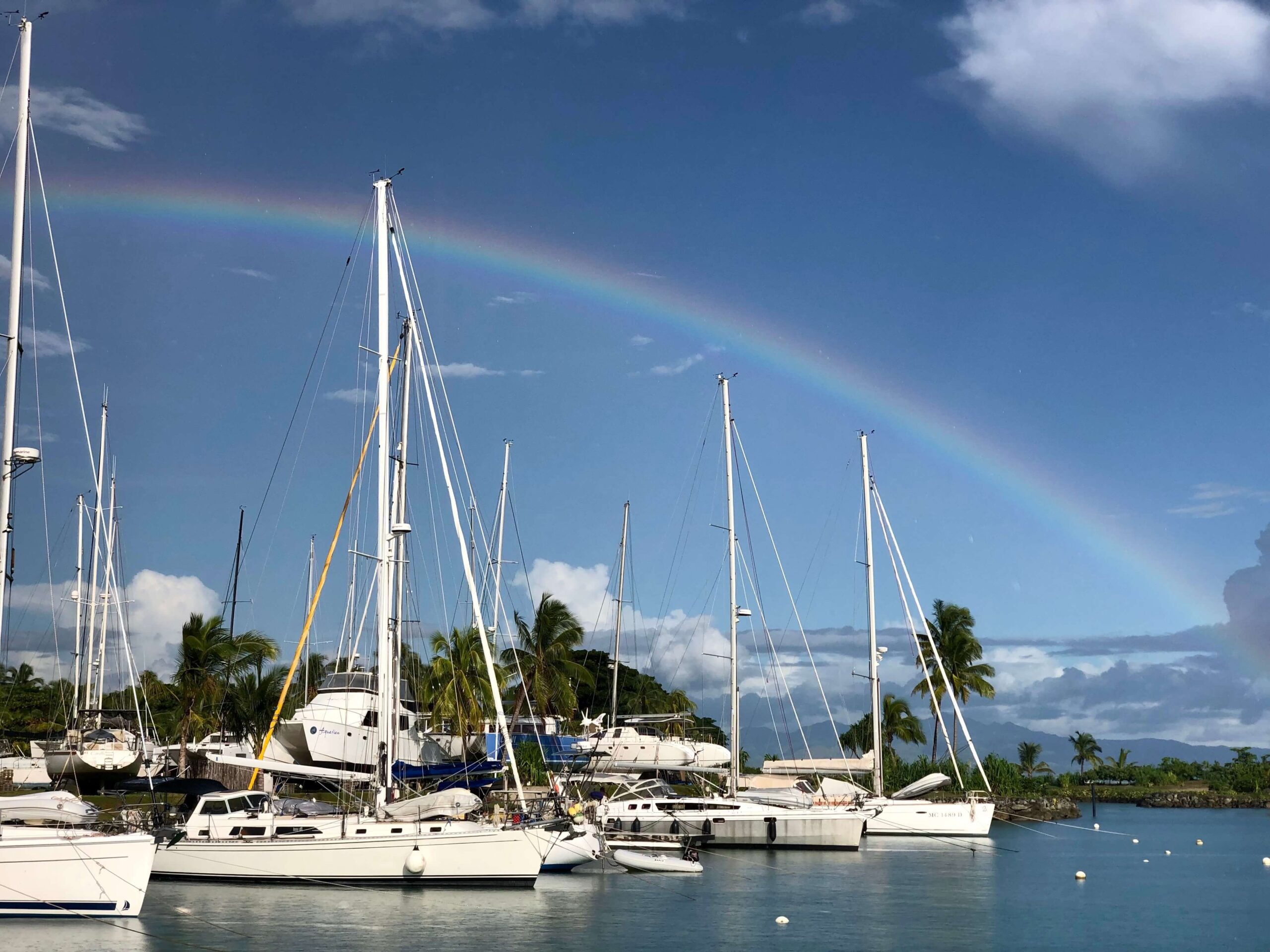
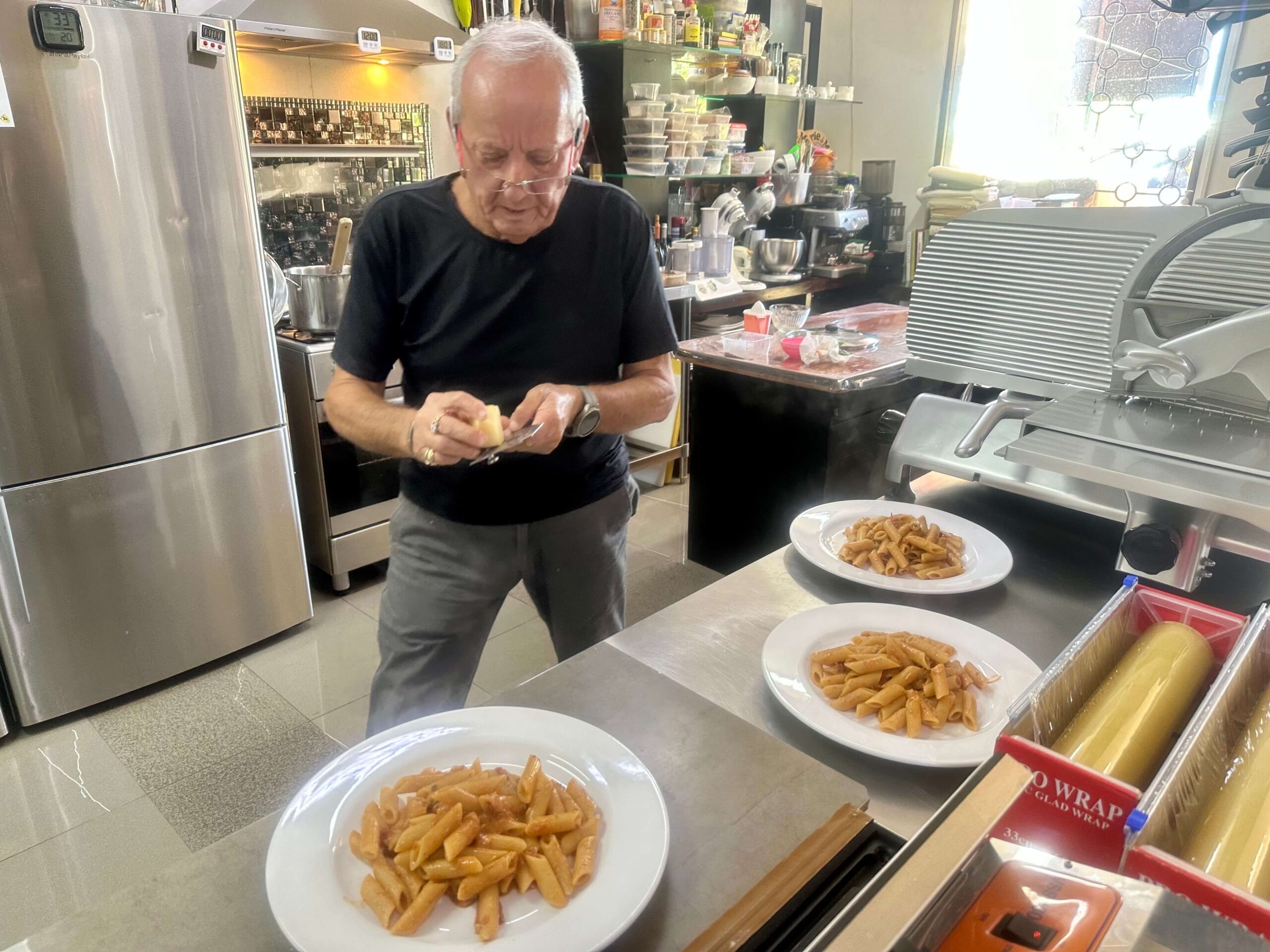

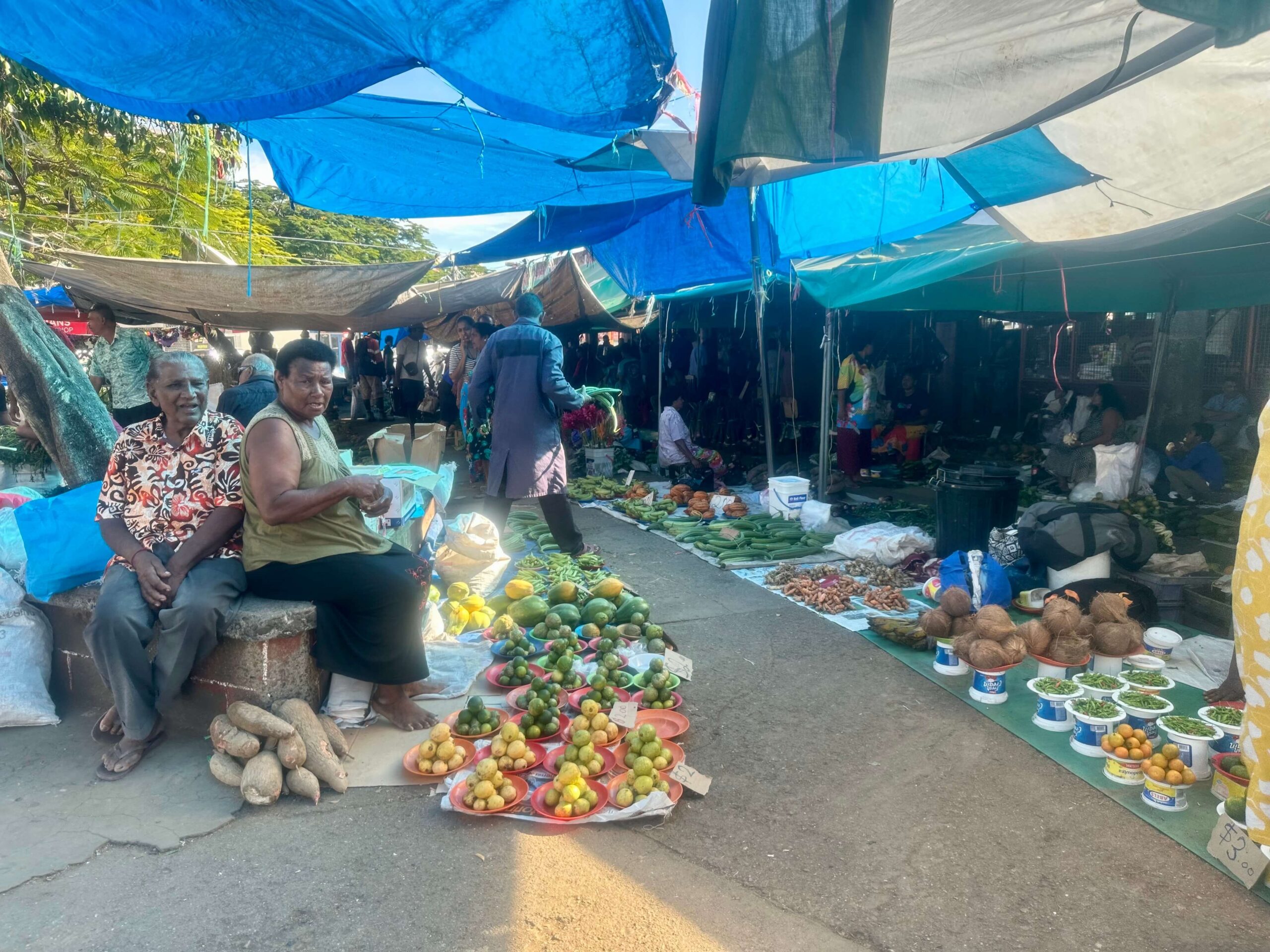
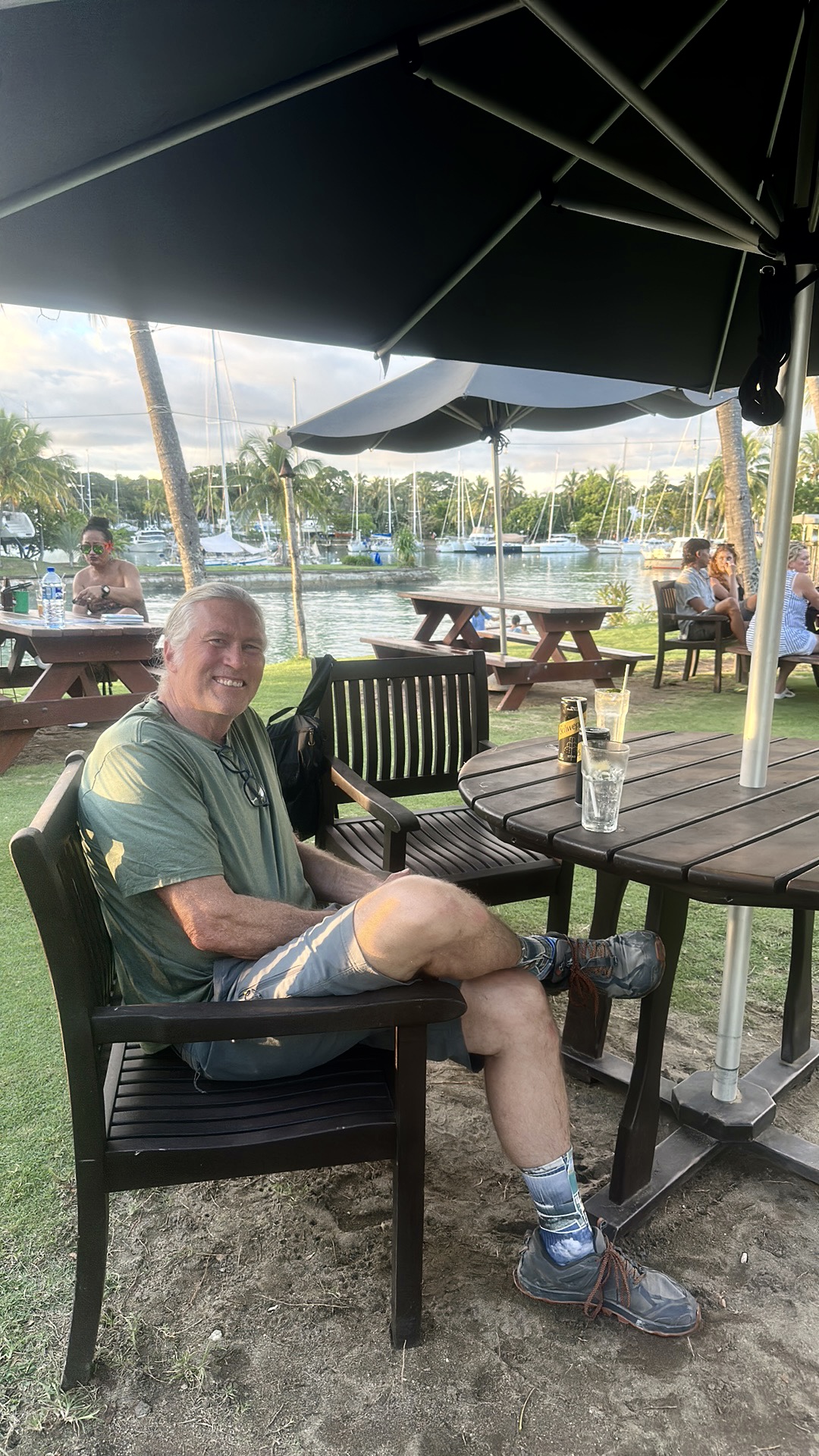
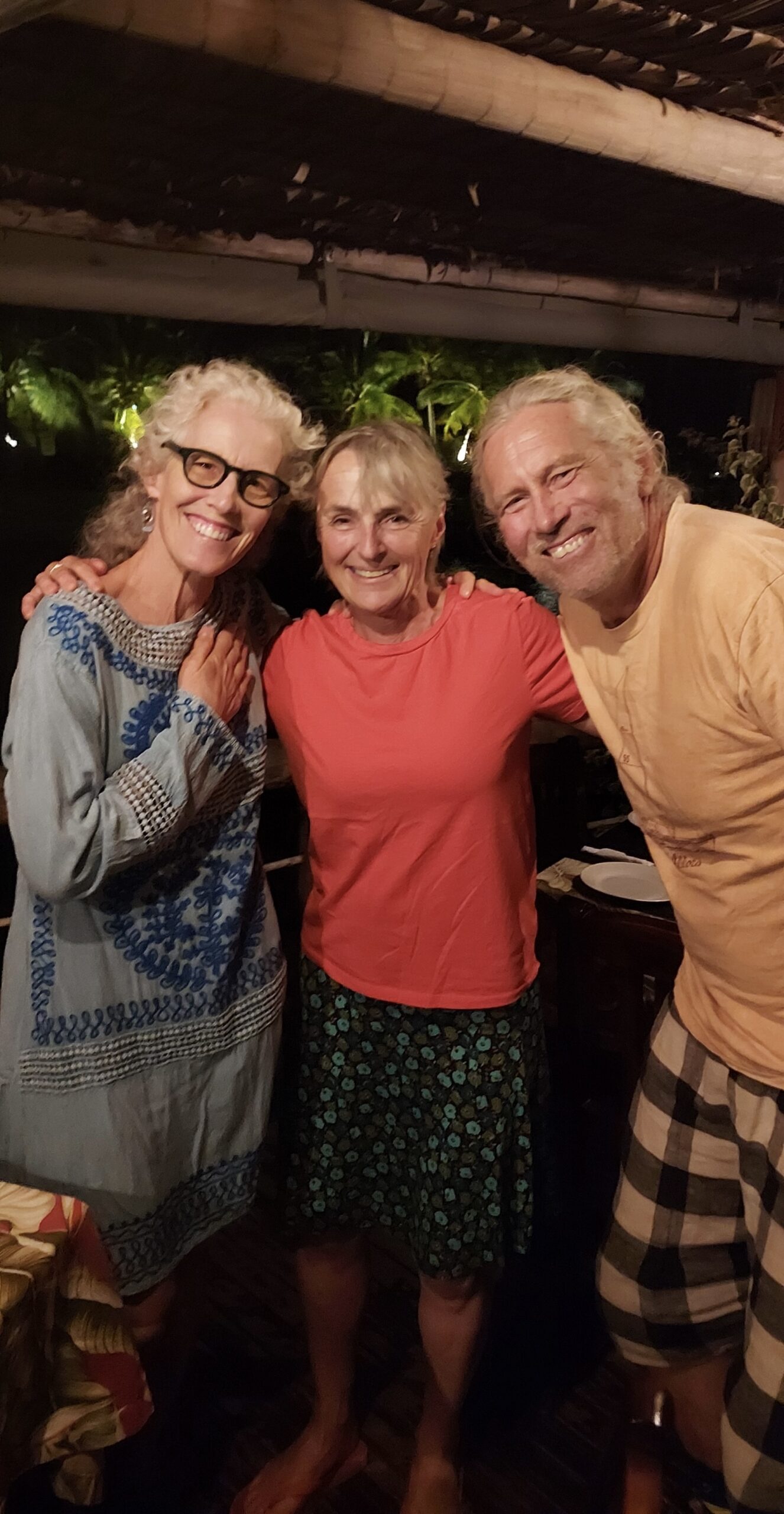

We’re heading offshore tomorrow, the 18th of May, so check out the ‘Where In The World Is Allora’ link to follow our track and otherwise, the Contact Us page has all the ways to reach us. Haley and Liam are heading over for a couple of weeks from Nelson, NZ, so we plan to sail and meet them in Savusavu on the island of Vanua Levu.
As always, our Internet/Wifi/Cell connections can be tenuous, so if I write you, respond using the same method so we have the best shot to reach each other. Be well loved ones – we are always missing you!
For this blogpost Diana asked for some words about “the reality of time,” which seems rather an ambitious metaphysical topic for a blog about two people goofing off on their sailboat in beautiful places. But here goes.
Time? What time? As sailors “living the dream” obviously, we don’t ever have a “schedule.” We do whatever we like, whenever we like, for as long as we like. With a few caveats.
First there are a few not insignificant constraints imposed by Nature — forces in the natural world beyond our control (so all forces of nature), stuff like sea state, wind, cyclones, storms, calms, ocean currents, physical laws governing displacement hull speed, gravity (this is a big one), the sun (and the massively destructive force of UV), the evil spirit that inhabits machinery, salt (never to be underestimated), electrolysis, whatever it is exactly that makes rust, and also biological forces like the stuff that grows on Allora’s bottom no matter how much expensive, toxic paint we apply, and Covid 19.
Then there are a few, also not insignificant constraints imposed by Governments — most importantly border formalities, and arbitrary human designations of authority abstractly represented as nationalities.
Then there is the stuff absolutely everyone contends with, sailor or no, like the second law of thermodynamics and Space and Time, or spacetime, or whatever this stuff we all swim about in is properly called.
We calculated that we were two months worth of Time behind “schedule” for most of 2021 and well into 2022 when all of the above mentioned irresistible forces collided with the expiration of our New Zealand visitor’s visas (extended at least four times because of Covid) on June 30, 2022. (And also, Winter, that ominous and unpleasant climate event of the mid and high latitudes which seems to come up much more frequently than a reasonable, fun-loving sailor might like).
We had a mighty to-do list, and spent most of the months of May and June feeling fairly overwhelmed as we tried to play catch up.
As to the metaphysical question of Time, perhaps it is philosophically or scientifically possible to question its objective existence (not that those are arguments I could ever hope to follow), but when all these forces converge, time can definitely feel in short supply, cramped, and very real indeed. We tried to remind ourselves, during rare moments of pause, that time, whatever it is, doesn’t really contract or expand. There’s always just today and what’s happening right now. Right? All of this busy-ness is just so we can sit around and procrastinate later, and find ourselves once again, about two months of time behind. ~MS

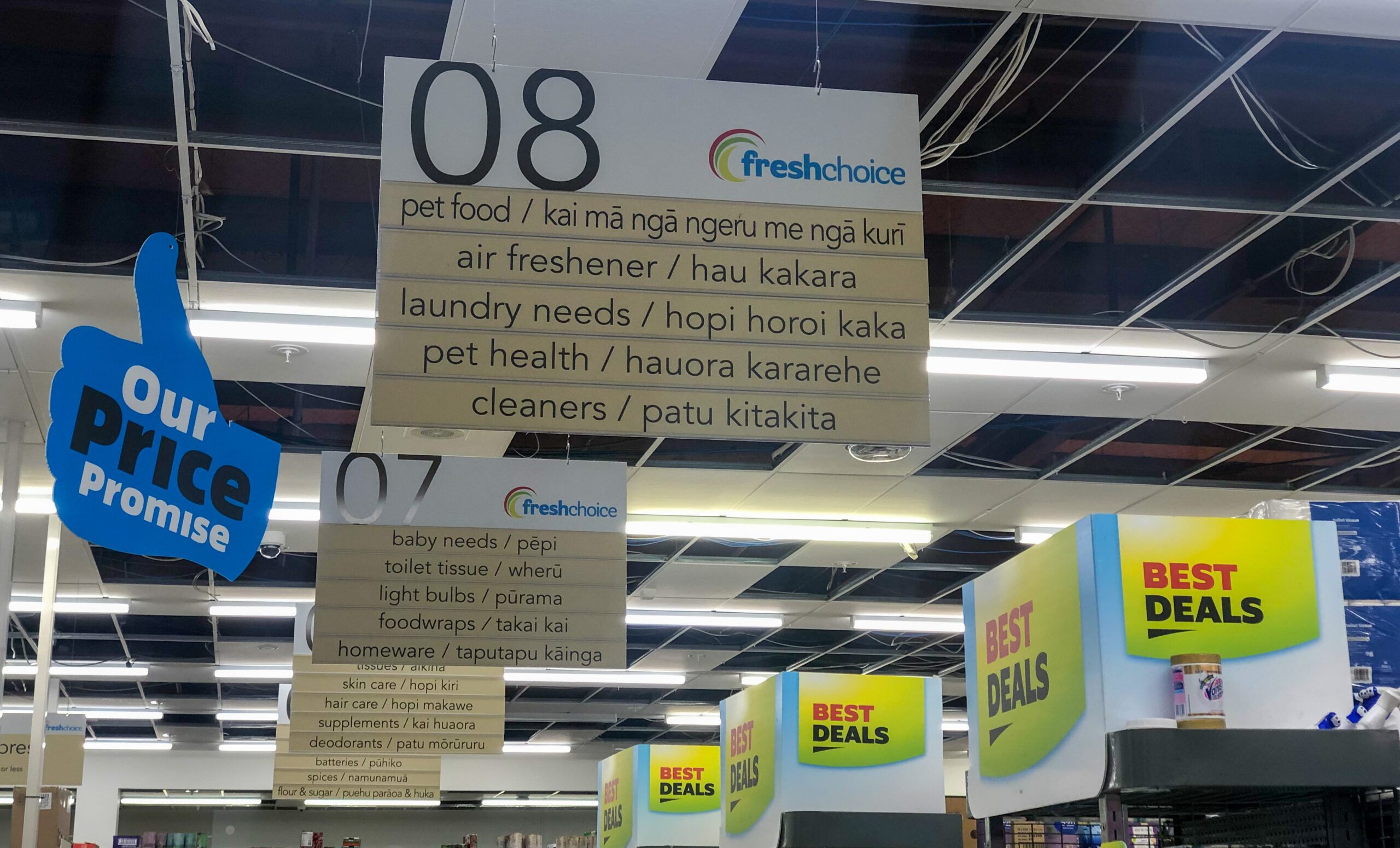

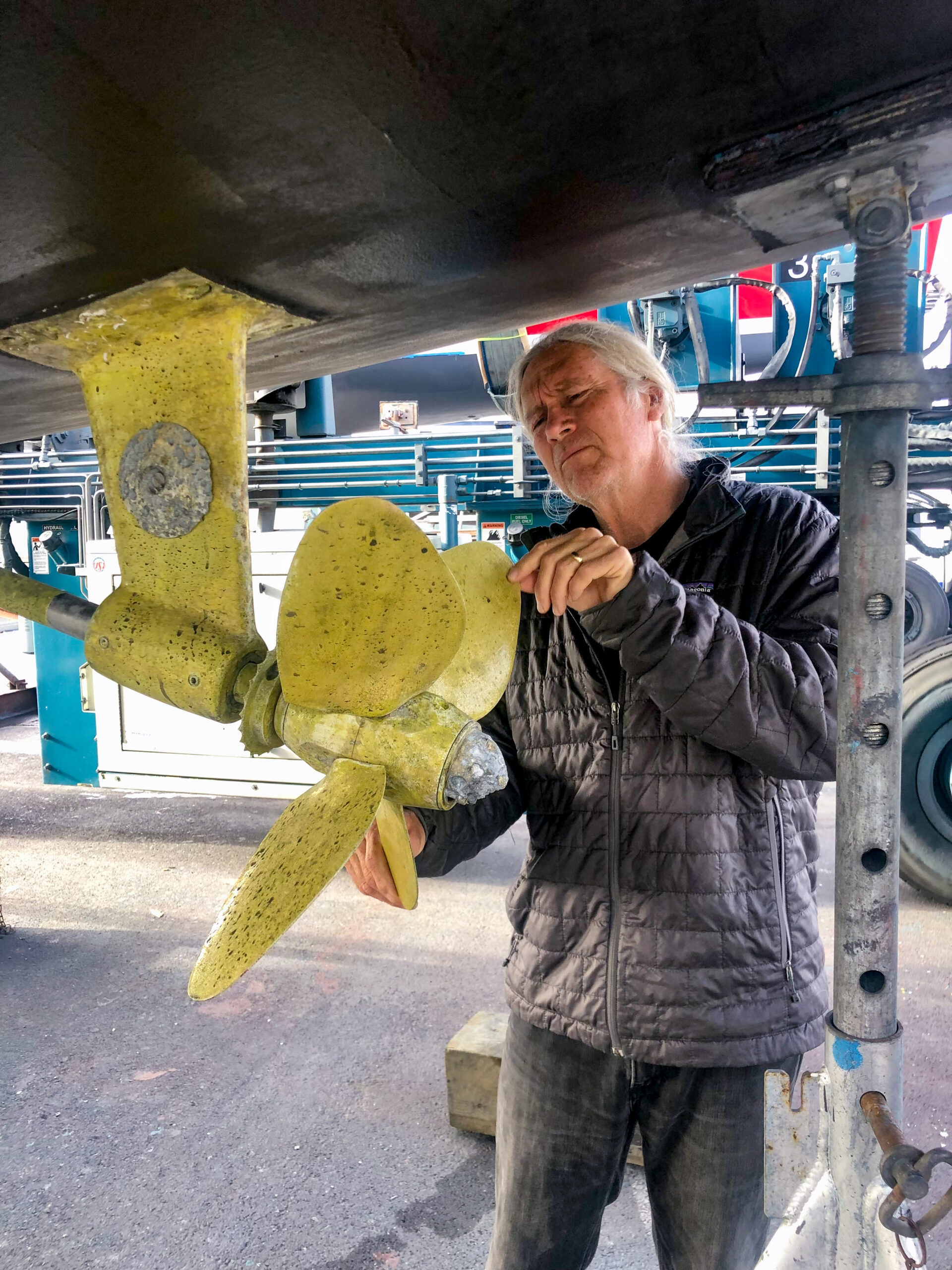
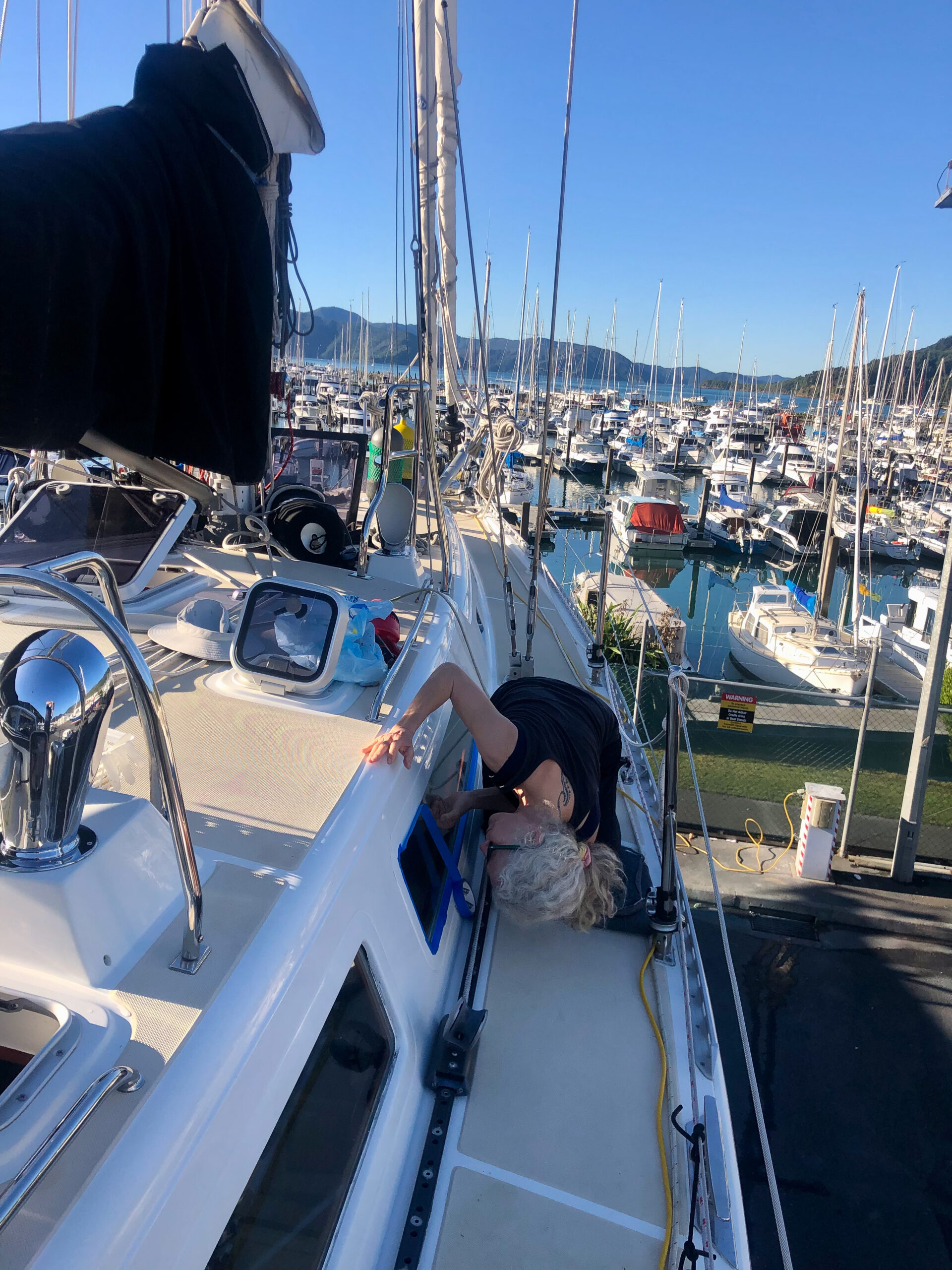
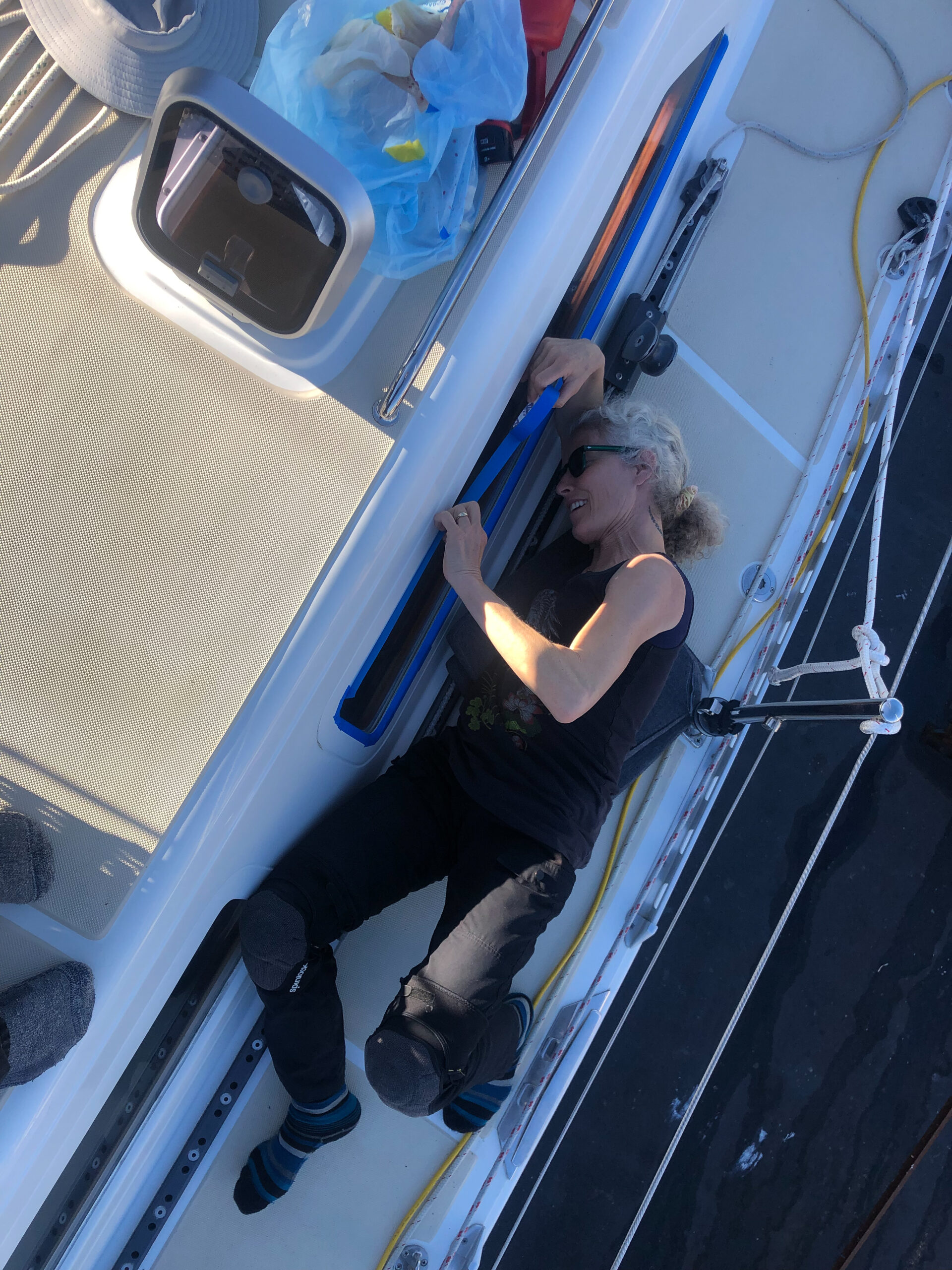
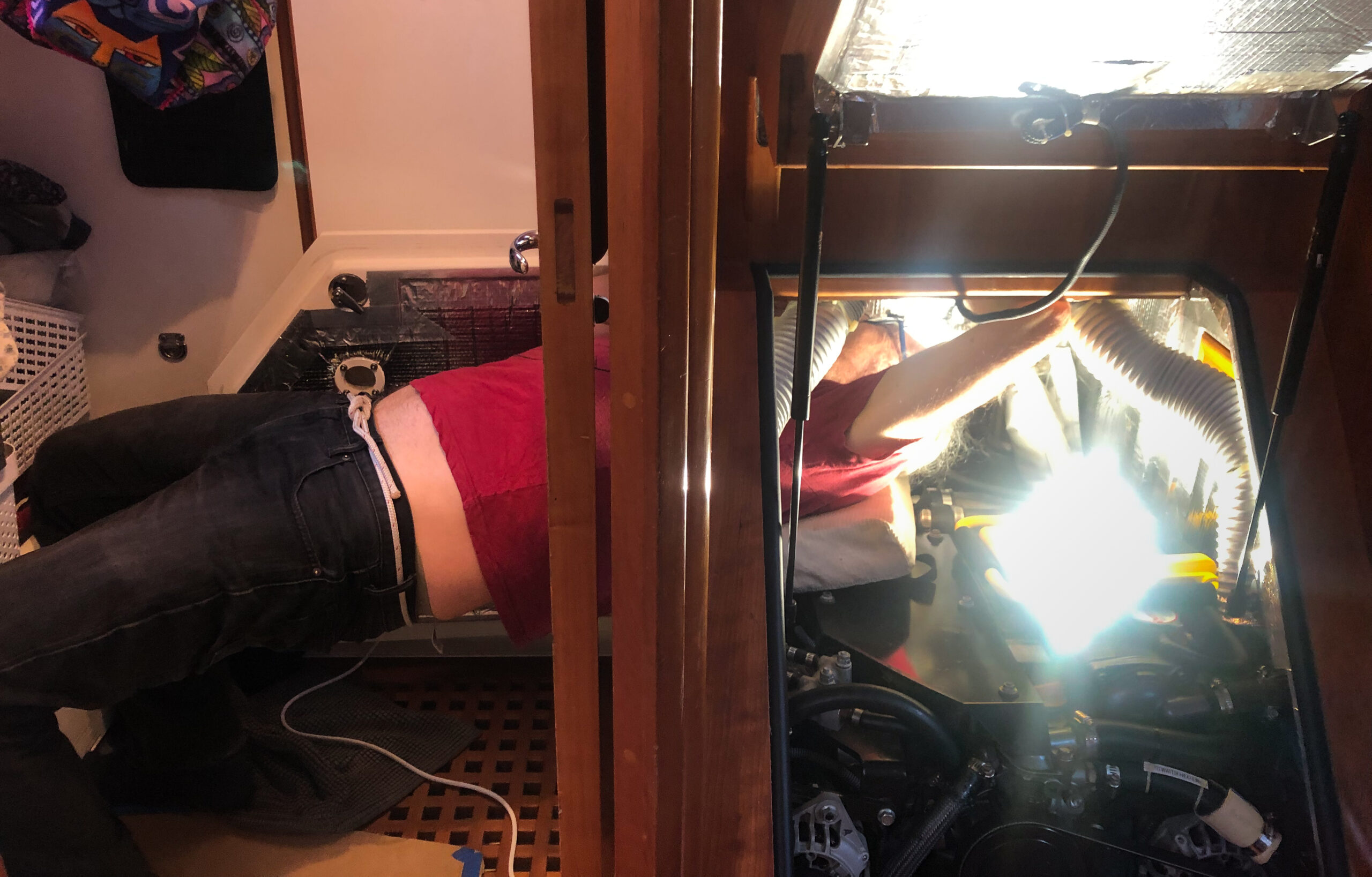
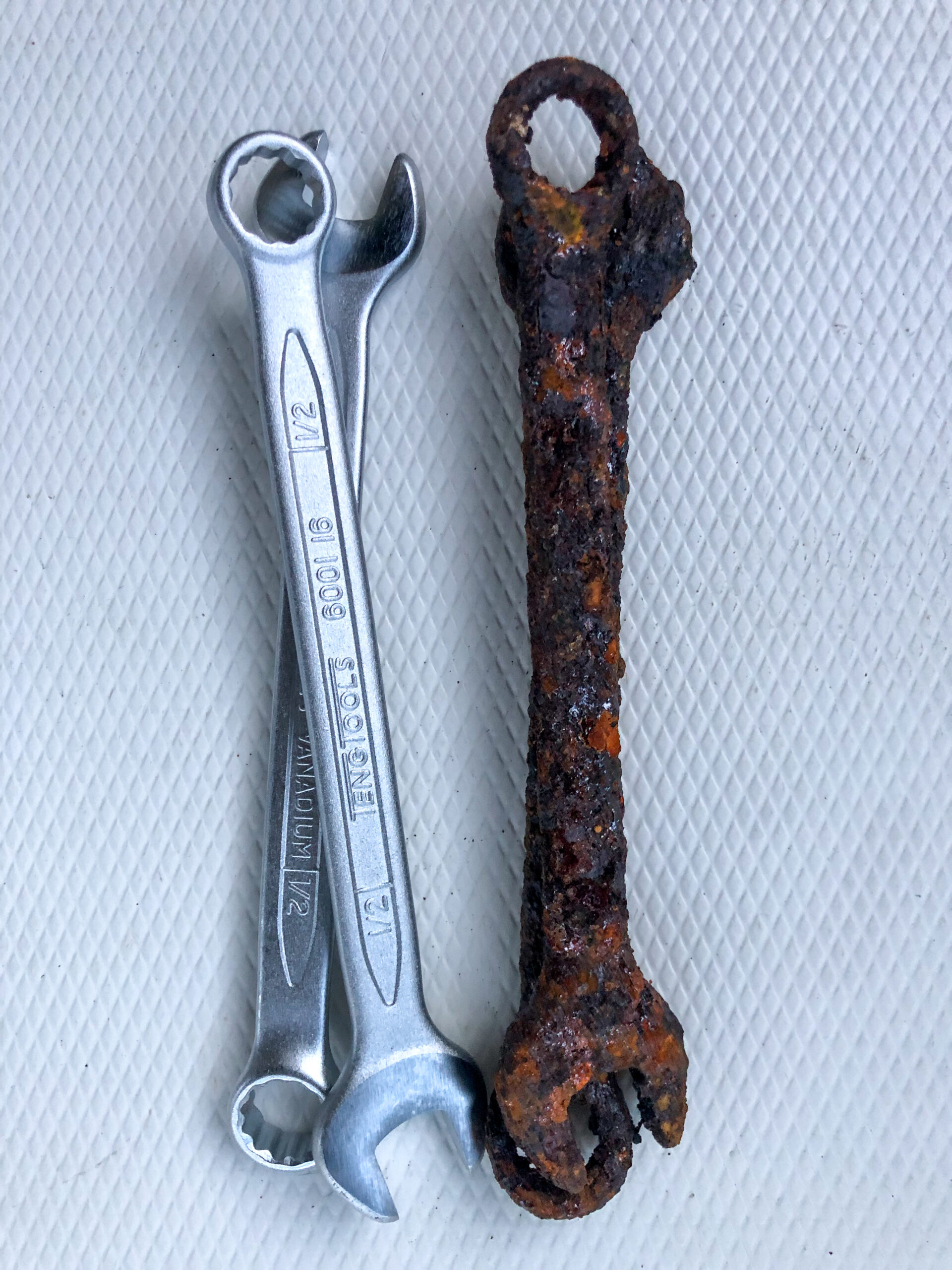
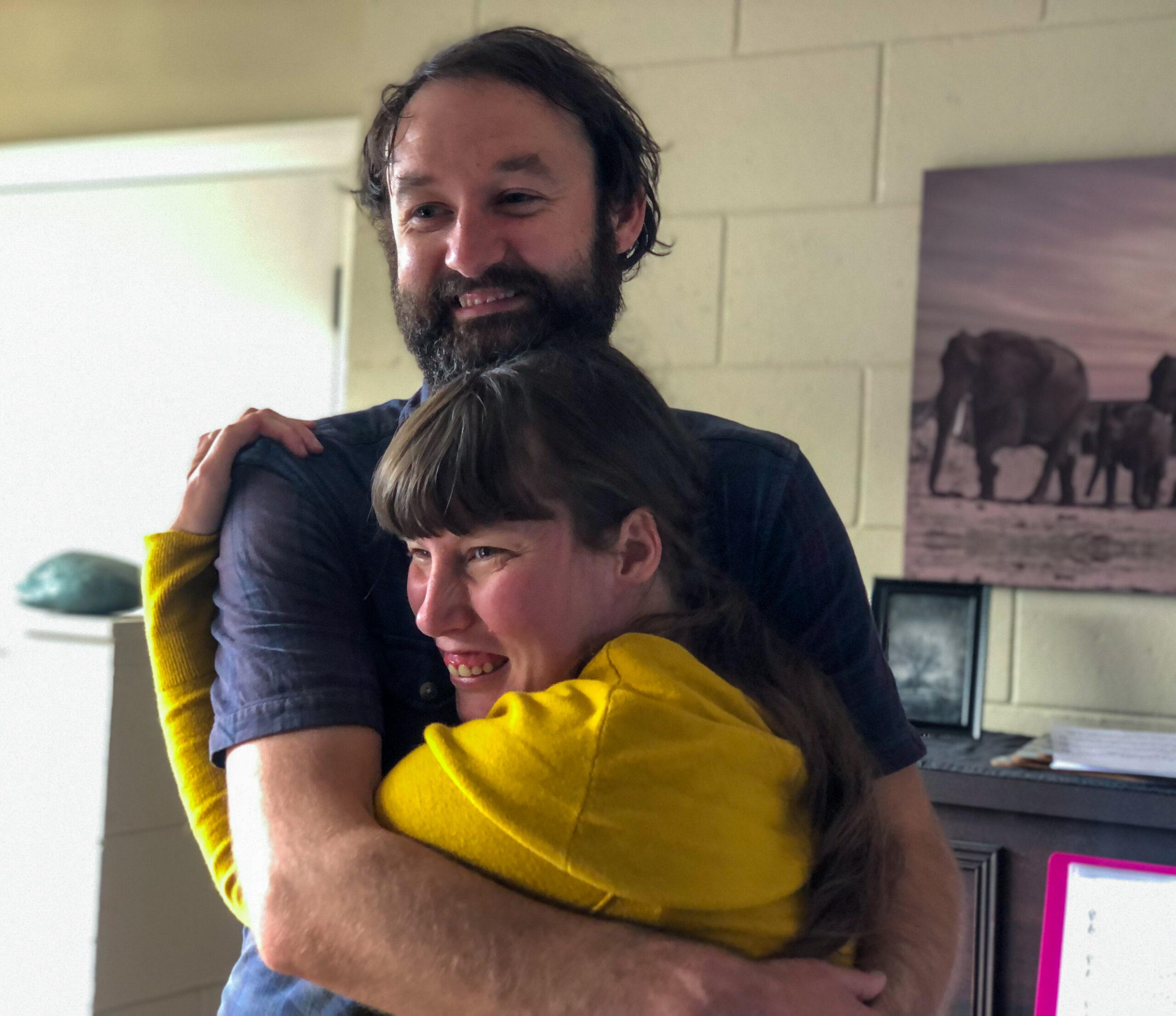
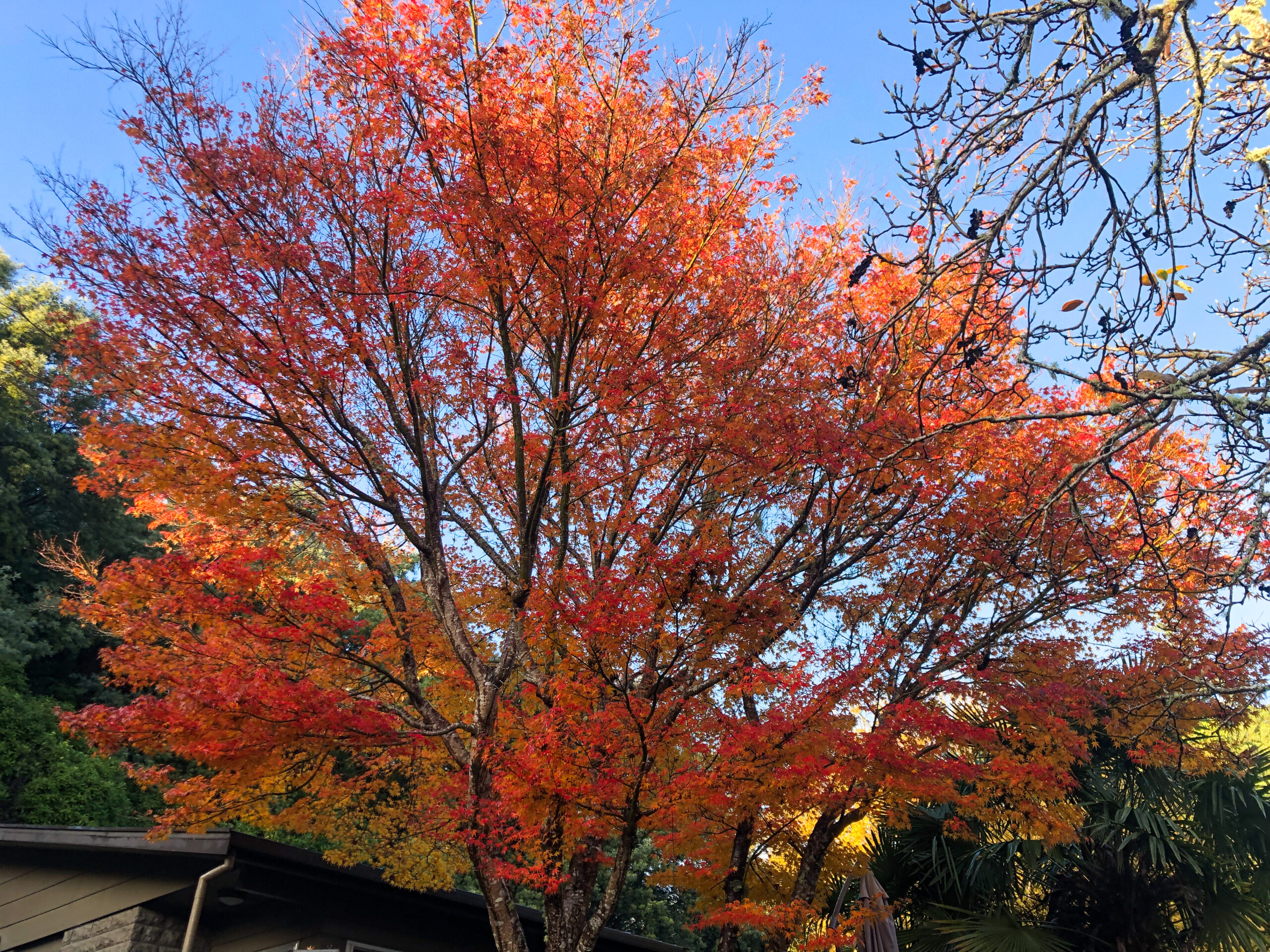
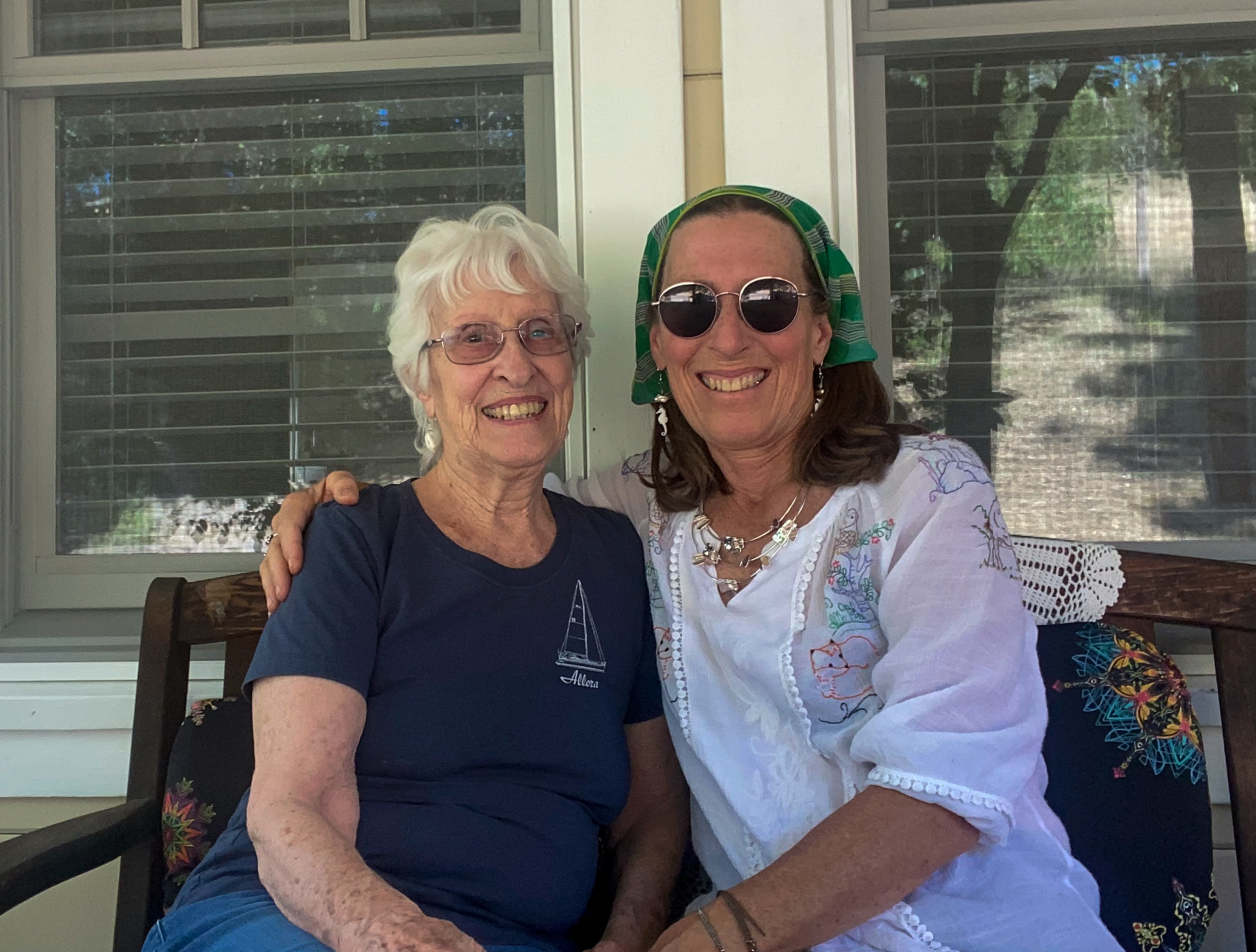

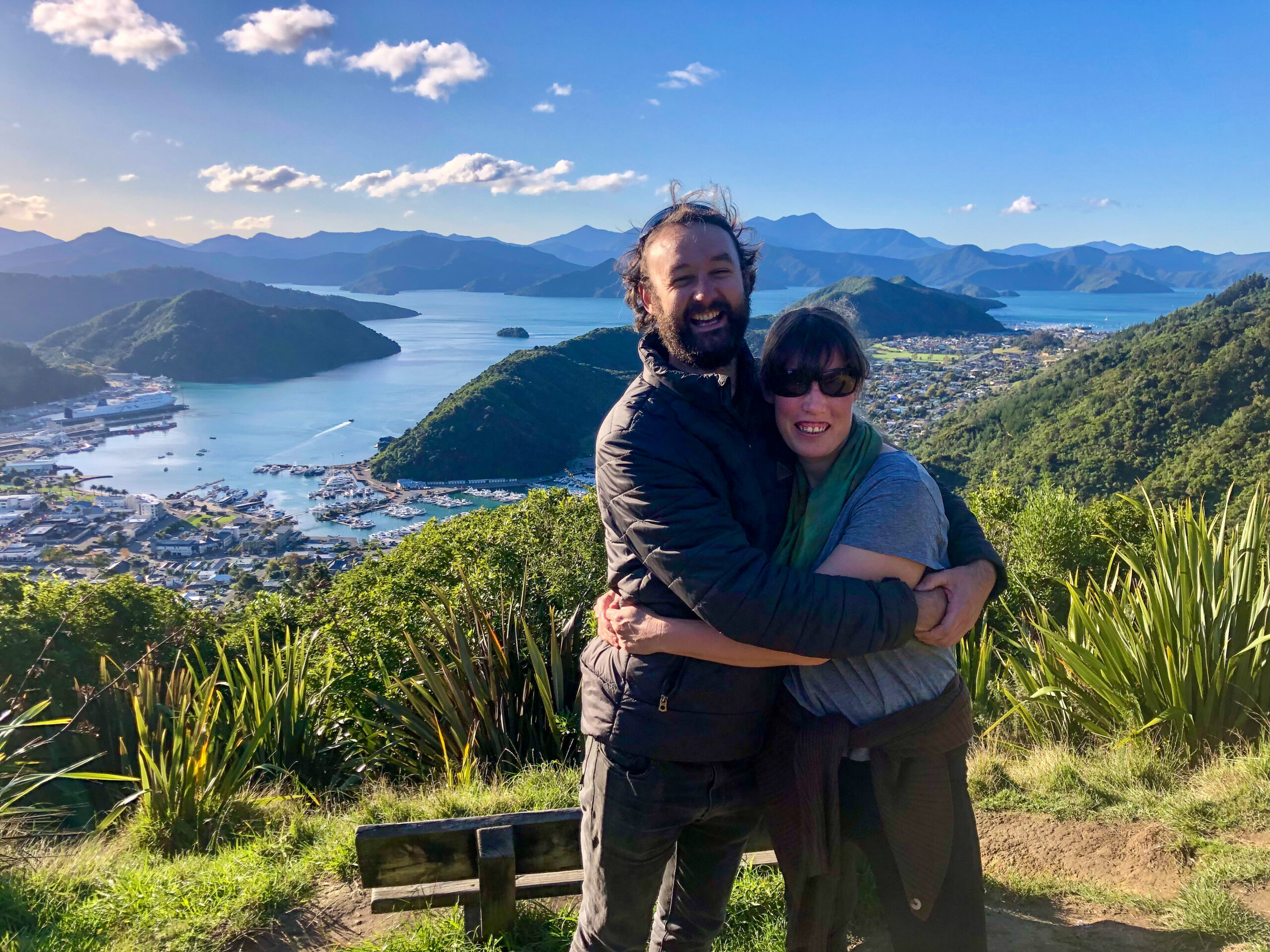
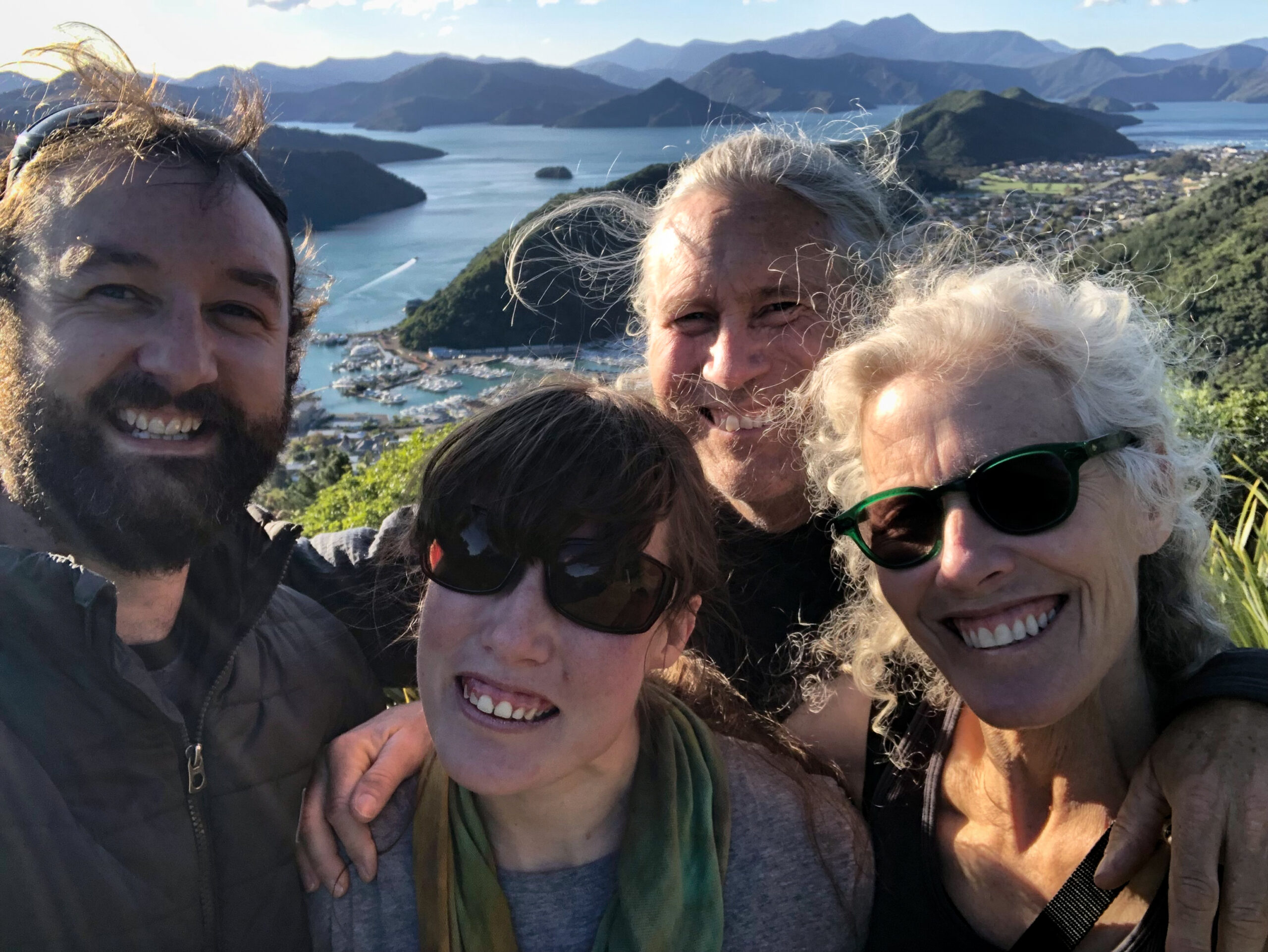
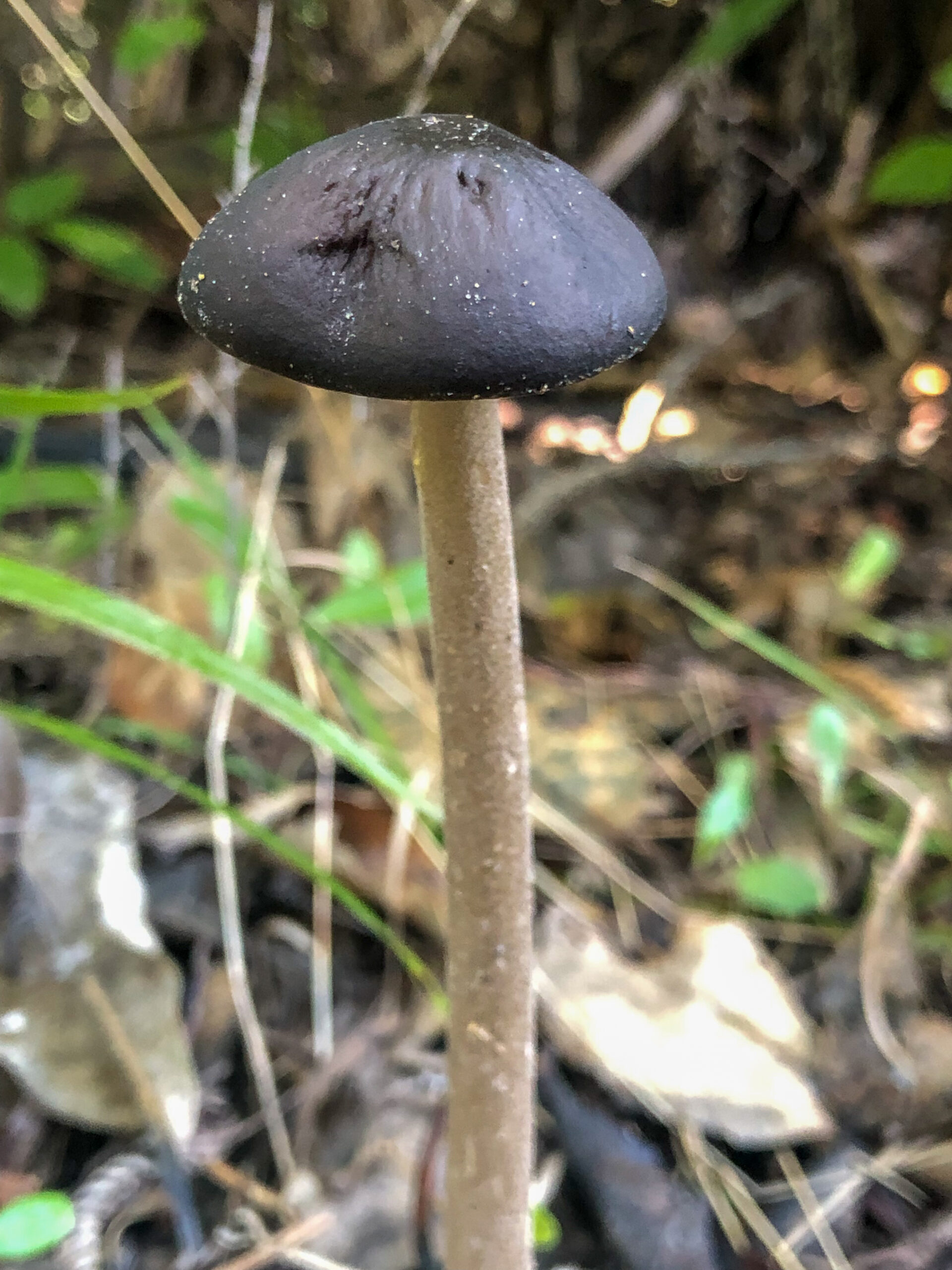


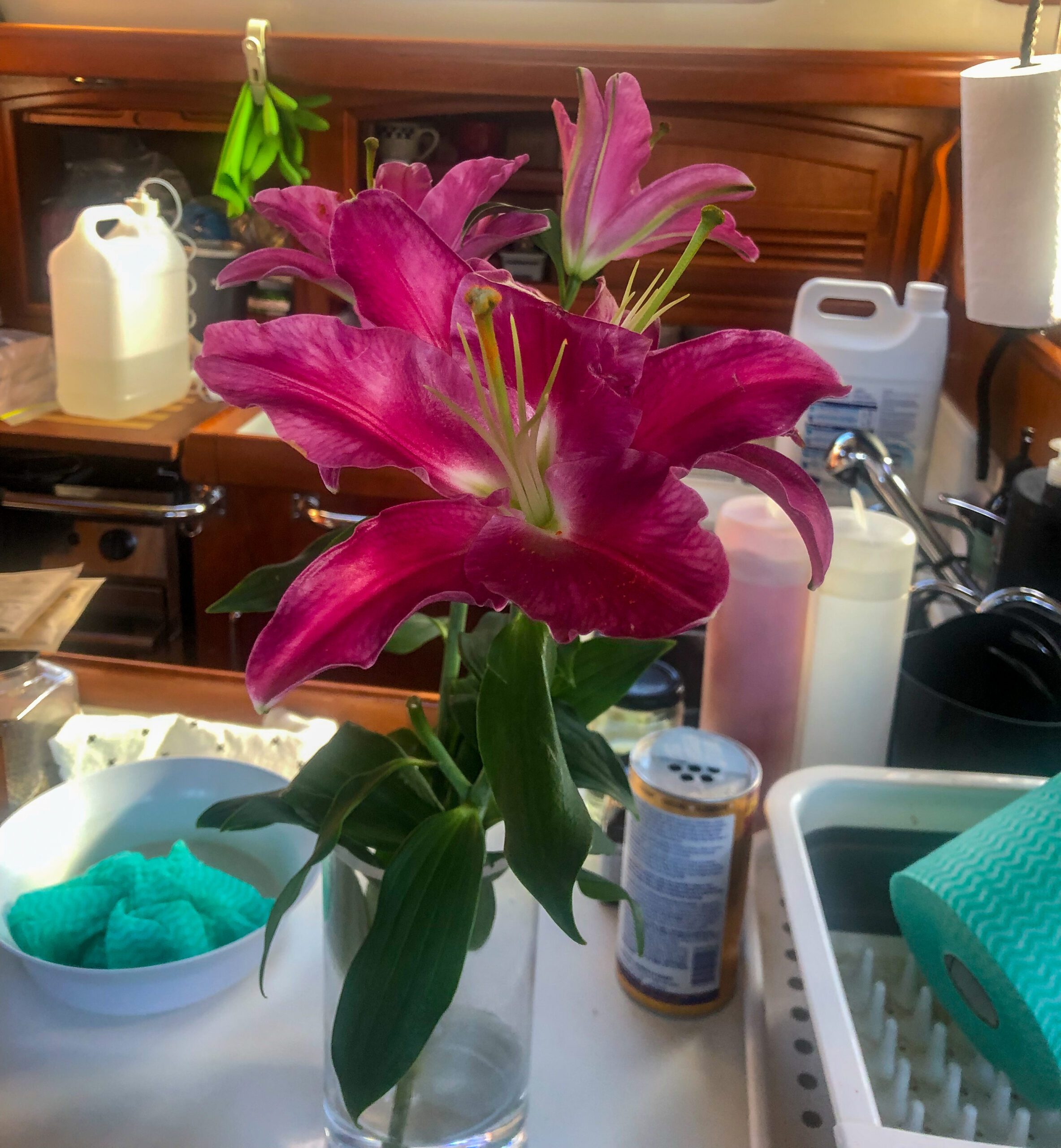
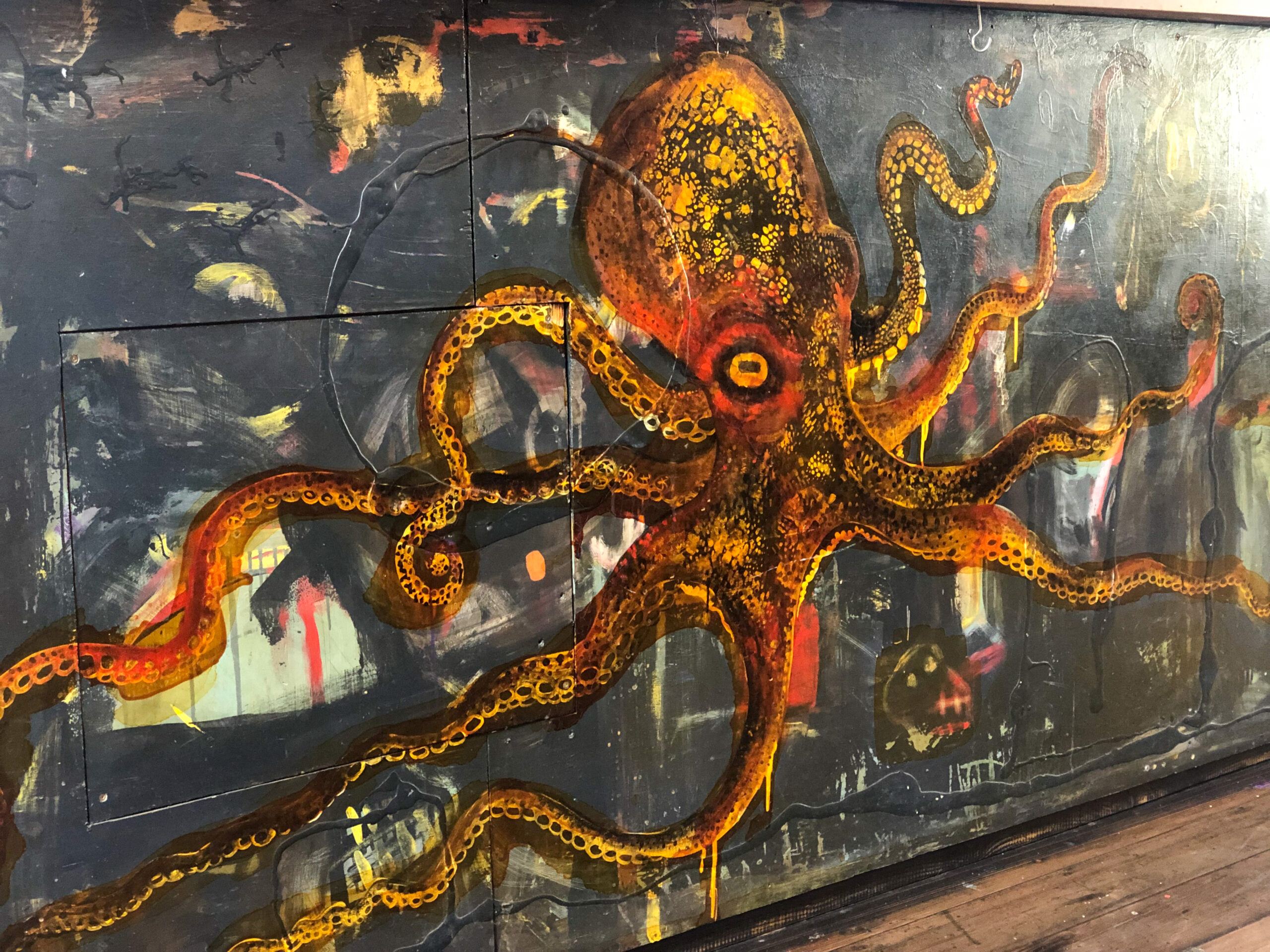

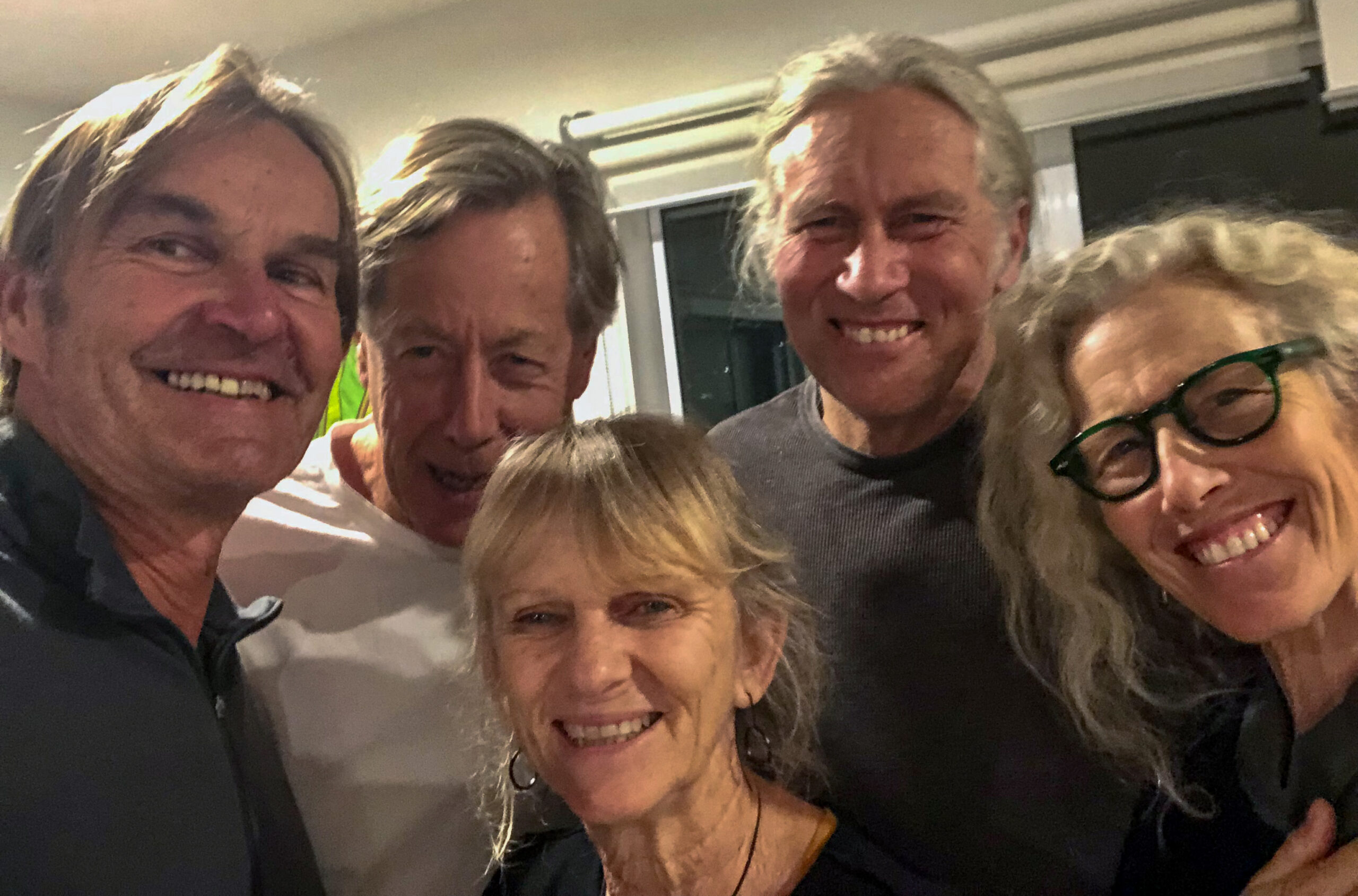

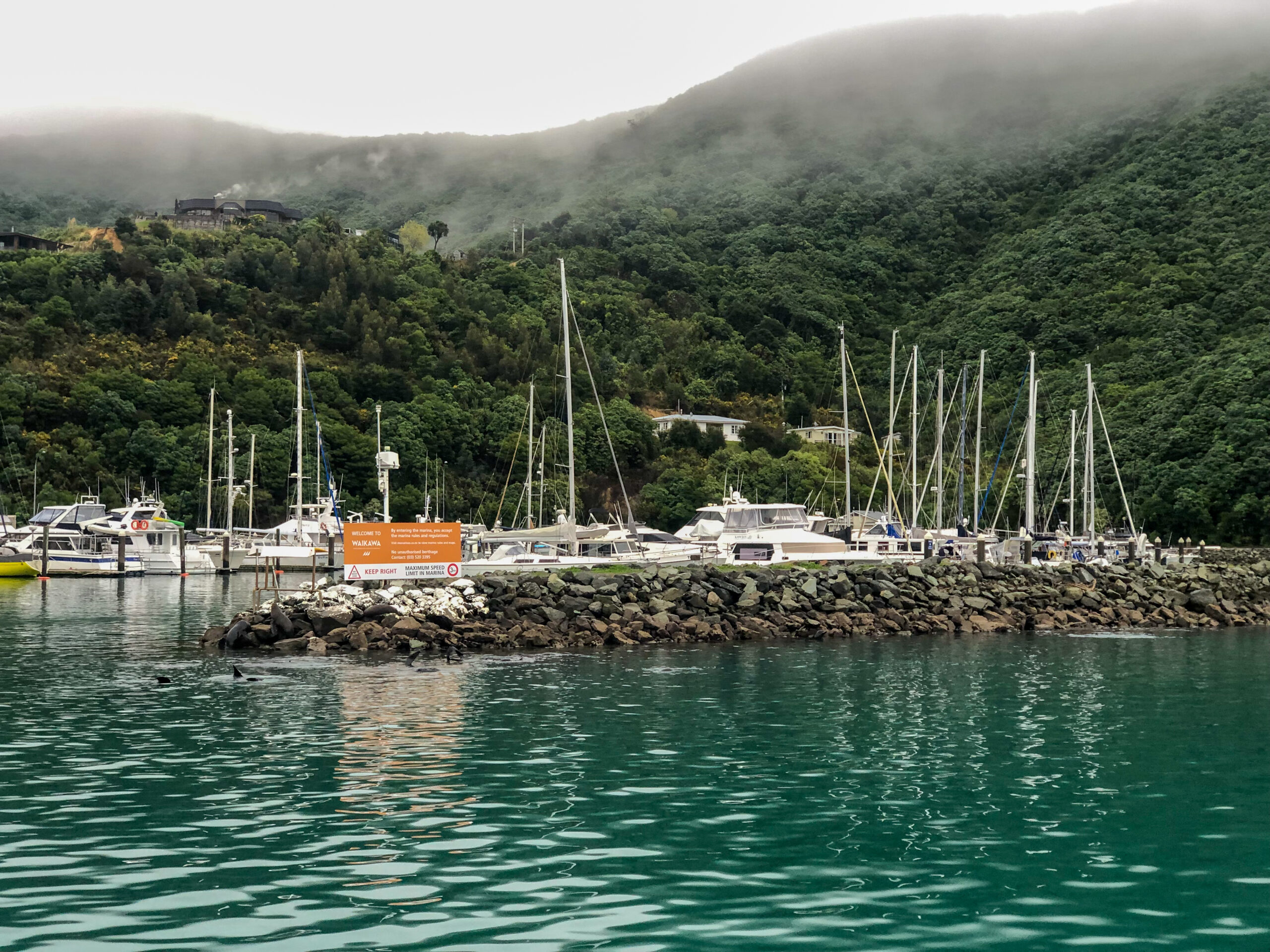
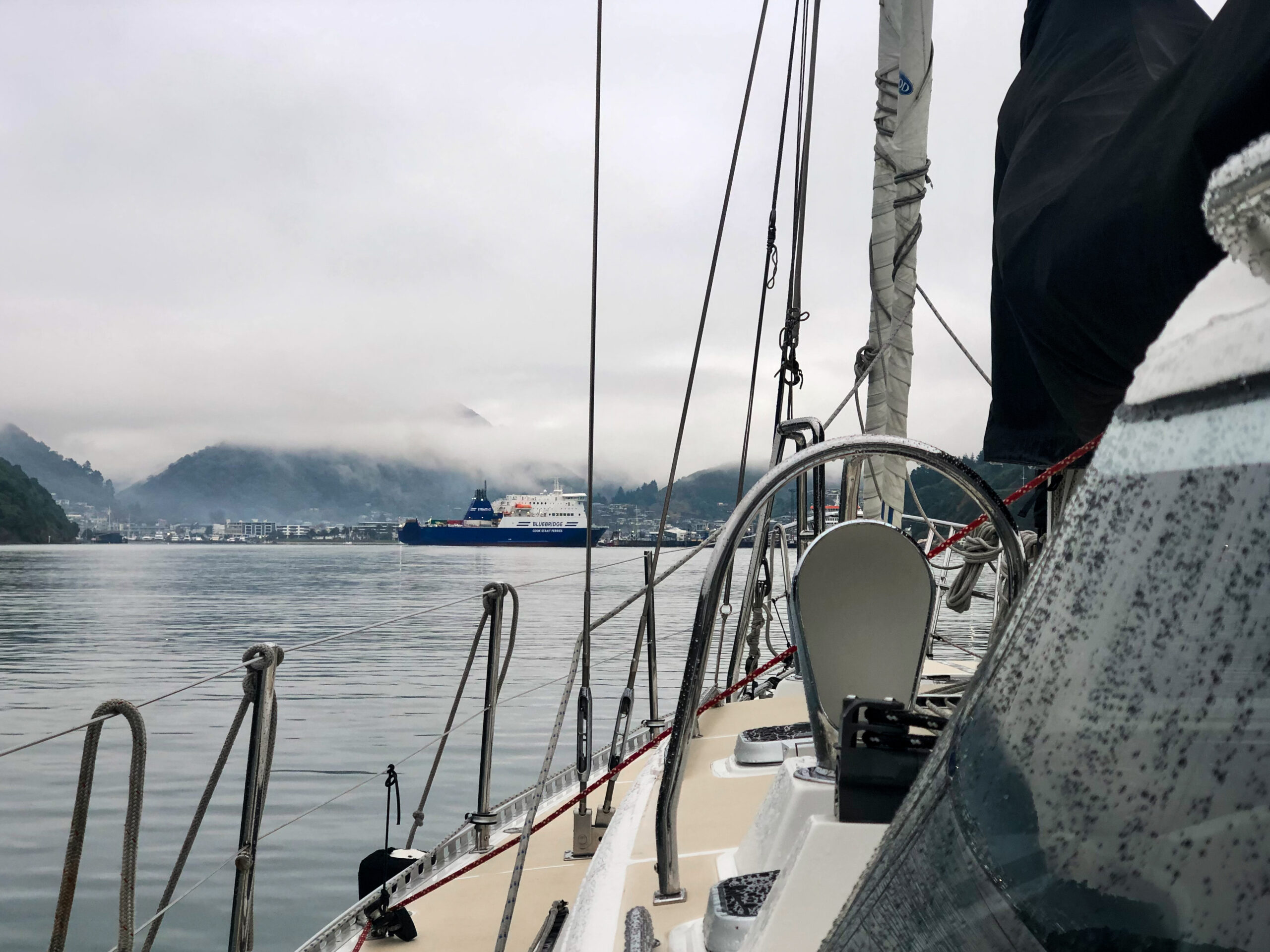
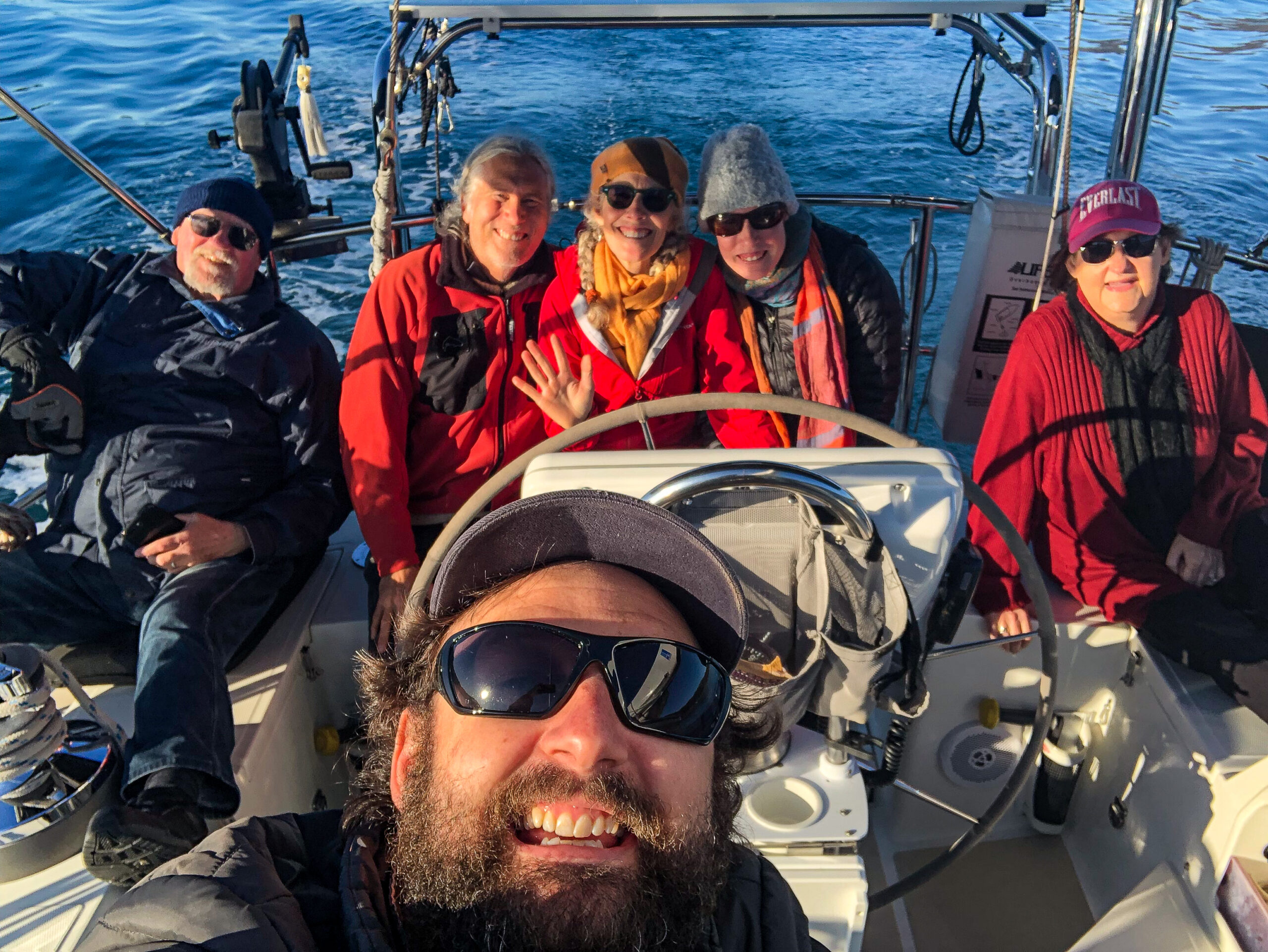

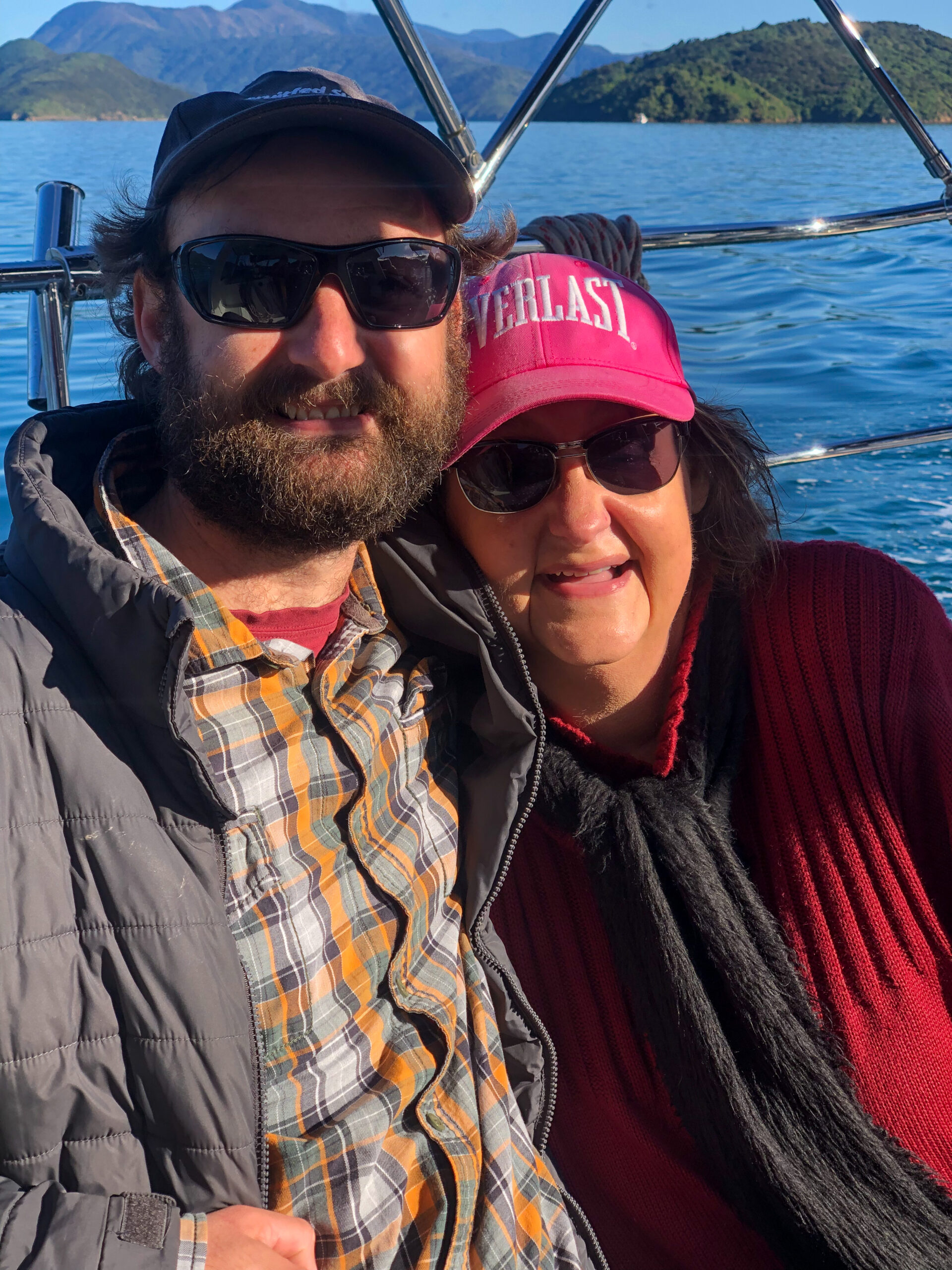
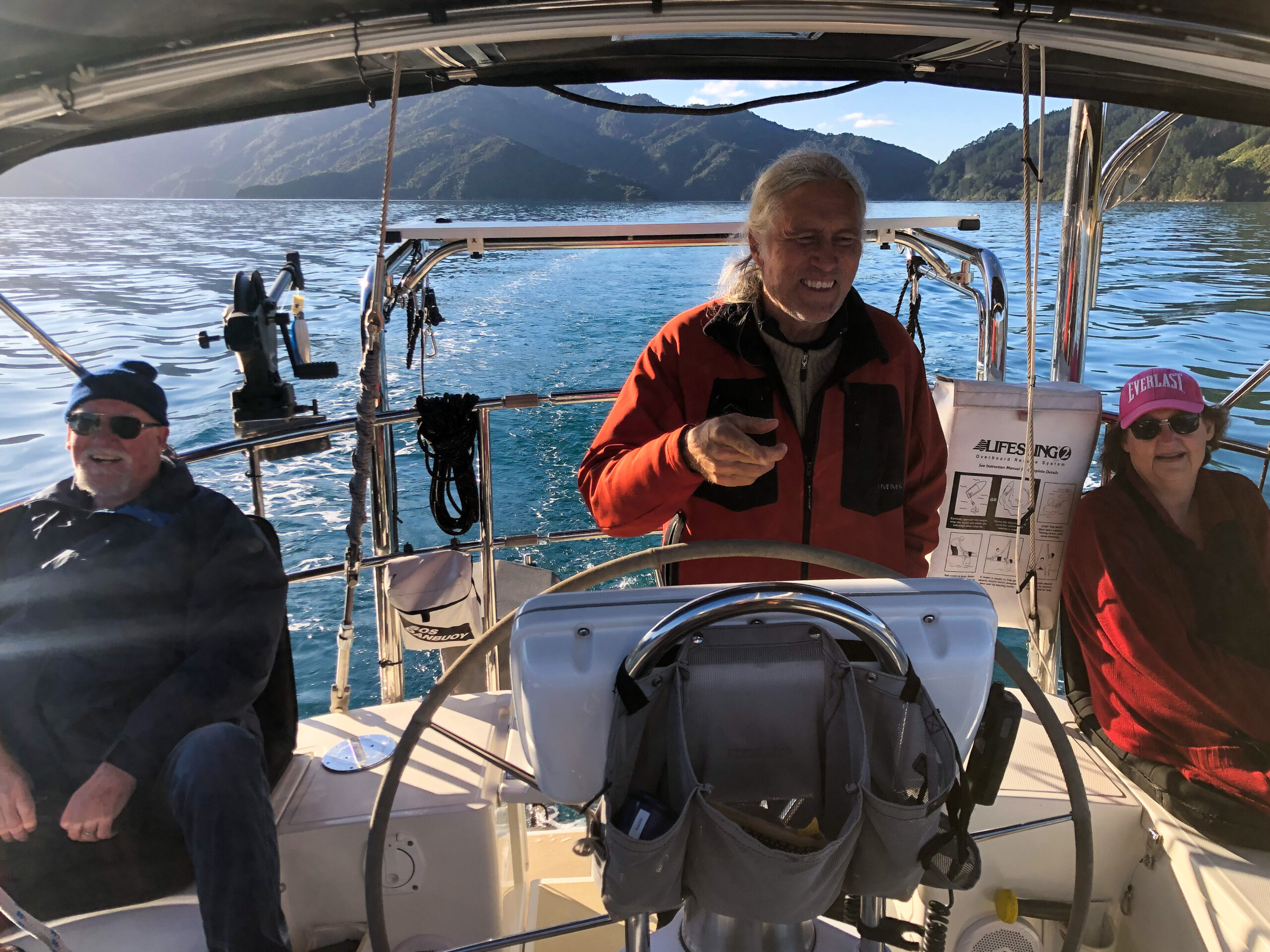
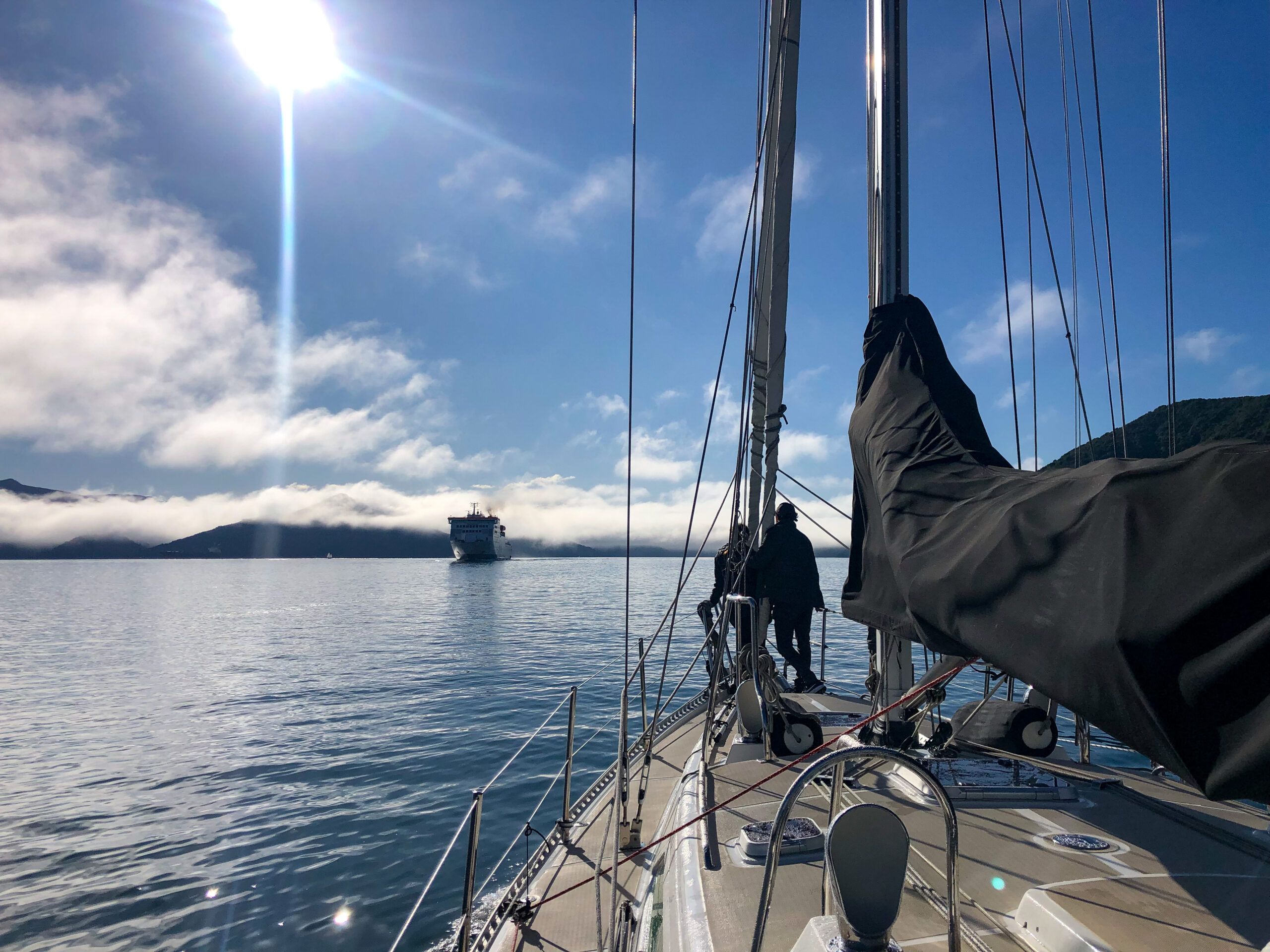
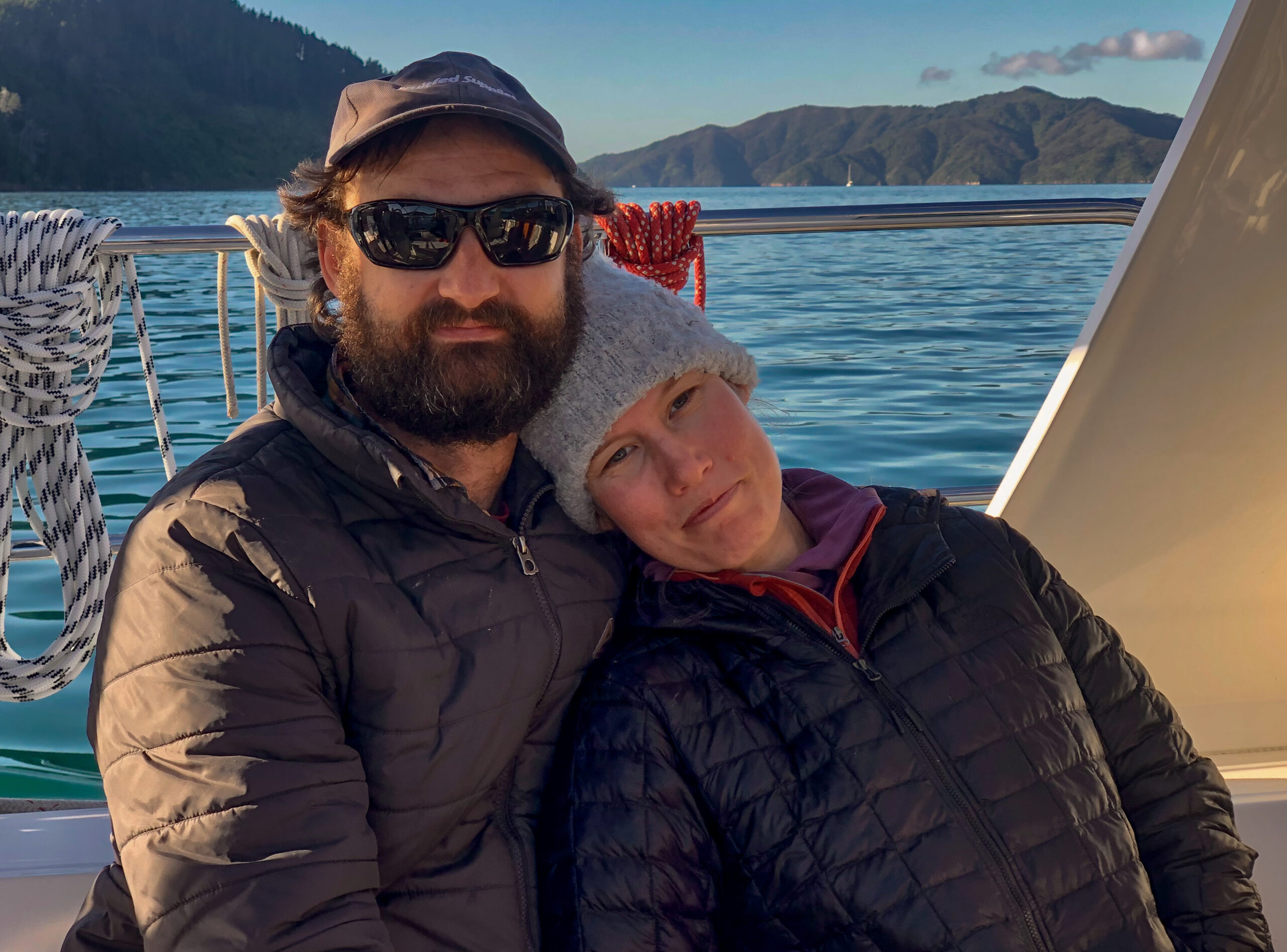
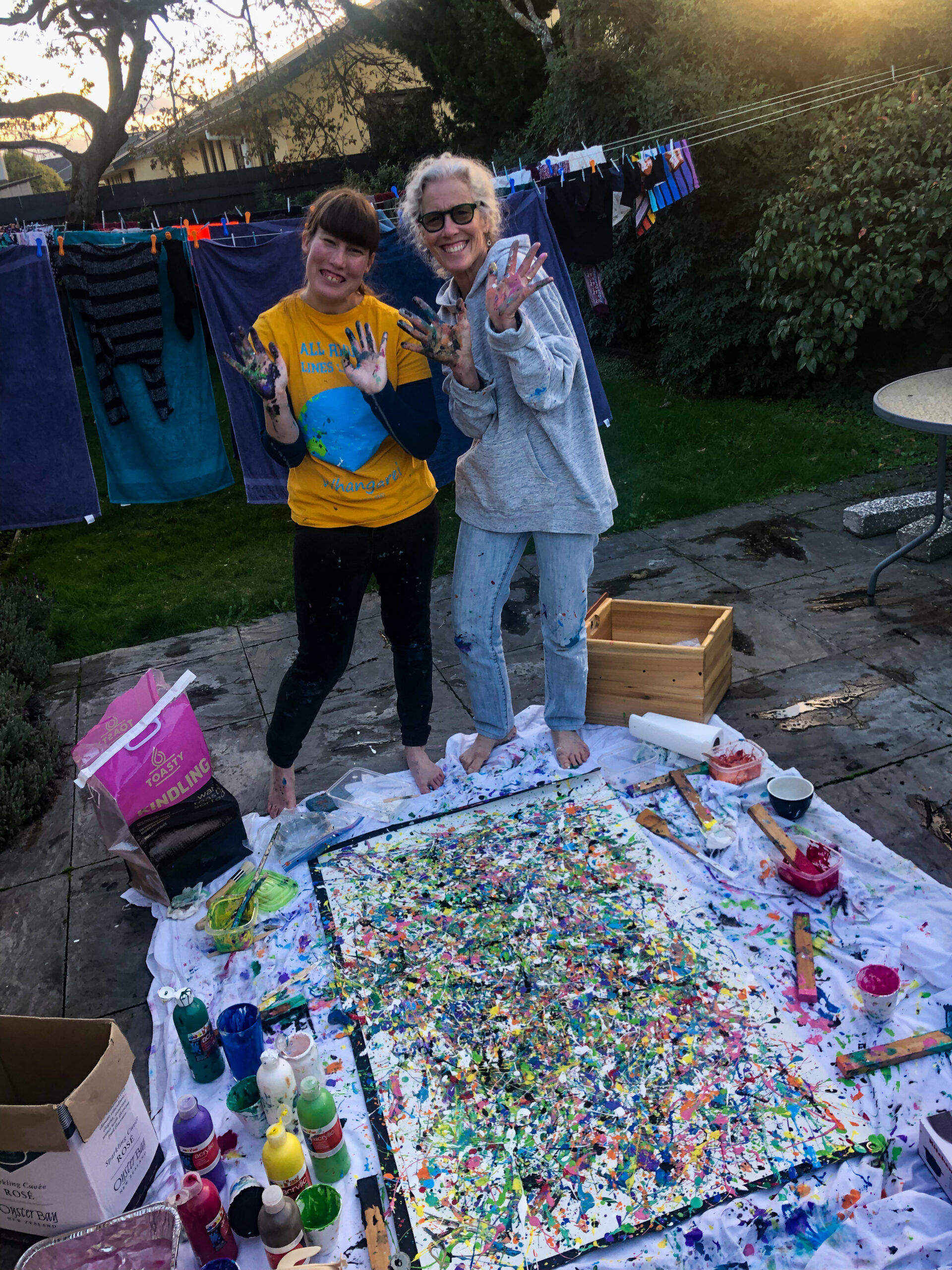
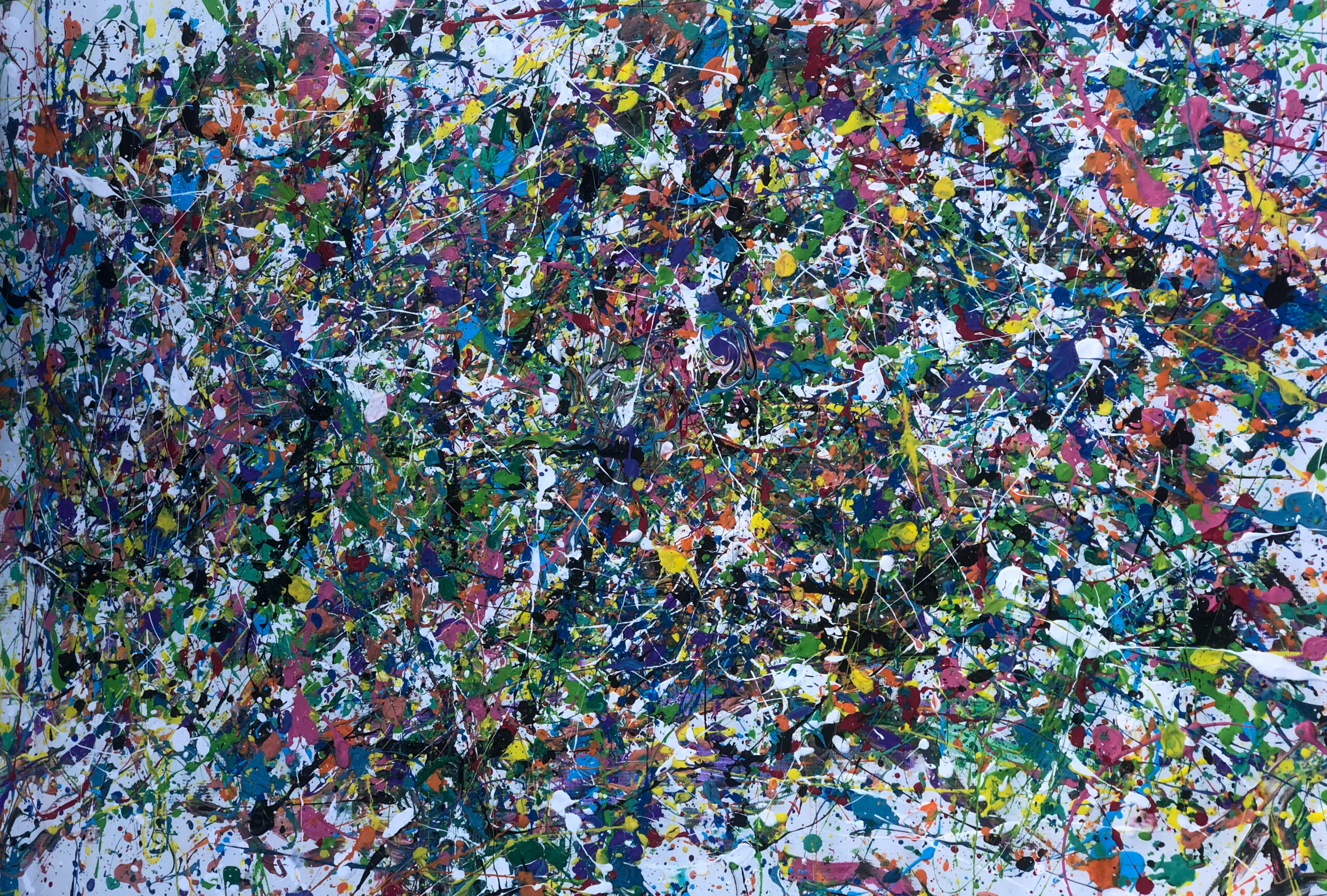
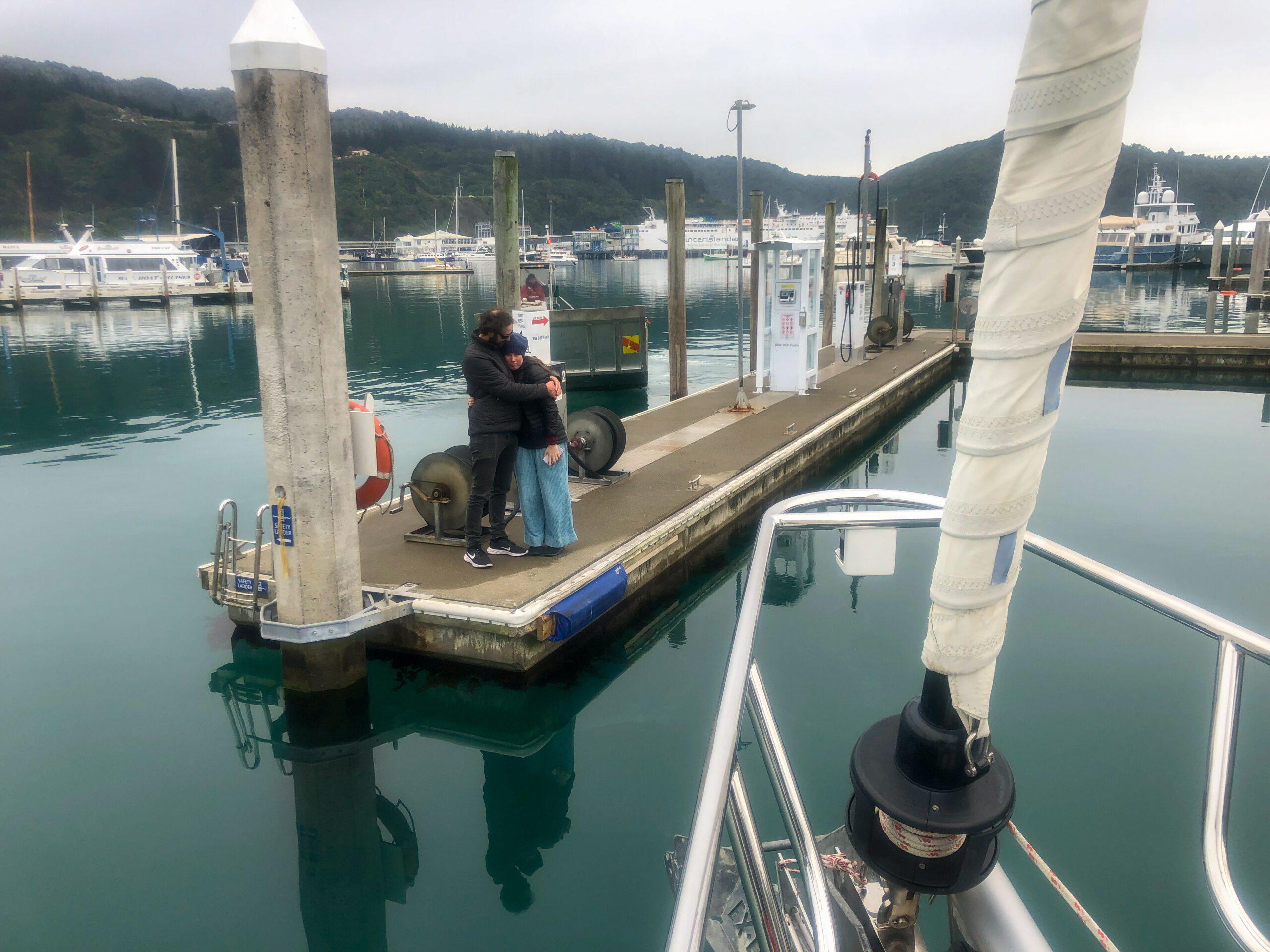

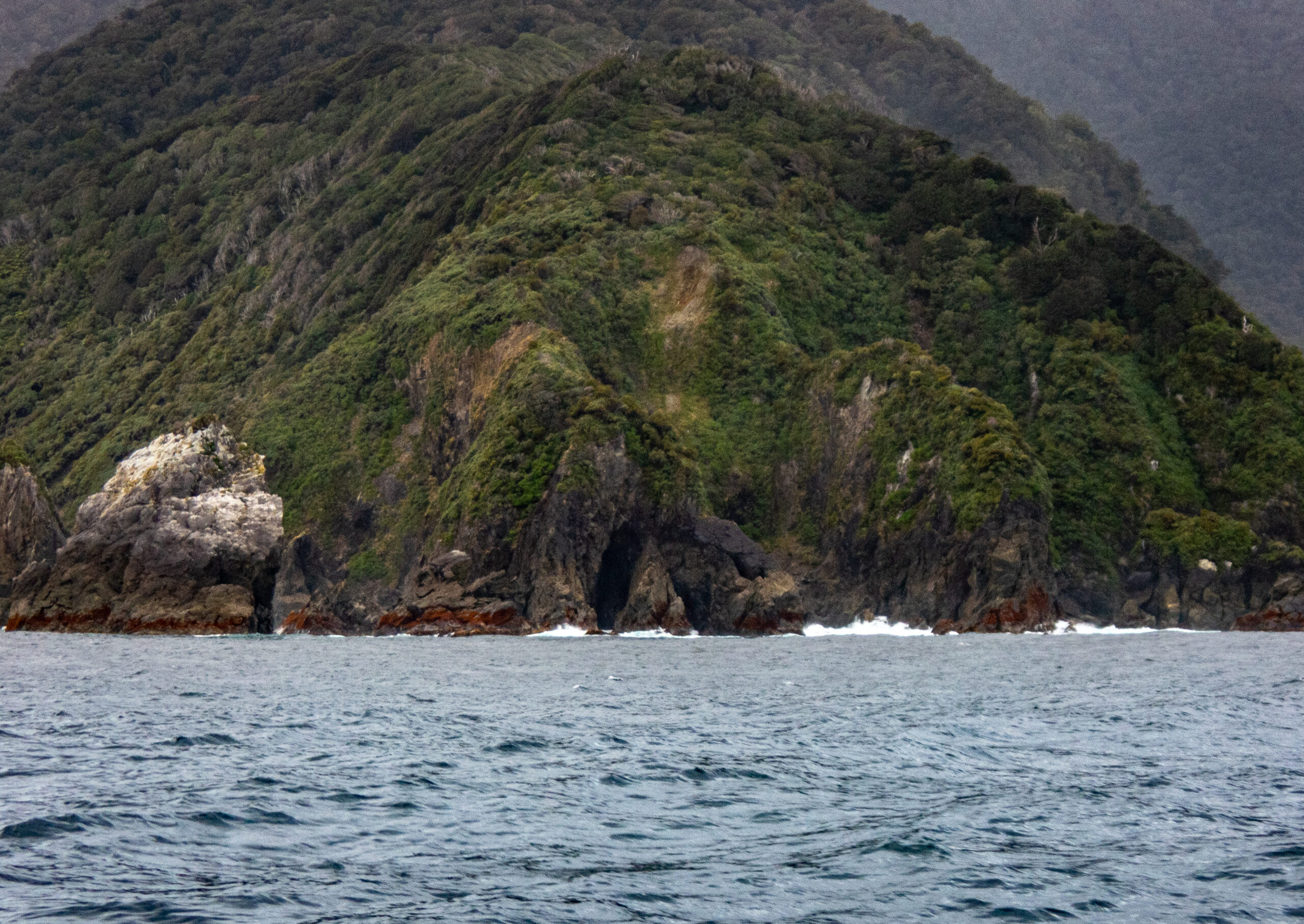

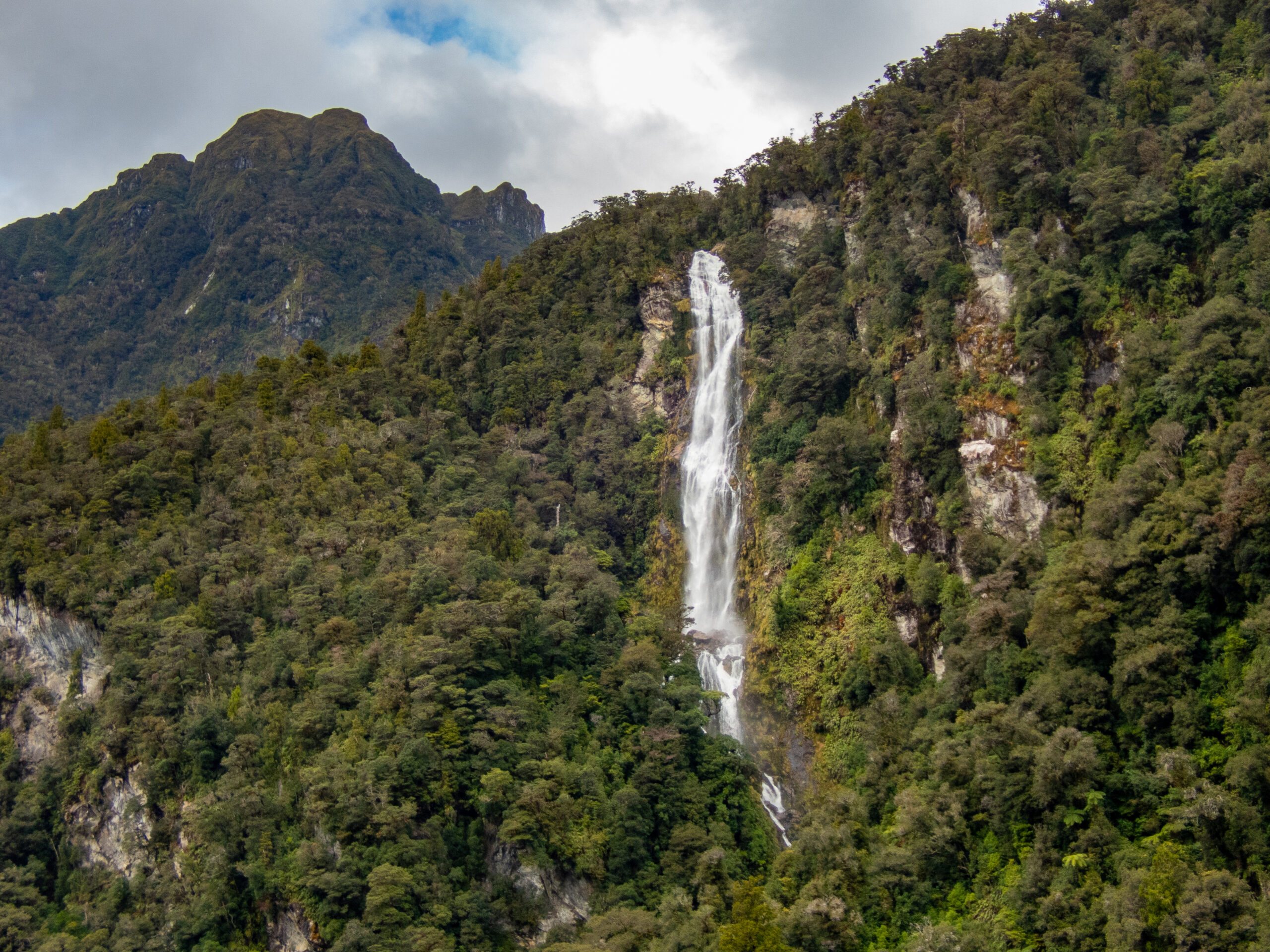
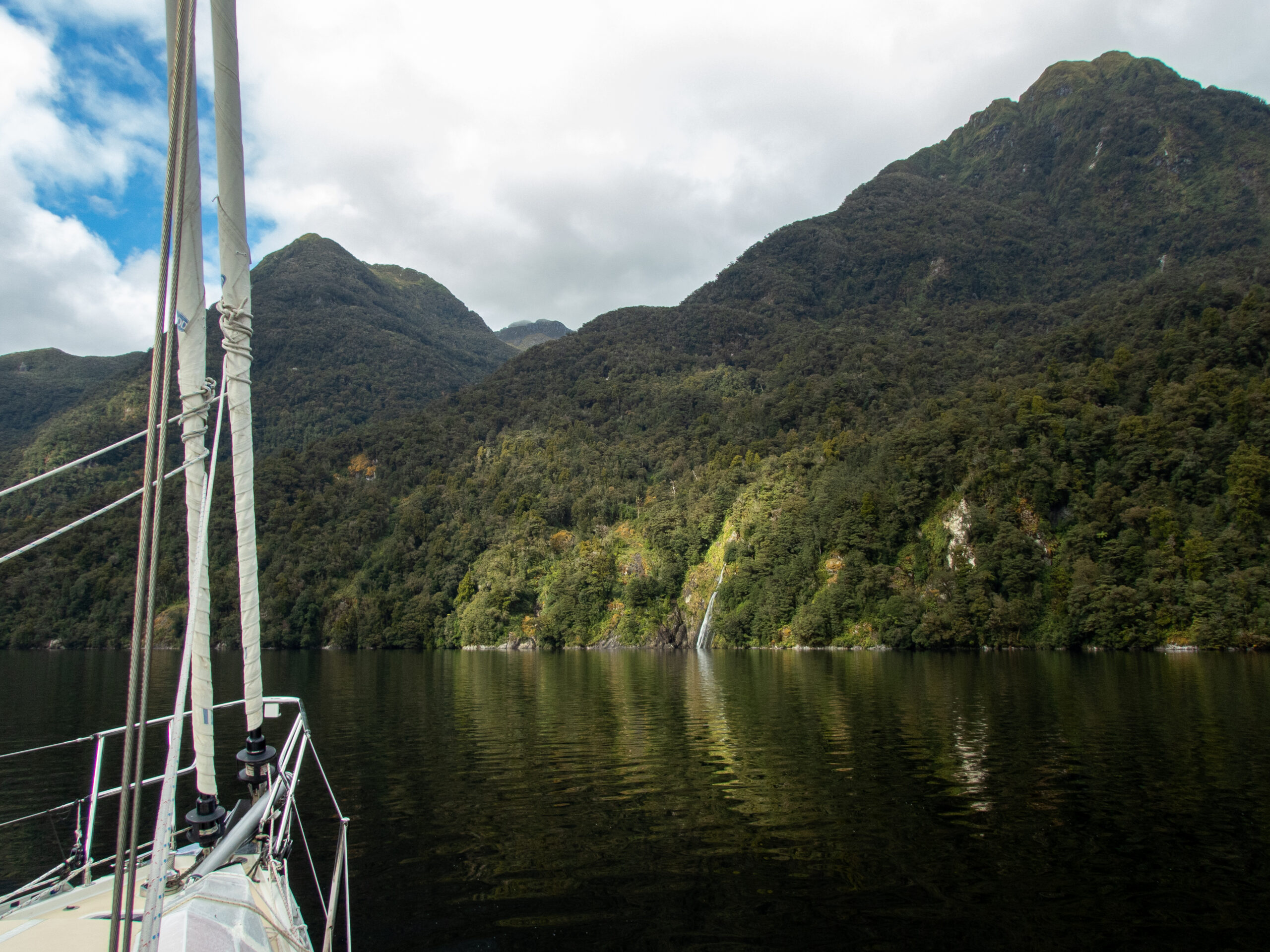
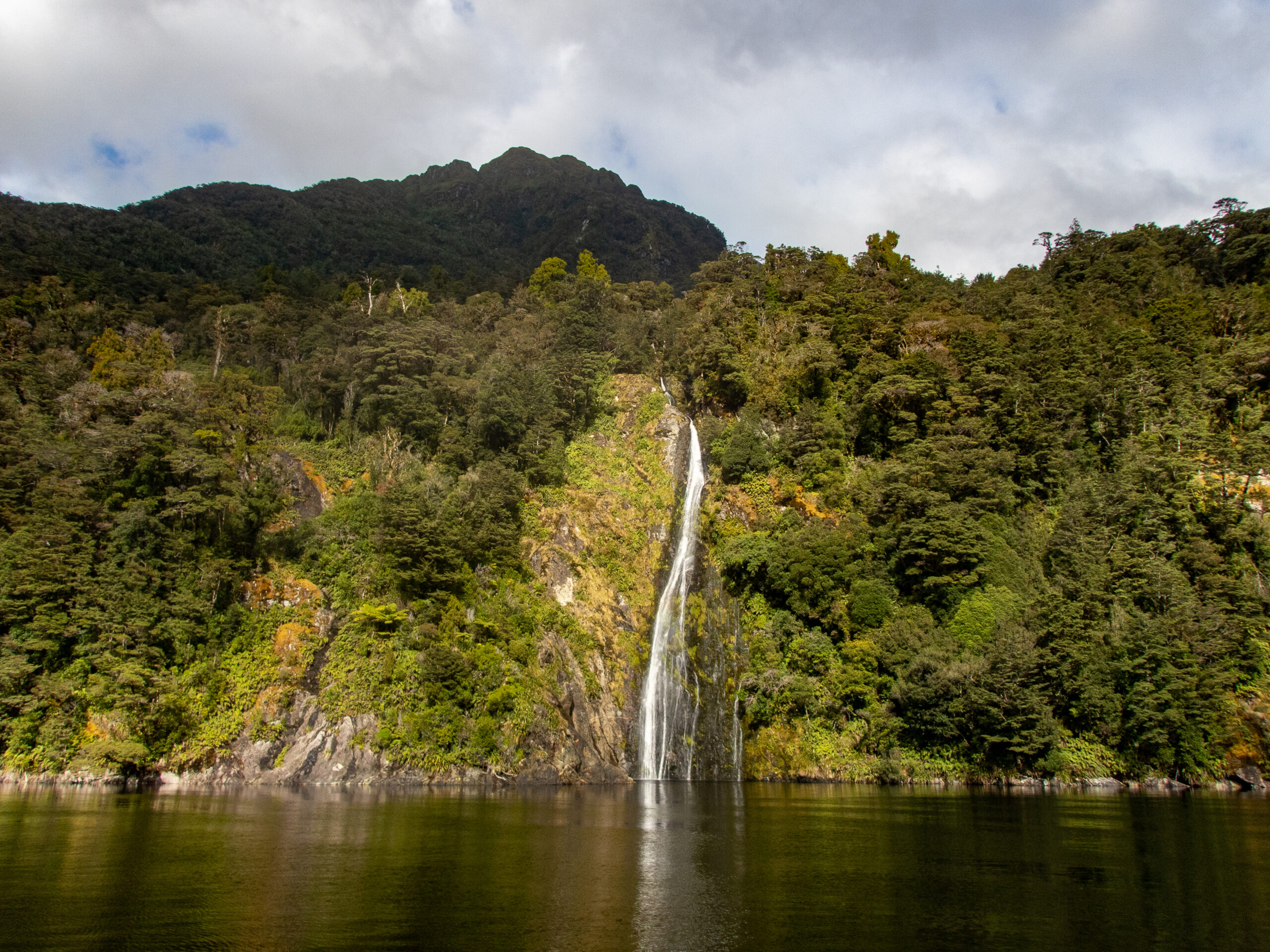
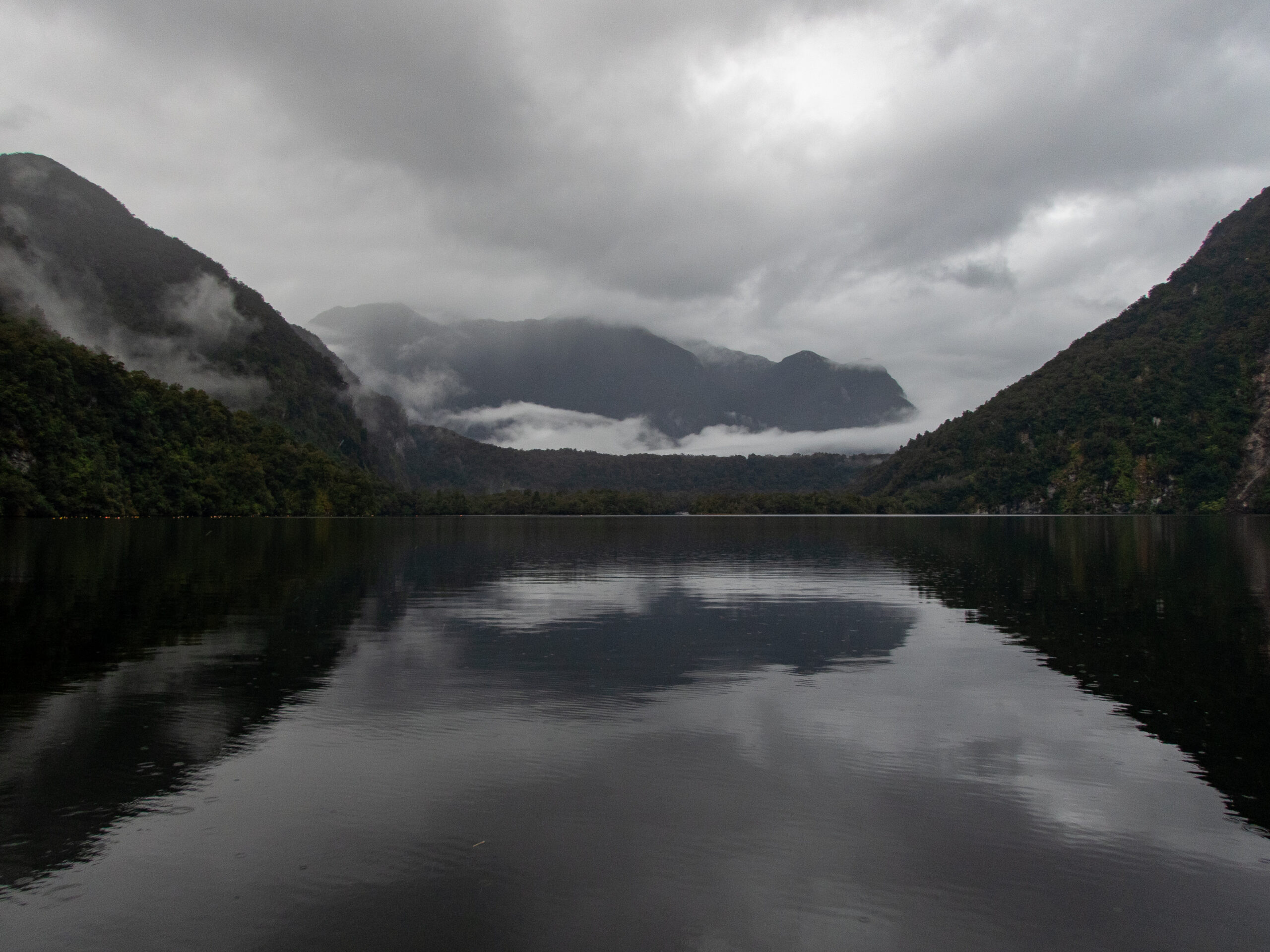

Big Fish
a big fish lived here
under this rock
in this sound
70 meters of water
down down down
finning the murky fathoms
there must be something it is like to be
a big fish
broad tail to the tide
jaw slowly moving, gills filtering
oxygen and salt from darkness
listening to the strange whirr of a prop churning distantly overhead
scent in the current
vibrations of much younger, much smaller, more foolish fish
everyone makes mistakes
joy to the world!
big fish on!
the breathless mystery of something deep
that unremitting pull of an invisible line
uncompromising bite and stick and metal barb
is there hoping it might break free
what is it like
to be another’s flesh and dinner?
exhausted thrashing on the surface
searing bright light and fierce dryness
the gaseous, ethereal world
where white birds like cherubs flitter and follow
where albatross glide like shadows of another understanding
what is it like, big fish?
now that two men hold you in firm hands
knife wielding hands
careless hands
is this the dance?
waves surge against the rocks
seaweed starfish worms green saltwater alive
o’ fish shaped wave
these men call you big fish
men who came to find things to take
big trees all in a row
is there something it is like
to be a man holding a gray dead fish
for a picture
flesh stripped from her ancient bones ~MS

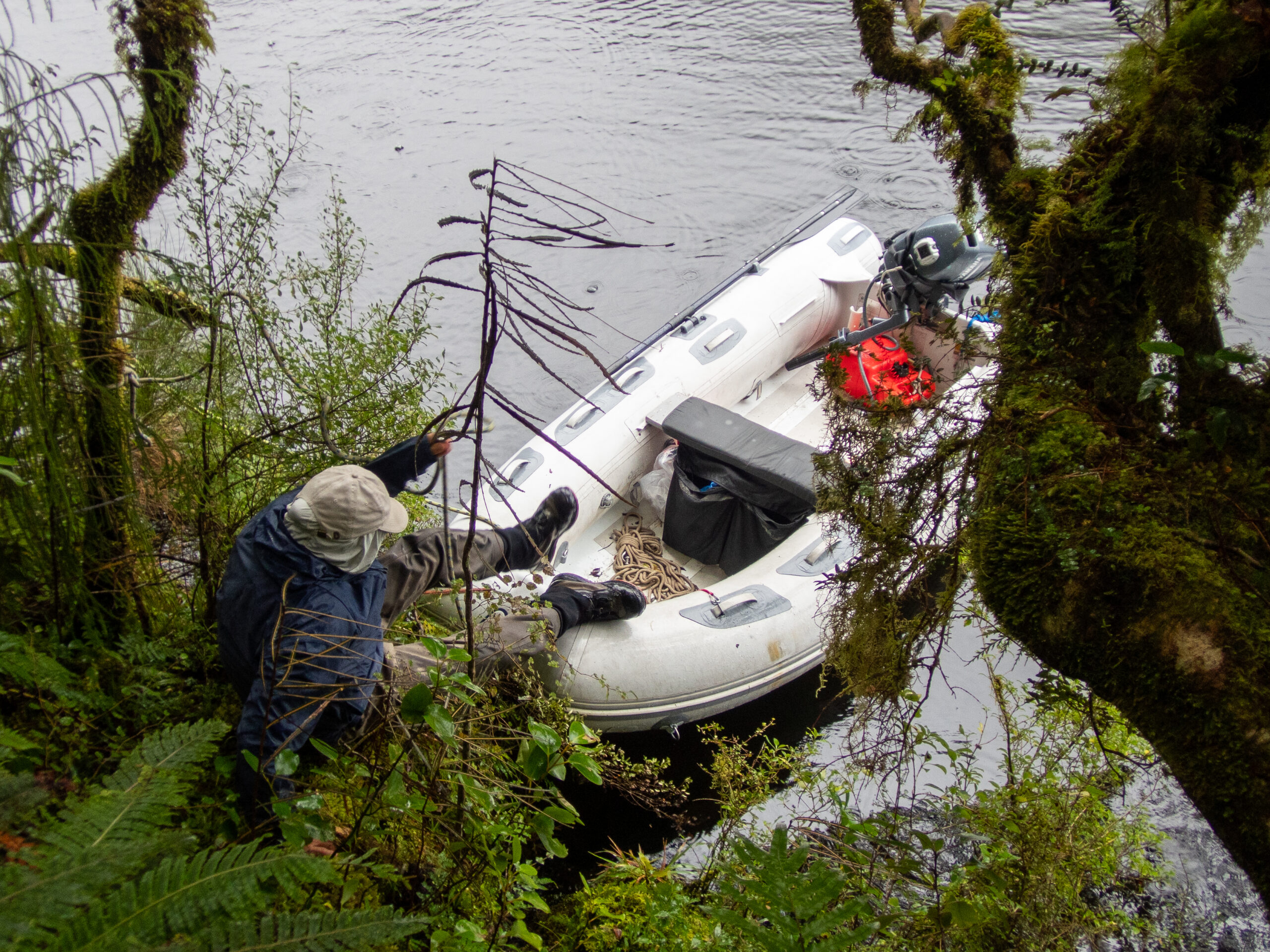
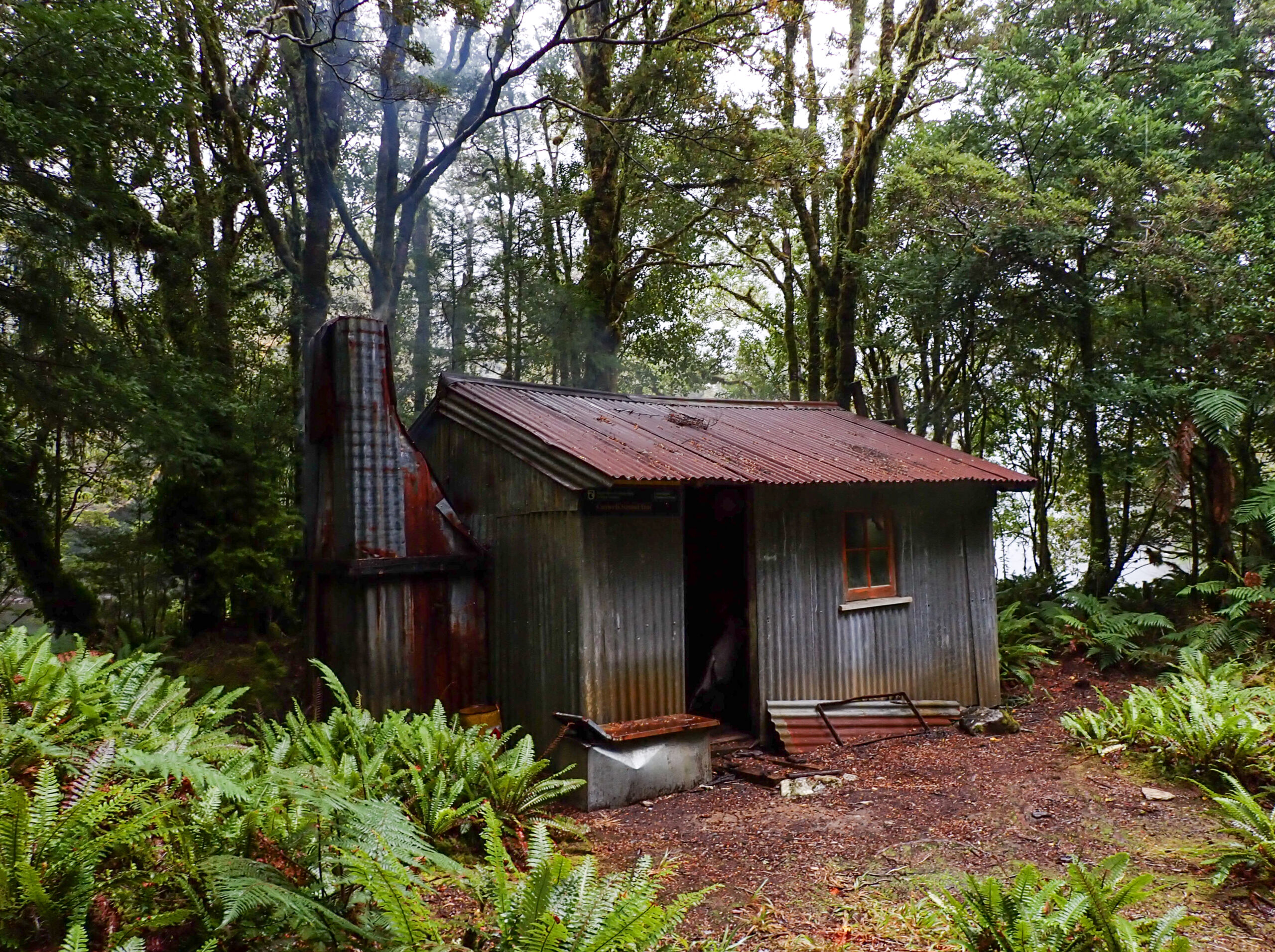
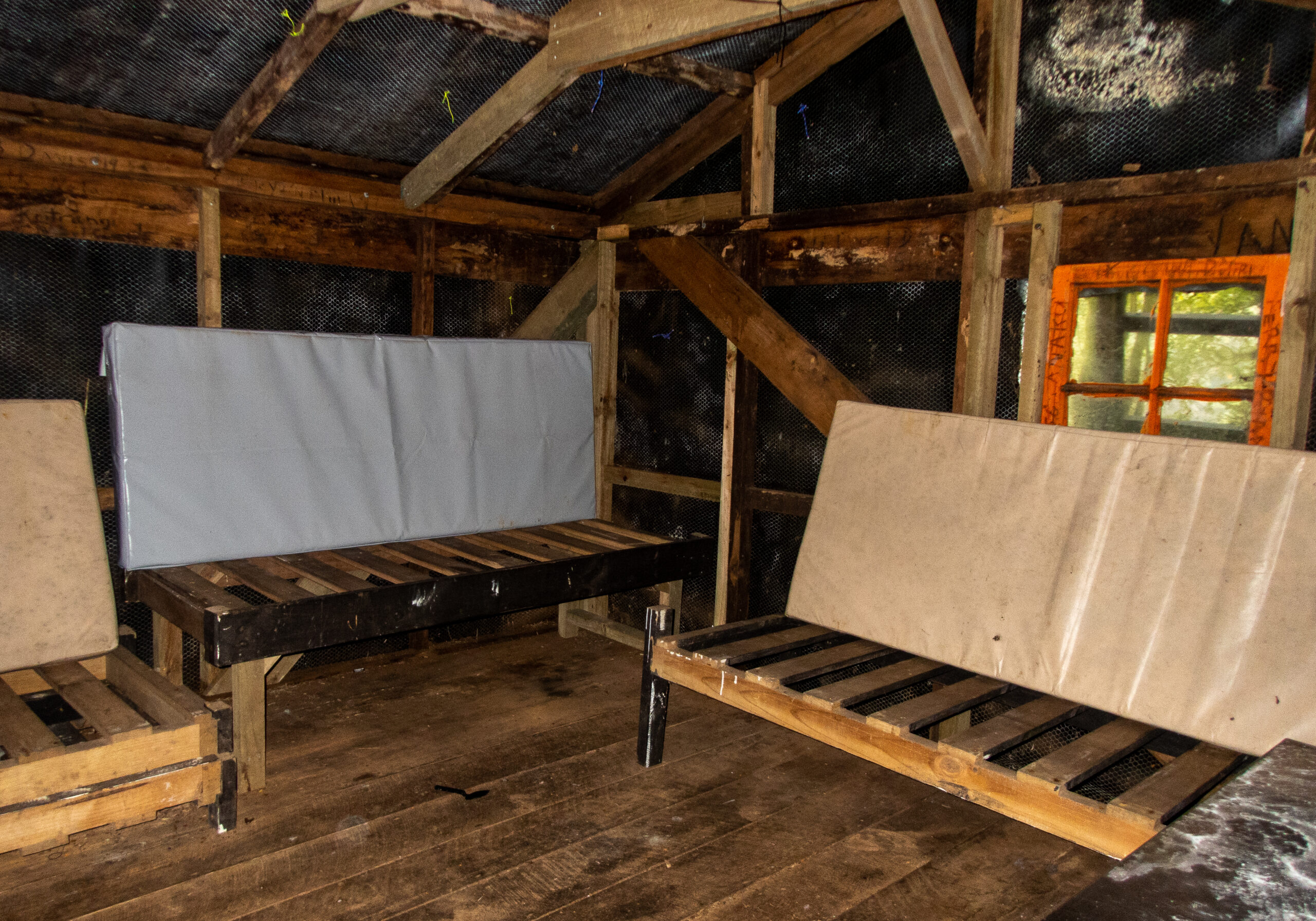
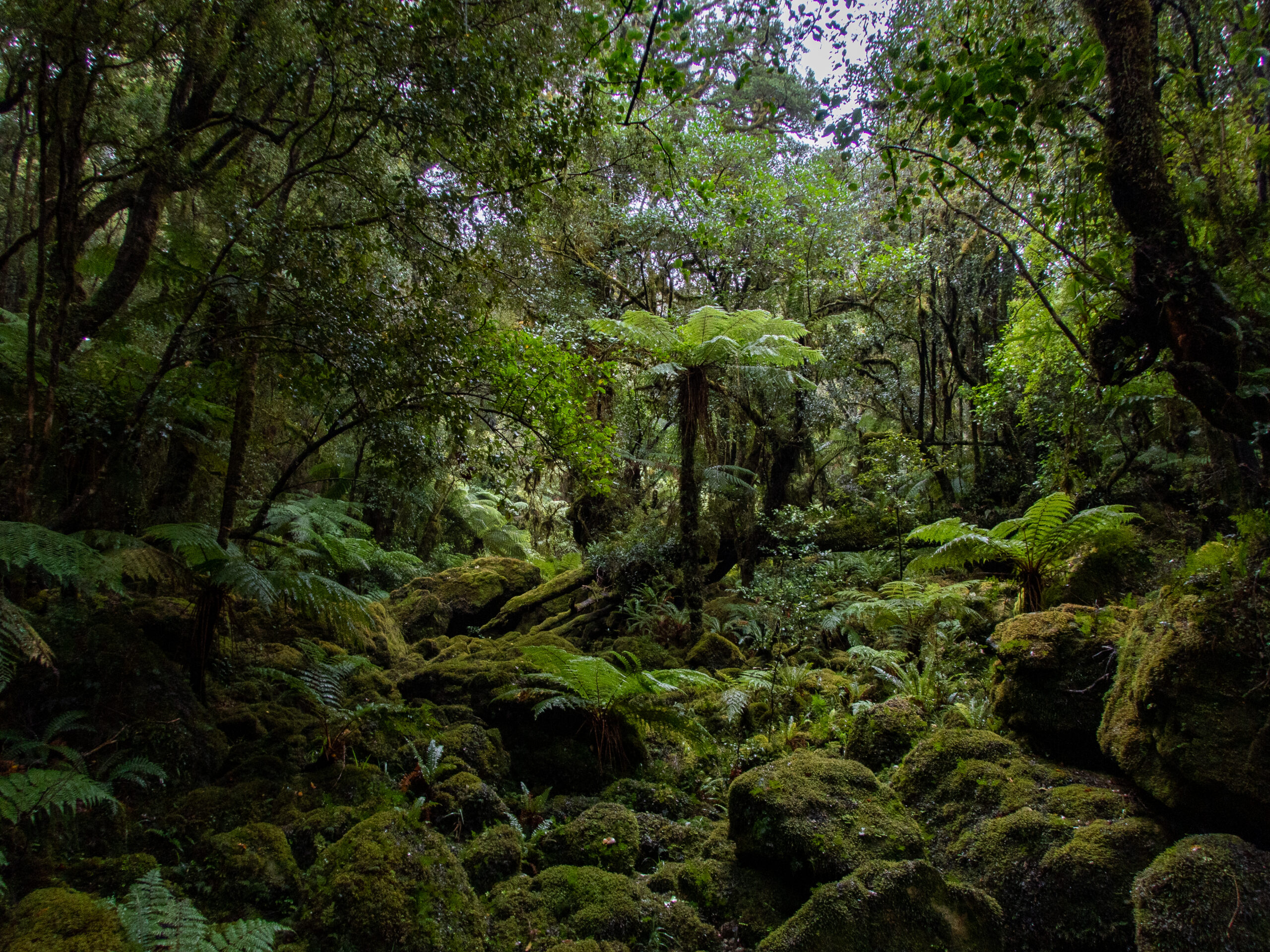
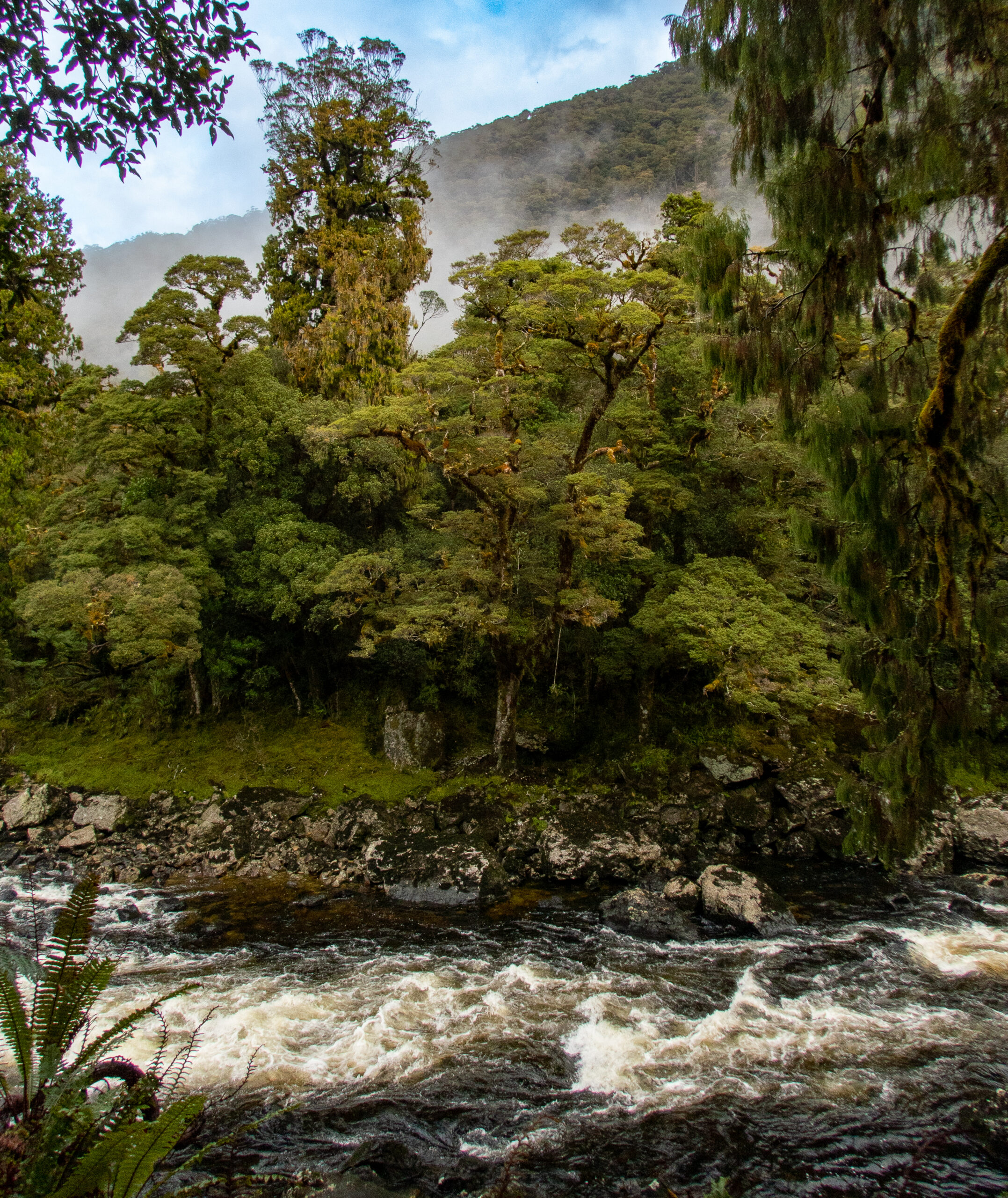
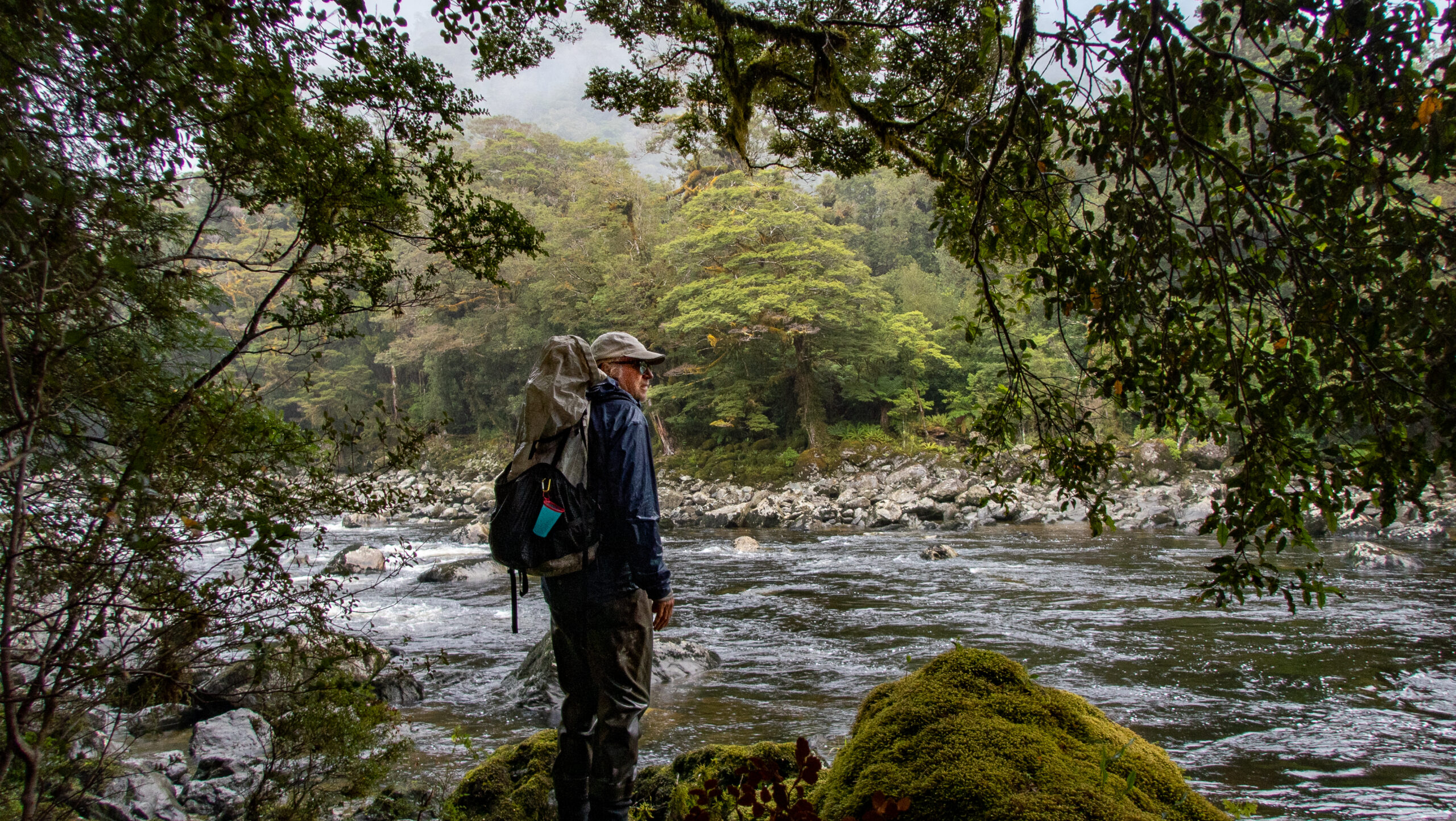

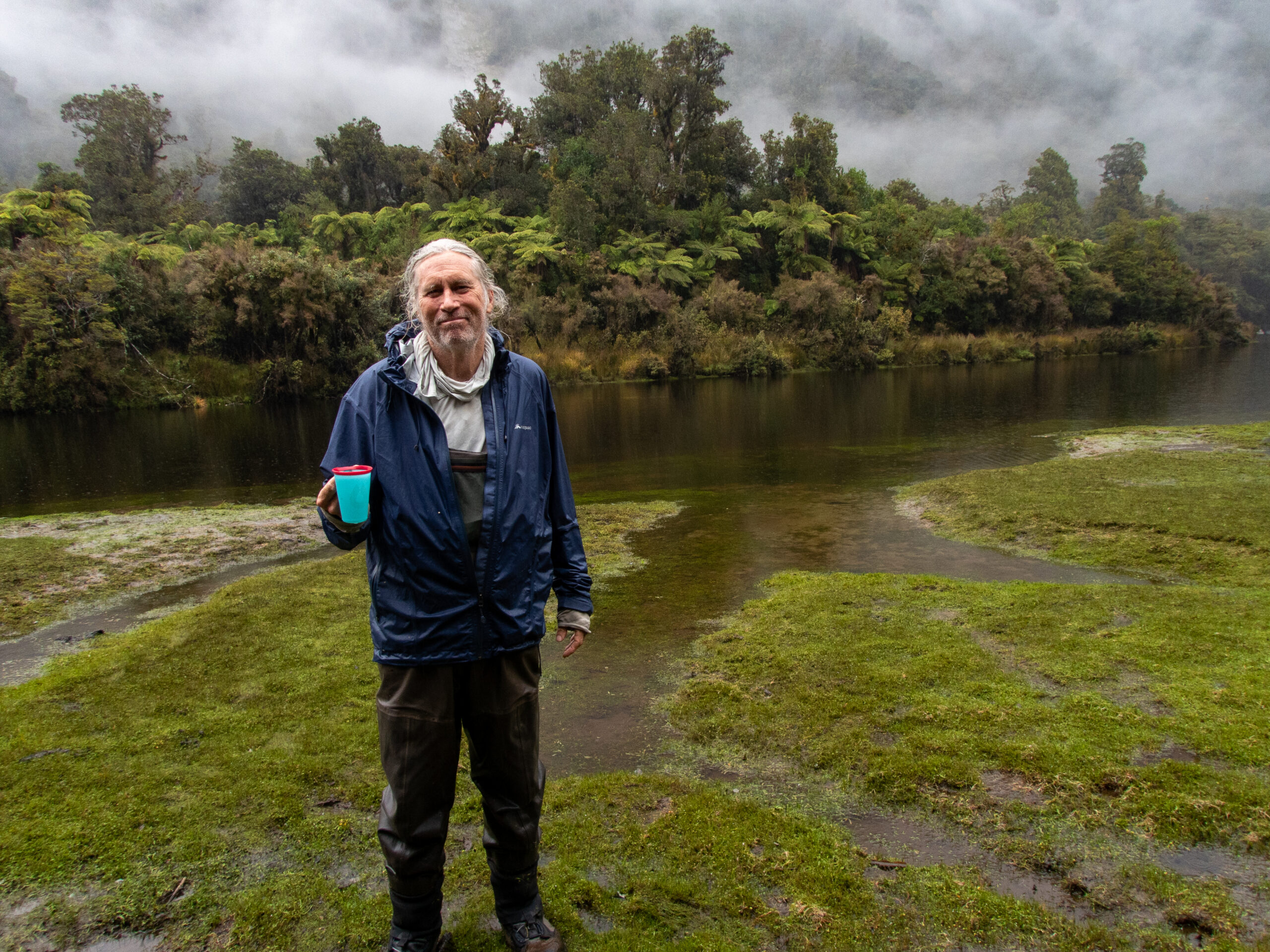


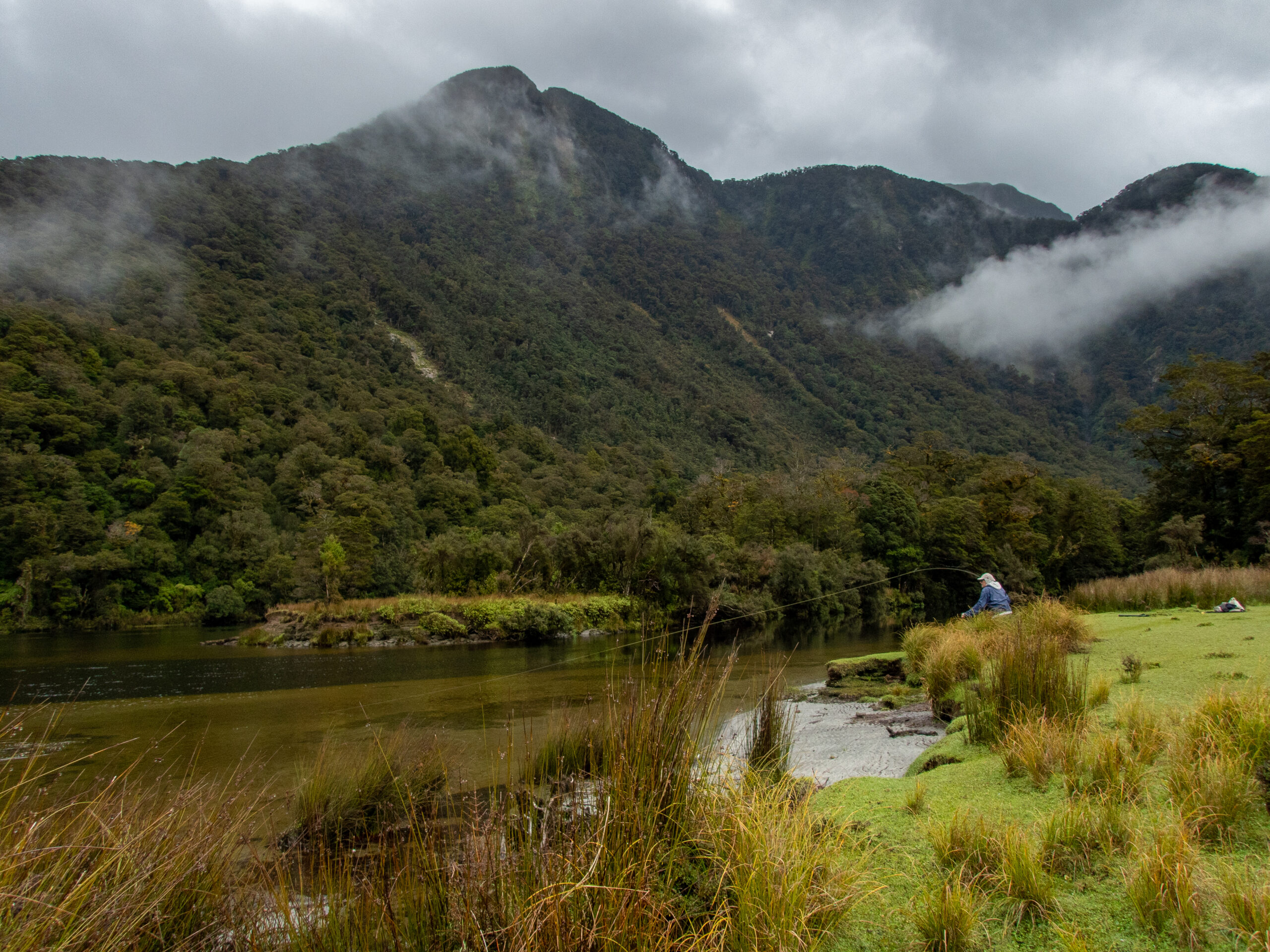
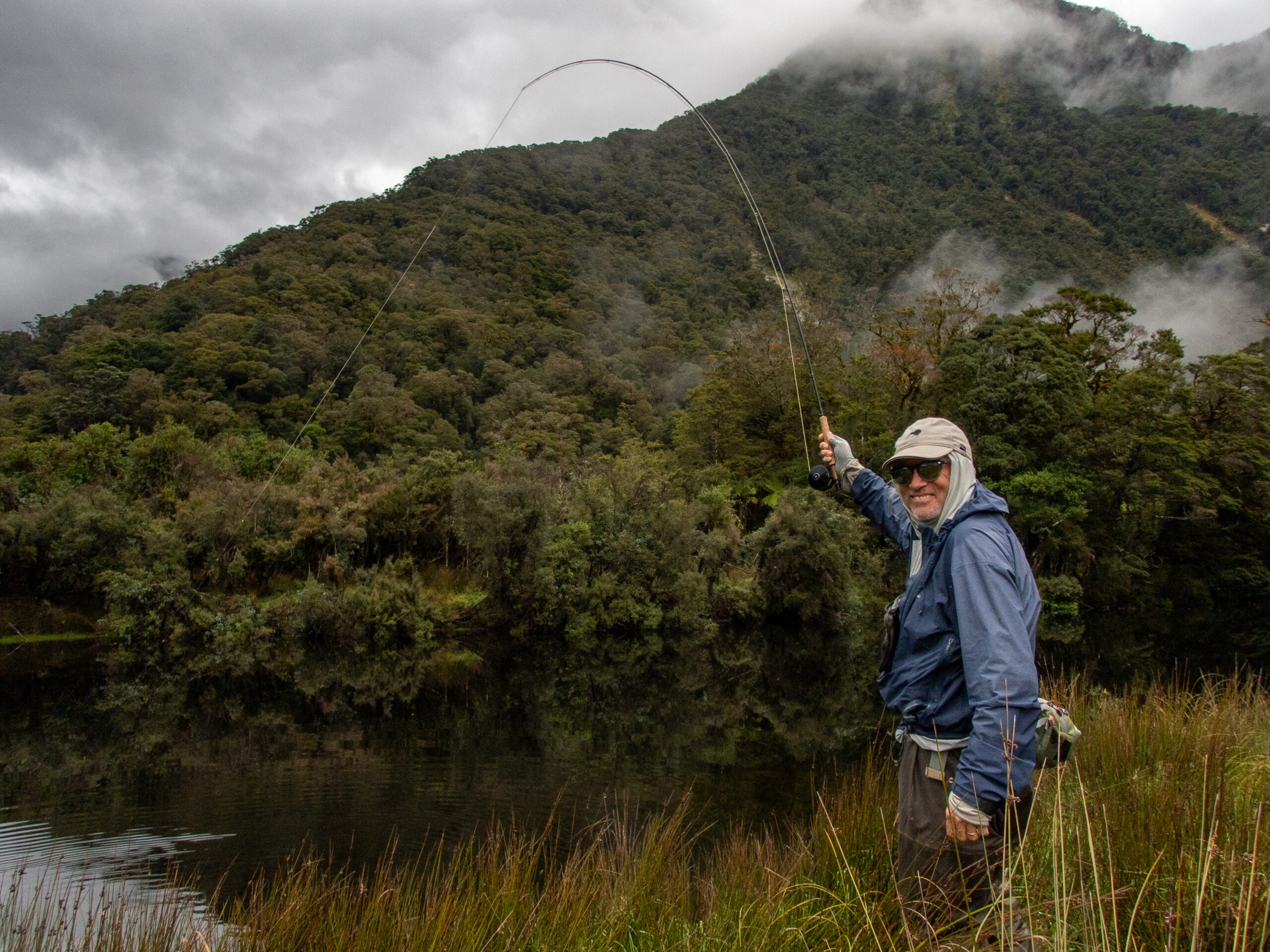
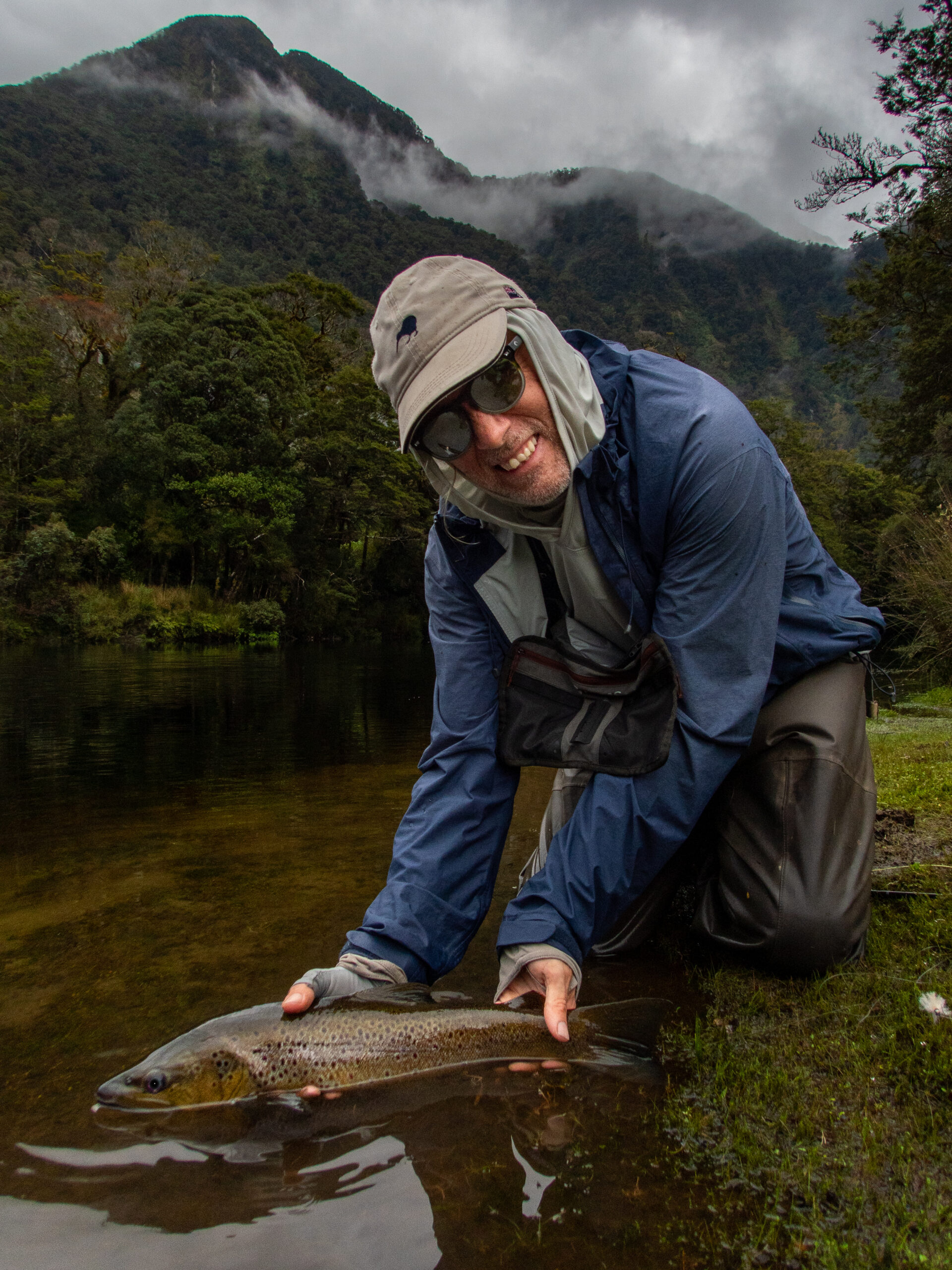

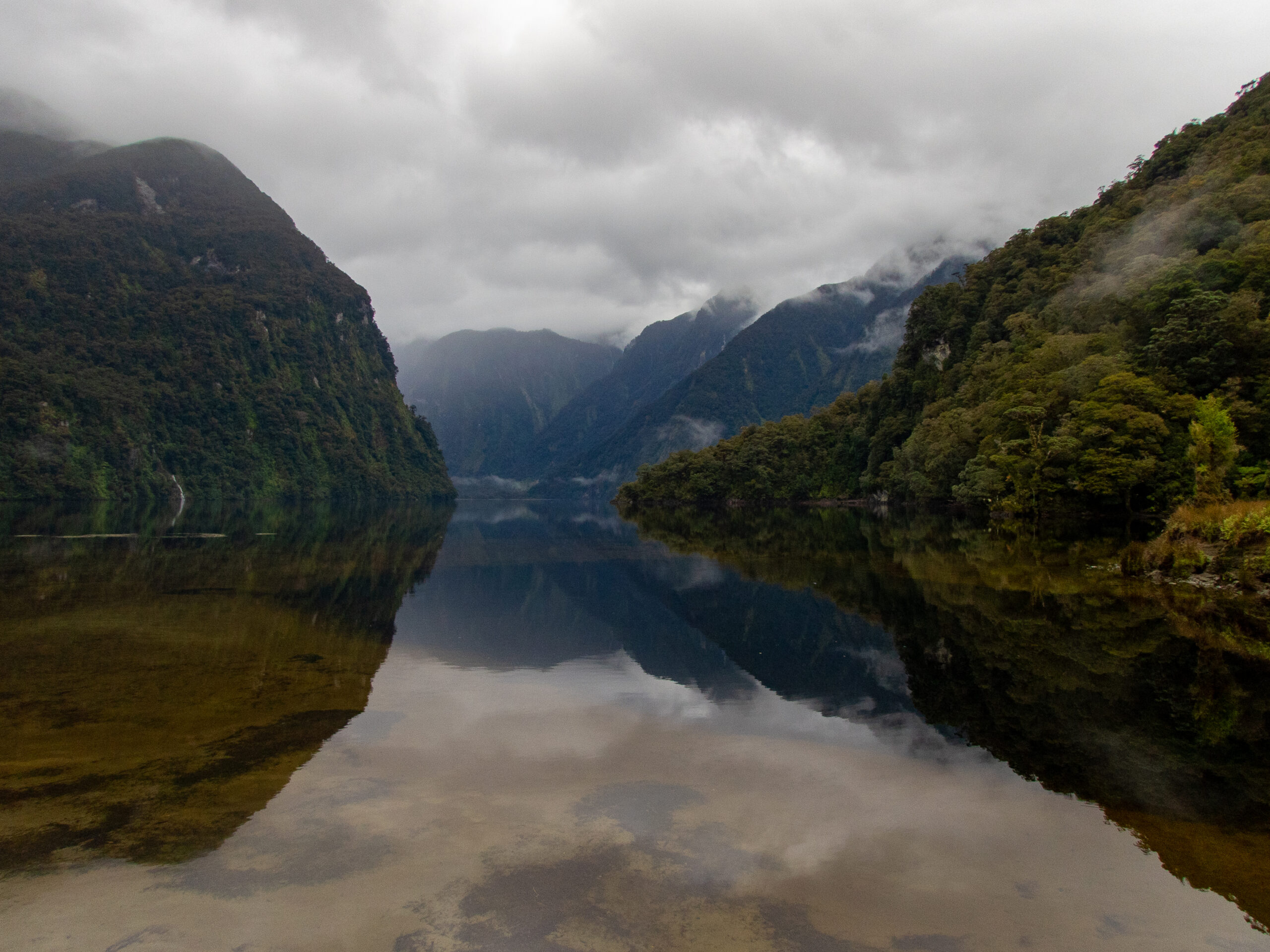
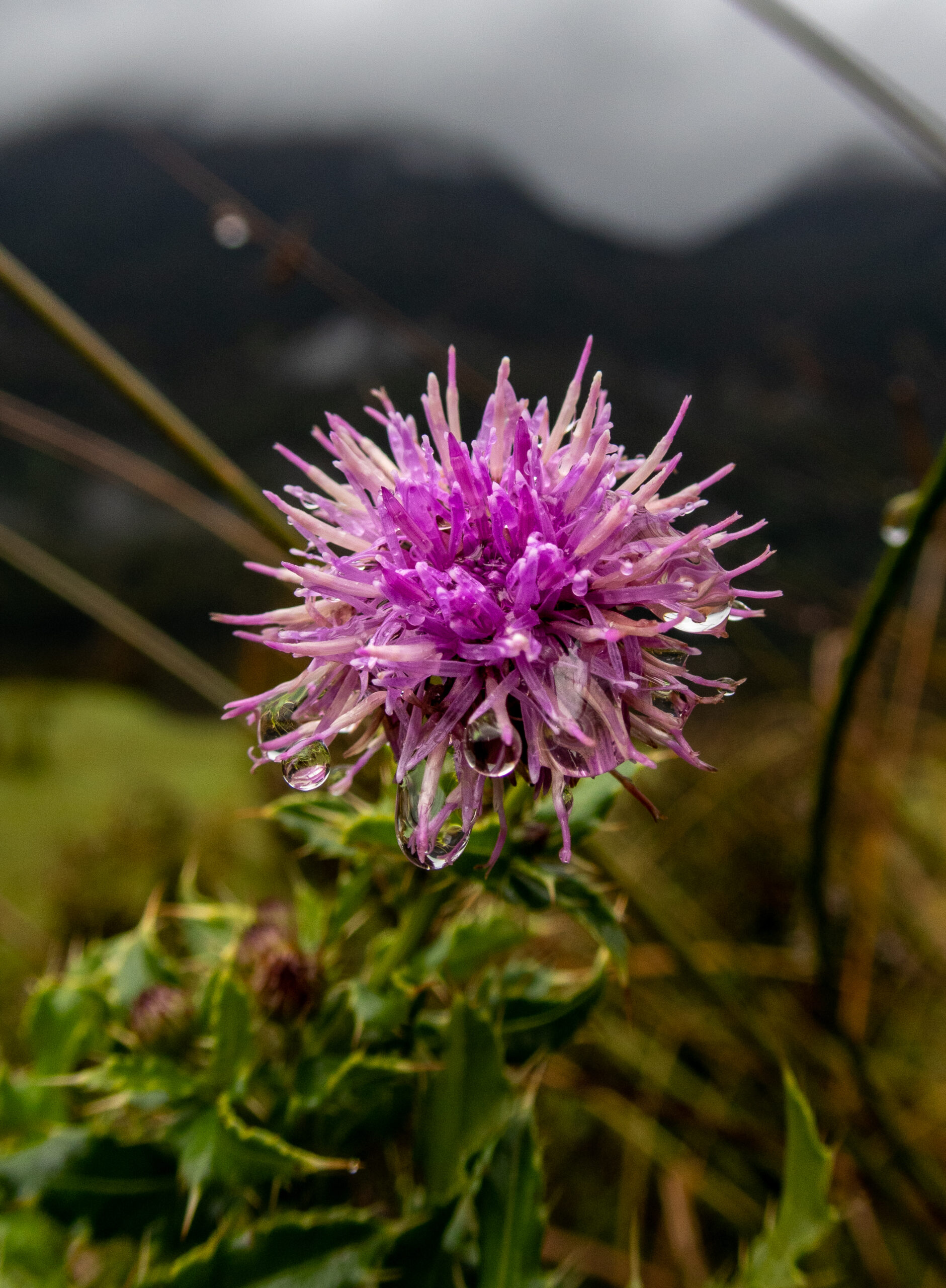
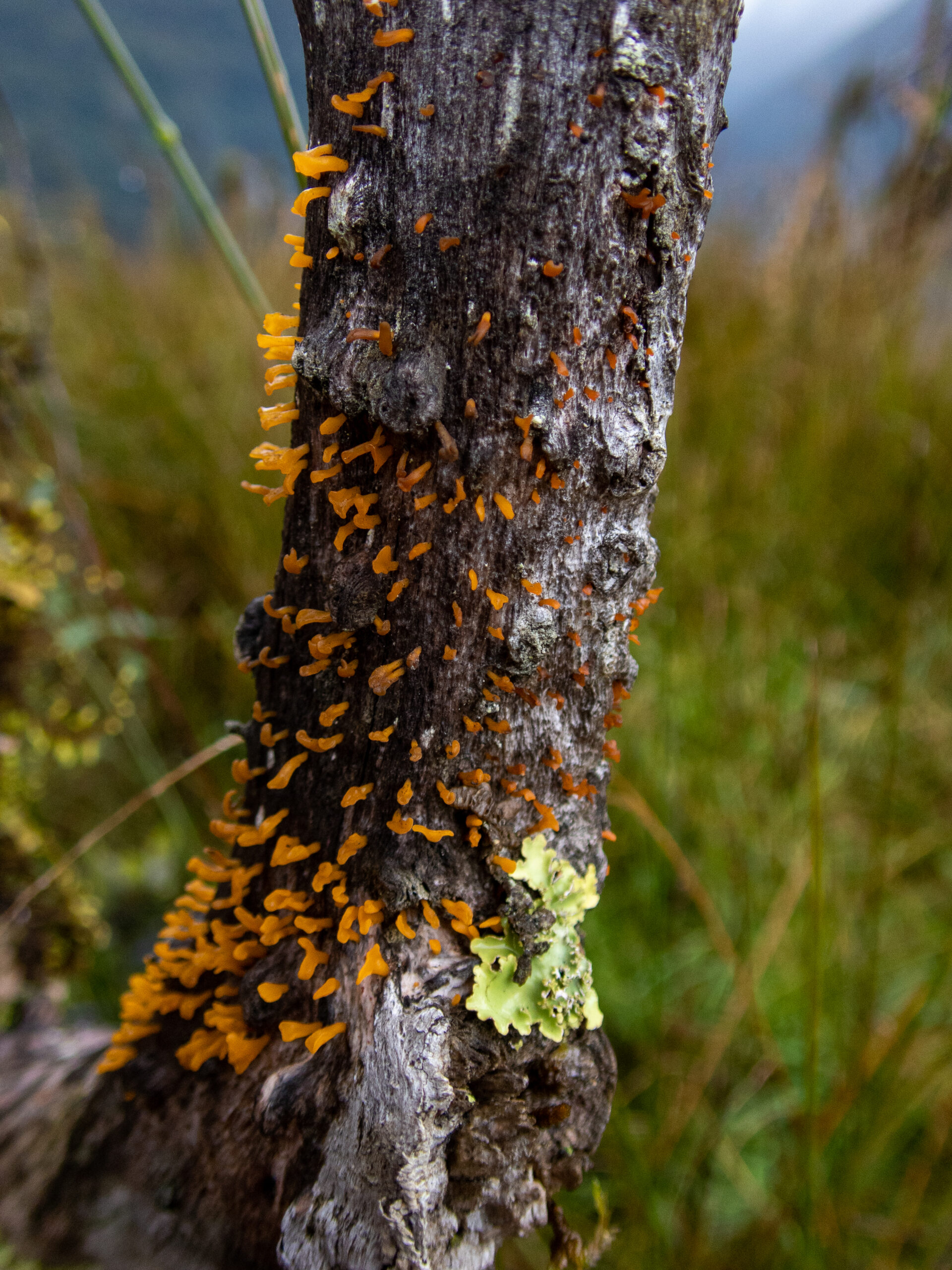
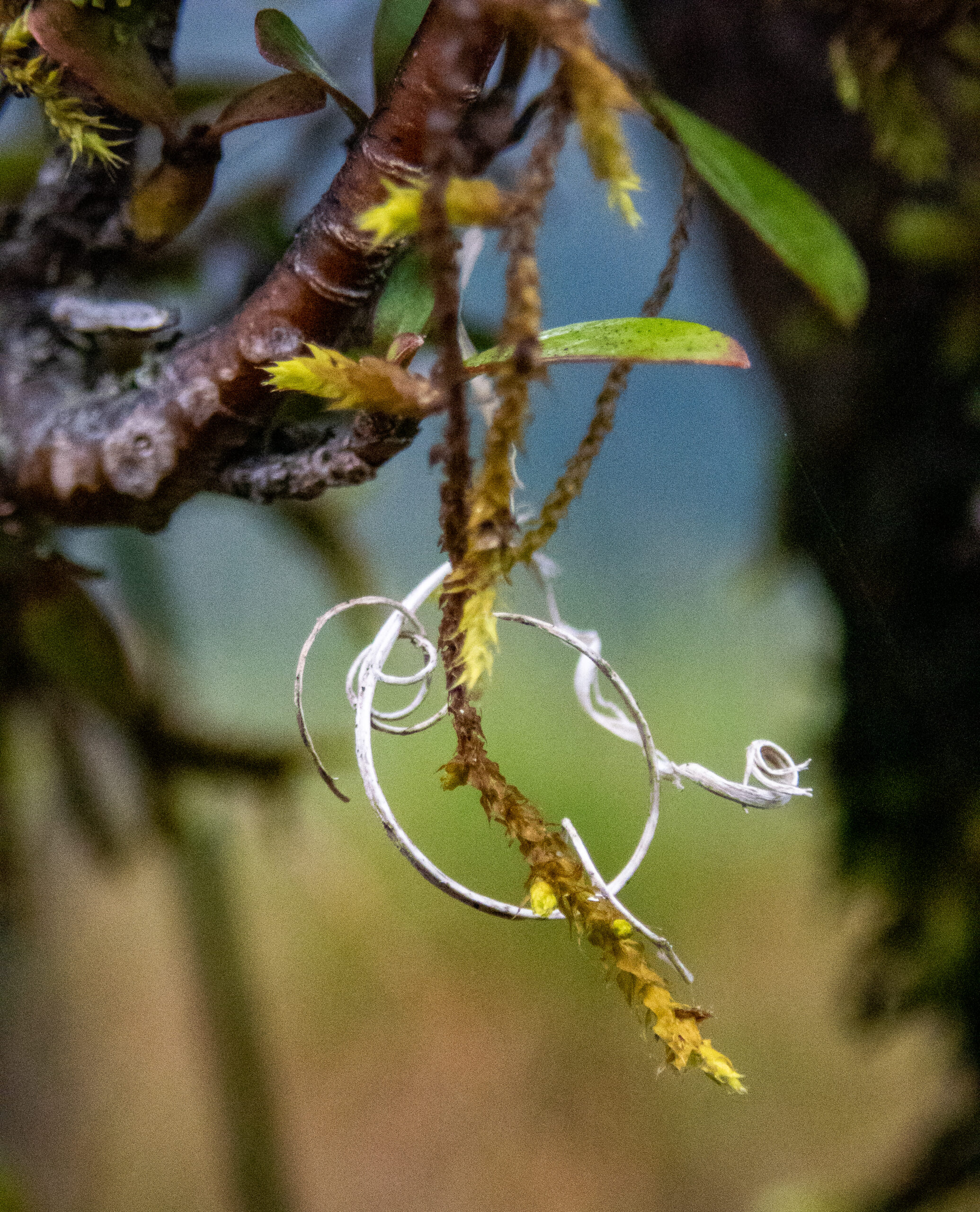

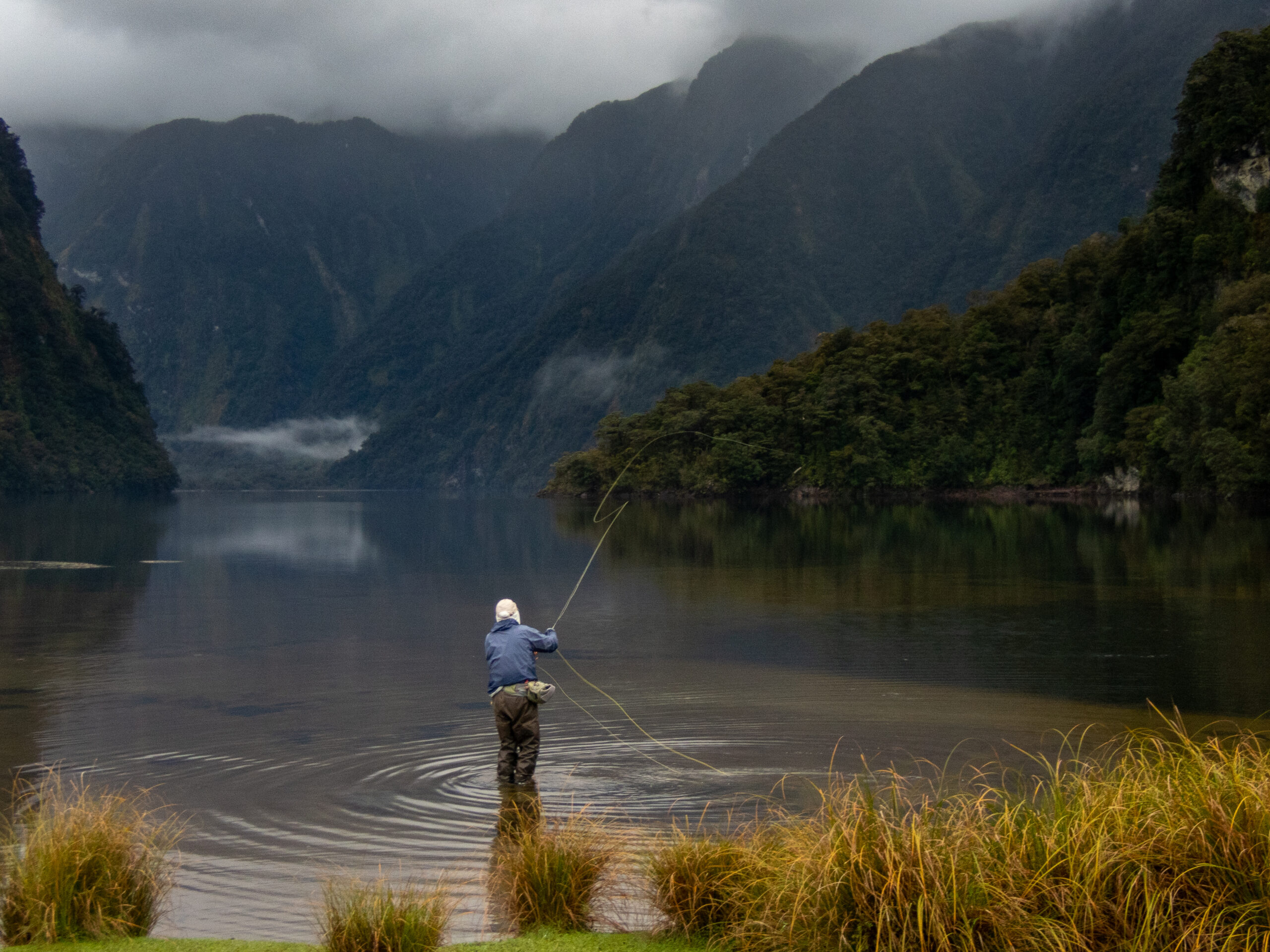
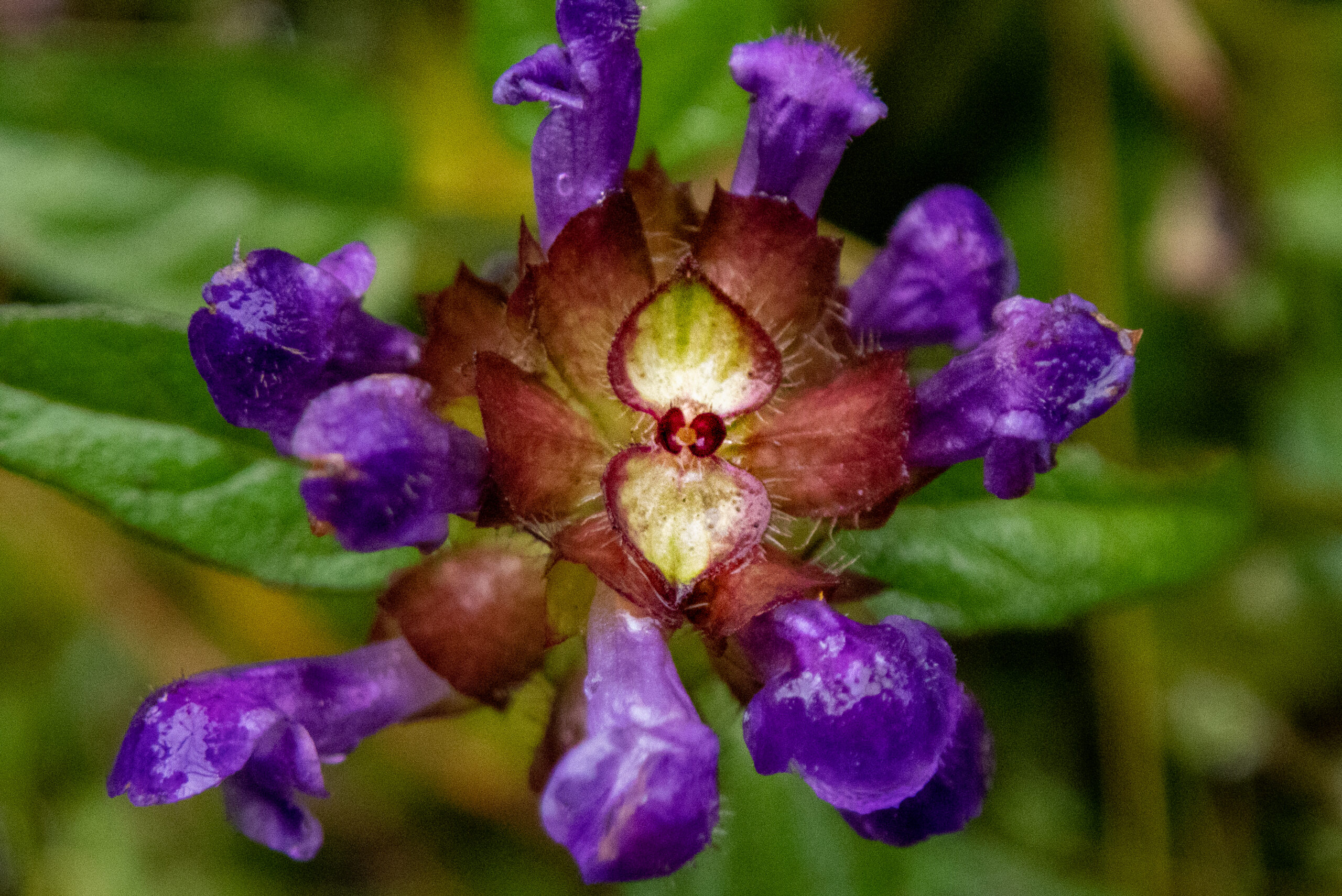
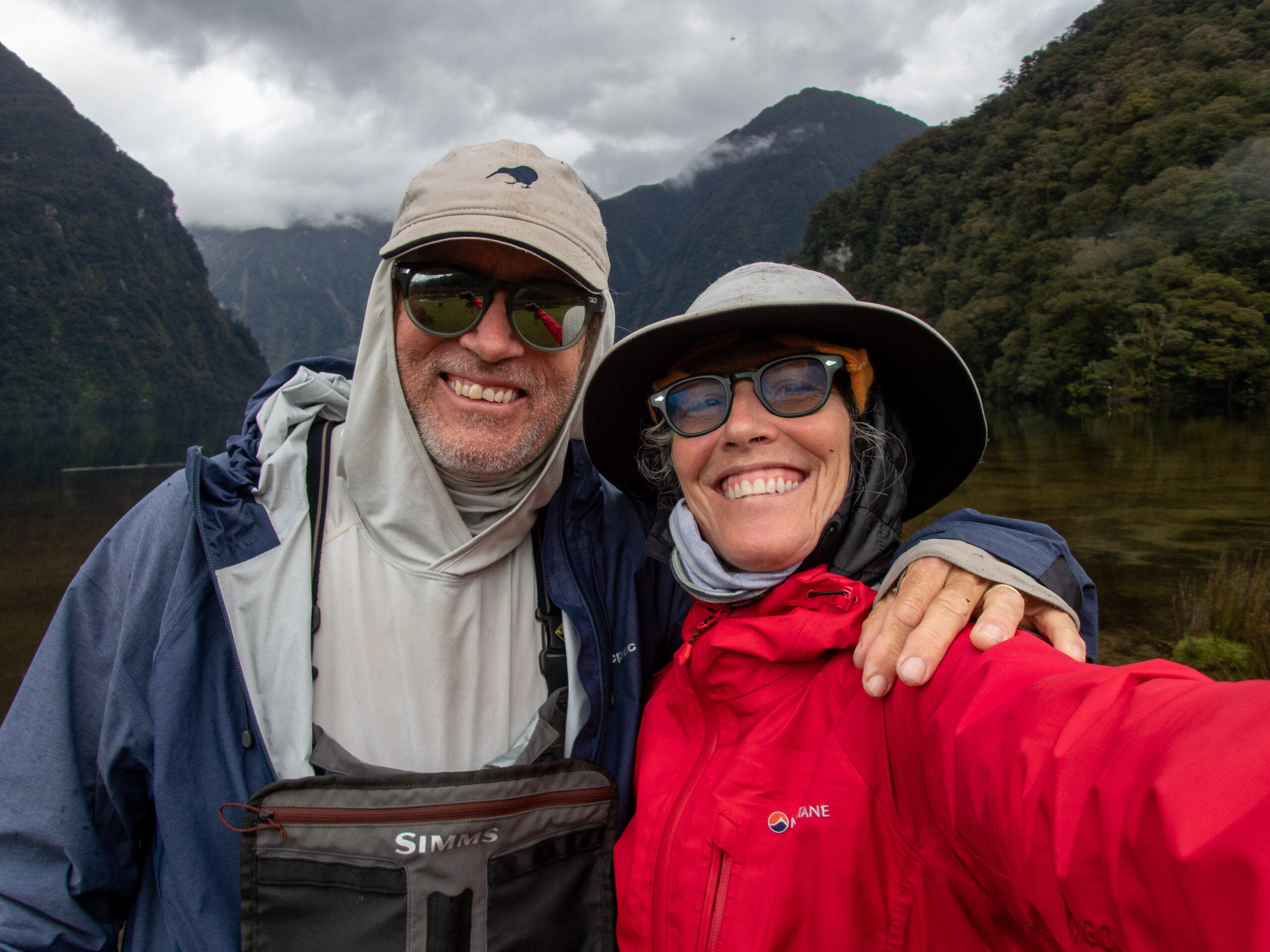
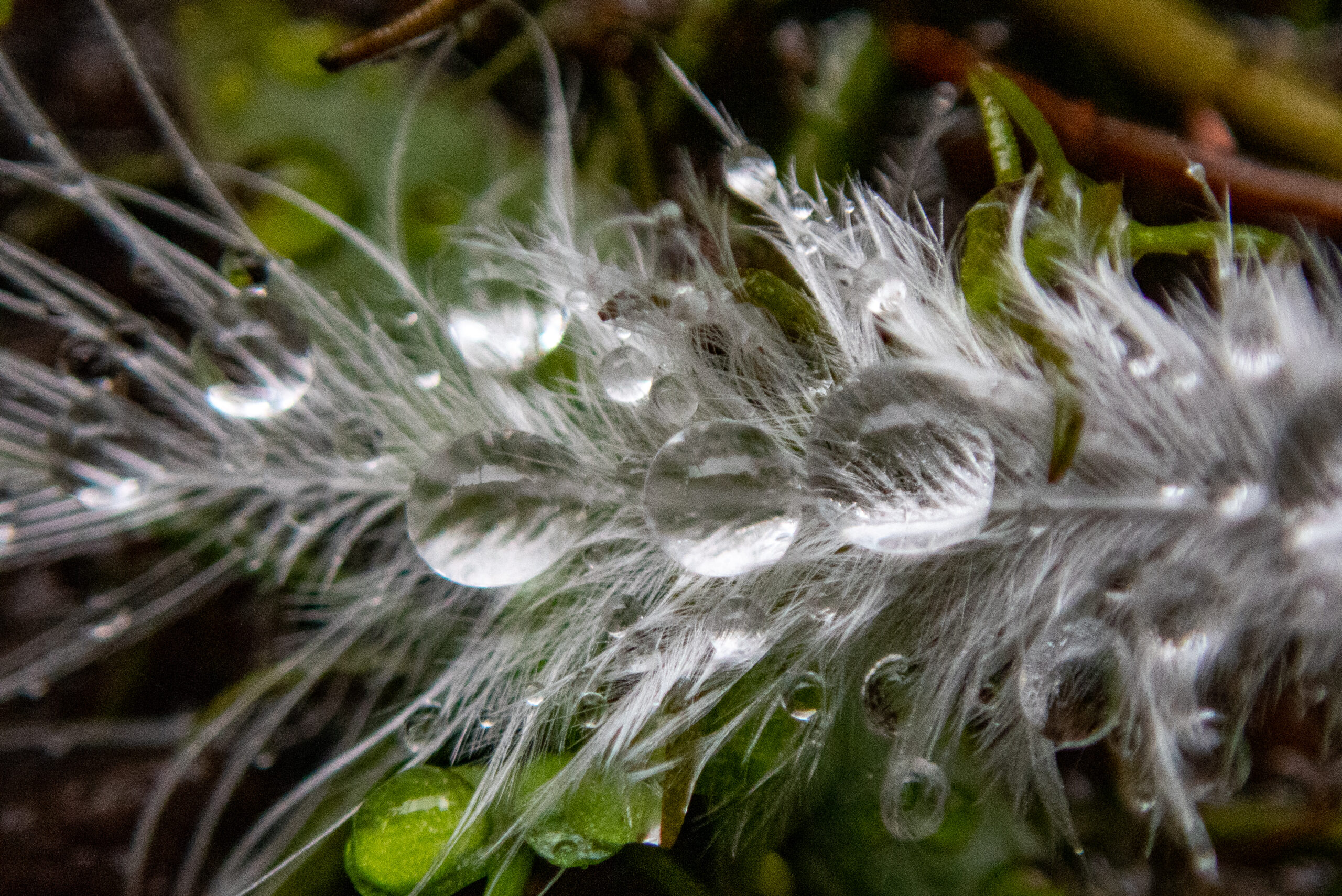
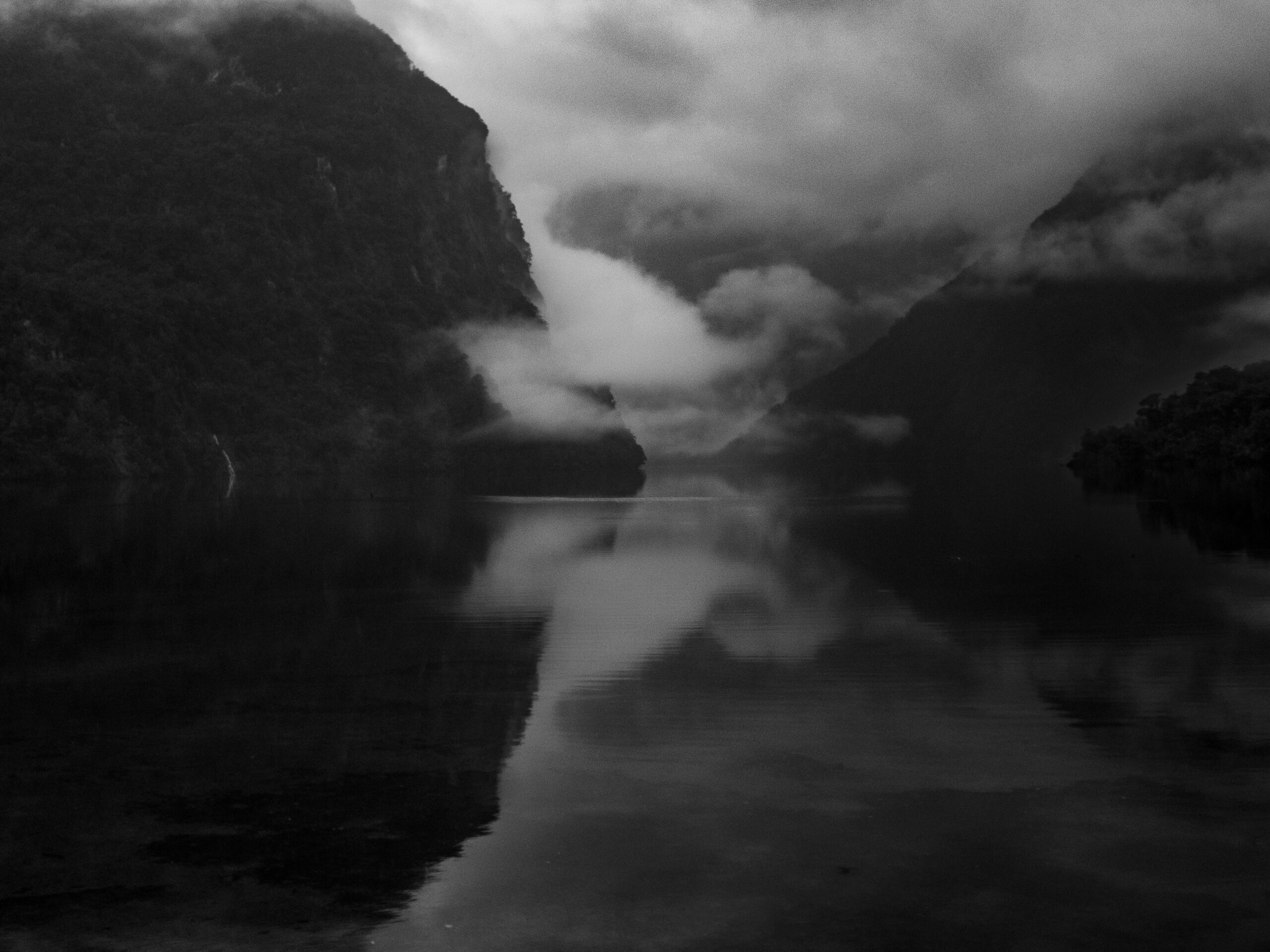
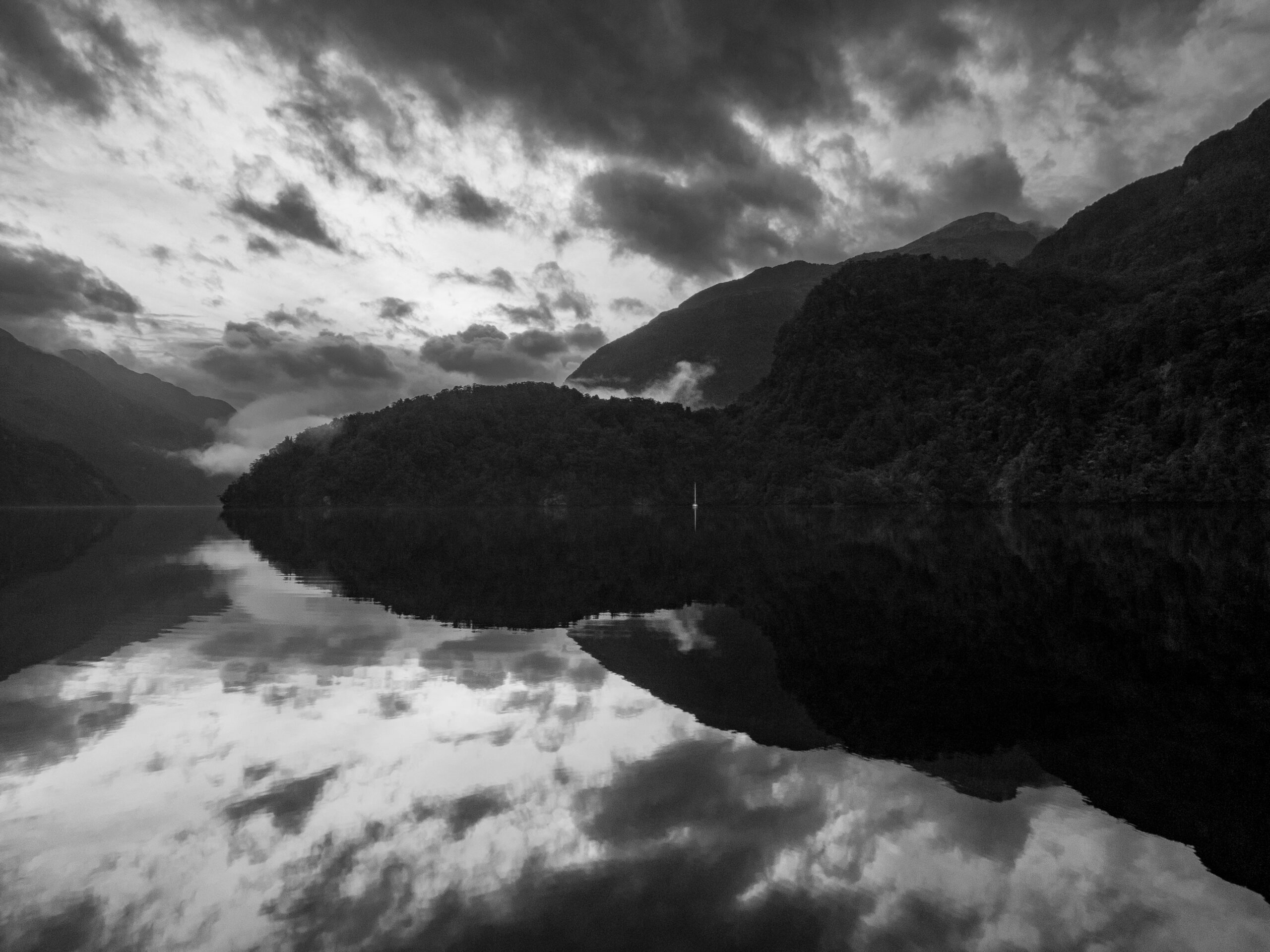

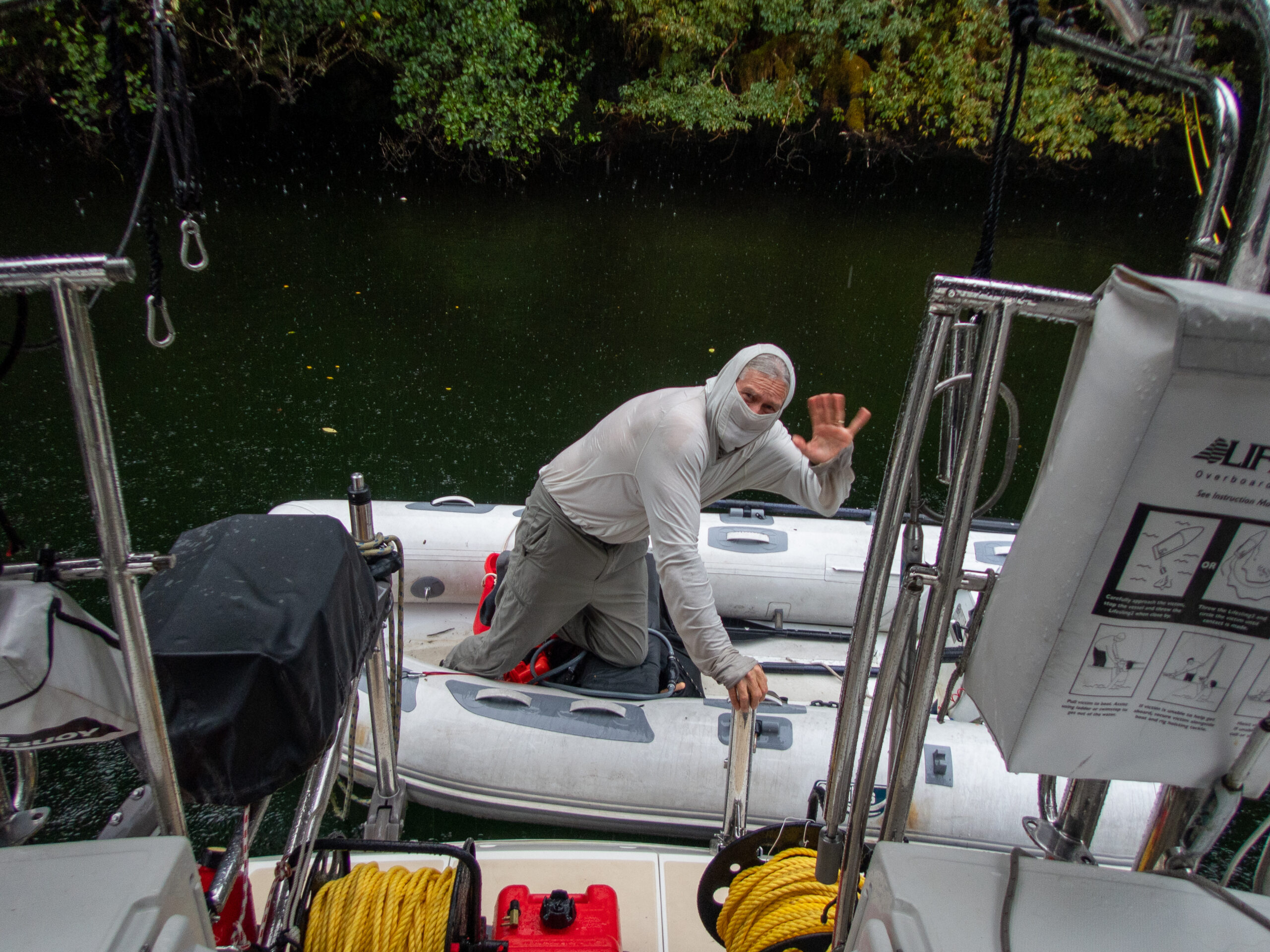
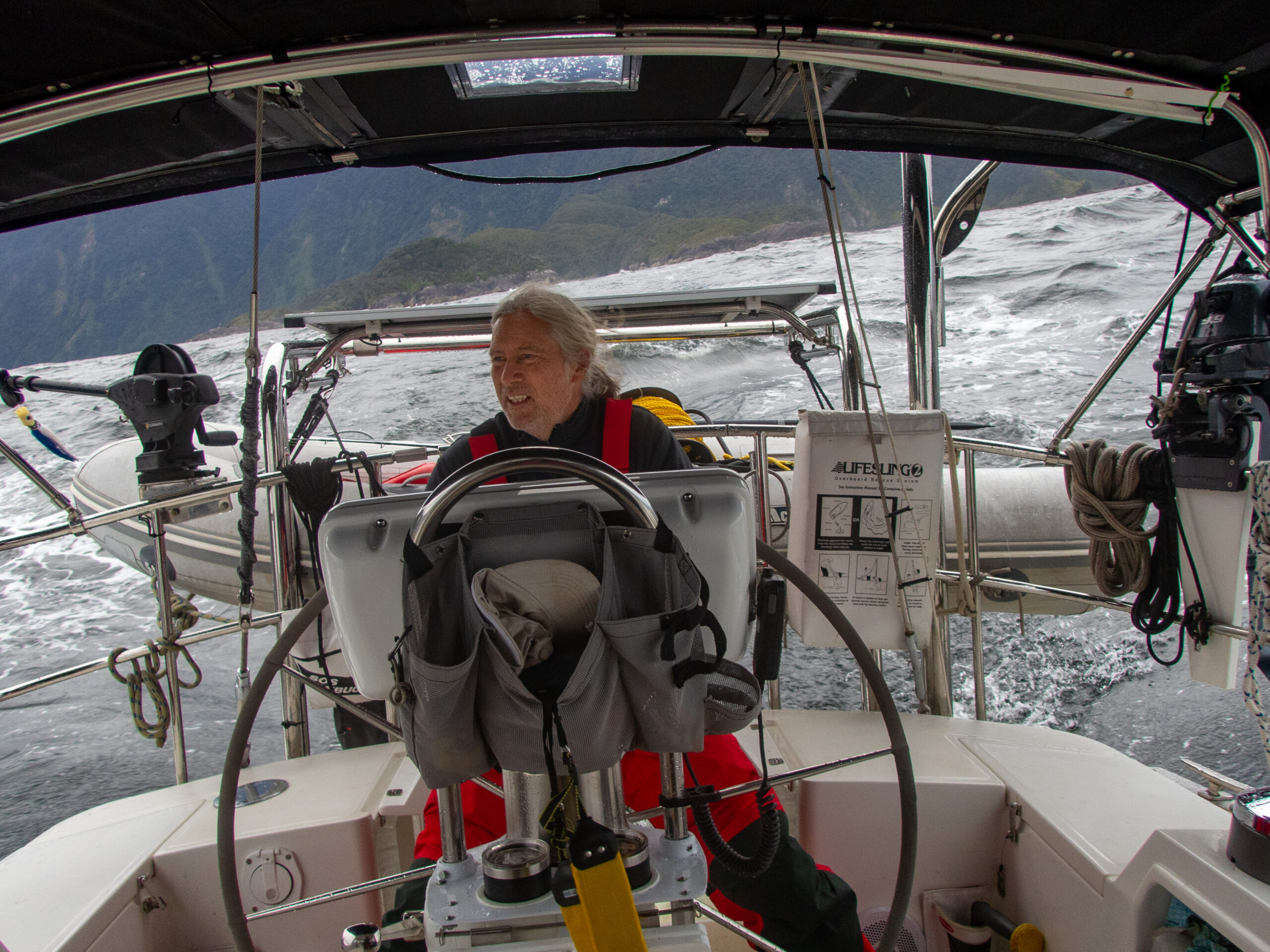


Woven belted mats, ta’ovala
worn over black missionary garb
maze of lifted islands pushed up by the Tongan trench
friendly islands, plotting Cook’s demise
faint volcano in the distance, a perfect cone
further south, the world’s newest island
space alien squid hovering by the swim step

weekly troughs of rain and wind and gray
hard scrabble bottoms for the anchor
numbers for the anchorages keep sailors from learning the hard to pronounce names
everything at the Neiafu market is four dollars

fish and chips on a floating barge
God is Alive bar, blasting music across the still water
Ag festival for the King

dead zebra sharks on display,
a temporary binge in the off limits fishing zones
people go crazy to show what they have

soft coral, rocks and canyons, nudibranchs and filefish

lobster, lobster, grab one if you dare

outer islands, Ha’apai, people live simple lives

weaving, fishing, making babies

it’s a long boat ride to the nearest grocery store
power from a solar project paid for by Japan
kids play on the beach

leap from the trees into the sand
make toys of VHS tapes, decorating wood fences with shiny ribbon
sailing the flat water behind the lagoon
hove-to for humpbacks
whales sing as we dive

high pitched songs, deep rumble in your chest
rolly anchorages, whale nursery anchorages, long beach anchorages

coconut heart pancakes!

Sleeping mom’s providing whale-sized nourishment using her Antarctic reserves
tail slapping to keep junior in line
rambunctious males, out for a good time
call mmmhhh mmwwwhmmm whummmmmmh
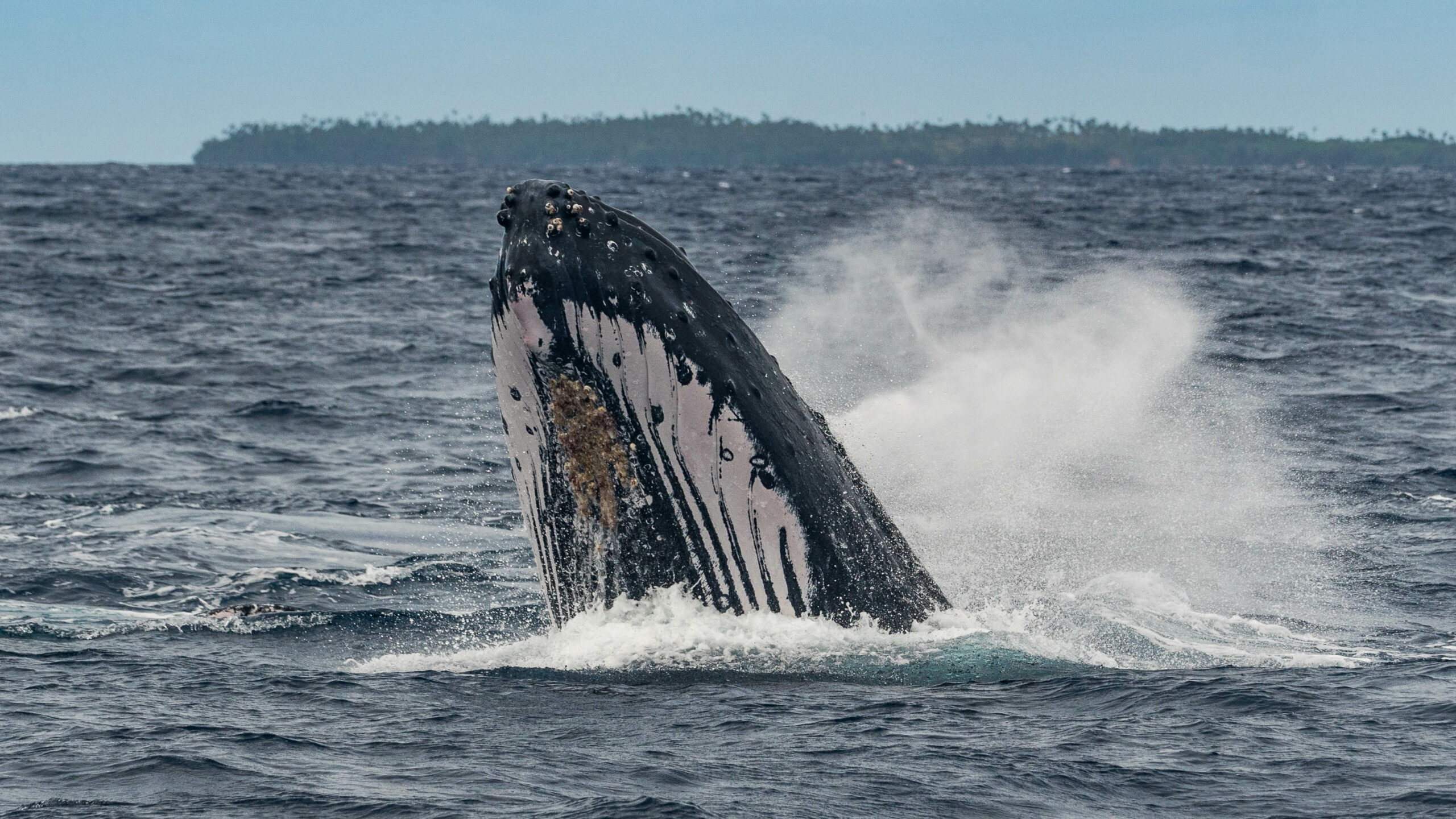
Cetacean society,
any whale who’s any whale is here
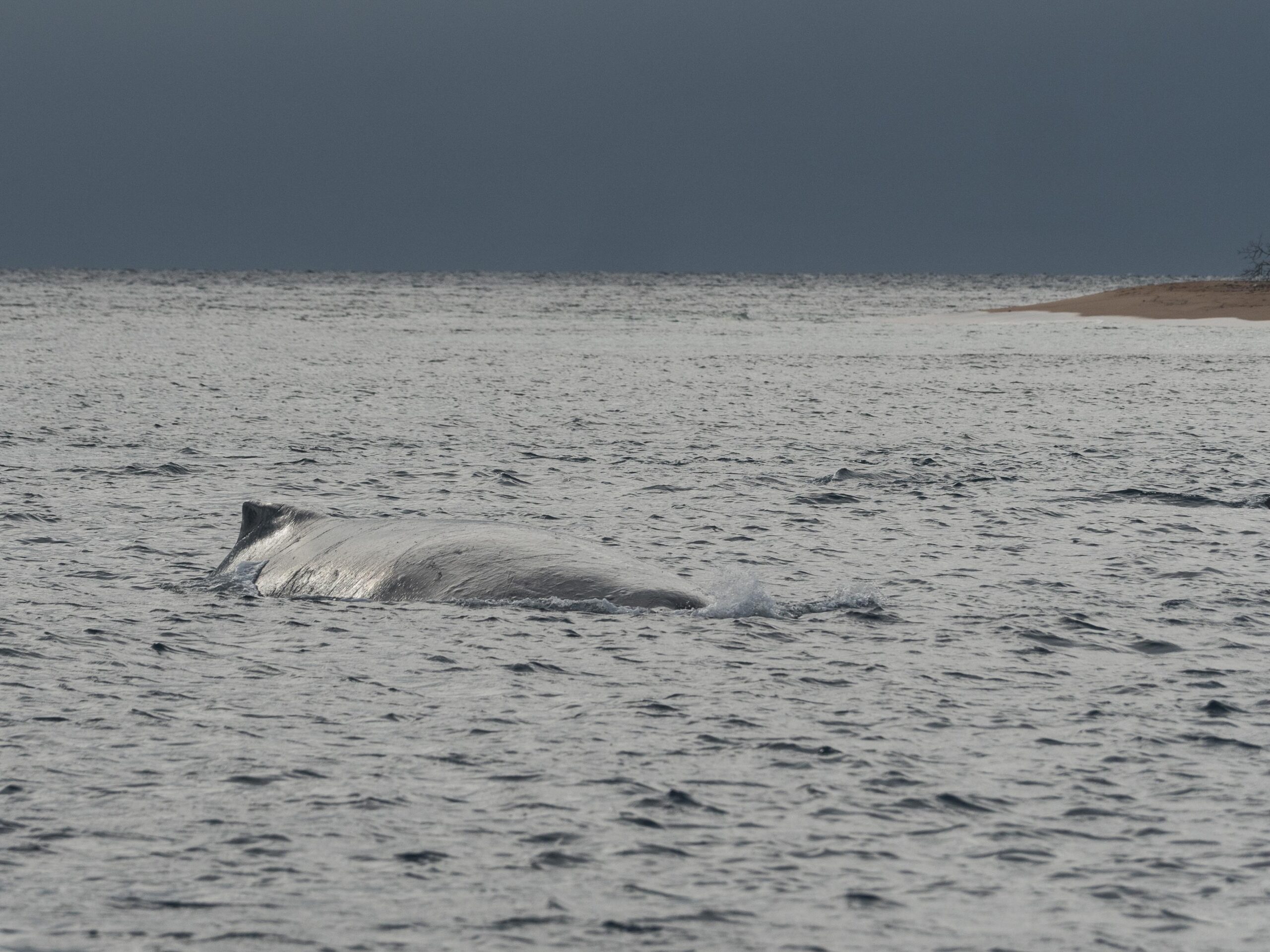
Tonga’s the place to be, leviathan

no predators, warm water, but no food either
what if humans vacationed the way humpbacks do

on a diet
no Piña coladas, might just put cruise ships out of business
think of the savings in fuel!
~MS





We had all 3 kids (and Liam, too) visit over the course of our 3 months cruising around Tonga, so you’ll see some family faces among the locals:

(Why the title of this post? Well, that’s what the young guy working at the airport said when I picked up my own duffel bag! Yeah, he figured I was ‘still going strong’ just to be able to DO that! Poor kid, you can imagine the reaction I gave him?!)
We left Allora in Neiafu, Tonga on a mooring (always a bit disconcerting), and dashed to San Francisco for my brother’s wedding! After that three day, joyous whirlwind, we shot over to Bozeman, Montana for a couple weeks of catching up with friends. We had two indulgent stays: at the Lawson’s whimsical loft and Katy Hood’s historic Southside home (giant thank you’s to both of you) and soaked up some much needed love with our dear ones. I wasn’t quite in the photo mode, so there are only a few here and much else is left tucked in a corner of our hearts. Thanks to Lori (and maybe others?) for a few of the family/wedding shots.
“It’s hot here,” the Pastor’s lovely wife said with a smile, “it’s always hot. Sometimes you can see some flowers blooming and you know it’s Spring, but it’s always hot.” The village of TeTautua does not own enough cars to have much of a road so its houses tend to meander along foot trails, which double as scooter and motorcycle paths, a web centered on the imposing blue and white Cook Island church. Ungirded by streets, houses with deep porches, windows without glass, only tattered cloth curtains, lay scattered at random angles. You might forget to notice that there are no dogs (they have been disallowed by the island council, which makes everything its business). Their absence, as much as the haphazard city planning, creates the feeling of a ghost town, especially if the children are in school and the hot sun is broiling the gray coral gravel underfoot.

The island is losing its population, slowly, people emigrating to bigger more populous islands, or New Zealand. Though there is an abundance of fish, there are few (maybe none) of the occupations that keep idle hands busy in even the smallest midwestern ghost town. In the big village on the other side of the atoll there is a nurse. There is a policeman, somewhere. There are teachers. But there are no stores. There are scant few gardens, a difficult enterprise in the hard limestone pavement that constitutes the earth of an atoll. There are thriving coconut groves, possibly the remnant of a copra operation, the kind that is still subsidized in French Polynesia. For a while there was a booming pearl farm business, which succumbed to cyclones and a disease among the oysters. Perhaps the mental, emotional, spiritual space that in North American suburbia is filled with cars and traffic lights, malls, donut shops, Home Depot and Costco, here is filled by the sea herself and the Cook Island Christian Church.


It’s no secret that missionaries did a number on the South Pacific. This is still one of the main places those white shirt and tie young scrubs in the Salt Lake airport are all headed. But it was news to me that God apparently doesn’t want you to fish on Sundays (I thought Jesus was a fisherman). No work, no play, no music, no swimming (sound familiar?). Like a friendly, island version of the Taliban, they take these injunctions seriously in Penrhyn and they made it their business to see that we anchored right by town to ensure that we weren’t off enjoying ourselves on Sundays doing the devil’s worst out of sight of the church’s two story pulpit.
Naturally, we were invited to church. Hats strictly required for women (strictly not allowed in Tonga) but definitely NOT permitted for men. Diana showed up with a beautiful head wreath from Rapa (made for church there) but here she was told she had to have a hat that covered the top part of her head (cuz God is looking down, I guess?). Long pants for men (in the tropics!), luckily Mike had a light pair I could borrow so I didn’t have to wear jeans. The Pastor’s white pants (God only knows how he kept them white) were unhemmed and about eight inches too long for him, so he walked on them, barefoot when he greeted us at his house and then under sandals for the service. He carried a bible, well worn with pieces of folded paper tucked among its pages, King James translated to Māori/Tongarevan, the language of the Cook Islands.
We arrived in the morning to find out that regular church had been cancelled because an elder woman, Mama Takulani, mother of 12, had died in her sleep early that morning. She had lived on Penrhyn her whole life, in this village of about fifty people, with barely one dirt road and about four cars to drive on it, no stores, no post office, nothing but a collection of very simple homes occupied by people who must know each other very, very well.
We gathered at her house, the palangi (foreigners) outside on plastic chairs to witness a three hour funeral, mostly singing, which seemed unscripted and improvised, arising spontaneously from the group of women seated on the patio floor. Men joined in, and the harmonies were unlike anything we’d ever heard, oddly discordant and complex, a fascinating mix of church hymns and Polynesian music, all the more intense as an expression of mourning. Speeches were given by men, long speeches, in the local language, with occasional acknowledgements in English to the visiting Palangi. The woman’s body was carried to the church, in through the left-hand door, briefly spoken over, then exited through the right-hand door. She was buried in a pre-built concrete crypt in a hole dug that morning by a backhoe outside her bedroom. She was covered with a tapestry and laid in the ground. It felt very odd to witness something so profoundly personal and significant for our hosts, though they went out of their way to make us feel welcome, and afterward there was a feast, with an insistence that visitors eat first.
The next Sunday (Father’s day!) respecting their local commandments and traditions, I did not fish. The first time that has happened since I became a father, 27 years ago. Instead, we went again to church to be harangued, mostly in Tongarevan, but also in English, by a series of men who (like the pastors of Rapa), utilized a hierarchically arranged pulpit (literally with stairs) to wield their authority. Maybe you need something organized like this on an island with nothing but turquoise water and sun and fish, to keep people from running amok, though it felt so out of place with the usual island vibe of very friendly, relaxed, open people. Singing provided some relief in the service, though the performance was more structured and a little more hymn-like than what we witnessed at the funeral. There’s a lot of this kind of singing in Penrhyn, all through the week, several times a day on Sunday. They grow up with this music, so they sing with passion and confidence and subtlety. The women often hold a hand to their face as they sing, and I wasn’t sure if it was to help them hear their voices (the way you might imagine Sting in a recording studio), or to hide their faces and wide open mouths. One young woman held a book that blocked most of her face. Afterward, there was another generous feast at the Pastor’s house, with pictures of the gathering of foreign visitors (representing several countries in Europe and North America) to be posted on Facebook.
When it seemed we would be on the island for another Sunday (waiting for a weather window to depart, and fishing) we decided we would skip church, but thought we’d better say something about our decision in advance. The Pastor seemed relieved (the unexpectedly large group of sailors must have been hard on his freezer, which would not be refilled until the next supply ship, months out). He did admonish us not to do anything on our boats, especially not swim, and seemed to joke (not sure here) that the sharks were in league with God and would enforce the no swimming on Sunday rule. Diana spent about five hours in the water cleaning our hull anyway, and lived to tell.
Though we chaffed at being required to observe the religious regulations of the island, presented to us as Law (which almost certainly cannot have been constitutional in a country governed by New Zealand) we were also overwhelmed by the generosity of their reception. Gift giving and hospitality is a pervasive and vibrant cultural practice throughout Polynesia, and they outdid themselves. We did our best to give back, too. And although the dogmatic Christianity was a tad stifling, we still managed to have some good connections. The Pastor was a bit of an odd duck in that way, at least for me, it was very hard to engage him in a regular conversation. His relationship to the visiting foreigners seemed mostly about the opportunity to give speeches and express the piety of his flock and the importance of his position as their spokesman.
We were the fourth boat to visit Penrhyn in 2019, but within two days there were eight more boats. Most of them part of a group of kid boats (that is, boats which have kids on them, who generally drive the social schedule), all loaded with school supplies to give to the children of Penrhyn. Liza, of the boat Liza Lu, is a teacher from New York whose class had started a pen pal relationship with Penryhn before coming. She had more postcards to deliver and spent time at the school helping the kids compose new post cards that she would mail back to her school. Our friends on Alondra, marine biologists with two girls, eleven and twelve, brought in microscopes and spent a day with the students peering at everything from fly eyes to butterfly wings and gecko toes. A huge hit. The boat ‘Panacea’ with Tuomo, Reka and their kids presented a slideshow about how they’d come to be there aboard a sailboat, and shared glimpses of all the countries they’d seen. The families aboard s/v’s Luminesce, Calle II, Itchy Foot and Caramba all participated, too, and Adagio’s crew were elemental helping with the mosaic. It was an unusually bustling ‘point in time’ on the sleepy eastern side of Penrhyn … ~MS
Diana spent a day at the school (and several more on the boat) helping them make a mosaic for the school using local materials but also glass from Italy that she keeps squirreled away in the bilges. She donated for a center element, a piece of glass given to her by a mentor in Ravenna. The theme for the month at school was “Love,” so that inspired the design, which was set up so that many kids could work on parts of it at once. Thanks too, to Mike and Katie (s/v Adagio) for jumping in to help. We hung it on the school wall with the assumption that it might outlive the actual building itself. ~MS
For sailors, these outlying islands are tempting and we’ve had Maupiti in our minds since reading an article about it in a sailing magazine while still in Bozeman. It did not disappoint and it was fun to have some days to explore the little, sleepy island some call Bora Bora’s rival. Maupiti was our last stop before saying ‘au revoir’ to French Polynesia. We would have liked to be able to make it to its’ neighbor Maupiha’a (Mopelia), some 130nm away, but we felt the tug to gain momentum westward …
In May we had the chance to buddy boat with my brother Doug and his family and friends. They flew from Washington and chartered a catamaran big enough to accommodate eleven people on board. We kept a pretty busy schedule touring Raiatea and Bora Bora, hiking, snorkeling, sailing, diving, SUPing and kayaking. A few of us fit in an epic, muddy climb to the top of the peak of Bora Bora. It was great fun to sail alongside my brother, beat him sailing to windward and then watch him blow by us like a ghost ship with the wind behind the beam. He hailed us on the VHF sailing to Bora to tell us that for the comfort of his crew and to keep up with us on the windward leg he was turning on the engine. I said, “That’s awesome (I never expected to be able to beat that catamaran) he said, “Great for you, Marcus…” Evenings onboard Kiwi will probably stick with us the longest. I guess sunsets are like that. After a long day of whatever and wherevering (usually in the water) their ridiculously spacious Bali 46 was a great place to hang out with no particular agenda, sip a little rum or scotch, a glass of wine or a dark and stormy and enjoy the warm tropical breeze and another delicious meal. ~MS

I’m going to ask Marcus to wax poetic about our final weeks in the Tuamotus. Suffice it to say that this region of French Polynesia is most definitely a favorite of ours and I even heard Marcus say he could live there. If fresh produce was available, I might be on board! For the time being, these pics can be a placeholder. These are shots from Tahanea, Fakarava and Rangiroa.
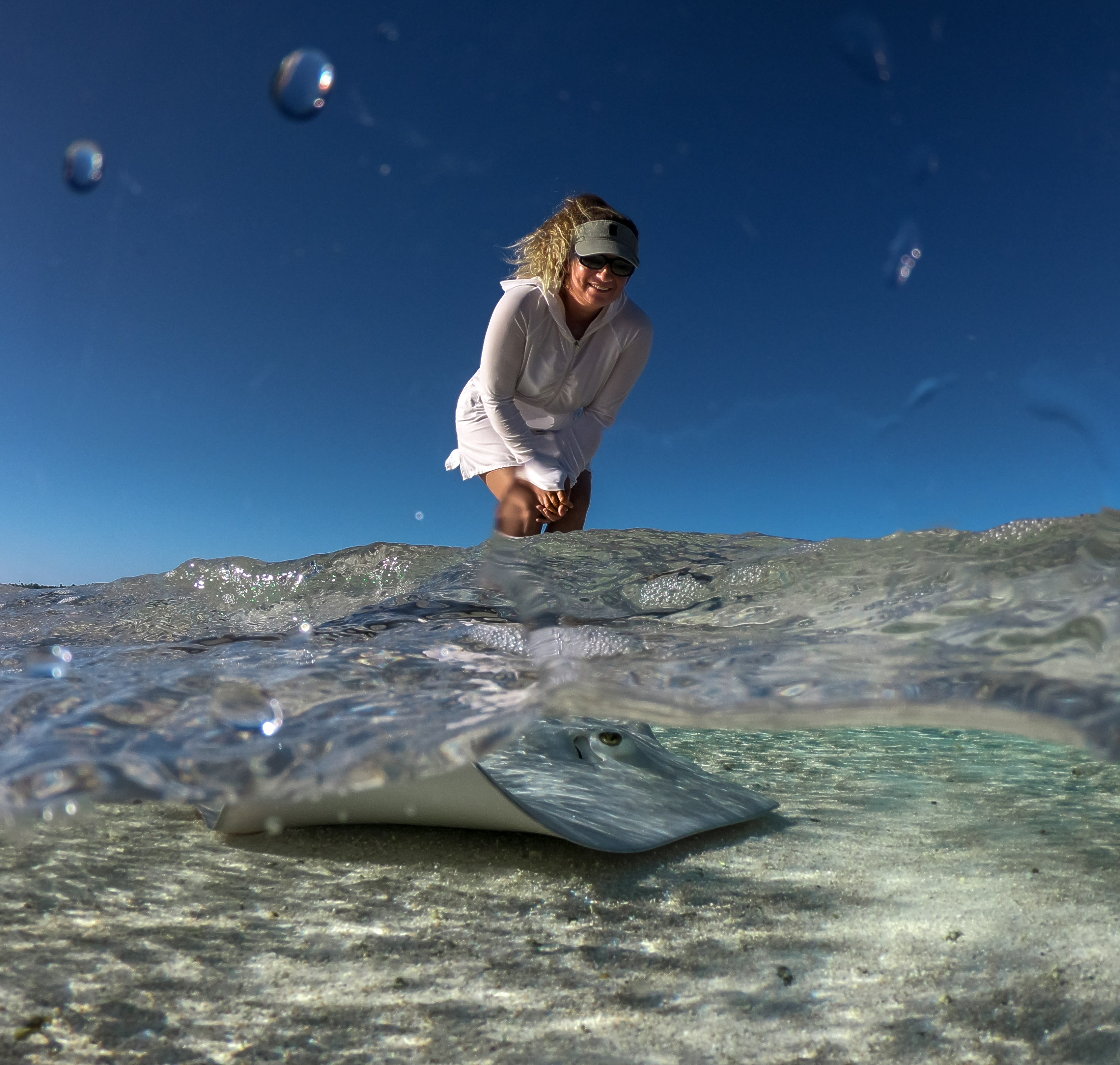
We spent about 6 months in the Gambier between two visits, which was enough time to start to make some connections and get to know people a little bit. Herve and Valerie on the island of Taravai nurture these relationships with sailors, warmly welcoming everyone who drops anchor behind the reef. Eric and his family became near and dear and when tragedy struck (Tina was lost at sea in August of this year), we grieved together.
We learned our way around, becoming comfortable with how things worked with the supply ships, buying gas in 200L barrels and negotiating to pump diesel straight from the boat. We got used to the idea that it was nearly pointless to try to get an internet connection, even in town.
We got to know some of the people along the water in Rikitea’s harbor:
Mike the fisherman and his wife, Agnés, the school teacher, offered us fresh fish and tried to organize an excursion outside the reef with Marcus, but the timing never seemed to work out.
Vaitea, the guy at Jo Jo’s (the ‘magasin’ or market) who made key resources manifest when there were supposedly none and was the recipient of multiple loaves of banana bread.
Louison, the body builder who rented us extra scuba gear – always laughing and smiling, paddling his Va’a in the harbor, delivering us tanks and gear wherever, whenever.
Eric’s sister-in-law, Juanita, and her friend Tao who drove us around the island in search of fresh fruit and invited us into their homes with open hearts.
Tehoto, who grew up on Kamaka island, who’s wife, Noella runs the pizza place, which is sometimes open on the weekend, depending on what else they have going on, allowed us on his private island, sharing his haven with us.
Iolanie rented us her car for a couple island excursions and stored our bikes in her front yard and later, in her store and would accept nothing in return.
Josie and her husband from Las Vegas ran one of the magasins and they volunteered to bring us veggies out to our anchorage about 8 miles away, as they were going by to a nearby motu (island) anyway … and this on Christmas Eve!
And then there were the cruisers, considerably more this year than last, who sought refuge from inclement weather in these eastern Polynesian waters, namely cyclones. A comradery naturally developed as we ended up seeing the same boats around the islands. We sat out a tropical depression at Herve and Valerie’s place in Taravai with a handful of other cruisers and were all poised to help out our neighbors as need be. The community of sailors is one of the highlights of this nomadic lifestyle and generosity, much like in the local culture, is a ‘given’ concept and knows no bounds.
Over two seasons, we covered most of the waters that comprise the Gambier, and yet it was hard and strange to leave knowing we would probably never make it back to this beautiful, remote Archipelago apart from the world.
cerulean seas
rain storm snorkel,
diving (with and without weight belt),
sharks, shells, sand, sailing in the lagoon
bugs on the beach, turtles
coconuts and an ancient village
Taravai petanque, ukulele and guitar
gusts from the mountain
anchoring pandemonium,
slow time and quick time
Valerie’s painting with sand
more fish more music
more fish more fish
damsels, butterflies, leatherbacks, grouper
parrot fish, sling jaw, guinea fowl puffer
canyons of coral, warm water
singing, laughing, lazy days
~MS
Our 2019 ‘cyclone season’ in the Gambier kicked off with visits from our Mom’s and sisters. Mom and Lori arrived at the end of January and we enjoyed a couple of weeks aboard Allora, sharing our favorites (people and places) in this sweet eastern corner of French Polynesia.
Mom certainly knows her way around the boat, so she slips into very relaxed mode and we always marvel at her being ‘game’ to do just about anything. This was Lori’s first full-fledged stay aboard, so it was particularly wonderful to immerse her in our life afloat. These were full, rich days!!! ~DS
Through Lori’s Lens:
DIVE IN! We’ve been to the Gambier before, this little Archipelago on the southeastern edge of French Polynesia, clinging to the tropics by a few minutes of a degree. From any place to any other place in the Gambier it always seems to be six miles. Motus, reefs, mountain islands, all of French Polynesia on a small scale. Not a lot of people anywhere, basically one road on Magareva, no traffic lights, or stop signs or yield signs. No internet to speak of.
We’ve been to the Gambier before, this little Archipelago on the southeastern edge of French Polynesia, clinging to the tropics by a few minutes of a degree. From any place to any other place in the Gambier it always seems to be six miles. Motus, reefs, mountain islands, all of French Polynesia on a small scale. Not a lot of people anywhere, basically one road on Magareva, no traffic lights, or stop signs or yield signs. No internet to speak of.
The business of the Gambier is pearls. Its cooler water temps and open lagoon are ideal for cultivating that one particular oyster which has captured the imagination of the world’s great connoisseur and collector ape, an irredeemable species with a bizarre obsession with grading things according to their level of perfection, and assigning abstract value. Toiling like 49’ers, cleaning the oysters, nurturing and counting them, performing delicate surgeries to create little iridescent balls of nacre.
We had lots of company in the Gambier this time around. Lots of time to go explore some of the places we missed the last. We thought it would feel like lots of time in general, but I guess Time doesn’t exactly work that way. First to arrive was Maddi, followed a few days later by Wyatt’s girlfriend, Heather. All passionate outdoors people, crazy about running over mountains and diving with sharks and mantas. Heather kept a diary of the fish she identified (as a scientifically trained person would). She and Wyatt would pour over Diana’s books at the end of their dives. Diana’s pretty good at this, but I’ve been slower remembering the names of (non-game) fish. One that Wyatt and Heather found that has stuck and is easy for me now is the Piano Fangblenny. Nice name for a fish with what sounds like a mean habit of eating other fishes scales. We had lots of music and card games for the rainy days. Maddi hooked a giant bonefish right off the shore in front of Eric’s. It charged her fly and then ripped into her backing. She landed the next one. Wyatt landed a nice fish there, too, a few before having eluded getting their picture taken by slipping off the hook at the very last second. We dove, exploring new places in the Gambier, had some gear trouble, and then got that fixed. We played volleyball in Taravai and climbed Mt Duff in the pouring rain. It felt quick (as almost everything seems to these days) but filled with memories.
 The weather was unsettled during most our stay this year in the Gambier. Everyone says so. It’s a thing. We had great weather and we had rainy weather. We had calms that made it possible to swim with mantas at Ile Kamaka and spend a wonderful Sunday afternoon relaxing in the shallow water beach in front of Eric’s pearl farm. We also had the worse wind we have ever experienced at anchor, a glancing blow from a depression that plunged the barometer to the low 990’s. Top gusts of 54 knots and sustained winds of 40 knots. A proper gale. Other sailors certainly got tired of us commenting that it wasn’t like this last year.
The weather was unsettled during most our stay this year in the Gambier. Everyone says so. It’s a thing. We had great weather and we had rainy weather. We had calms that made it possible to swim with mantas at Ile Kamaka and spend a wonderful Sunday afternoon relaxing in the shallow water beach in front of Eric’s pearl farm. We also had the worse wind we have ever experienced at anchor, a glancing blow from a depression that plunged the barometer to the low 990’s. Top gusts of 54 knots and sustained winds of 40 knots. A proper gale. Other sailors certainly got tired of us commenting that it wasn’t like this last year.
Christmas day the festivities were held at Edouard and Denises, at the southern end of Taravai. We wore our hats from the Australs, and like everyone brought food to share. Herve supplied the pig for the roast (he introduced me to the doomed prisoner the day before) and Edouard made Tuamotuan-style bread on the fire from coconut heart and flour wrapped in leaves (delicious). We brought guitars and ukuleles and I backed up Maddi on few songs, then Wyatt came in. For me the best song of the afternoon was the one Wyatt and Maddi sang together “Wildermen.” It starts, “my brother and I”… but Wyatt sang “my sister and I.” They stopped and tried again, laughing when they each switched the line, and then on a third try got on with the song. Funny and relaxed, what a great afternoon! The song Maddi wrote for mother’s Day “Anywhere You Are” was also a big hit. We played the chorus a few extra times so everyone could sing along. After awhile, Herve brought out his Marquesan style ukulele, which confounded us at first because he’s left handed, though he hasn’t restrung the instrument to match, so he plays it upside down and backwards. It didn’t make it easier that here they use the do re mi system of notation in French Polynesia instead of A B C chords that we’re used to. But after a bit of mental gymnastics we were able to share some songs with him, too.

KAMAKA is a small, steep island on the south edge of the Gambier. Because the reef is submerged along this border of the archipelago the ocean swell is free to move in. There’s a patch of sand that great for anchoring (though watch out for a lost anchor on bottom about one third in from the east side), but the conditions have to be pretty calm for it to be comfortable. There is almost always a south swell breaking on the west side of the beach (in case you’re a surfer).


Taravai is a sort of sailors mecca in the Gambier. It’s a good anchorage in most normal weather even big southeast isn’t too bad. But the real attraction is Herve and Valerie. They live on this island with their son Ariki, the only child on the island. Herve’s uncle, Edouard and his wife Denise live at the other end. It’s kind of amazing in the 21st century to see such a gorgeous place so simply occupied. Gambier’s blessing for being enough off the beaten track and a place where sweaters maybe required in winter. On Sunday’s they put on a pot luck BBQ, usually chipping in some fish that Herve has speared and sailors bring food and drink to hang out, play petanque and volleyball. Hard to beat. Valerie greets newcomers with a warning not to beach their dink under the coconut tree which is tall and would be lethal if it let go a coconut as just the wrong moment. The games of volleyball are played with Taravai rules, which include a slightly lower than regulation net and an easy going vibe … Herve’s secret weapon, besides his wicked sense of humor, is the headshot. It never fails to unnerve the opposition. Valerie is a committed player, too, always giggling, saying “Fakarava!” when she misses. Herve calls her “my lady.” The games often persist until it is just too dark to see, so Diana had the idea to ask Wyatt to find a glow in the dark volleyball to bring along as a gift. It lights up when hit, and stays lit for some period of seconds. The first night we played until the only thing people could see was the ball.

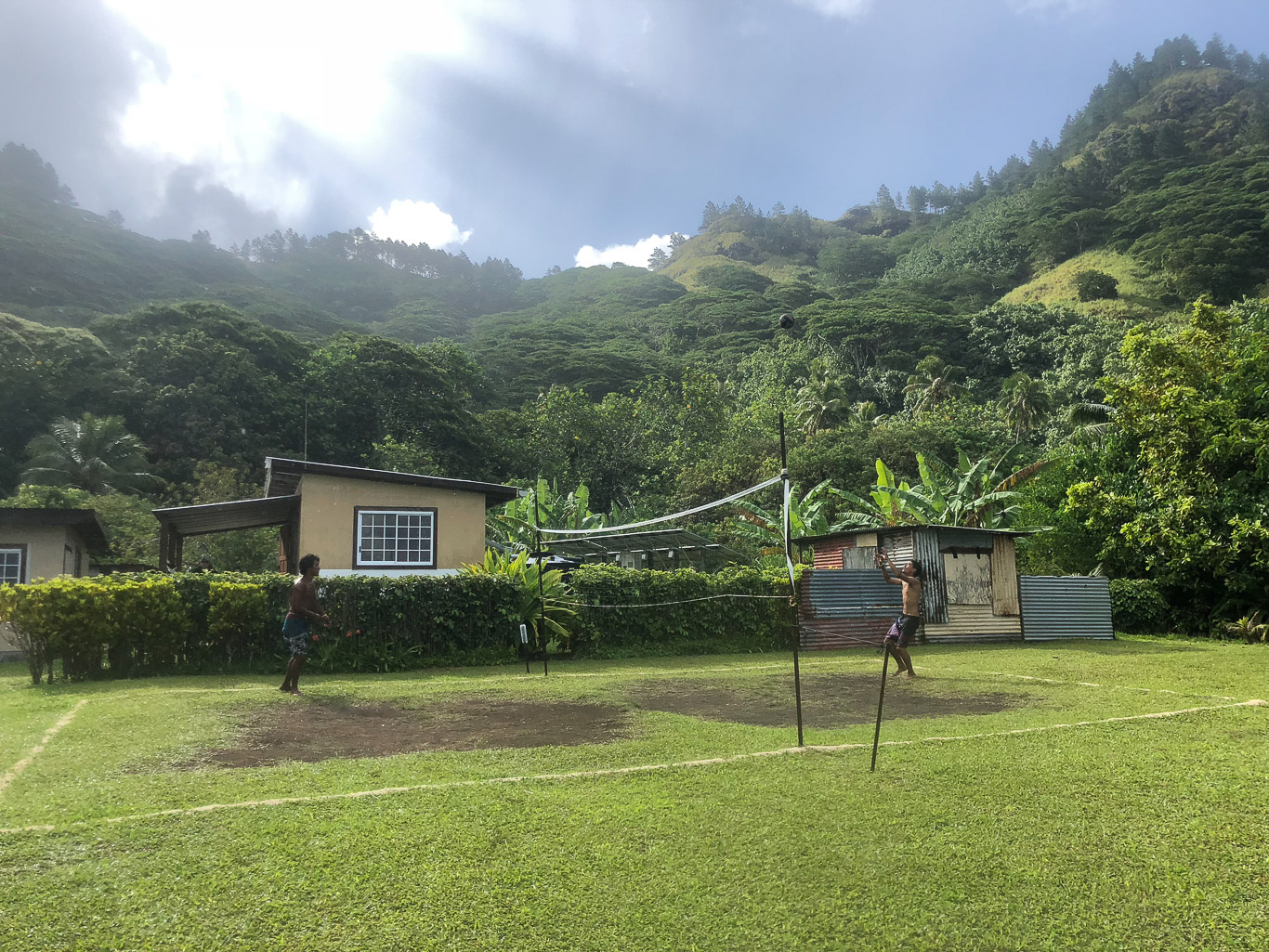
In a calm but northeasterly breeze we decided to anchor on the west side of the island of Rurutu. The southwest swell wasn’t big and it was a pretty spot. The next morning the sea began to build with an eerie feeling as we lifted on long rollers at anchor and watched them break bigger and bigger onshore until it was pretty clear the dinghy pass there was no longer navigable.
Still, it was a pretty day and we set sail to the south to see the rest of the island before heading for the small harbor on the NE side. Not far along we caught a small Yellowfin tuna, what Diana calls ‘the perfect size.’ Then as we approached the harbor we spotted whales and drifted for a while watching what seemed like two juvenile humpbacks playing, left behind as though reluctant to leave the tropical waters and join the rest who were already headed south to Antarctica. A last hurrah, for us too. It was calm and lovely and there was only one boat in the very small harbor (friends from the Gambier last season) when we ventured in and anchored, tying a long line to the wharf to keep from swinging. We were the 4th boat to check-in to Rurutu that year (in November!)~MS
The Australs lie a few hundred miles south of Tahiti, some just barely within the tropic of Capricorn, more remote islands like Rapa lie distinctly out of the tropics at 27 degrees south. We’re talking water temps below 70 degrees. Brrrrr. The weather is often challenging here and so these islands get few visitors. Intrepid tourists fly to Rurutu (where Wyatt met us) for the whales which winter around the island to raise their calves, but there aren’t enough visitors to support even one taxi. Still, whenever we needed to hitchhike, the first car would always stop to pick us up.
Rurutu is a hybrid island, half lifted makatea (limestone from petrified coral) and half volcanic, caves with stalactites like the atoll Makatea in the Tuamotus, but also real peaks and steep rock faces. No lagoon.
One day as we prepped for Wyatt’s arrival, a man swam by Allora and stopped to chat with us. The next day he appeared again, this time at the wharf with a pickup and three huge bunches of bananas, two giant squash and bucket of limes. These were gifts. Welcome to the true heart of Polynesian culture. We told him we could not possibly take three bunches of bananas, but he insisted. Obviously, he knew more about bananas that we ever will. They were timed perfectly to ripen one bunch at a time. Bananas for a month! A couple of days later two women showed up waving half of a tuna. We got one half and Charlotte and Pierre (the other sailboat here) got the other half. A gift again. We gave them what we could quickly scrap together, some cartons of juices, an uneven bargain indeed.
Picture Rurutu, an island with a few moderate peaks, Wyatt with his trail running shoes running circles, mountain to mountain, with occasional breaks to explore limestone caves with his relatively more sedentary mom and dad.
Rurutu grows coffee and strawberries. Yum!
We threw out a second anchor when the wind started blowing from the east northeast, and it got a little bouncy and rainy for a day or two, but nothing worrisome. Could have skipped the extra hook. A real northeast blow would not be good, but even twenty knots was fine in the small harbor.
We sailed passed Tubuai, reluctant to miss out on it’s vegetable gardens, and burned a little diesel to make it to Raivavae before dark. Like Bora Bora without the tourists, jets skis and cruise ships. Dodgy weather keeps it that way, but it was fine for our short visit. Lychee nuts were in season and we were given bags full.
There are bonefish in Raivavae. Wyatt and I spent the first afternoon fishing what looked like a classic flat. We caught Brassy Trevally, but saw not a single bonefish. The next day I decided to follow Diana’s advice and ask a local, and this woman very confidently pointed us to the unlikely looking shallows along the motu away from the “classic” flat. Wyatt spotted the first one a hundred feet down the beach and hooked the first one a hundred feet later. There were lots of fish, but they were very picky. It took a while to get the presentation right.
There’s a point of sand that separates the classic flat and the long beach where the bones actually are. It’s a steep drop off and the trevally cruise the edge. We were having fun chasing those, Wyatt with popper, when a Giant Trevally (GT) swam up on the flat, in about two feet of water. I finally got a cast to it and it swirled on the fly, but didn’t hook up. It looked at the fly one more time, unconvinced, and then swam back toward the edge, right toward Wyatt. I yelled to him that it was coming and he cast the popper out into the deep and waited until the fish was close. I’m not going to be able to adequately describe the excitement of watching that huge fish (guess 80 pounds) charge after his fly, straight at him. It finally engulfed the popper with a furious and massive gulp just fifteen feet in front of Wyatt. Holy shit! At first it didn’t quite seem to know what’s up. I played Dad yelling, “Let it go, let it go!” afraid it would break him off immediately, and Wyatt’s yelled back, “He’s not running.” And then he did (may I say holy shit again) and never stopped. Finally Wyatt had no choice but to start adding drag and inevitably the fish broke off. It would have been a miracle to land a fish like that on an 8 wt fly rod. But who cares? That was unforgettable. If you want to get a real idea of what it looked like watch BBC’s Blue Planet II Part I, “One Ocean” about 14 minutes in. Let David Attenborough explain it to you. Giant Trevally gather at a particular South Pacific atoll to feed on fledgling birds, literally jumping out of the water and grabbing them mid air or swallowing them whole when they make the mistake of resting on the water. The whole series is awesome.
We hiked the peak, watching Wyatt traipse ahead in the distance, spec of a red shirt bobbing on the steep green slopes of the peaks. The view from the peak was beautiful, but all I could think about was a chance lost to get one of those GT, this time with a 12 wt rod that might stand a chance. We had to leave the next morning.
The sail from Raivave to Rapa wasn’t too bad, but like all the sailing in these latitudes, the winds were fickle compared to the steady trades we’ve been accustomed to in the Tuamotus. Very light from the east when we arrived. We took a rare opportunity to anchor in one of the northern bays. In stronger winds no doubt the waves wrap and make the anchorage uncomfortable at best.
Wild horses, cattle and stone foundations, the remains of earlier settlements. We explored the valley and the next day climbed the ridge, aiming for a nearby peak, but halfway up we spotted a group of outriggers paddling toward Allora. We weren’t sure who they were, but they finally spotted us up on the hill and paddled over, we climbed down to meet Alain and , the one Rapa policeman, plus paddling friends. They’d figured out we were here (having not checked in), so they came to greet us. They returned in the morning, we thought to check us in, but really to have coffee and muffins. They looked at our papers but then asked us to come see them in town to really check in. It was an elaborate process considering we were still in French Polynesia, but super nice guys. It probably didn’t help shorten the formalities that Diana kept making the yummy muffins and cookies, no doubt it could be done in one stop instead of three.
We heard somewhere that there was a compressor on the island for filling scuba tanks, owned by the community. To get our tanks filled we had to go see the mayor of Rapa, who is also the main guy at the post office (used for banking and many other purposes here). Once we got the nod, they would not take money, and sent three young guys to collect them, and then return them to the dinghy on the dock.
Everything in Rapa went like that. We were given as much tuna as we could carry. “No money. No money,” and bags of peaches and nectarines and a local berry kind of like a blackberry. We tried to gift back, Diana baked peach muffins and banana bread, and we gave them little things from the boat and fishing line, but really you can’t win a gift giving contest with a Polynesian. They have the home turf advantage. It was all light hearted and a real pleasure.
To manage their fisheries, the island has a general ban that is in place most of the time for the east side of the island called the Rahui. From time to time they lift the ban and the boon of fish is piled up on the docks and shared among the whole community. Everybody gets fish.
There is no airport in Rapa, and it’s quite isolated, so things have to work differently. Not much room for disparate income levels, and the pretense of independence that underscores our western culture. No doubt there are tensions that go with that. Everybody knowing everybody’s business. It’s a small island. Centuries ago, before the arrival of Europeans, things got really, really tense on Rapa, which is just five miles across. There are the remains of fifteen forts on the island, occupying all the peaks and high ground to be found.
Wyatt and I cleaned Allora’s hull in preparation for our passage to the Gambier. Deep water under cloudy skies. We were circled by curious Galapagos sharks for the whole hour or so underwater.
Before leaving we visited church, for the hats (amazing) and the singing (magical). We were told everyone went, but in fact, only about seventy out of the four hundred some odd souls of Rapa showed up. Alain, who told us everyone went, wasn’t there either. Children attended, minded by an imposing man with a very big stick. The program was dismally long, and heavy on patriarchal themes, but it concluded with a feast and more music, the insistence that we bring lots of leftovers away with us.
We prepared to weigh anchor in the rain, but our chain was trapped between two towering bommies in the deep anchorage. Diana had to put on scuba gear and dive sixty feet in the gloom among the sharks to free it.
On our way out, we spotted Raymond, our tuna and peach benefactor who was running shuttles across the deep channel to take people back from church. Wyatt scooted over in the dinghy with a Montana hat to give him. He laughed because we got him, he had nothing on him to give back! ~MS
THROUGH WYATT’S LENS:
Follow Wyatt and his buddy, Tully, as they embark on their northern Russia expedition: https://www.summerinchukotka.com
First reliable wifi in over 6 months, so I will be making a series of blog posts trying to get caught up! We last left off in Moorea (Oct.’18), so here are a few last shots of the island which, although somewhat touristy, provided sweet memories and special encounters. Next up, the remote Austral’s …
We waited a while to leave Moorea for the Australs, which was just fine. Plenty of nice diving with our new tanks and gear, bike rides and friends. And whales. In the wind forecasts there always seemed to be a stubborn trough (meaning squalls and confused seas) situated right across the route. No doubt it’s there most of the time in the spring. We finally left, deciding that it wasn’t ever going to really go away, and that anything that looked halfway decent was probably the best we could hope for.
The forecast was for diminishing winds, so after a rough start (including yours truly experiencing a rare though mercifully brief bout of seasickness after going forward to set up the check stays at dusk, we settled in and the wind and seas finally did seem to mellow. Too make sure we made it to Rurutu not too late we also decided to fly the Asym, which we are normally reluctant to do at night. All fine on Diana’s watch, but instead of continuing to decrease the winds built on mine. The plan was to wake her up to furl the sail if the breeze tipped 16 knots. It hit 18, twice and finally I woke her. By the time we started furling it was blowing 22 knots and the bowsprit was nearly bent in half. It was almost impossible to get the sail in. When the wind did die, as forecast, we could no longer fly our Asym.
Aka Marlon Brando’s atoll, aka where Obama went to write his memoirs, aka the weekend get away for Tahitian royalty for hundreds of years before those two. This is a difficult atoll, not very often visited by sailors. There is no pass to get your sailboat inside the lagoon, so you have to find a place to be on the outside, which means that conditions have to be just right. There’s a bay on the southern side, but the prevailing swell in these parts is south, and it has to be less than a meter and a half, or it’s just not tenable. The trade winds are east-southeast, so those have to be mellow too. The other big, big problem is that it’s super deep right off the reef. There’s not really a place to anchor. Charter operations out of Papeete have put in five mooring balls. Only one of those is really good for overnight, and if the conditions are right, the charter boats are guaranteed to be using them. We sailed in from Makatea unsure if we were going to be able to stay. In fact we had to plan our schedule so that we arrived in the early morning. Then, if we had to move onto Tahiti, we’d be able to get there before too late in the day.
As we approached after an overnight sail from Makatea, we could see two charter boats already arriving. Our only choice was to motor up to the catamaran that was unloading his guests to take ashore and ask if we could use one of the other moorings.
Now it’s really easy to imagine the response you might get to such a request in much of the rest of the world. Even a polite, sorry, these are private buoys would not be surprising. Less polite, not surprising either.
Obviously, we got an altogether different response. The captain of this catamaran had twenty or thirty guests that have paid $150 each to get there and were lined up to get ashore. He’s a one man show, from running the boat to making sure everyone has a life jacket. So he’s a bit busy. Nonetheless, without hesitation he pointed to the closest buoy and said, that’s the one you want. We asked are you sure, not one of the others, no that’s ours and it’s the best one. Can we stay the night? Absolutely, no problem. His name was Moana.
After he ferried all of his charge ashore he came over to talk. Remember the thing about Tetiaroa is THERE IS NO PASS. Meaning, no break in the reef that will allow you to sail to the protection inside. That includes shore boats. Marlon Brando and Obama got there by airplane. The only way to get ashore is to time your approach with the waves and surf your dinghy across the reef. When the surf is out, there’s a three feet wall of coral wall to slam into. This is what we’d been watching Moana do – dinghy runs with his guests. Seriously, it took our breath away. Obviously, it was possible. No doubt centuries ago Tahitian royalty were paddled across the same section of reef by young, strong paddlers. Moana offered to take us in, but he was leaving at 2:00 (we preferred more time on the inside), so we decided to launch Namo (our dinghy) and go for it. We went over to ask for tips and instead of letting us just try it, he took me in his dingy and showed me how to surf across. The key is to line up with a palm tree that has no top. The other key is that the waves roll along the reef so you can see them coming and gun it at the right time. It’s too late to just wait for the water to cover the reef, you have to be going full speed by that moment. Then to get out, the key is to know which coral heads you might hit with your propeller if you don’t aim right. Spot them, then gun into the white water of the breaking surf.
So we did it, surfed in with Moana cheering us on. Basically, you get across the reef and land in a pool, then if you turn hard right you can wind your way through the coral heads and tie off on shore. It’s also possible, but very complicated, to wind your way along the royal Motu (small island) and into the lagoon. We opted for anchoring Namo up at the spot where Moana left his guests and walking around the motu (the opposite way from which he took his clients) into the lagoon.
And what did we find there? Huge bonefish, as big as I’ve caught anywhere. Diana got lots of pictures. It’s illegal to fish inside the lagoon, but catch and release bonefishing is allowed. However, all of the charter companies have signed an agreement NOT to bring fishermen. So the only way, other than the way we did it, to fish in Tetiaroa is to go the the hotel. Where Obama went. Yep, $4,000 per night, not including airfare, for the cheapest room in the off season.
The next day another charter boat showed up. A smaller, private charter, same company, POE Yacht charters. They took the same buoy as the other captain had, but then once he’d off loaded his guests he came over to tell us that he needed the buoy we were on for the night. Once again, sorry sir, but this is a private buoy, you need to get lost. Right? Nope. He said that since this was the only safe buoy for overnight (capable of holding five boat in deep water off the reef), we could tie up to him and be his guest. He also offered to ferry us across the reef, and if we wanted we were welcome to come on the tour. When we asked if his guests would mind, he suggested that it was his choice and they wouldn’t mind anyway. These very friendly people were there to celebrate a daughters 25 birthday, so other than some Karaoke late into the night who could possibly complain?
I took him up on the ride in because Diana had discovered that the best snorkeling was on the outside reef edge anyway, plus, the sharks we’d been seeing circling Allora were Lemon Sharks, which we hadn’t seen before. Diana cannot resist swimming with sharks. While I was away, doing what I do, a mother and calf humpback whale swam right by the boat. Diana was so torn about whether to grab a camera, get snorkeling gear and a wet suit, or what, that she wasn’t able to get in the water with them before they passed, but she had a wonderful close encounter anyway.
We were so reluctant to leave the next morning, but the swell was up, and the forecast was for building southeast wind… time to sail for civilization. In case you’re there already and don’t quite realize, civilization equals ice cream, chocolate and internet. Not to be taken for granted. Especially since we were completely out of coffee, too.
Makatea is the name of the island, but also the Polynesian word for a coral reef that has been uplifted, above sea level. This makatea is the highest of its kind in the world. The dramatic cliffs make a stunning sight after months of low lying atolls, barely above sea level. They are limestone, and so they are riddled with caves and spectacular formations. The island was extensively mined for phosphate from 1917 until 1966. The mayor of the island of 90-something people, not counting children, is an eloquent and passionate man. Julien Mao is proud of his world travels as a choreographer of Polynesian dance, particularly coming from such a remote and isolated part of the world. Diana contacted him by phone to find out about the three rolly moorings they have off the eastern coast, and he met us at the dock and led a tour of the island. We arrived to find a sportclimbing team wrapping up after a week scaling cliffs on the west side of the island. They showed us drone shots of themselves climbing while humpback whales, a mother and calf swam just off shore below them.
Makatea is laborisouly working on unearthing the remains of the mining operation to create an open air museum.
Because there is no pass, no lagoon, Makatea is unique in the Tuamotus, and not an easy place to make a living. They dream of eco-tourism and climbers, but it is hard place to get ashore unless the sea is in a hospitable mood.
Our mooring was very, very close to the reef, and still it was set in 150 feet of water. The swell rolled by and then onto the reef uncomfortably close. Built out to the reefs edge are the ruins of the mining’s operation, the towers that used to support bridges for loading the ships with phosphate.
It’s not a particularly flashy mineral, but it must have been valuable. The first stop on the tour is a future outdoor museum being painstakingly reclaimed from the brush; all the machines and steam generators they used to fabricate the railways and infrastructure for getting the phosphate to market.
Not surprisingly, the early days of the mining brought almost no direct benefits to the islanders. Cheap labor to dig the phosphate was brought in from Vietnam and China. It wasn’t until World War II that Polynesians began to be employed in the mines. The video we saw of the work was all done by hand, digging phosphate dirt out of eroded holes in the top of the island. What was left behind reminded me of the beaches of Normandy, bombed incessantly in the weeks preceding the invasion. The forests are gone, most of the topsoil too.
For fifty years since Charles De Gaulle came to French Polynesia to announce that their future was in the Atom, there hasn’t been much economic activity on Makatea. Schemes were hatched and mercifully scrapped to turn it into an island for refining oil. There was an attempt at some commercial agriculture which also failed.
Julien has come up with a controversial vision for Makatea’s future, what he calls its new story, and it sounds like it may very soon come to fruition. He would like to team up with an Australian entrepreneur to mine phosphate again, though this time on different terms. The plan, which does not sound like it has seen much in the way of environmental impact study, is to initiate secondary mining on the northern part of Makatea where the potholes riddle the landscape, abrade a layer of topsoil off and save it, take a layer phosphate stone away and then fill the holes left with gravel and rehabilitate the area by reapplying the topsoil. Basically use secondary mining to rehabilitate the damaged part of the island.
What Makatea gets in exchange, besides a chunk of the action we hope, is a new dock and a commitment to restoration projects and conservation which the mayor hopes will lead to a boom in ecotourism.
I certainly don’t have the expertise to judge the merits of his project. More mining doesn’t sound, on the surface (no pun intended) like the greatest idea. On the other hand, there doesn’t seem to be any other source of money out there that could be dedicated just to restoration, and a viable dock for Makatea.
We had a fascinating day on this beautiful island and counted ourselves really lucky to have the cooperation of the weather so we could. ~MS
s/v Chaos
The kids got to name the family catamaran. Alex and William made a deal. Whoever got to pick the boat name, the other got first call on bunks. Alex chose Chaos. Her choice is so recent, (they just bought the boat in Raiatea), that it’s not yet painted on the stern. We met the family in Rangiroa, when they offered us some Dogtooth Tuna and then later met us again by the SE bonefish flats. I took William and his dad for a little bonefishing expedition. The fish cooperated, but William’s legs were no match for his enthusiasm, so Scott had to give him a piggyback ride back to the dinghy. Converting a Kiwi to fly fishing should not be necessary. Scott said he had always planned to take it up when he got older, now I think he’s reconsidering.
They surprised us again by pulling into Makatea early on the morning we were scheduled to take our ‘tour’ of the island with the Mayor. Miraculously, they were ready to join us just an hour after picking up their mooring. The kids got a little restless during the Mayor’s presentation on the future of secondary phosphate mining while we looked over black and white pictures that for them might as well have been from the dark ages. But they had a blast exploring the limestone caves. These are filled with fresh water pools, so you swim through them with flashlights. Fresh water feels particularly good to salty sailors. Our guide for that part (Julien’s son) was barely more than a kid himself, which he demonstrated by climbing high up the walls and doing back flips into the dark pools.
That evening Diana proposed a movie night. Catamarans are made for screening films outdoors. She made popcorn and we brought over our Lenovo tablet/video projector, and set up the giant folding screen across their trampoline. Louise brought out every blanket they owned! The kids picked the movie which is a classic, apparently, in Australia, called “The Castle.” It was the perfect choice, quirky warm humor, and it gave us a glimpse of Haley’s new home of Melbourne.
They headed off for Raiatea early the next morning, bound for Tonga from there and then back to New Zealand, where we’re hoping we can catch up with them next year. ~MS
Our first instinct, on our initial pass through the Tuamotus last year, was to avoid Rangiroa. It seemed too popular – with actual hotels for tourists, including those ‘elegant’ thatched roof bungalows out over the water that plague Bora Bora. But on our second pass this year, we ended up spending a month in this largest of the Tuamotus atolls.
I’ll keep my part of the motivation for staying so long to one sentence: Rangiroa has the best bonefishing in the Tuamotus. Okay, moving on. Okay, well maybe not moving on. I broke both my nine and eight weight rods on these fish. I used up my entire stock of number 4 hooks. I fished everyday, and there were bonefish wherever we went, even at the touristy Blue Lagoon. We’re not talking armies of tourists, lets say a couple dozen for a whole day in three or four small boats. One group even waved me over and fed me lunch. The tour operator was an avid fisherman and pure Polynesian friendly. He told about a spot where he’d seen a giant bonefish, so big that at first he’d mistaken it for a shark.
Unfortunately, I never got over there. The wind shifted and we had to pull up anchor – which is a short sentence for describing a pretty harrowing situation where our anchor windlass failed, and we had to untangle the anchor from some nasty bottom, manually, and then with a little luck and jimmying of the windlass control, we raised the Rocna, just as the waves and wind built in earnest. Fortunately, we figured out the wiring problem at the next anchorage and it was an easy repair. ~MS
Other Place
take three steps into the forest,
there’s a mythic creature
somewhere here. I first saw it when I
walked through the douglas firs,
fresh snow and a silent doe.
I heard it was clear, as a blue-sky-day
but I couldn’t find it there either. I checked with the mosses,
shoved in the cracks and soddy spaces
and they told me I must be looking too low.
I went back to the books to ask again
I asked and they told me it was far
far, far away and
when I saw it I would know—
the Sublime, venerate, wouldn’t cower away from me
or the trails that led me there.
once though, when I found it perched neatly on
a rocky precipice at the peak of a
mountain, I looked to see its outline,
tried to gauge the colors of its fur,
I must’ve blinked or tried too hard.
so when I turned,
It flew away like a skittish bird
left me staring, dumbly, at the telephone poles
and old country roads, dusted trails and highways
that mapped out our places,
grid-like carways, lined with neat rows of
bushy trees that’d lost their space
stood tall and straight, sized to fit in our
self-made-image of Cultivator
creator, and perpetrator
of our own extrication.
built palaces and started lying about
the names of our neighbors, calling them gardens instead of wilds
they say it’s only ‘Wilderness,’ without us in it.
building ourselves enclosures, instead of greeting exposure.
where is it? I looked
everyday and I swore I could see
it everywhere. as a child does
I found it in every leafy green and blinking
crow, yes that one eating garbage,
does it start when I can’t hear the cars?
they tend to travel really far in valleys and tunnels.
does it stop when lights turn bright blue, because I’ve
seen, there’s creatures in the deep that do that too
maybe it’s when I start to see the stars
maybe it’s when I start to see
the stars for what they really are,
scale for a model that should
make us realize we’re smaller
than we think we are.
when did it start? I think
we stopped counting ourselves
in the trees, starting using names
that made us and Them
so we didn’t have to look in the mirror and see
ourselves mixed-up
with the world we had cut-up and conquered
mixed-in with our own muddy refuse.
we eschew our homes in nature
so it’s easier to ignore our neighbors.
out of sight, our minds hold
the history of the Wild
as myth, but treat the fiction
We wrote, like it was writ
in the stone of the mountains.
~Wyatt Stevens (from his Keystone/Quest U.)
Stand Tall
each day above
watch with eyes of
shadowed time
what stops the bear
from dancing on your
streaked and weathered face
gilded scars of passersby
shake storied shackles
held tight to stone
slick and salted winds
warp with ice the
tracks of snakes
brush with trees
the balding peaks
the palid sky
stand tall to
tales as to
the moon
~WS (From his Keystone/Quest U.)
It was a surreal 5 weeks back in the civilization we once knew so intimately. Now, after 3 years on the boat, this trip (our 2nd) was more challenging because we were rather hurried, our time was split between Canada and Montana and we were tasked with boat jobs and a battery of regular medical checks. Nevertheless, we miss our loved ones mightily and however brief and chaotic, we feel re-invigorated now out at sea again, having immersed in that pot of gold called home.
I try not to be a slave to the camera on these trips, but consequently, the pic representation is spotty and the shots I do have, in many cases, are pretty weak. If we shared some joy and it’s not seen here, know it is being held in our hearts. Miss you already!!
“This time is hard to find heaped under a mountain of machines and motivations all founded on hours and minutes.” ~Wyatt Stevens
The decision for Shannon, Josh and Wilder (3, almost 4) to visit came down fast, and within a week and a half we were picking them up at the little motu off the eastern side of the Gambier Archipelago. They dove in, they played, they pushed themselves. We laughed, we learned, we loved. It was a 3 week plan, which, in hindsight, should have been simply spent in the lagoon, but Josh was keen to take an ocean passage, so we gave it a shot. Shannon was facing some real demons by even considering the feat. There’s a superstition in the sailing world about not undertaking a passage departure on a Friday. Well … not only was it a Friday, but guess what the date was?! Yep, the 13th!! Needless to say – we ended up shifting gears; they flew instead and we met them with Allora in Fakarava, 5 days later. Plan B worked out great! The memories from this adventure have been distilled into flashes of Wilder being wonderfully true to her name, snippets of her remarkable imagination with words (notably ‘Shit Bullet’) and scores of her laughter as she’d commune with the fishes. We were struck by a force from which we will never recover. Oh, and yeah, her parents are sensational, too!
“To see the world as it awoke in its own defenseless candor.” ~WS
We underestimate gravity
living mostly in a flat world
or buoyed by the sea
or by the power of internal combustion engines,
jet turbines
until the boat heels just fifteen degrees beating to windward in moderate seas
and making coffee becomes a heroic adventure
I’m still trying to understand, to viscerally know
how gravity is mass bending space time
I do get that gravity is like time, in this crazy wingding world
falling toward the future
resisting it is an illusion
even our thoughts are not free of gravity
normal looks strange, titled just a little off angle.
~MS
Ian likes to plan and he has a knack for thinking through the details, even when the boat he’s planning for is not his own. He’s also devilishly persuasive. Long before we’d given any real focus to the question, he’d figured out that we needed to know where Maddi would fly in and out of when she came to visit in December. His suggestion turned out to be Fakarava, where by incredible coincidence, Makara (Ian and Erika) and Starlet (Jennifer and Mark) both intended to be for Christmas. We regretfully explained that while we didn’t really have a plan, per se, we would be much too far east by then, well on our way to the Gambiers. But every once in a while, he’d gently ask if these poor, confused American sailors had a plan yet. After luring us to join them in Moorea for an unplanned (by us) detour, we burned up enough time that, as predicted by Ian, Fakarava actually did make the most sense.
Lo and behold, we found ourselves Christmas eve, faced with an unusual northwest turn in the weather, sailing upwind and backwards (as in north and west), to get to Fakarava according to Ian’s plan, for a delicious Christmas dinner with Makara and Starlet.
This was only the beginning. Jennifer and Mark had their own devilish ways of derailing our plans, mostly involving Mark’s boyish grin and sentences like,”Let’s sail to Kauehi, dive the pass!” Why not? More north. Then all voices raised the call, “On to Toau!” West.
Ian, meanwhile, had been doing some more scheming. He was willing to concede that we did indeed need to start logging some south and east miles but… rather than sail back to Fakarava in April after visiting the Gambier (as planned?) it would make much, much more sense for us to sail north and meet them in Hawaii to join them for a northwest cruise up to Alaska and down the coast of North America. Back to our beloved Baja and from there, almost a year later than planned, we could hit the Palmyra and the Line Islands on our way to Tonga.
We actually got out Jimmy Cornell’s World Crusing Routes to check it out. Ian’s plan was diabolically clever (it sill sounds a little tempting).
It was only an extra 12,000 miles.
It was difficult indeed to finally turn southeast (as planned?) and leave our friends to continue their northwest journeys. This is the very hardest part of sailing. These goodbye’s feel so sudden and irrevocable. We will almost certainly see Starlet more, which is great, as they are circumnavigating along the same route, more or less, that we will be. But after Alaska, Makara is headed back to the Caribbean and then home to England.
And that’s a long way around for Starlet and Allora.
~MS
We’ve fallen in love with the Tuamotus, as most people do, so getting to share this utopia with Maddi over her winter break was really special. We’d promised a much needed rest, but ended up playing pretty hard, so hopefully her soul was recharged and enriched by the warm, turquoise waters brimming with life and the sun kissed days filled with simple, yet active goals. We ended up hanging out in Fakarava and Tahanea, two atolls with abundant wildlife/wilderness, (always appreciated by Maddi) and we just may have spent as many hours in the sea as out of it! We’d been renting diving gear from a local provider in the south of Fakarava, but once we met up with our cruising friends, m/v Starlet, they ‘hooked us up’ with tanks and together, with s/v Makara, we dove daily. Pics of these shared adventures will be on the next post, but here we focus on our middle daughter, the shark whisperer.~DS
“Groupers Shining in the Light”
Fakarava, famous for sharks
rows of teeth, sinister, graceful
ominous patience at the top of the food chain
keen senses for a slip-up, a moment of inattention
fish hide in the coral after dark
unaware of a tail poking out
sharks imprinted with curiosity
follow every lead, investigate every anomaly
de facto enforcers of the status quo
stick to the rhythm
you’ll be alright, maybe
it takes attitude to be a grouper
shining in the light
defending your rock
even more attitude to be a grouper at night,
You should try living among swarms of predators
try to sleep or procreate, try to enjoy a little leisure
not surprising that groupers get a little touchy about their neighborhood
food funnels with teeth in their gills,
they present themselves to the world mouth first
Prettier tropical specimens keep a wary eye
slip between branches of coral as though sipped by a straw
everybody seems to know
that the sharks know
they’ve traded decent eyesight and speed
for jaws and uncanny 3D senses for smelling fear and panic
traded chewing teeth for biting teeth
Six Gill sharks eat as little as once a year
(you don’t want to be reincarnated as a Six Gill shark)
Triggerfish, with beaver-like teeth
flopping, rooting, peering under rocks
Bluefin Trevally terrorize the shallows, manifesting classic symptoms of ADD.
Parrotfish seem to know that they’ve been named after birds
fluttering over the reef
crunching coral, shitting and spitting sand
along with their groupies, Maddi and I call “friends of parrotfish”
Moray eels scowl from their caves
Moorish Idols parade along the branching staghorn
huge green Napoleon Wrasse contemplate a sex change
an octopus camouflaged in the rocks
how much brain power it must take to run eight arms
and change color and texture instantly?
I can barely pat my head and rub my stomach at the same time
those unblinking eyes
that gambler’s mouth breathing tube
shoals of shimmering, blue, wide-eyed baitfish
birds above, predators below, strength and peril in numbers
bobbits with scissor-like jaws lurk in the sand
800 species of deadly cone snails
Everything that can be eaten
is
iridescent ink glows in perpetual darkness
volcanic vents in ocean trenches are planning for the future
human concentration suffers from lack of predators
evolution is happy to start over
when our moment of inattention
gets the better of us
~MS

Travel is like falling in love
new, unconsummated love
crooning love
love like the first glimpse of a Marquesan island
before the anchorage becomes rolly
or the tiny population shares a dose of their chronic strep throat
like a Central American jungle before you try to enter
and find that every tree, bush, wild house plant has thorns
crawls with ants that bite like a son-of-a-bitch
white sand beach love, faintly rosy with crushed coral
a place where you dream of living forever
a place where you might become homicidally bored
a place before
imperfect personalities, awkward intercourse
young hearts, seafarers, learning when to pull up anchor
But I think
love is not just a beating heart
love is often found in thorny jungles
on white sand beaches with sand flies
it is found in patience and acceptance,
love is arriving at the same island over and over
with wonder and a racing heart
Travel should be like that.
~MS
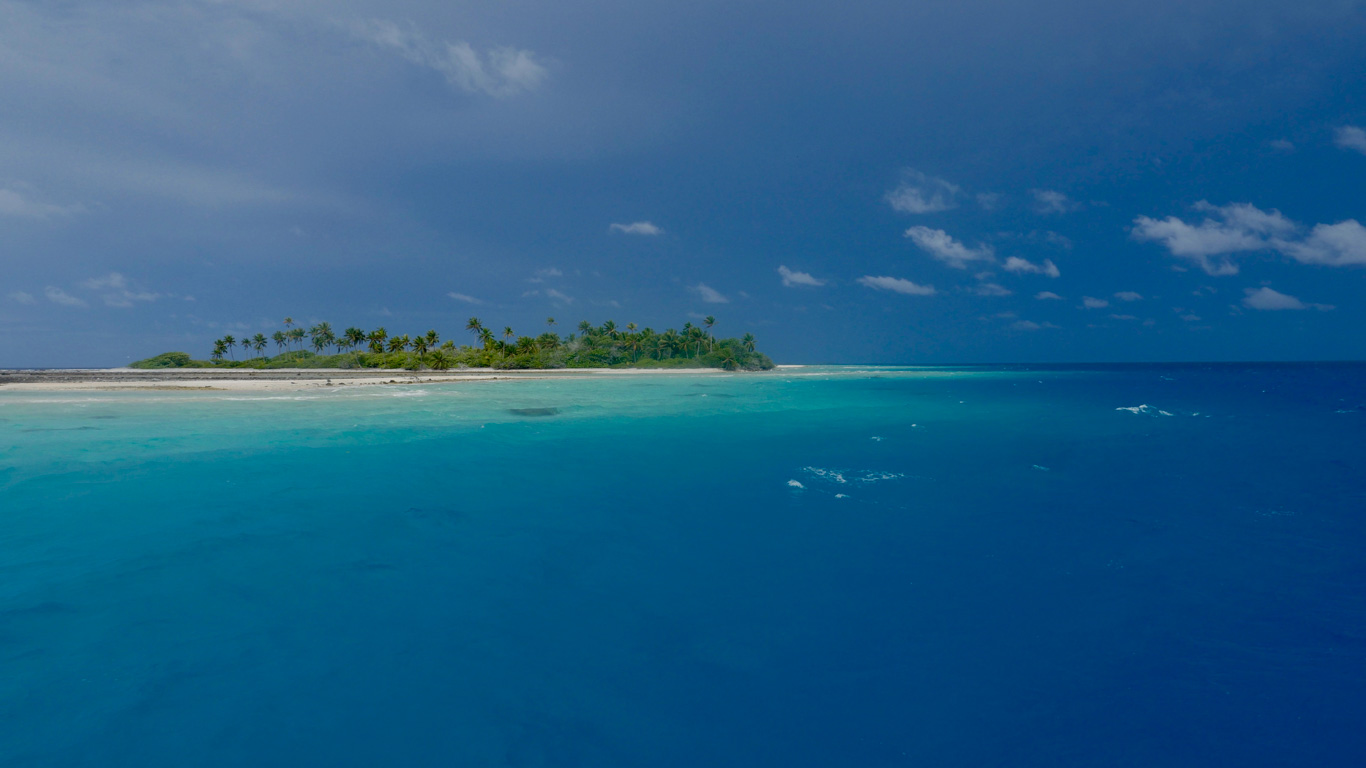
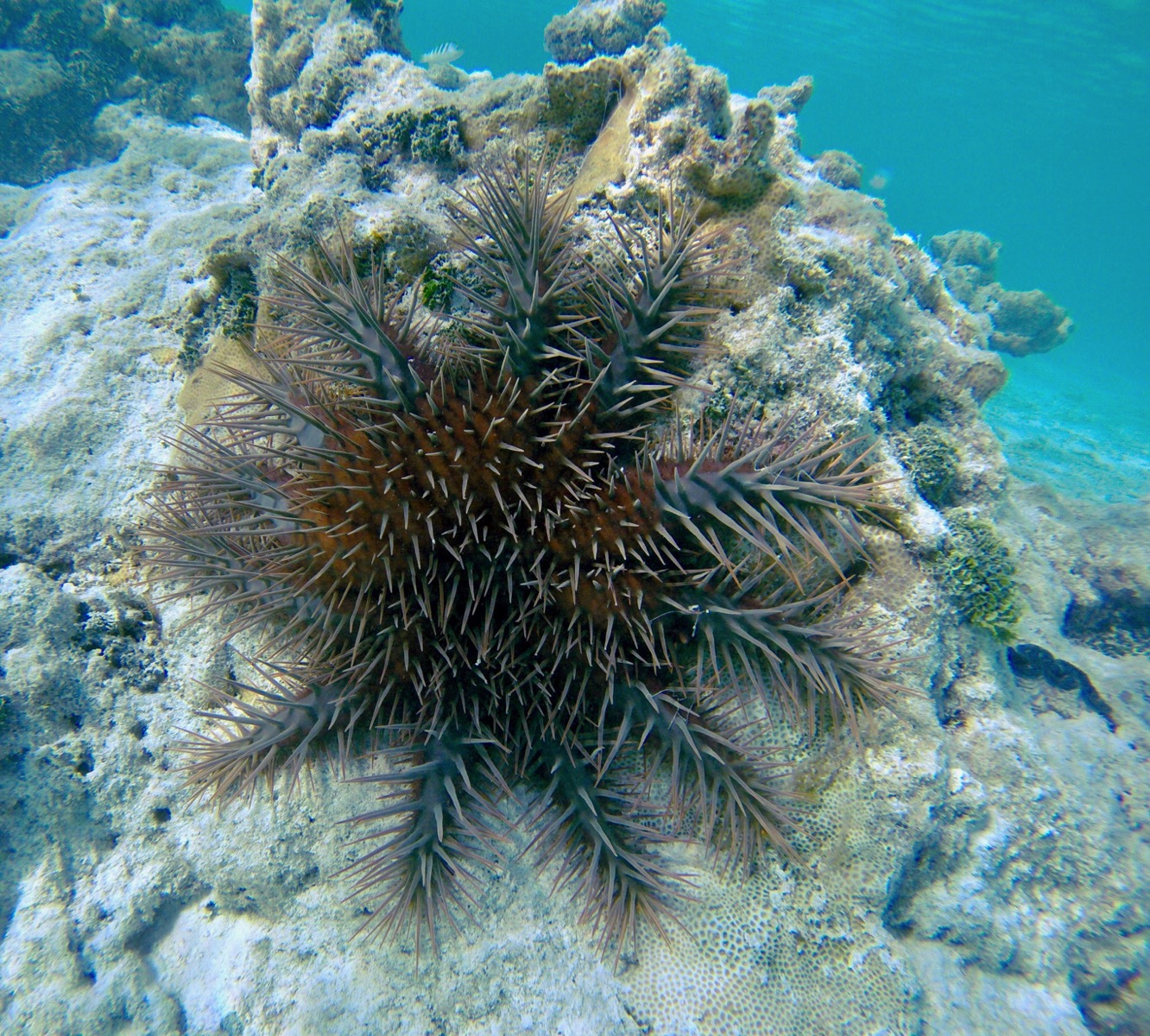
Found this Acanthaster (venomous Crown of Thorns Starfish) while snorkeling in 10′ of water off our boat.
They voraciously eat coral and are considered a scourge

These two were in less than 1′ of water and as I approached, one octopus reached out to ‘hold’ the other

I feel the same way when I get my hands on lettuce – don’t worry buddy, I’m just admiring you!

This small white tern lays its eggs on bare thin branches in a fork or depression without a nest.
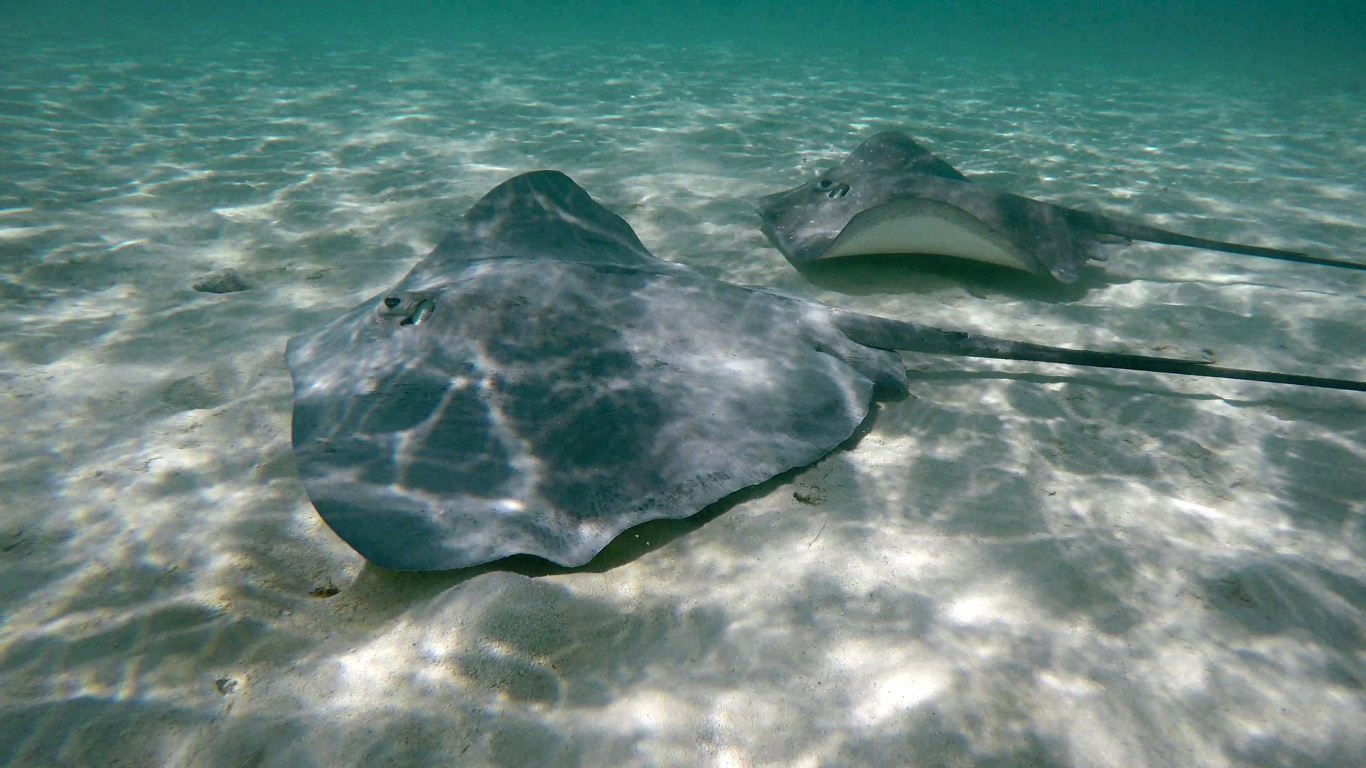
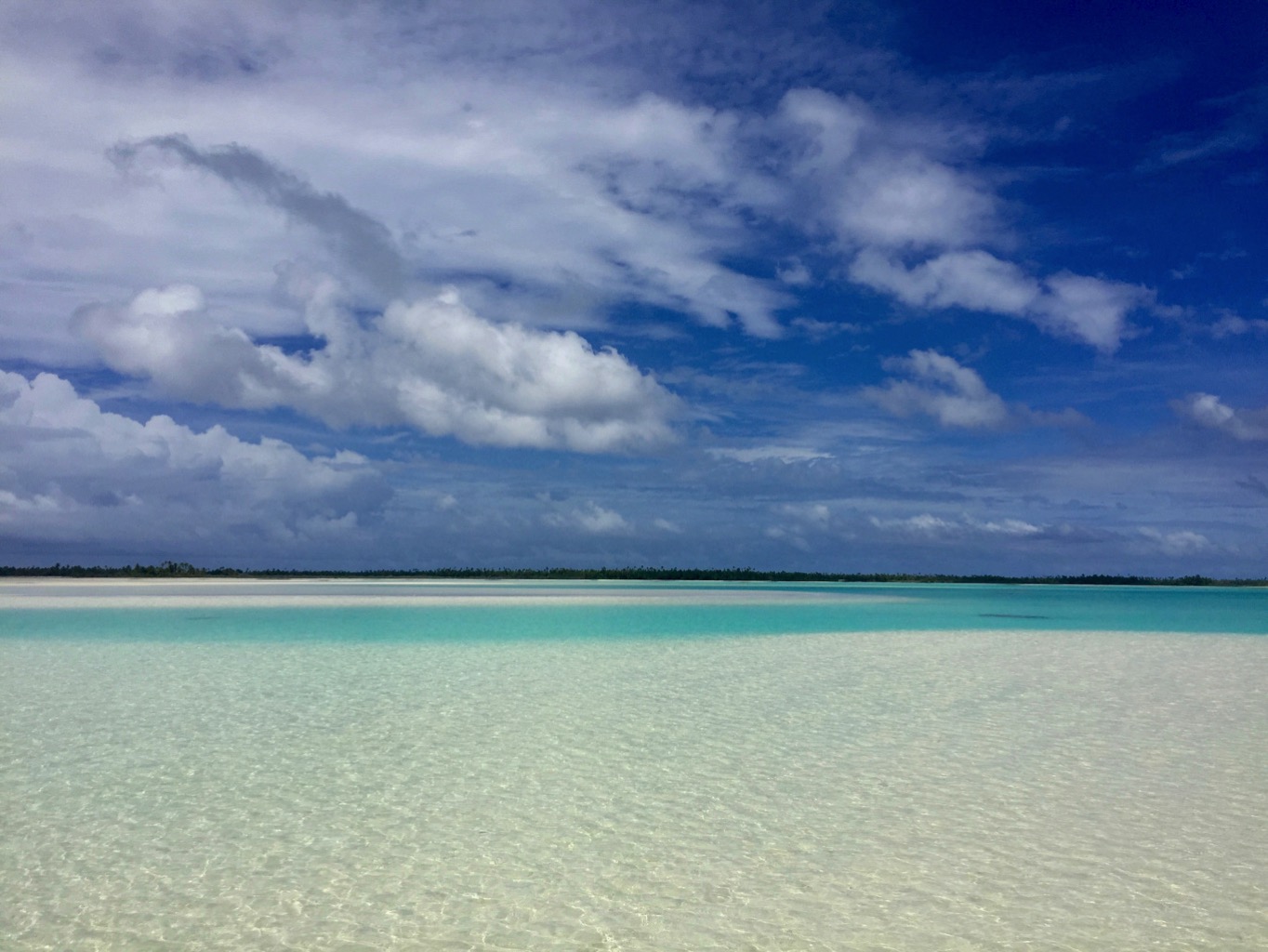
A grandmother, mother and daughter
Winter break from school, they spend a month on the Island
away from home in Fakarava
clearing the coconut groves
a hammock by the beach
they don’t have a lot
but they have a tropical island
~MS

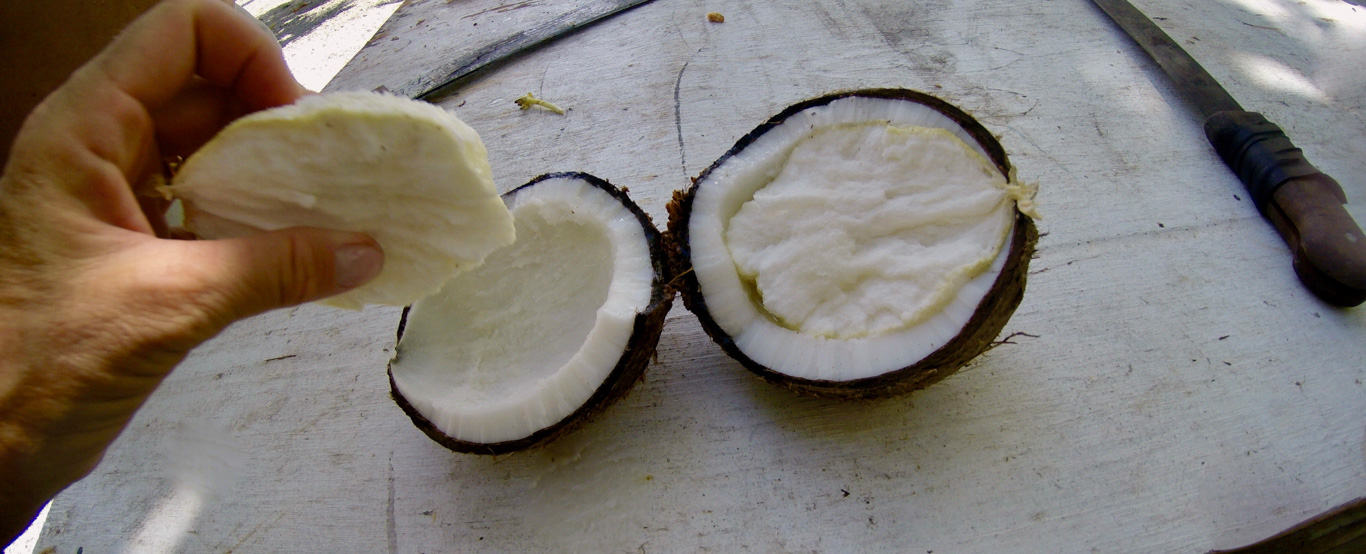
Heart of the coconut from recently sprouted coconuts.
This sponge replaces the milk space and is sweet and tasty-ish
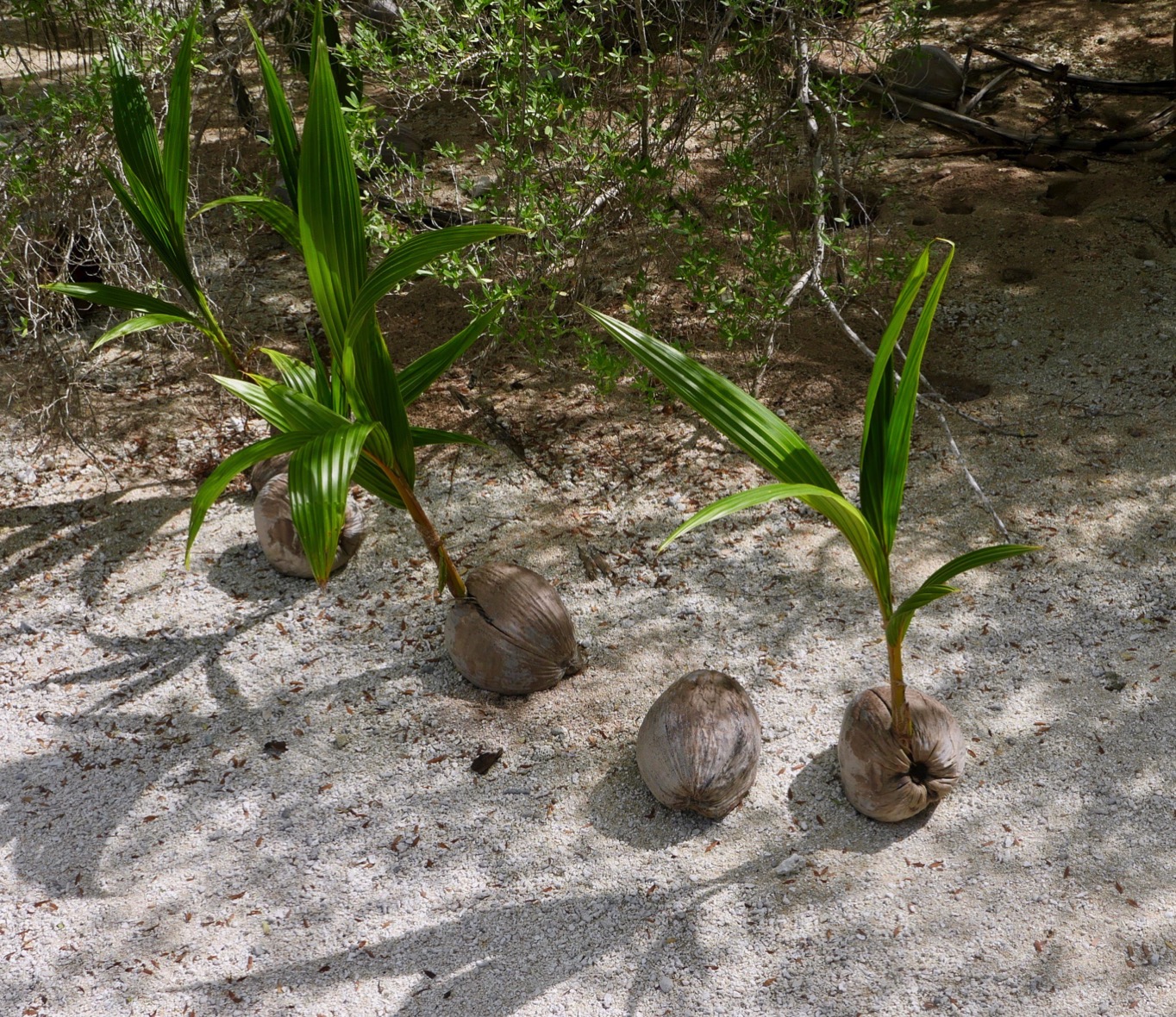
Prolific Palms will sprout wherever they fall
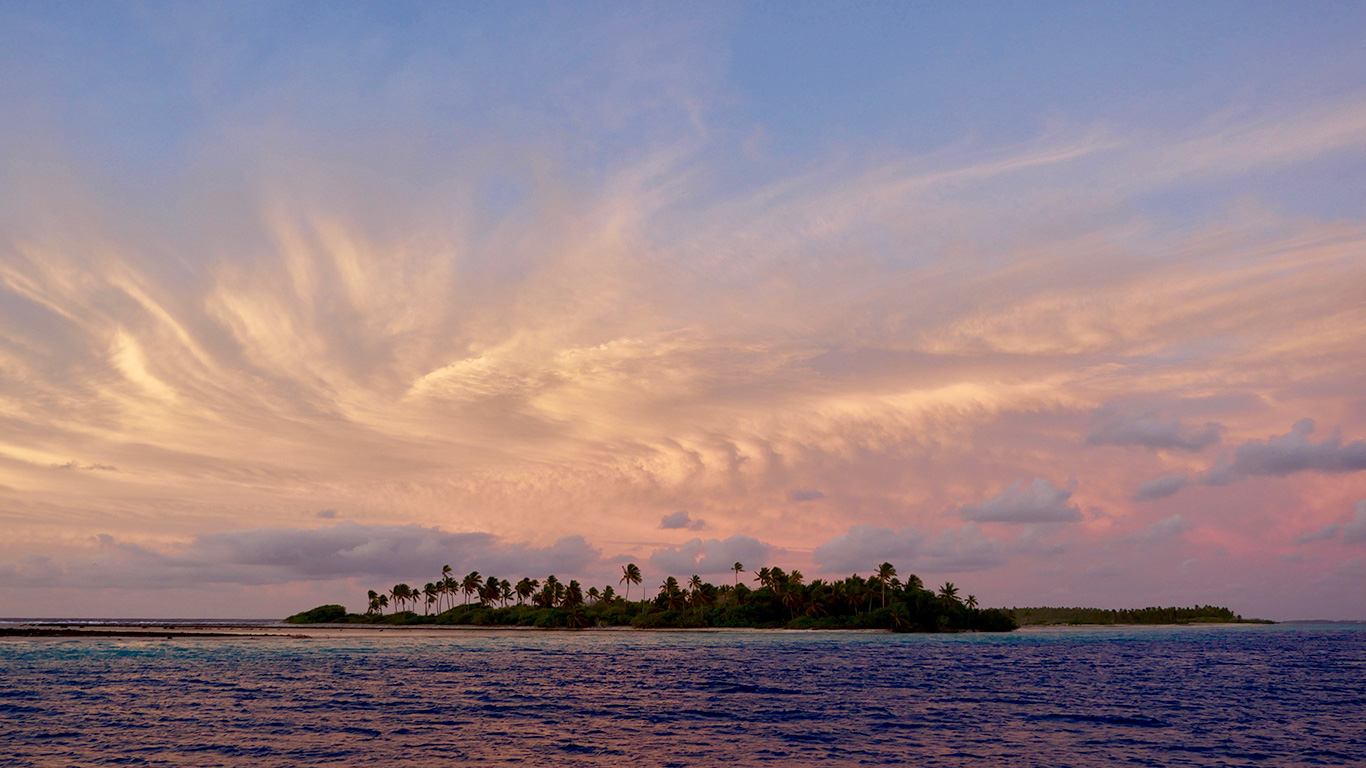
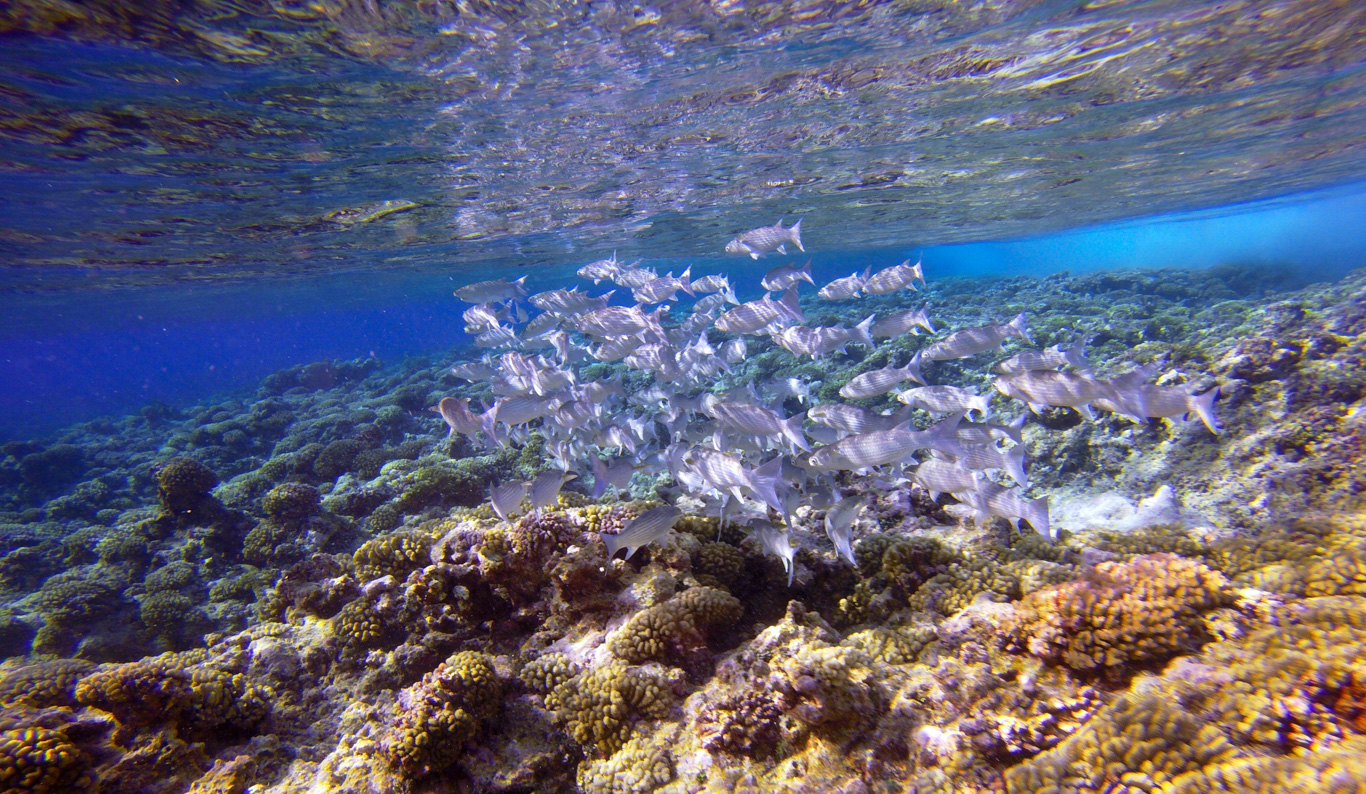
In the internet we trust
we believe in our digital sources,
sailors climb in their dinghies with their hard drives
swapping terabytes
open source navigation, the pass current “Guestimator”
it all sounds good, so technologically clever it simply has to work
we’re going where sailors used to dread
watched over by the faint, triangulated signals of satellites
google earth stitched over the old charts
some drawn diligently a hundred years ago by men who were dedicated, but human.
Rand and Ellen of the Catamaran Golden Glow
who bequeathed us so much of this digital treasure one hectic evening in Nuku Hiva
told a story about a family sailing in Polynesia
the daughter at watch, at night,
they hit an uncharted reef going full speed
dismasted, the father ultimately lost his leg
it’s hard not to be haunted by stories like that
on watch at night, sailing between Atolls
we remember the northern Sea of Cortez
only a few hundred miles from Los Angeles, real civilization
charted islands that did not exist or were miles off
once we appeared to anchor in the middle of the sea
An email via satellite from our friends on Starlet
they’ve heard that there is no internet in all of French Polynesia
a cable cut to Hawaii
True it wasn’t working in Kauehi
and I couldn’t post my perfect bonefish picture
so I guess there are still real world connections to the buzzing web
some lonely cable, thousands of fathoms below in the darkness
just couldn’t hold it together anymore
no escaping the real, physical world, after all
~MS
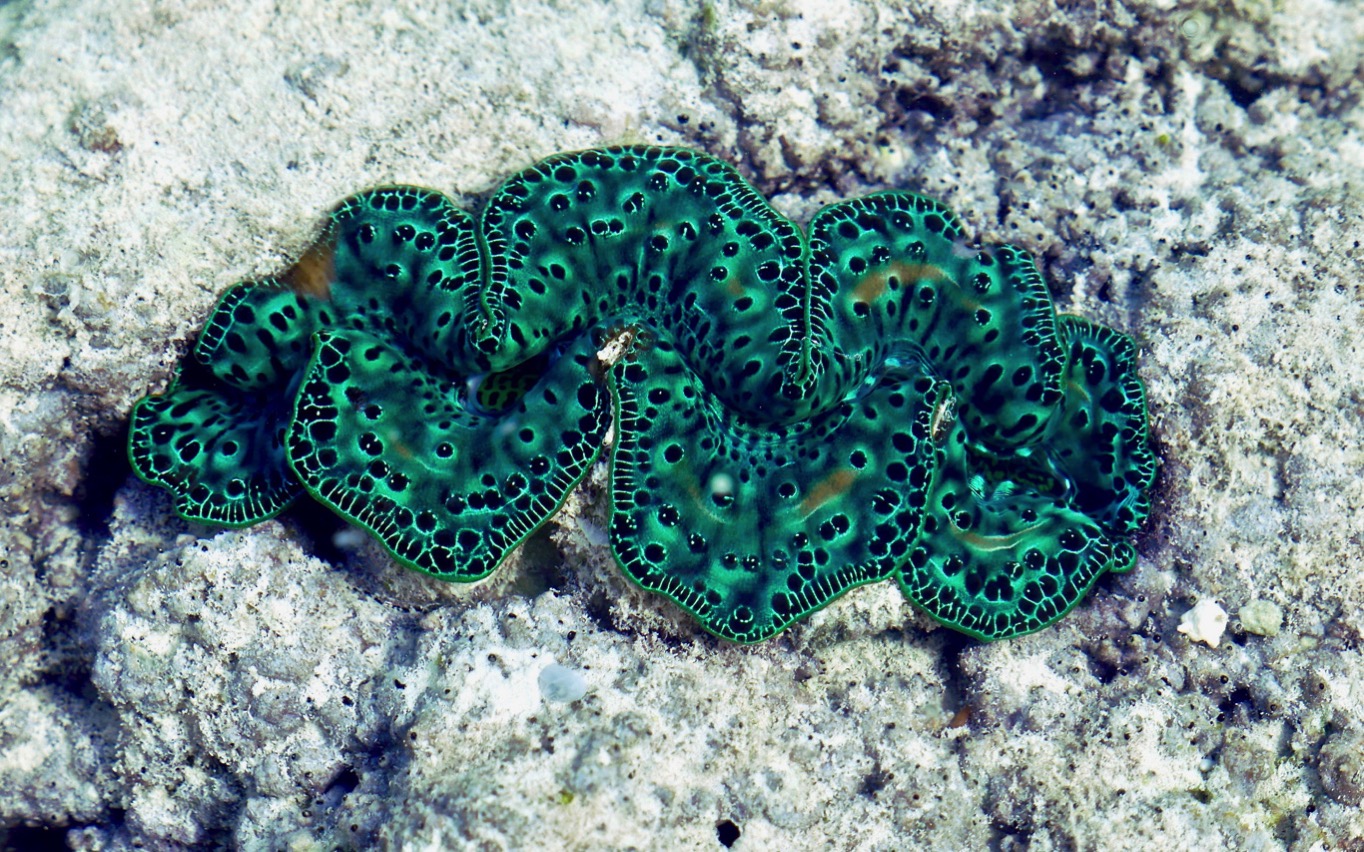
The ‘Tridacna Maxima’ shows up in every imaginable color (This mosaicist is wild about them!)

These abandoned homes get occupied during the copra harvest (coconut for export)

Whitemouthed Moray Eel (feeding on crabs)
We threw off the dock lines and found an anchorage not far –
where you can look across the reef of Raiatea to Bora Bora at the sunset
we searched the starry sky for the southern cross and our neighboring galaxies,
the Magellanic clouds
A quiet sail in the lagoon to the “Coral Garden” off Tahaa
a bit of shallow coral in a gap between Motu’s brimming with fish
no sharks
the current flows gently in toward the lagoon
the Mom’s donned their wetsuits, fins and masks
a few gear adjustments were made
they fell in love with drifting through that magical world
we tried to stick together,
but Camille drifted off at one point, mesmerized by the show
by the time Diana caught up with her she was half-way down the channel
the days were easy
quiet mornings chatting in the cockpit
routinely late starts
we tried to stick to the plan of no plan
Baie Hurepiti, a tour of Tahaa with Noah,
his French parents came here in a sailboat and stayed
put in a mooring and made a business
a traditional compound of Tahitian style open houses with thatched roofs
and a garden
He studied space engineering in France,
but tired of the rat race and returned to share his island with visitors
Diana wants to marry him off to one of the girls
We learned about purple flowers that taste like mushrooms
and ferns that leave a pretty white print on your skin
We sailed back around the corner for ice cream at Pte Tomoaro
then to Raiatea for drive around the island
a trip to town for some shopping,
and a dinghy up the river at the head of Baie Faaroa
Finally a sail across the open Pacific to Bora Bora
started with a nice wind that slowly dropped
but the seas were calm,
the white puffy clouds over the famous island
turquoise green from the reflection off the lagoon
a group of pilot whales greeted us along the southern reef
then a Humpback as we made turn around the point
across the shallow lagoon our depth finder kept creeping up
10 feet, 8 feet, 7 feet, 6.3 feet (we draw 6.5)
but we found our way to the gorgeous anchoroage without hitting the sand
(note to work on our bow to stern communication skills)
At least we didn’t get stuck
more snorkeling by the Motu
the Moms’ favorite activity
We dinghied in the pouring rain, thankful for wetsuits
Camille slept out under the stars
We all sang and played guitar
Mom and her Polynesian ukulele
On next to the last day
we flew the drone for an unforgettable sunset
in perfect harmony with the feeling of this visit
~MS
Our Moms have now been to visit three times; in Baja, Costa Rica and French Polynesia. It would be hard to say which has been the best, but when I chance upon the pics, I’m reminded of the pure joy it’s been each time, to have them here, sharing in our crazy life. We are building a ‘library’ of memories. These two are agreeable to do just about anything, easy going and relaxed and chock full of love – we are wildly fortunate. Can’t wait till the next sojourn.~DS
In August, we had the supreme pleasure of seeing how many loved ones we could fit aboard Allora without sinking her or going mad. Turns out it’s probably 7!
Actually, other than playing bumper bodies routinely and Scott slamming his head too many times, we managed well, sailed Allora, played hard and laughed a lot. It wouldn’t be called luxurious, but we had the sleeping spaces we needed and the Lawson’s were as mellow and relaxed as we could wish for. Wyatt and Maddi were here as well, both awaiting their Fall school starts. Those two can navigate Allora’s spaces and systems quite nimbly, so they stepped into their familiar ‘GREM’ role and really helped out. The coolest thing: with this group, we had a veritable band aboard! Concerts were spontaneous and the norm. In their absence, we truly miss the melodies.
Scott and Lori showered us with copious gifts, all useful and helpful, and we continue to be thankful, probably daily, as we make use of them. Sumner’s positive, can-do attitude was infectious; what a delight she is to be around – an ideal member of Team Allora. I treasured having Lori in my midst. Basically, we are already talking about when we can get these guys back. This voyaging life is extraordinary, but it is made even more so when we can share it with our ‘people.’ Come play with us!
The experience of sailing across the Pacific has been, predictably,
exactly what I expected and totally different
the days are not endless, nor really repeated
each has felt unique even though they blur together
they also go by so quickly
moments of boredom have been brief
and moments of claustrophobia which would seem normal
have not occurred
I don’t want “off” of Allora
I don’t yearn to walk on land
(other than to pee without thinking about my balance)
I don’t actually yearn to see land or even green, I don’t think
though, that may change when it happens
I think I will appreciate quiet and a sense of relative motionlessness
for a bit
this would have been incredibly hard without our crew
The things we worried about, as a family stuck together on a little boat
have been so much less than expected
tiny spats that lead to good resolutions
perhaps even especially for Diana and I
our big, big blow up on day four or whatever it was
resolved, or at least reframed, months of simmering issues
the challenges are still there as they probably always will be
but rebutting them with love and affection
has reminded us of what we have made over twenty-seven years
a formidable partnership
having Haley Maddi and Wyatt here was by far and above all
the best thing about this crossing
~MS
People have sailed into these remote places for ages
when it was a much more dangerous and difficult thing to do
no guardian angel satellites watching over with pin point accuracy
no buzz of data vibrating in the invisible electromagnetic spectrum
They came for whale oil and gold.
It’s hardest to understand how the captains found their sailors
willing to fall off the end of the earth
What were they promised?
Whalers raided the Marquesas for women
stories of rape they did not share back in New Bedford
with their pious wives hiding wooden dildos in the walls
the food the rot the stink
there must not have been many better choices
the brutal life of a common sailor
~MS
Marquesan Magic from Stevens on Vimeo.